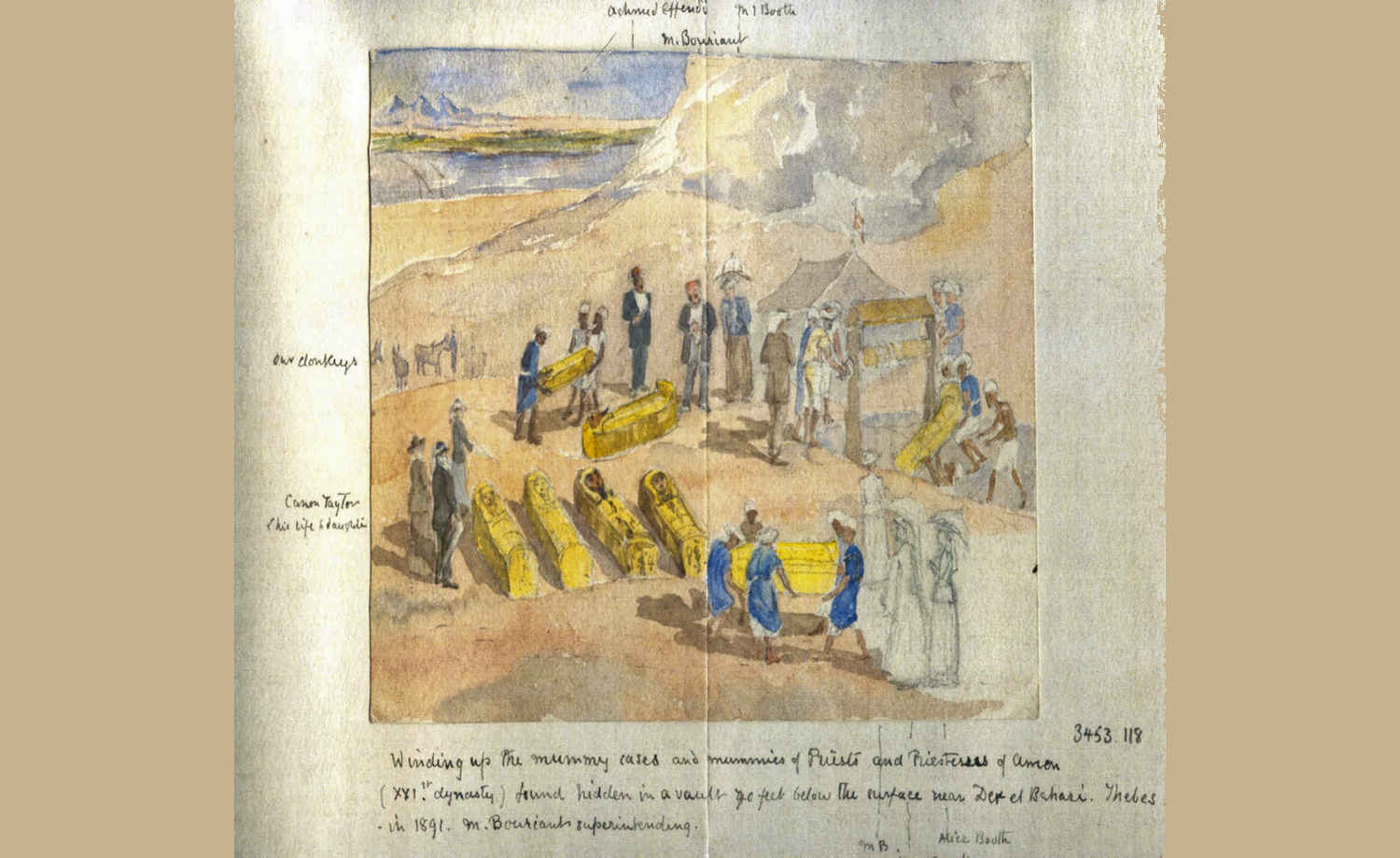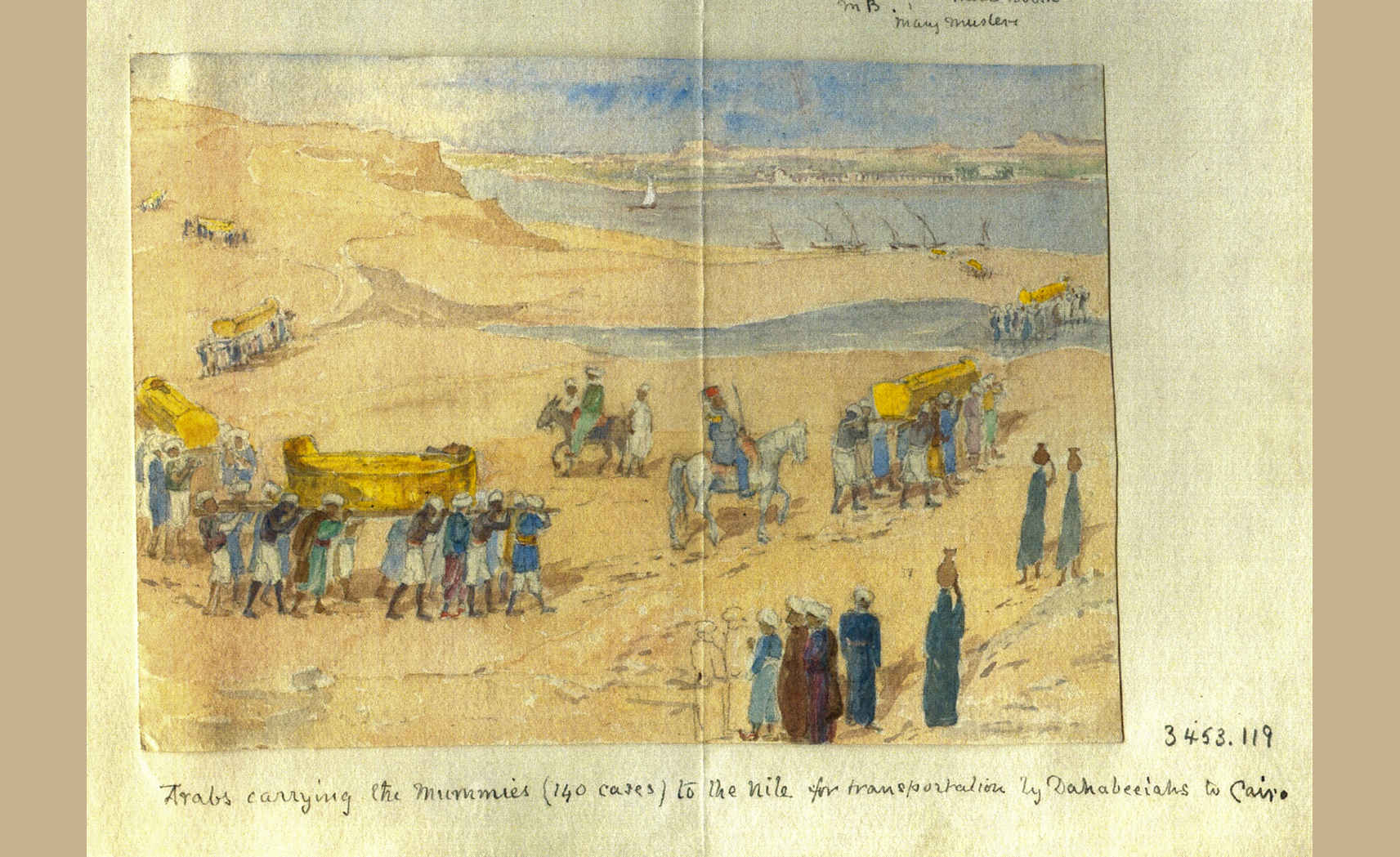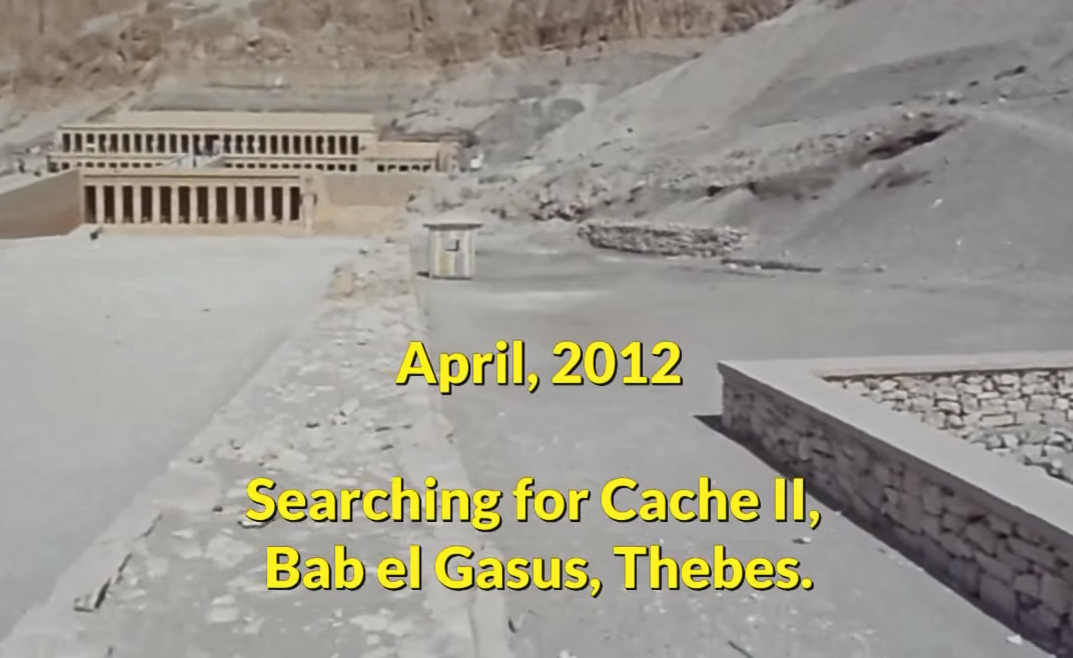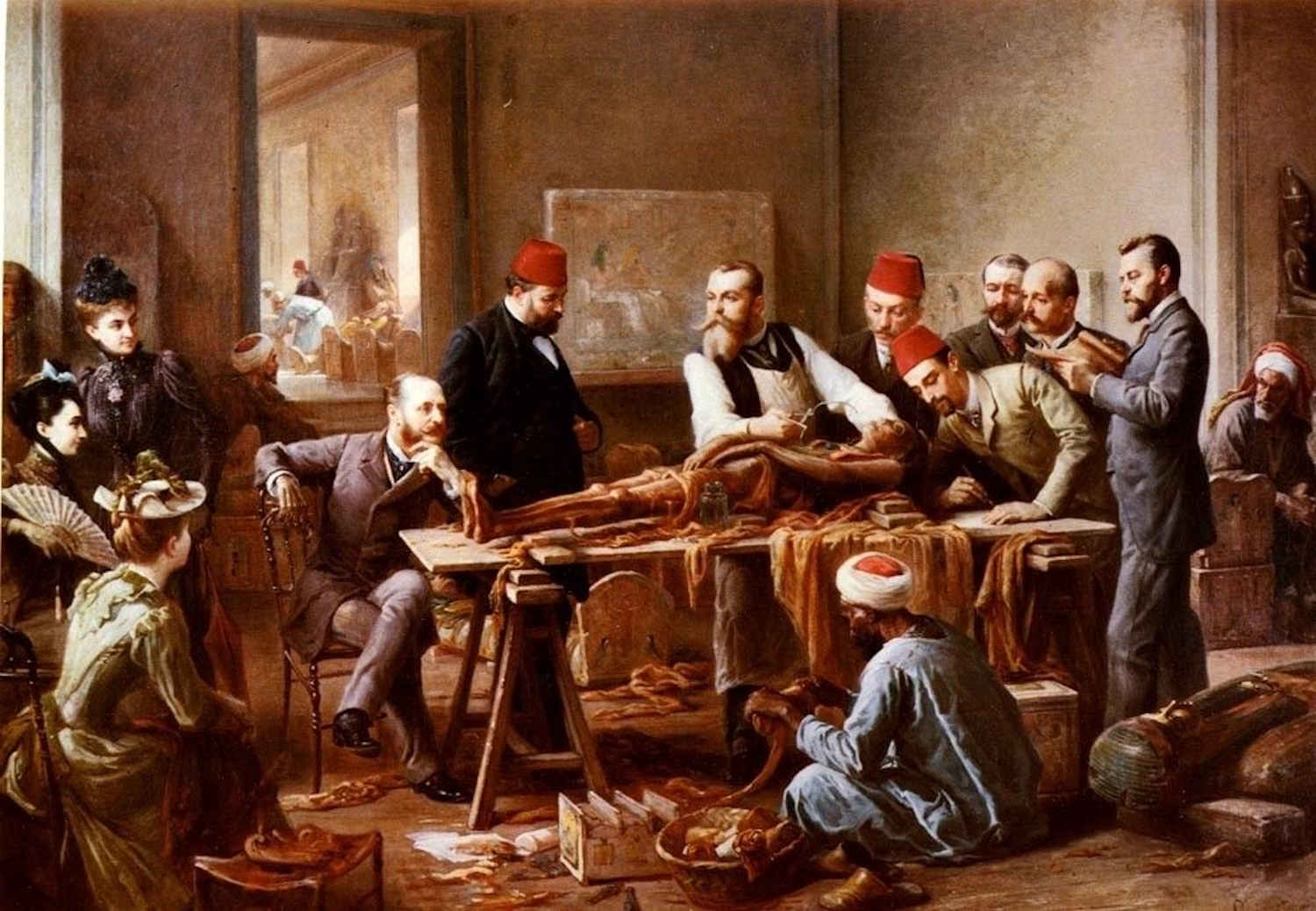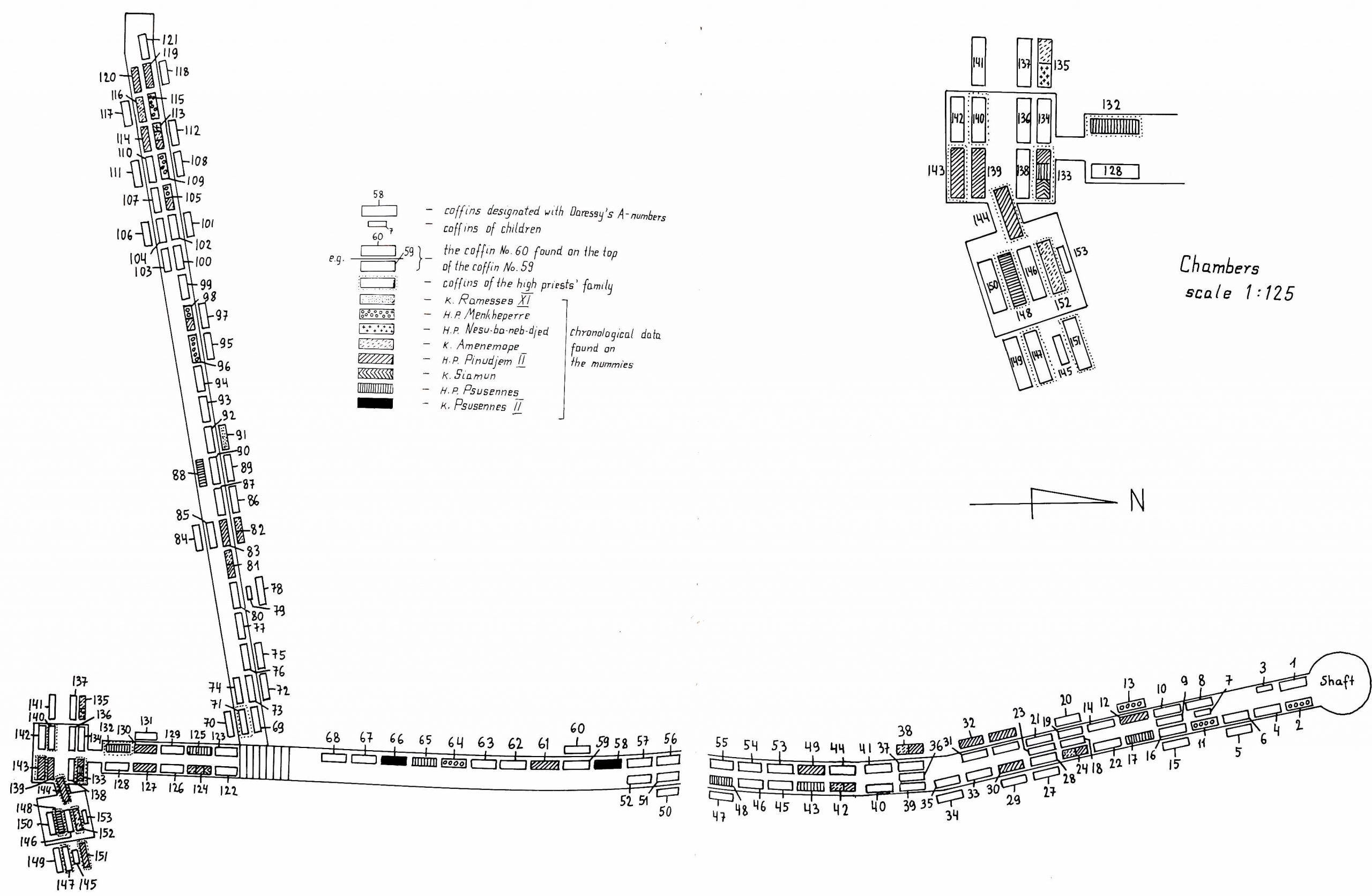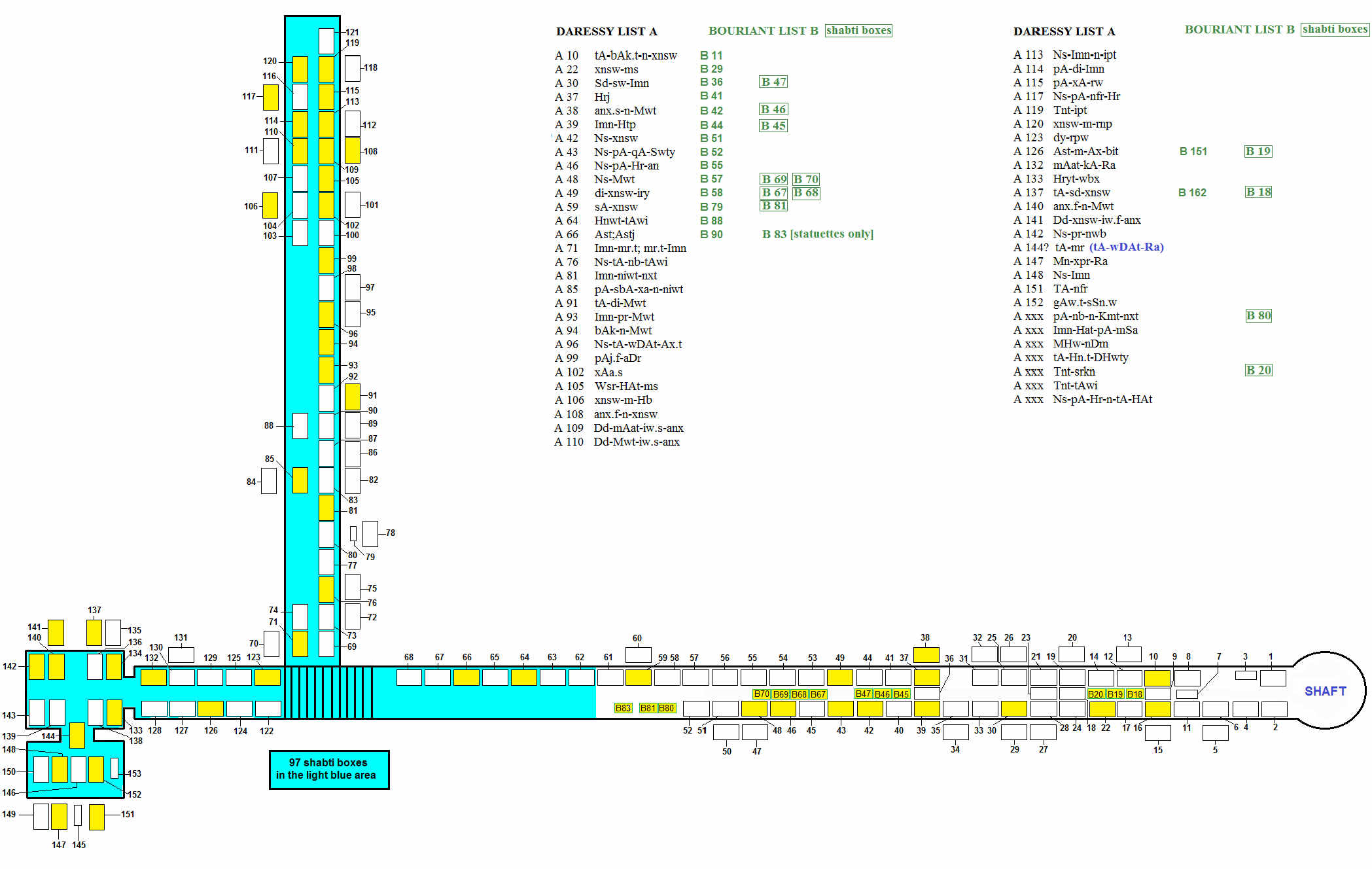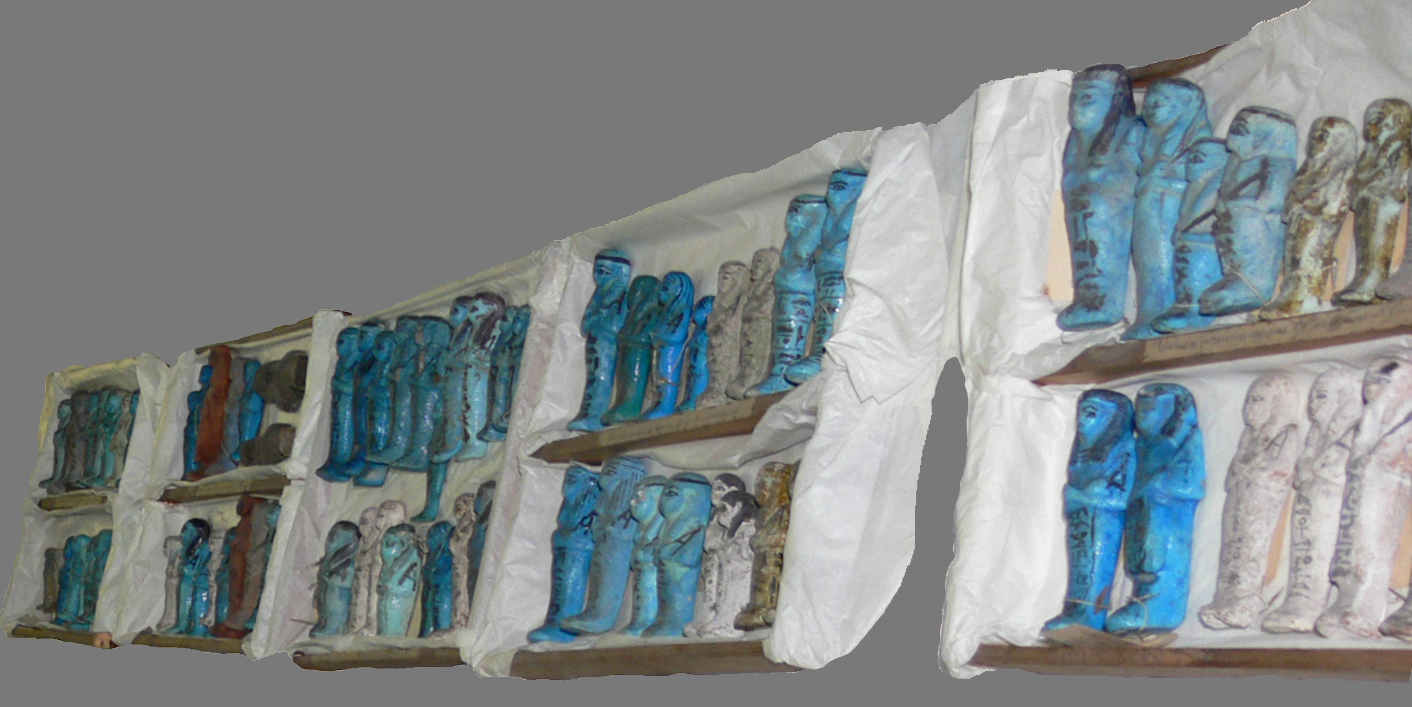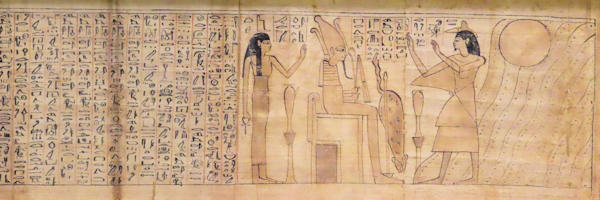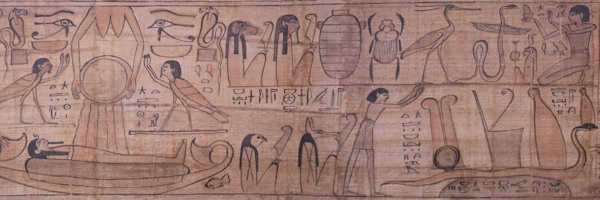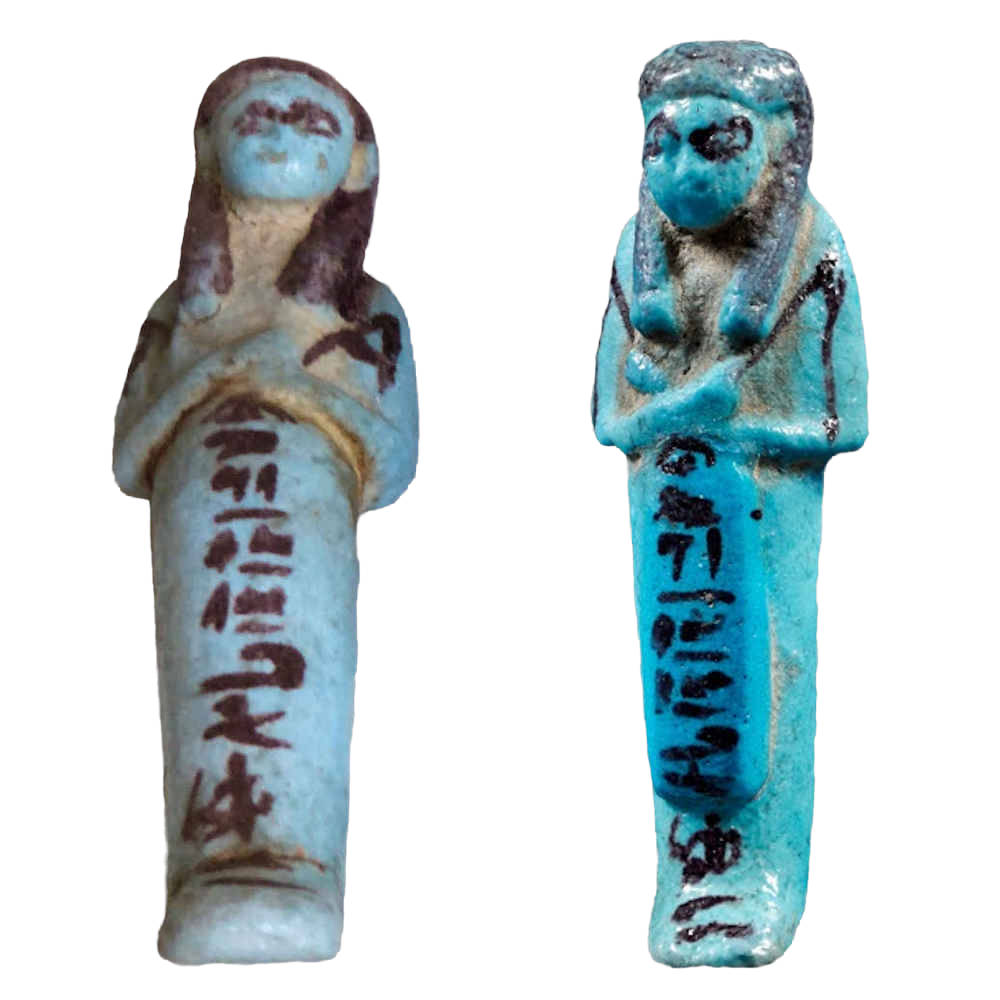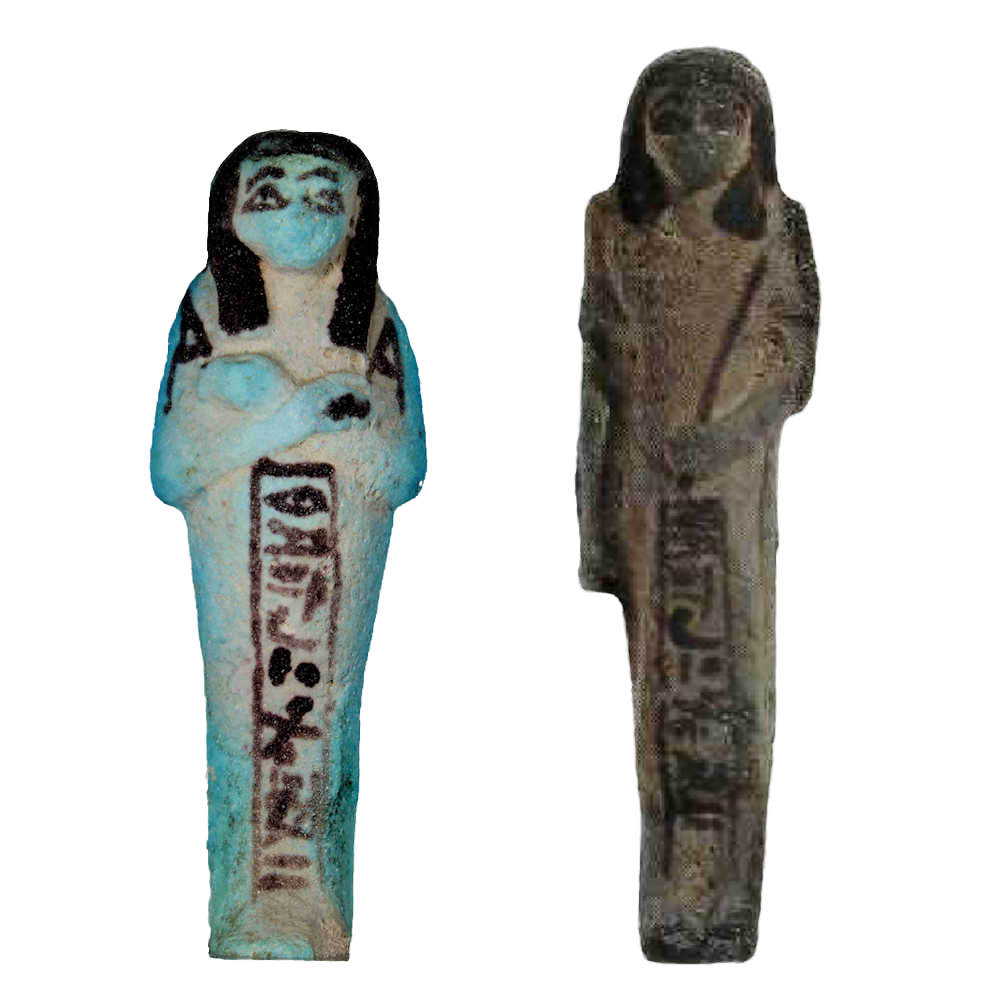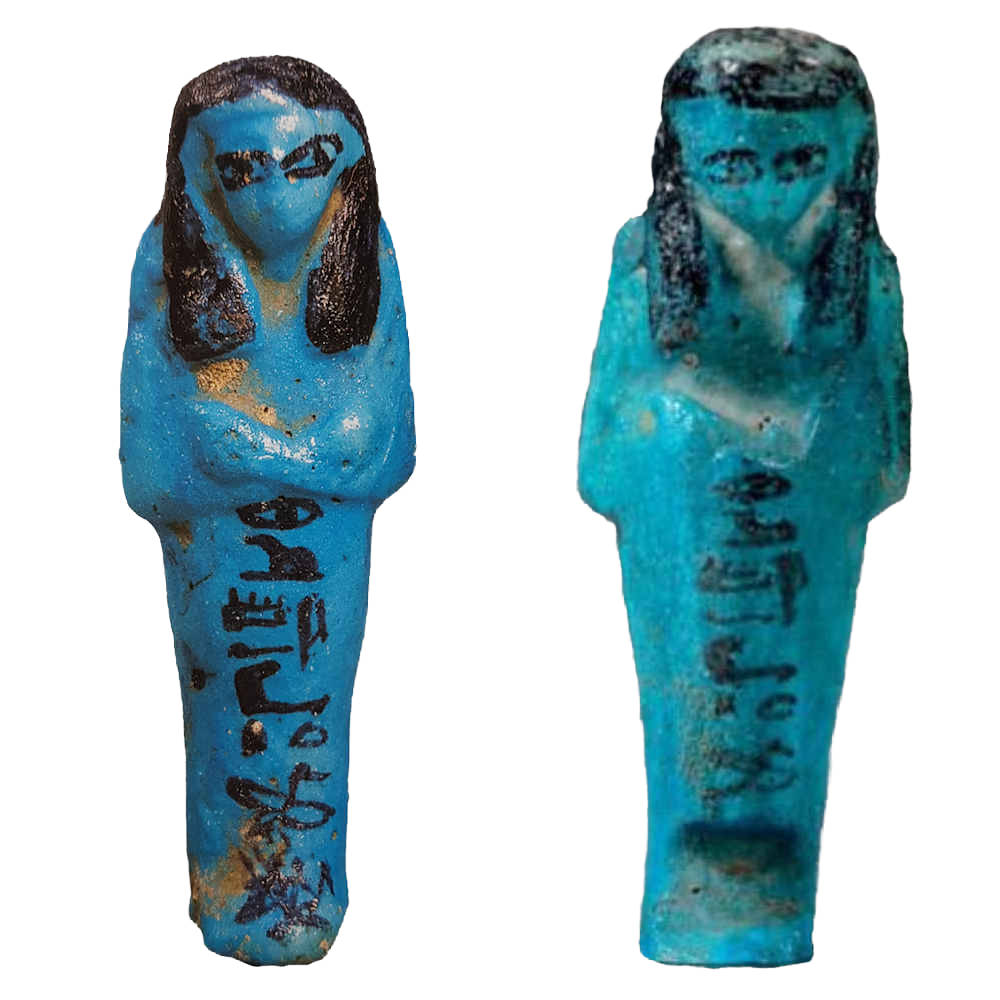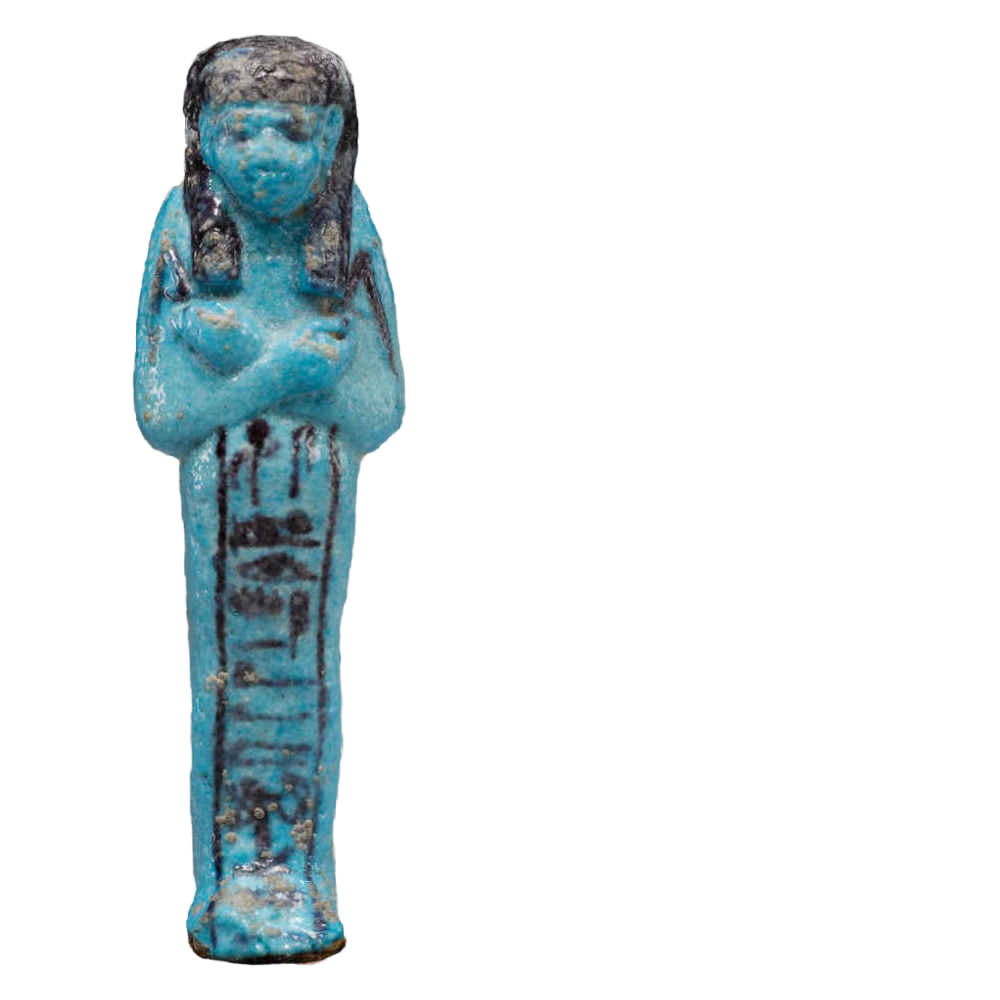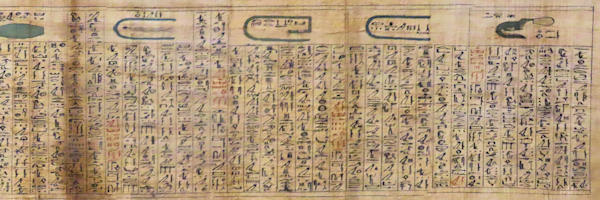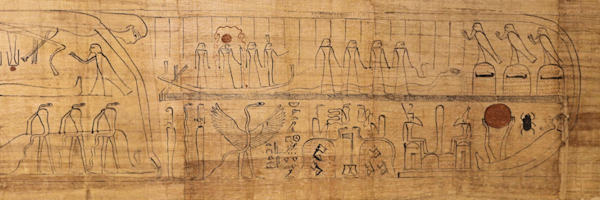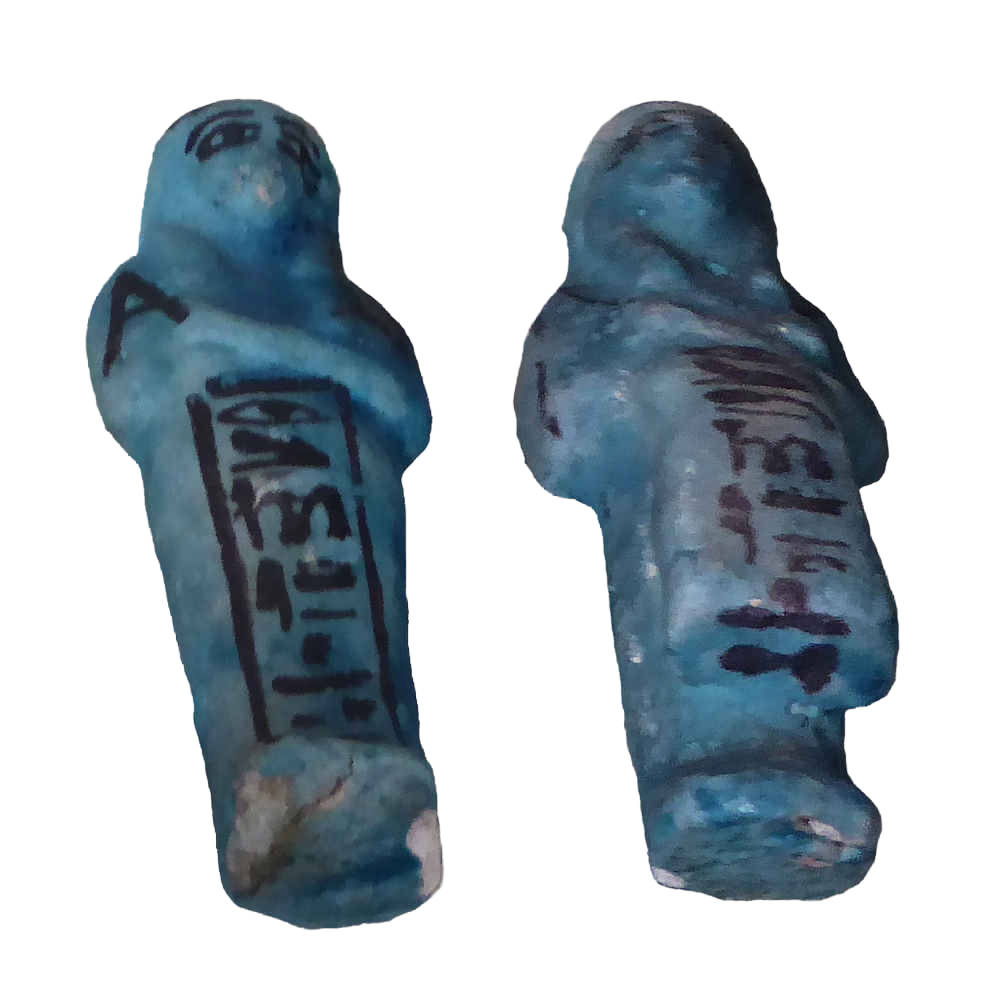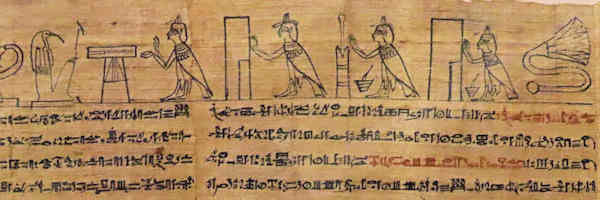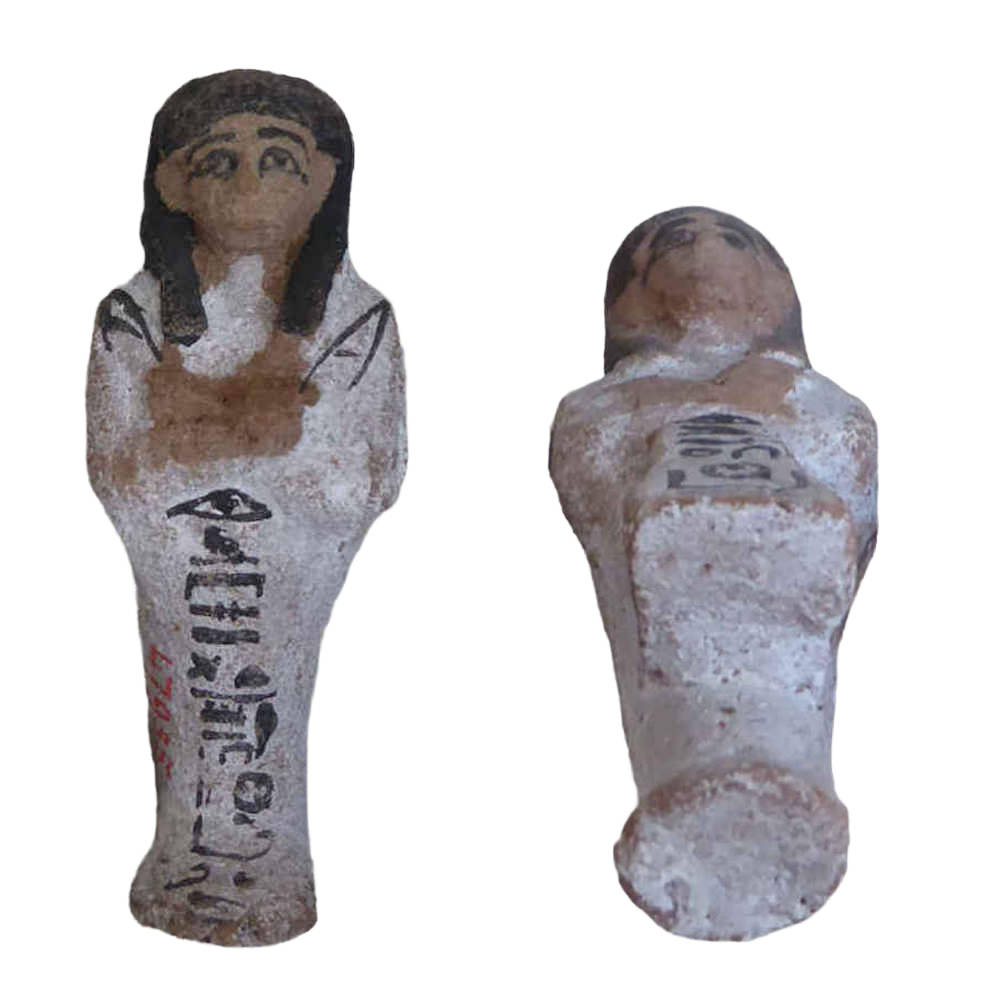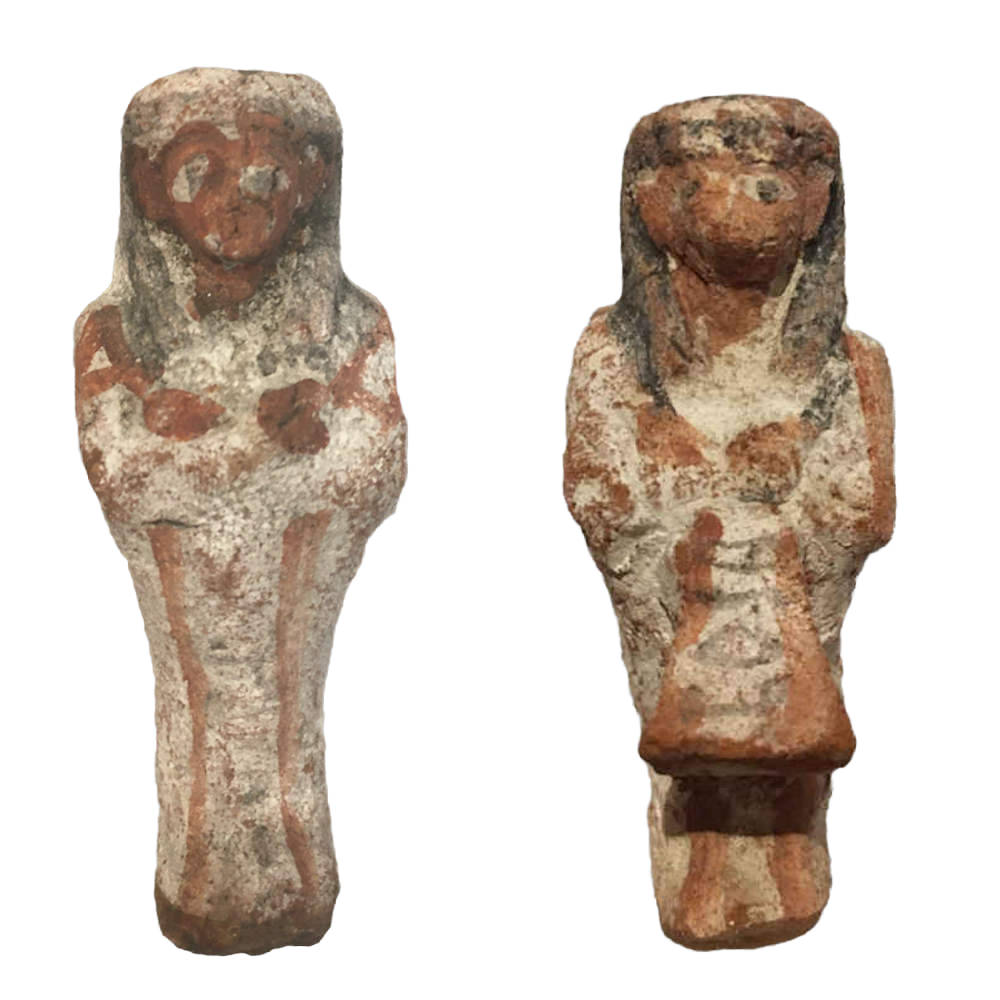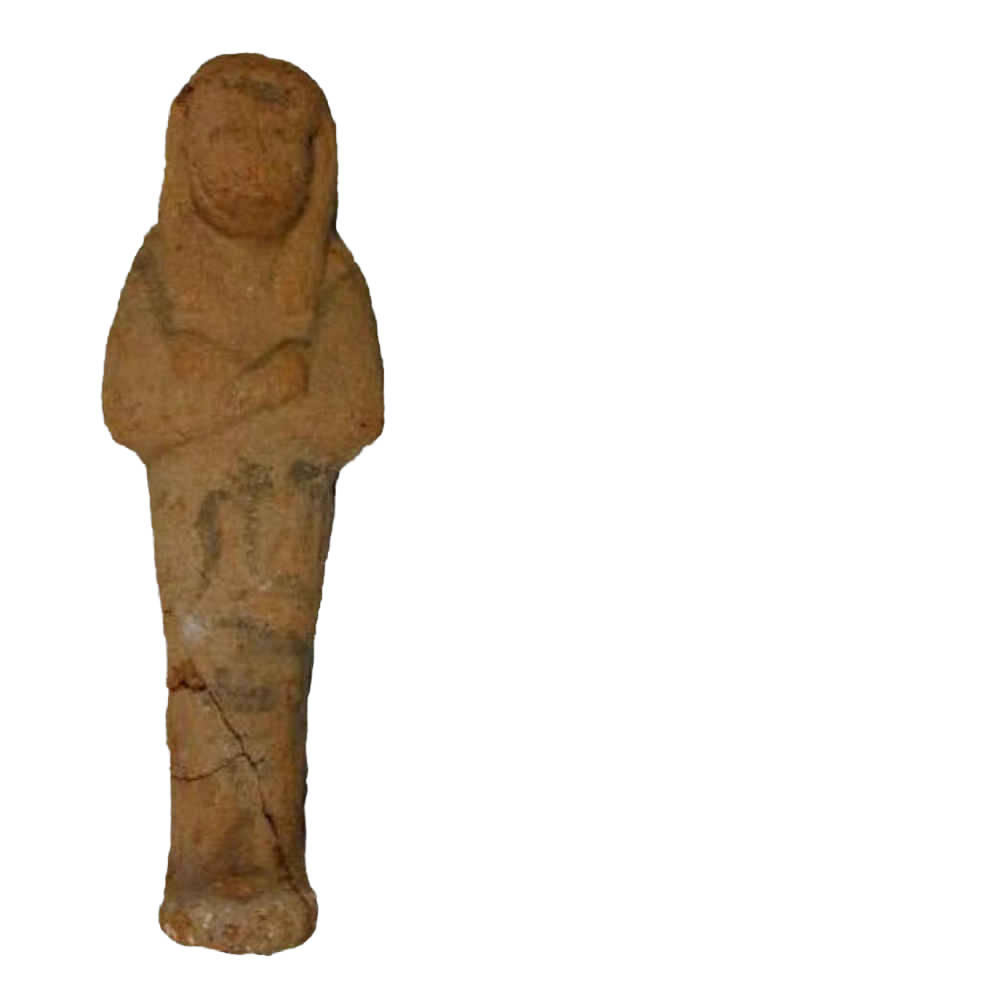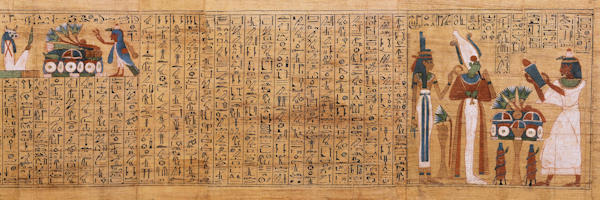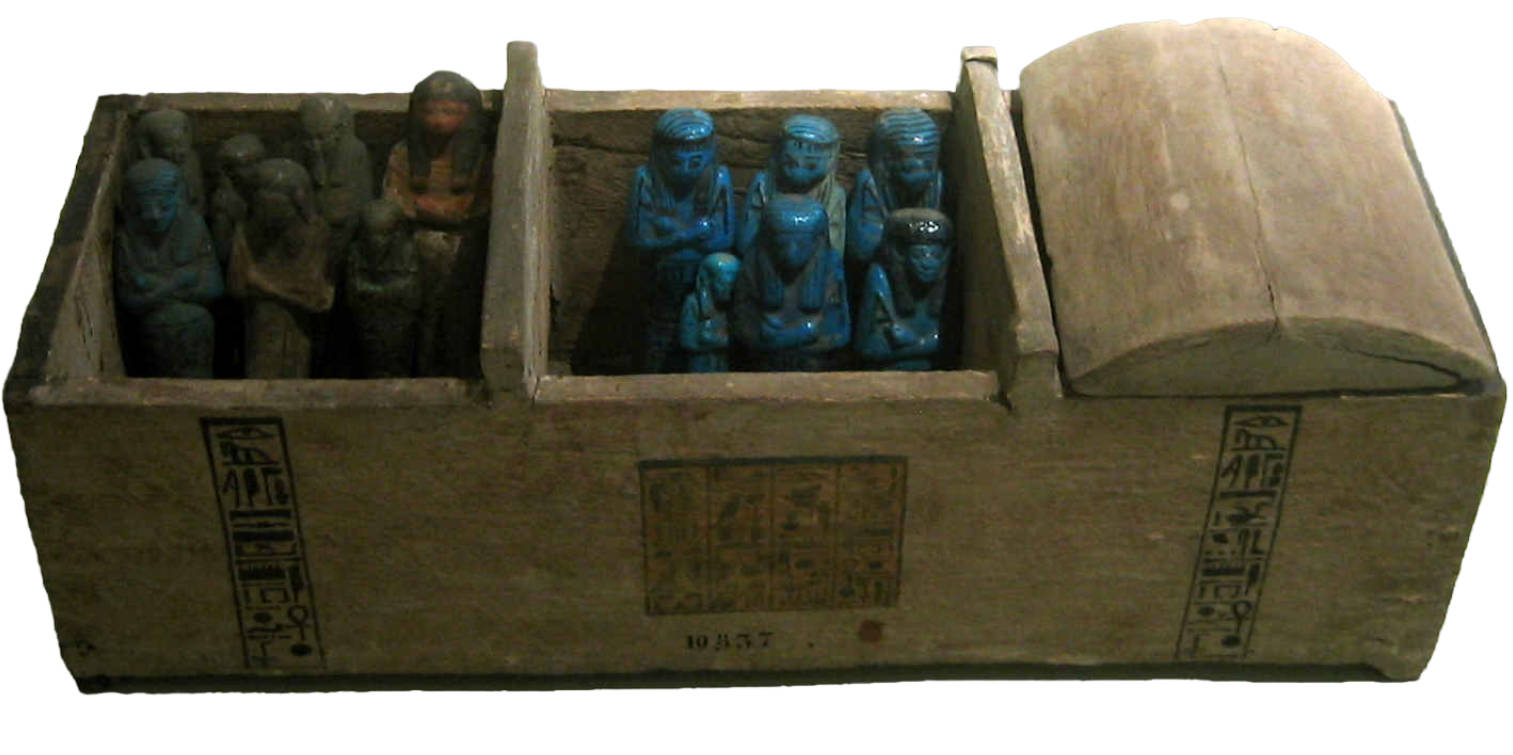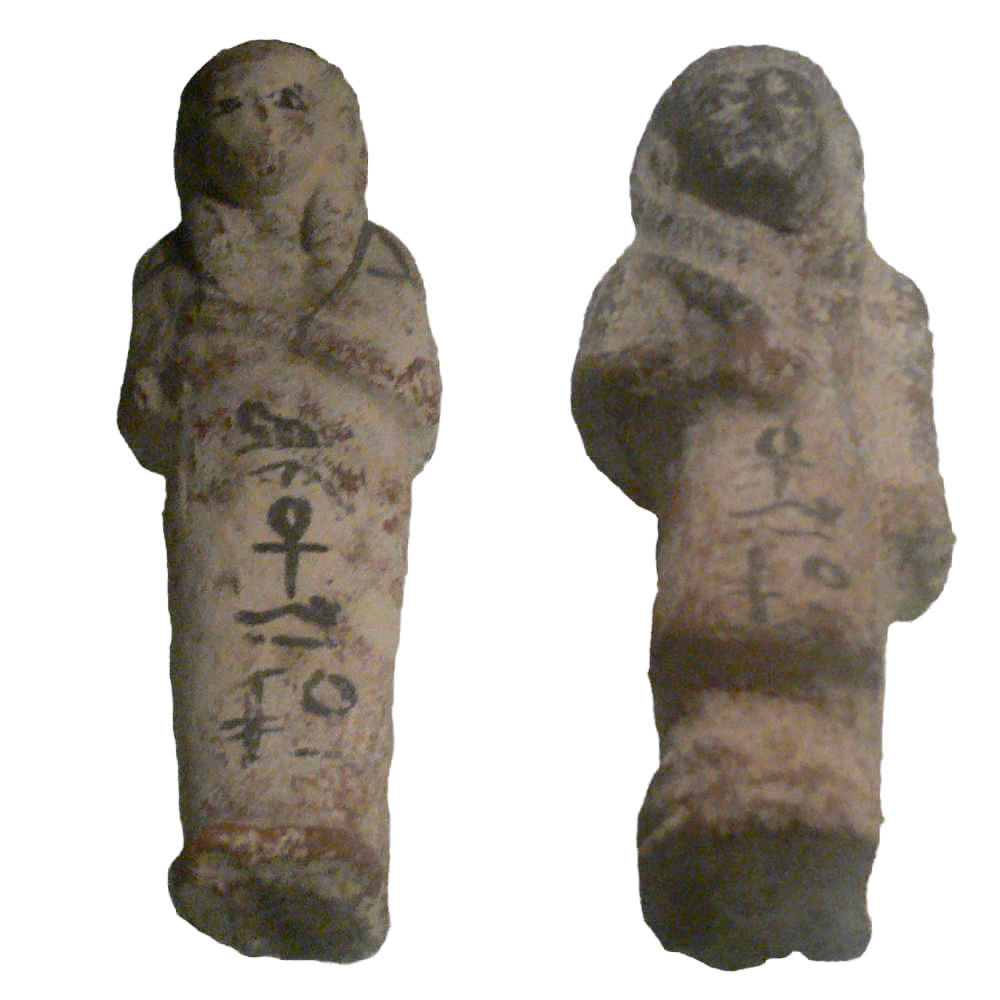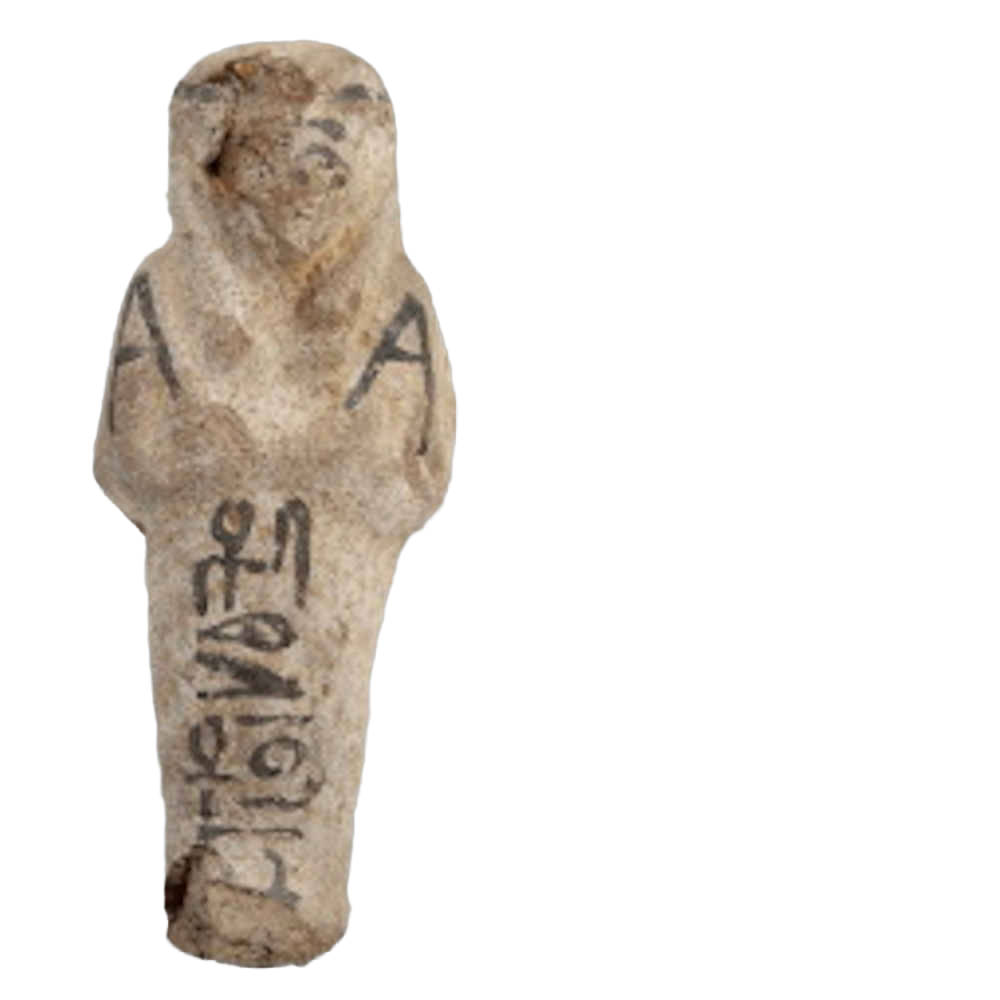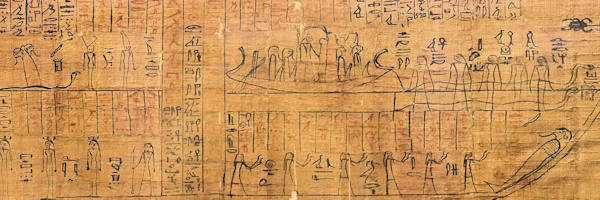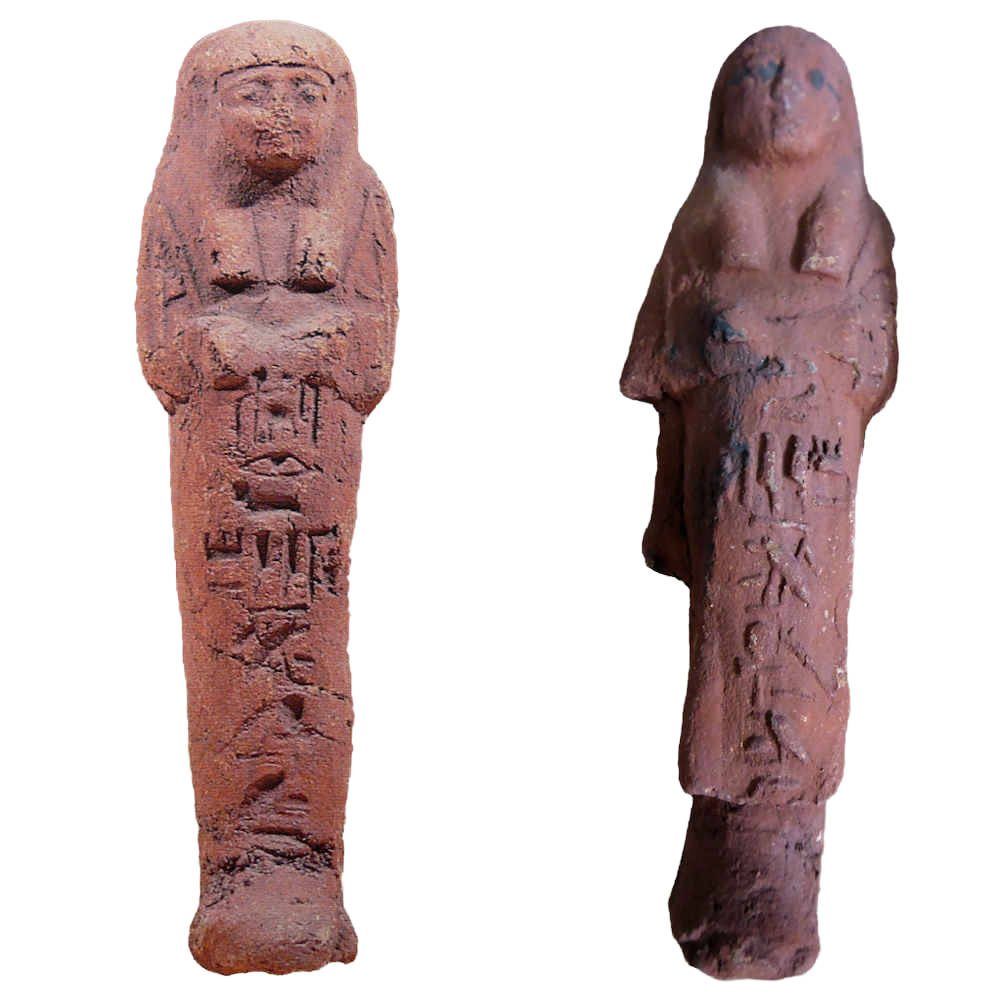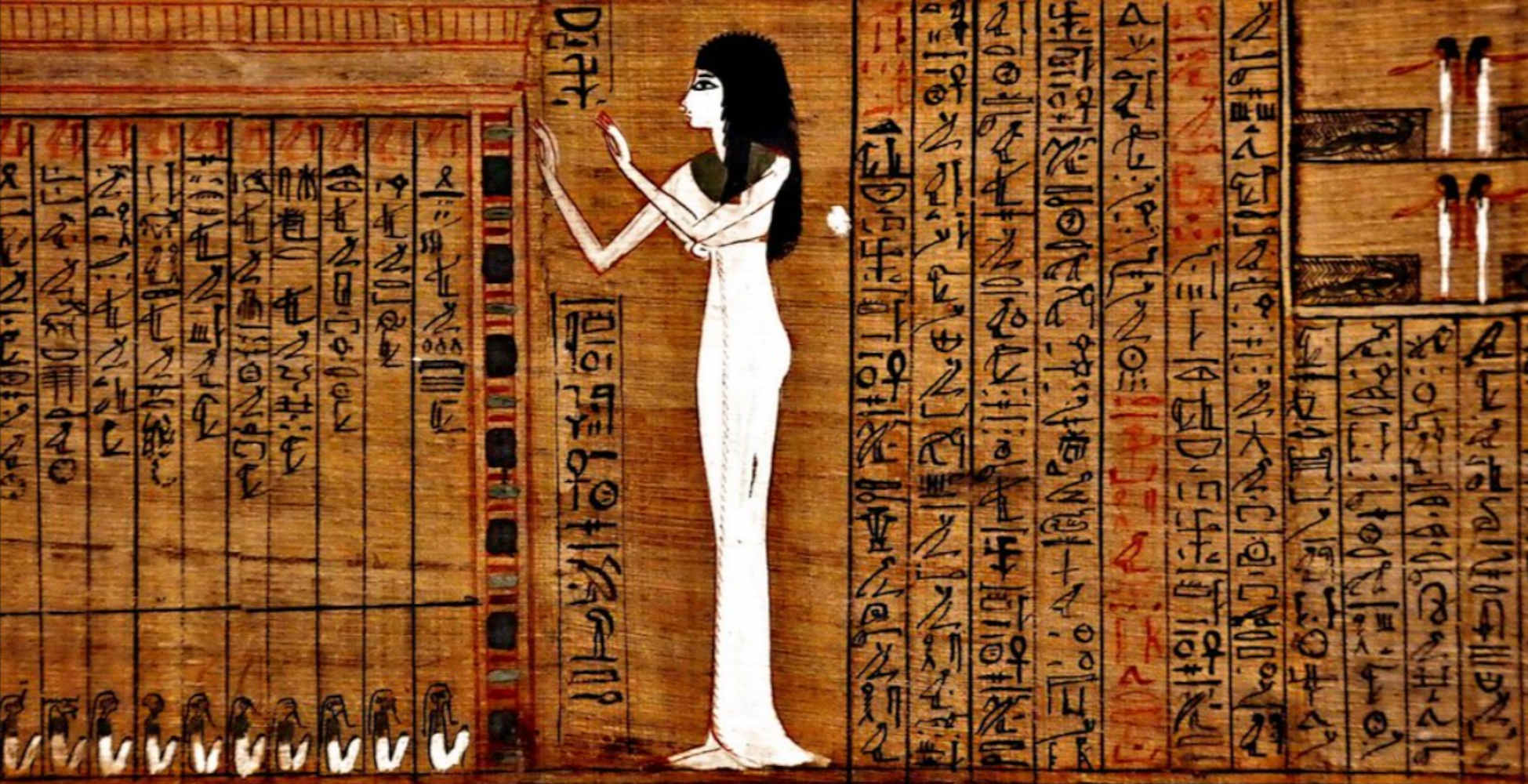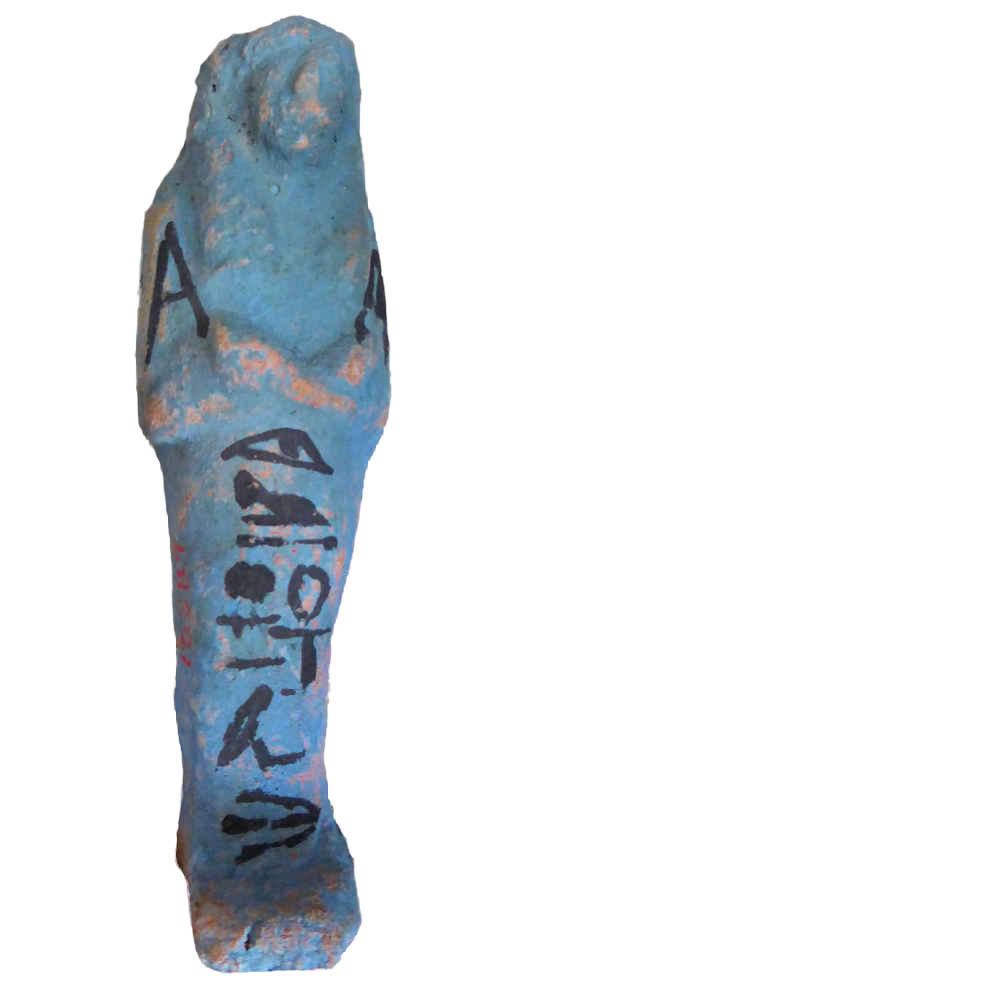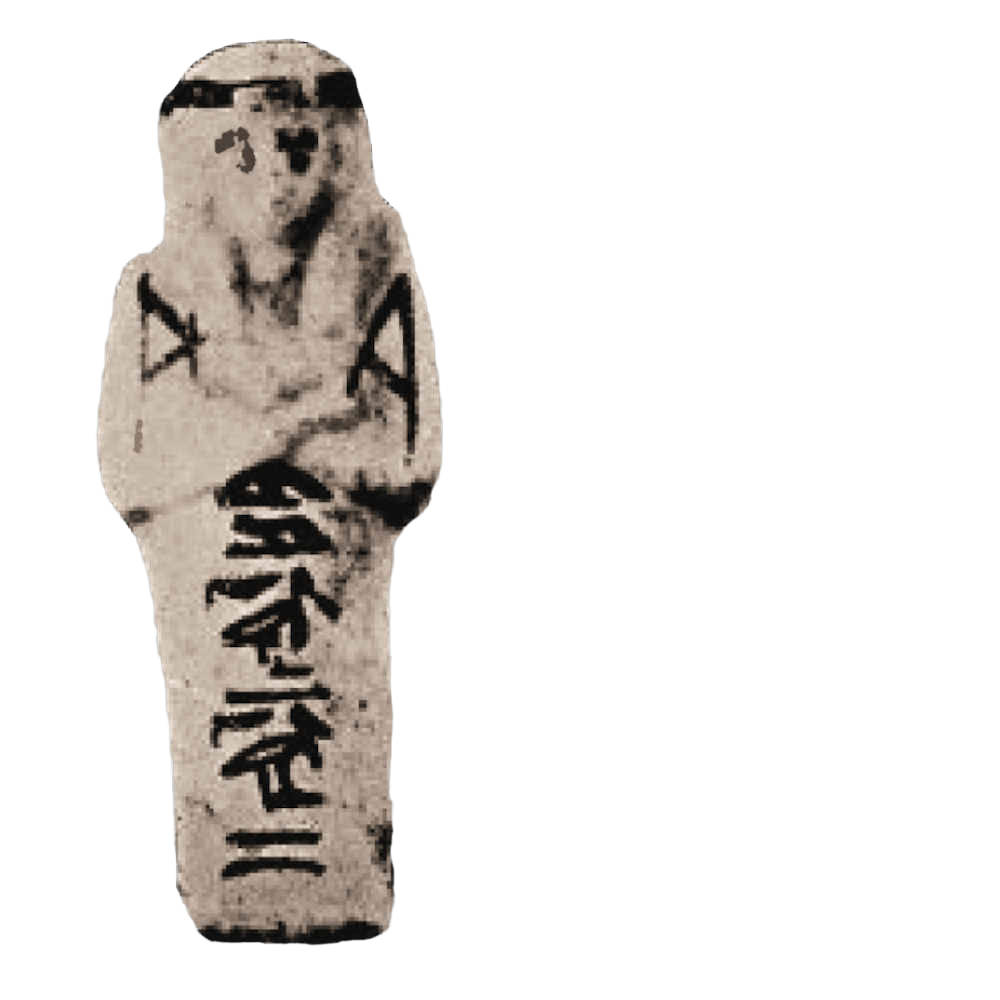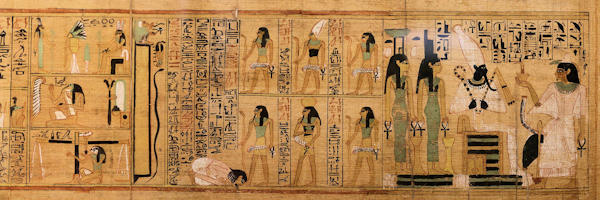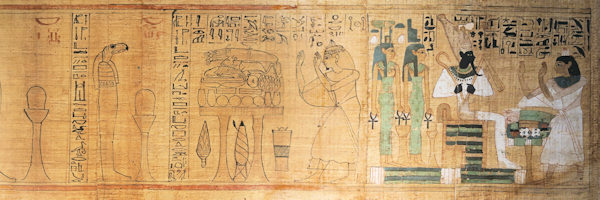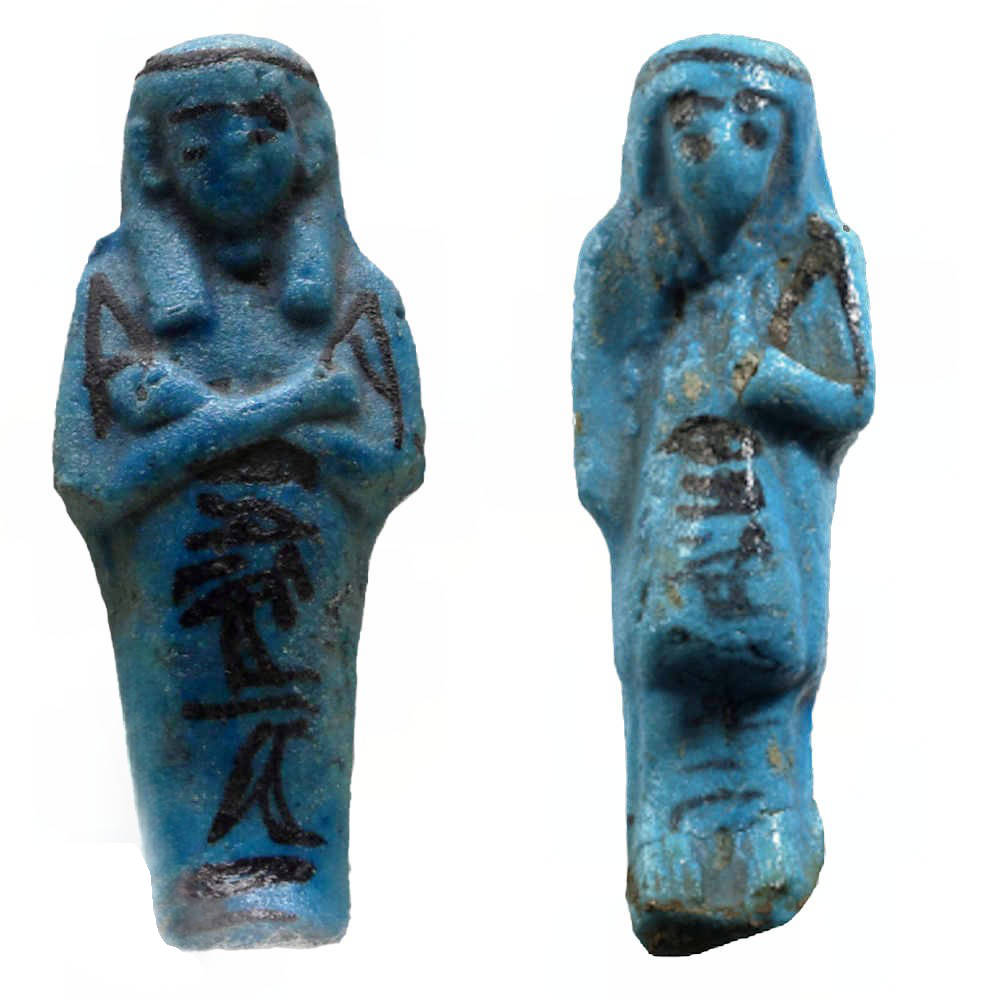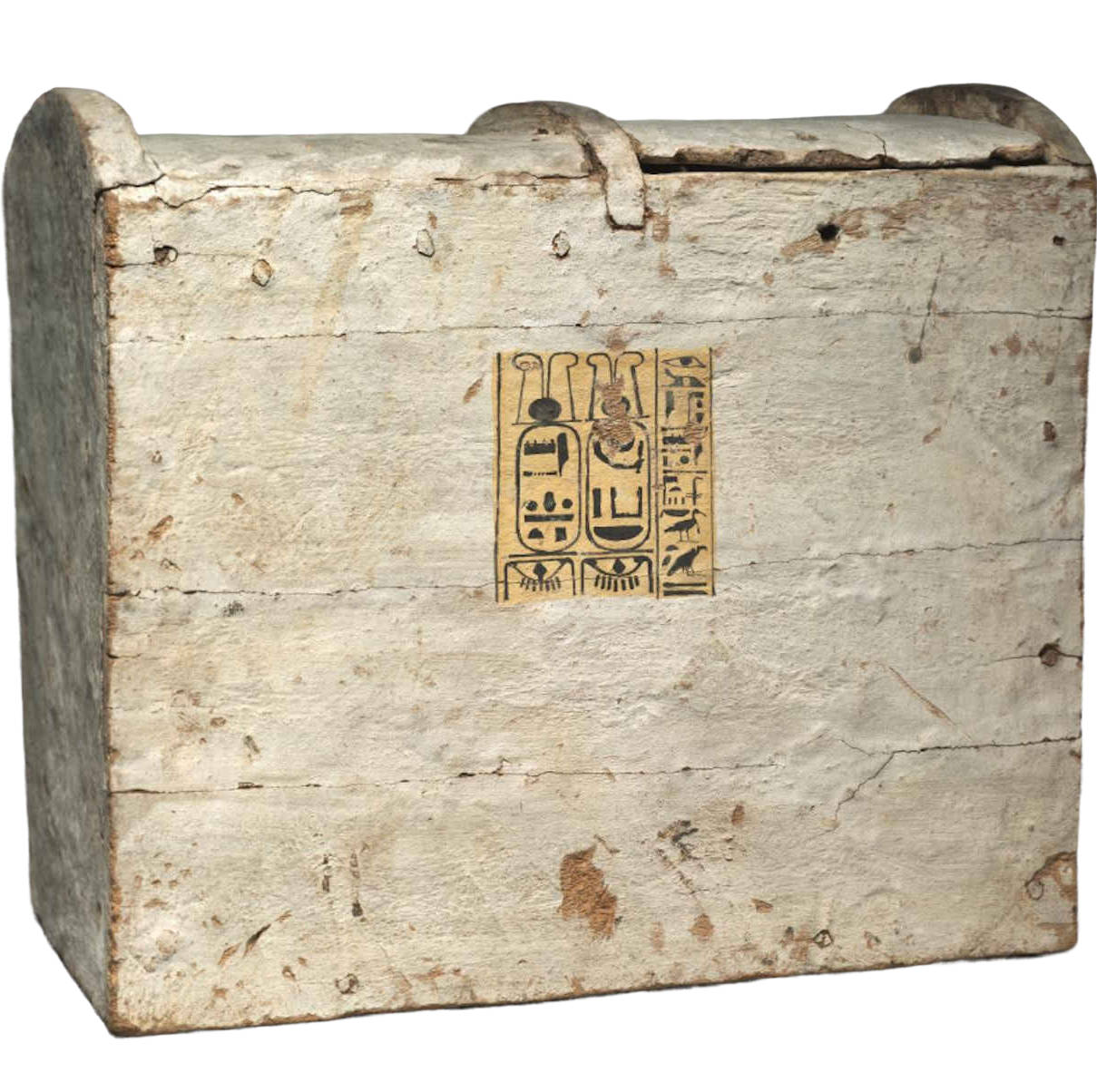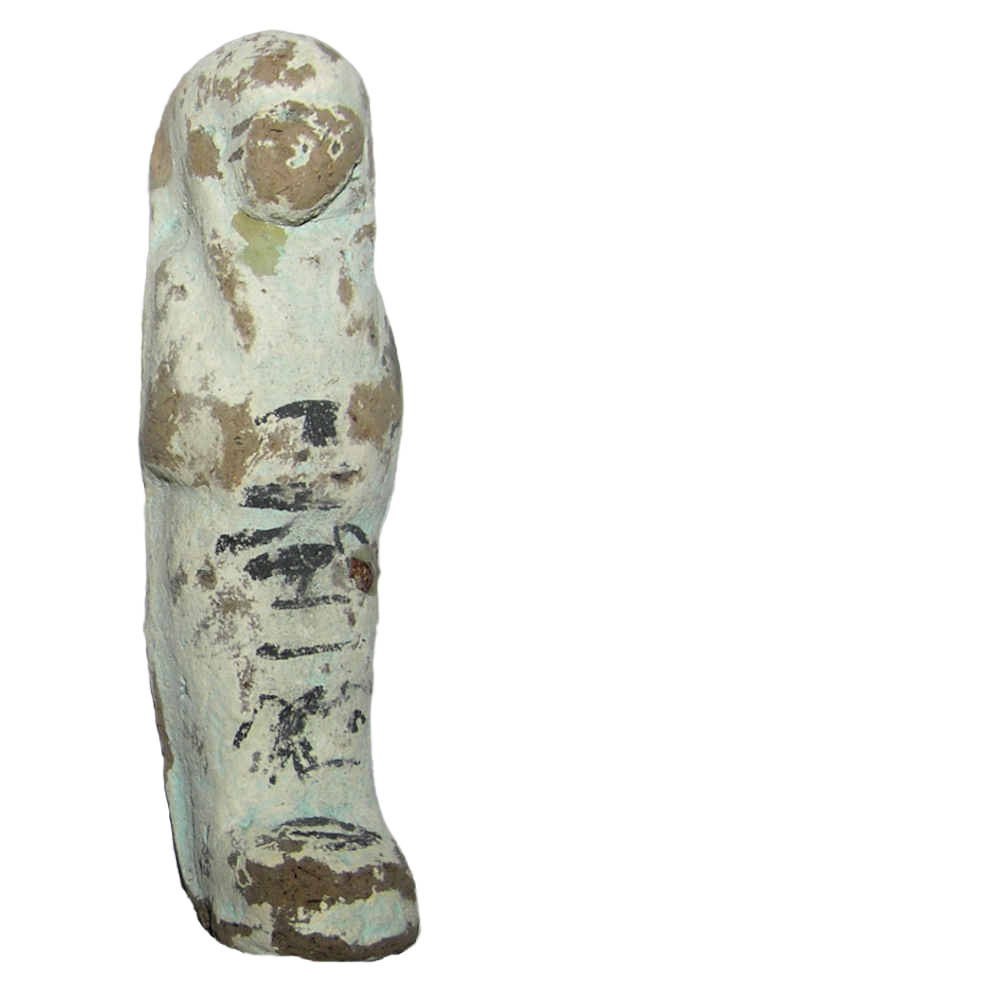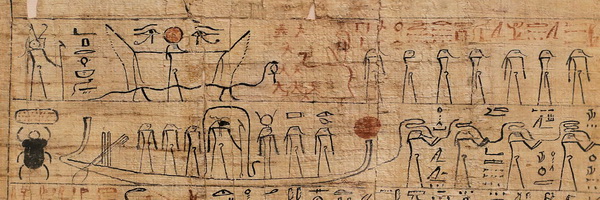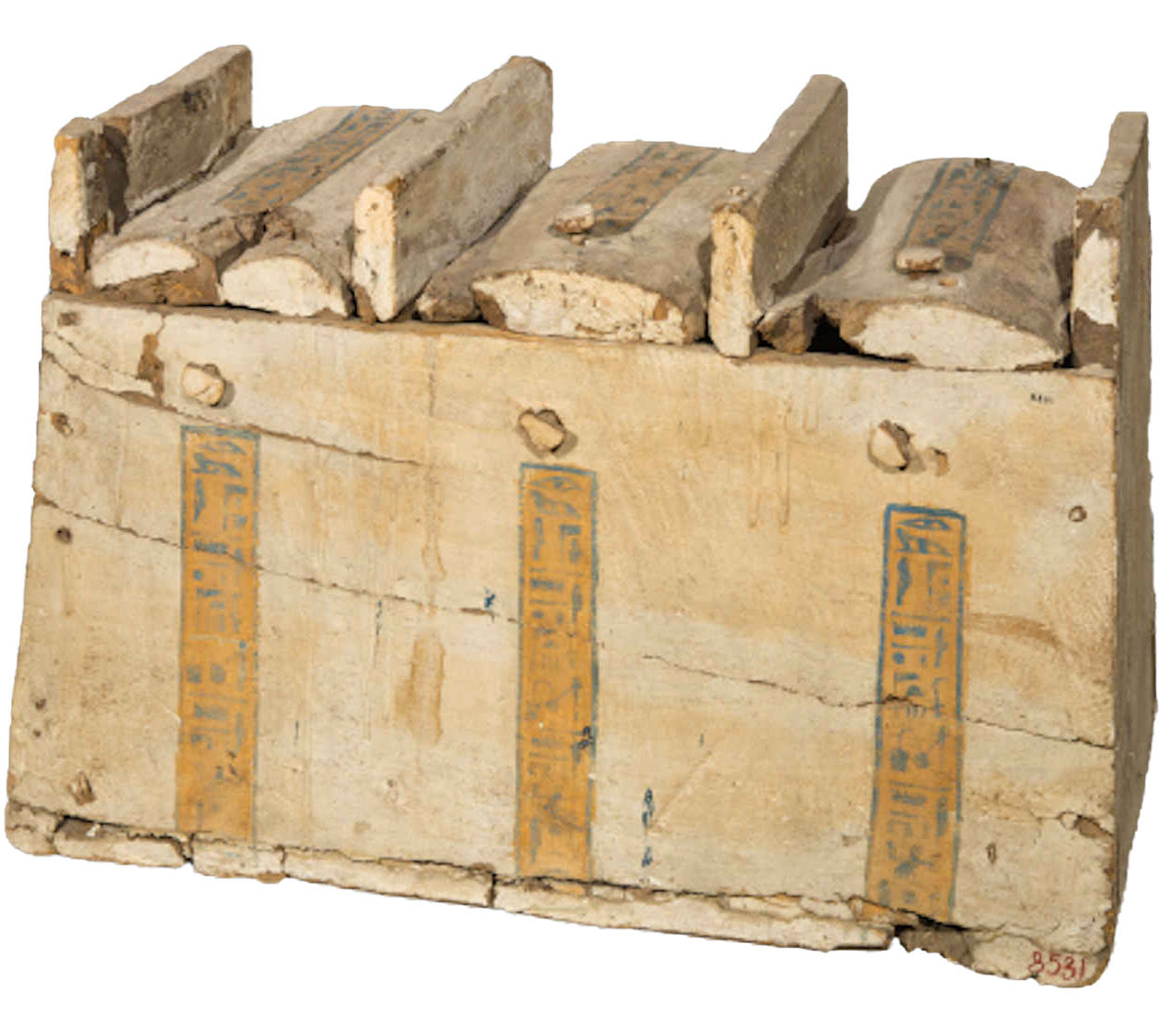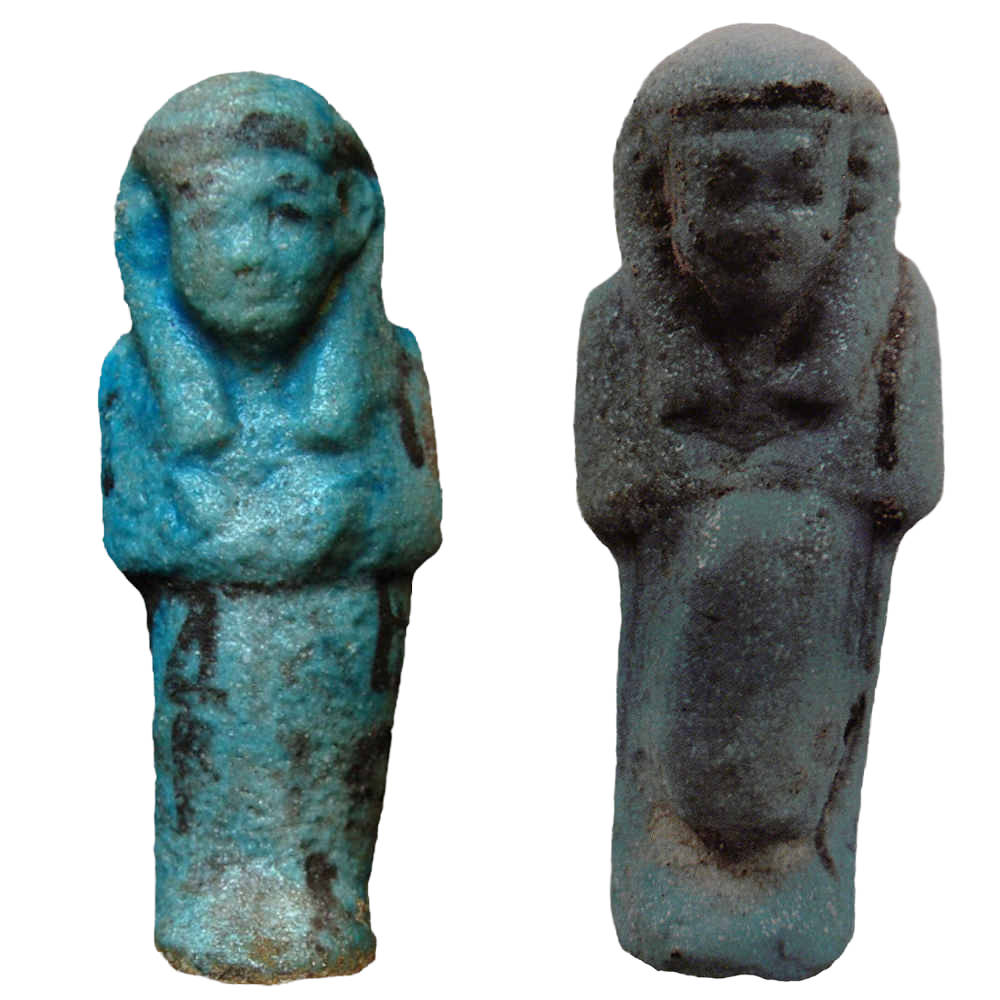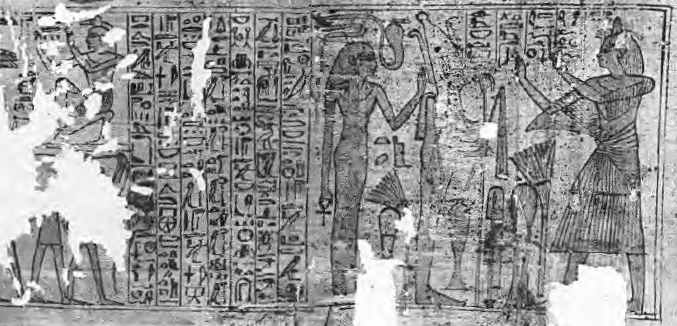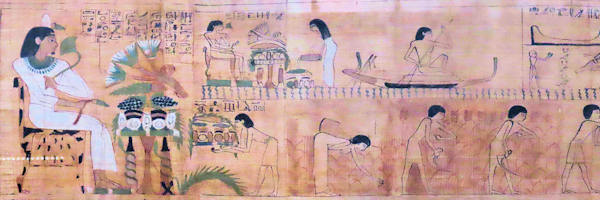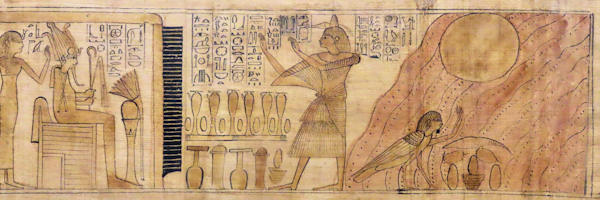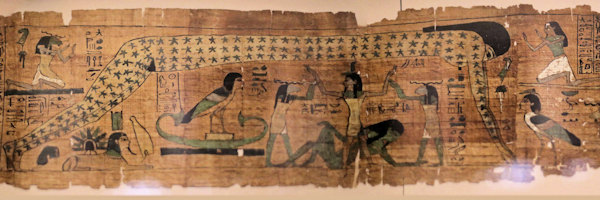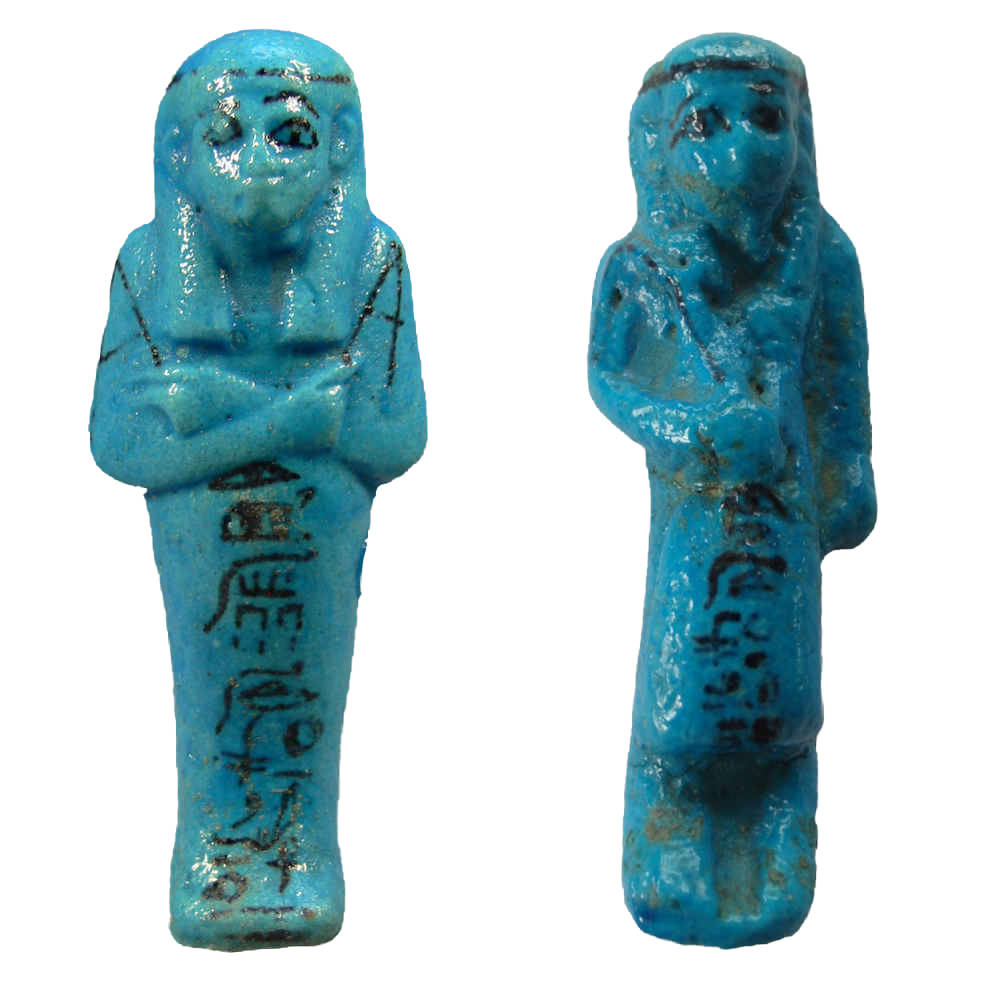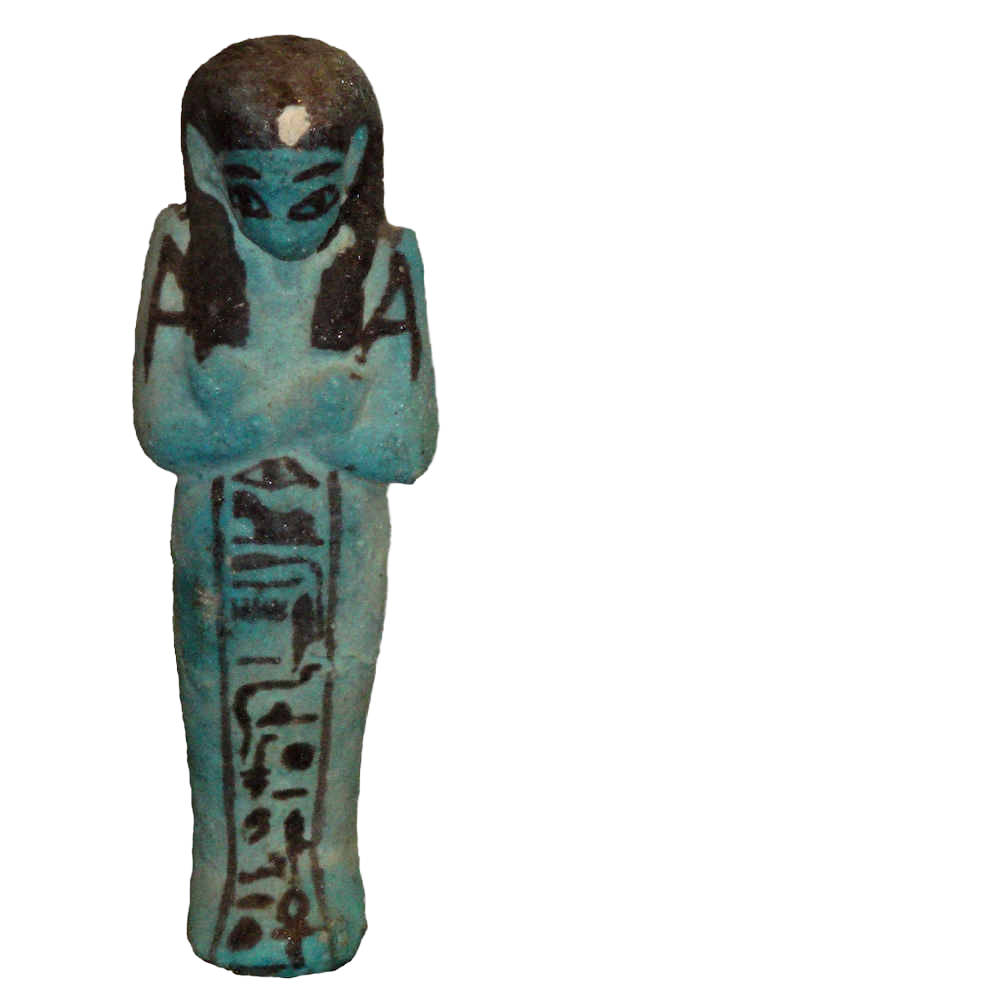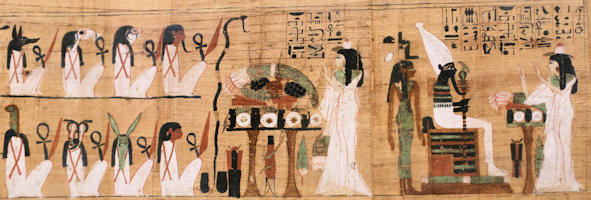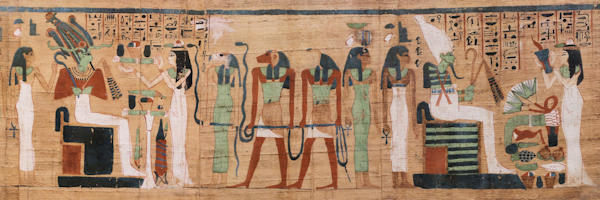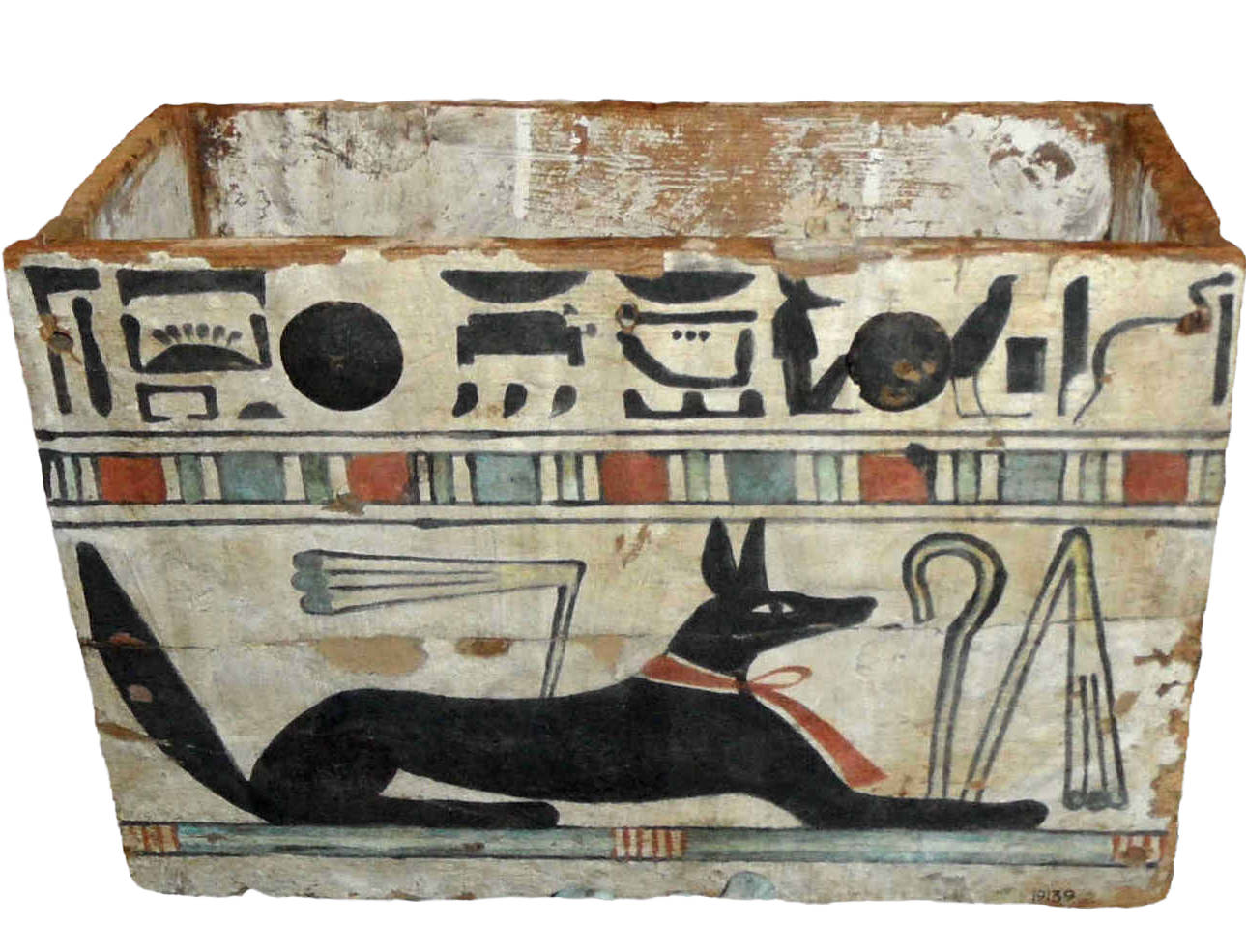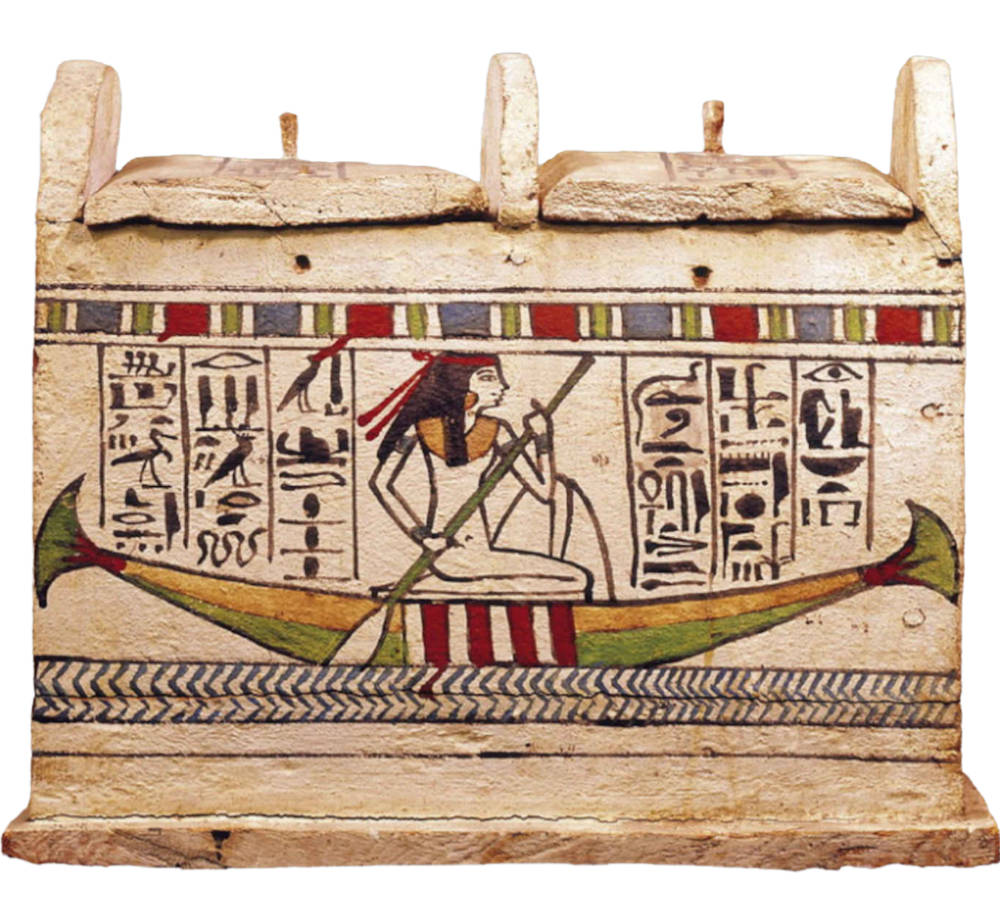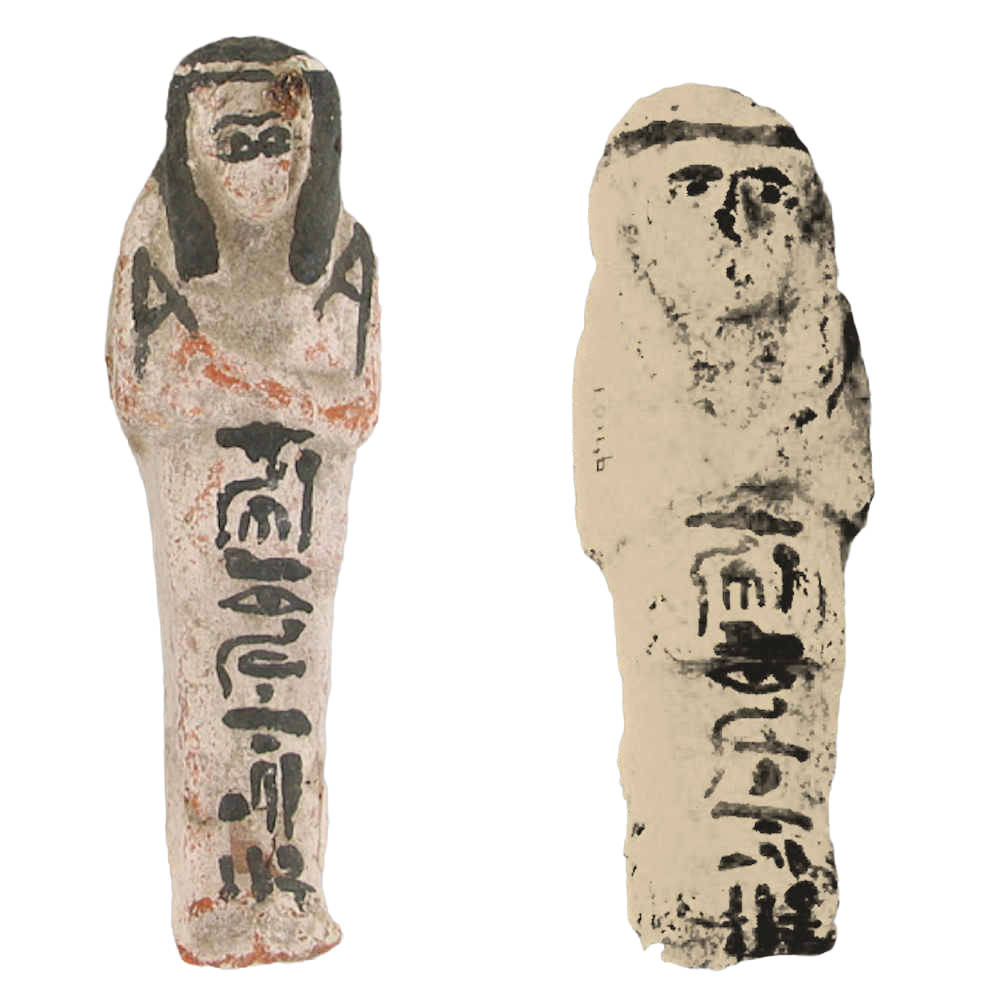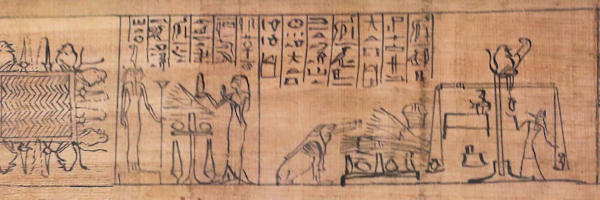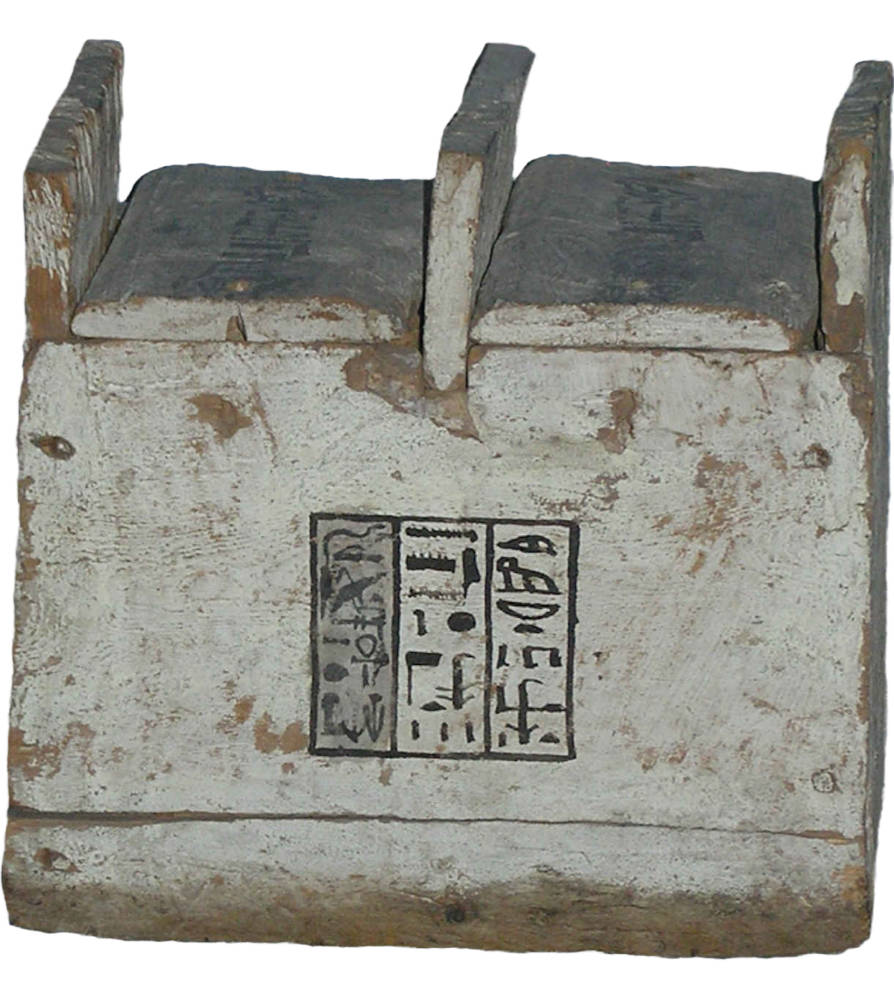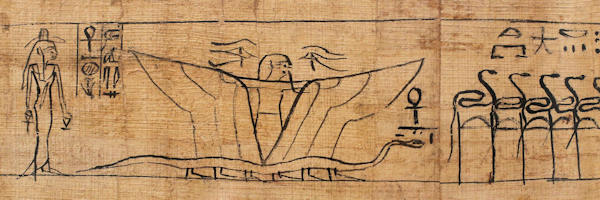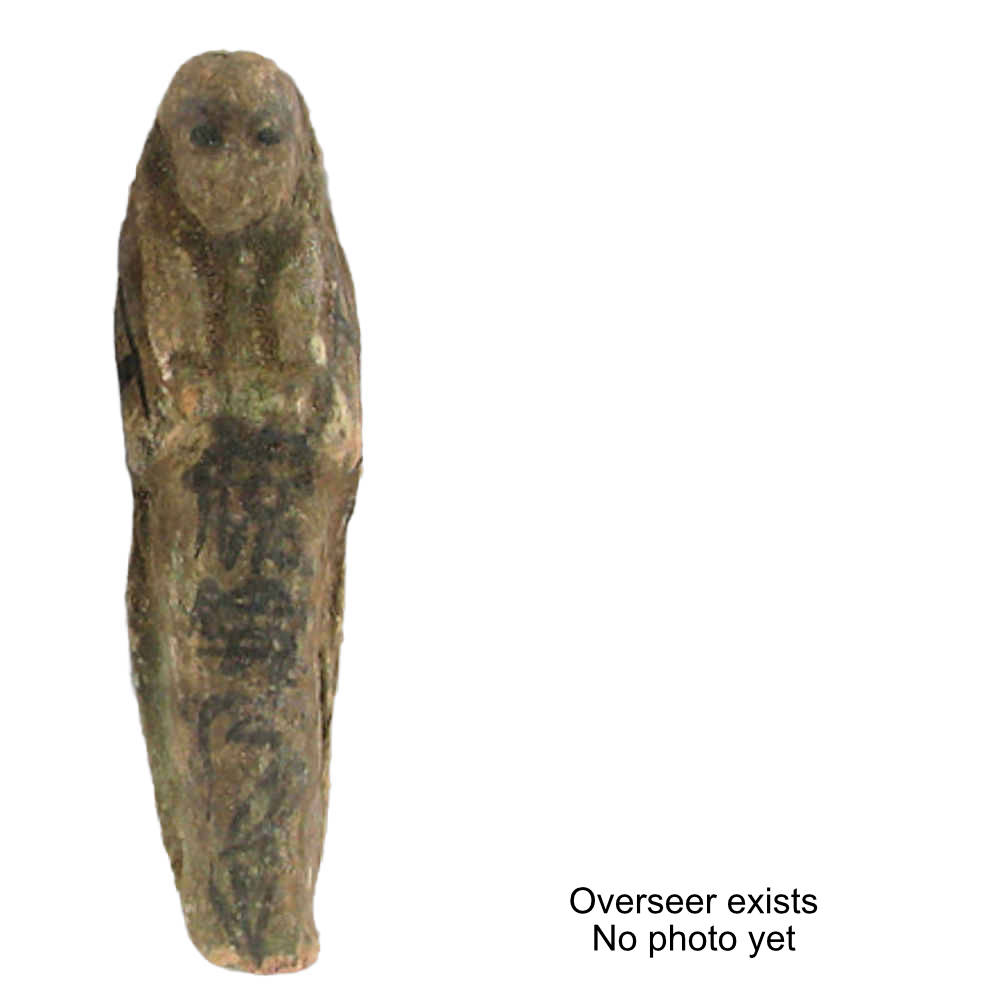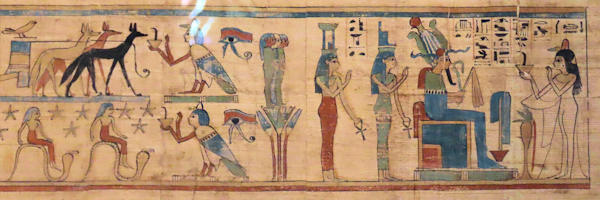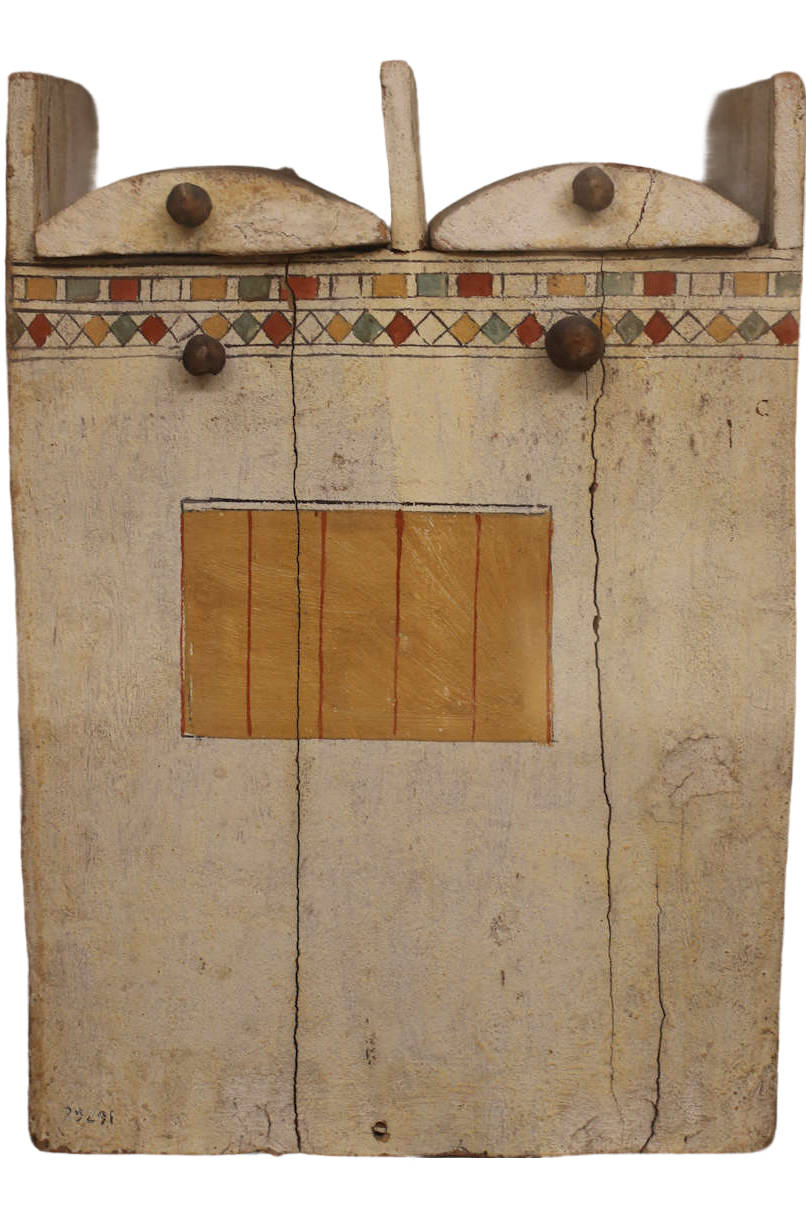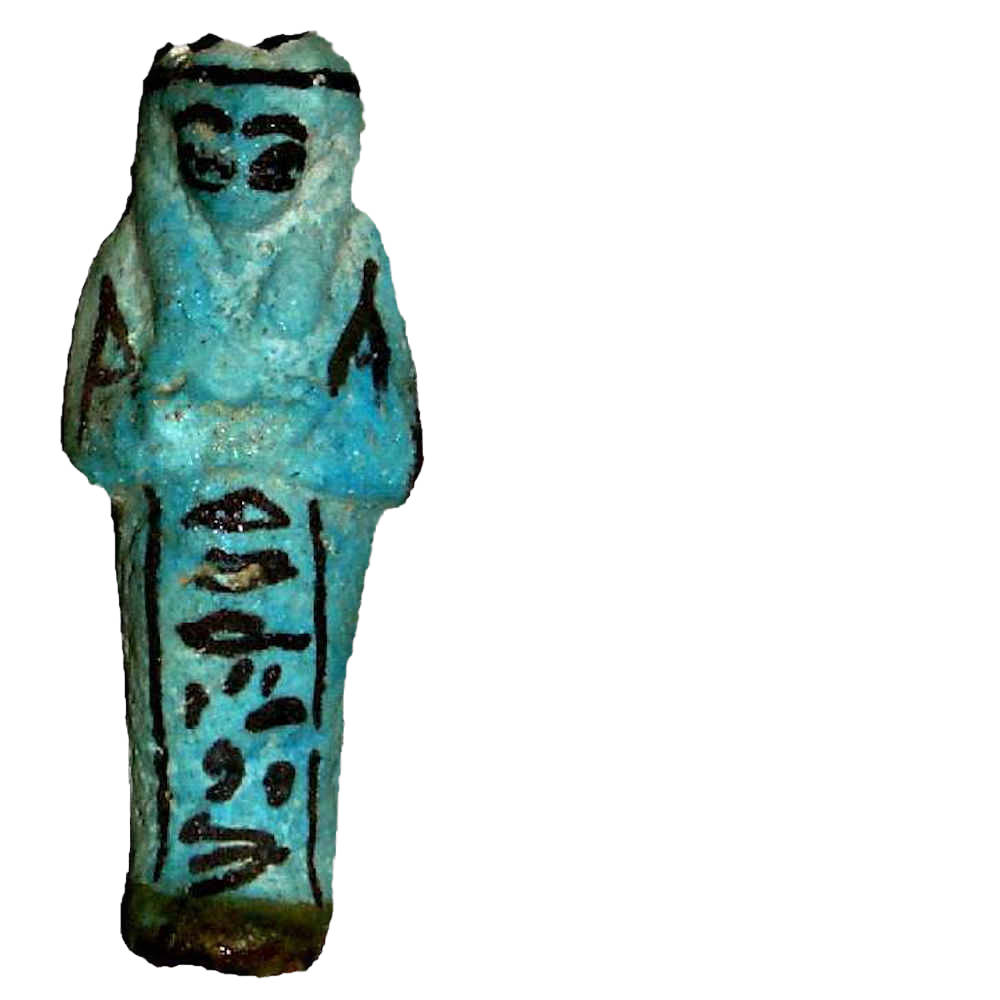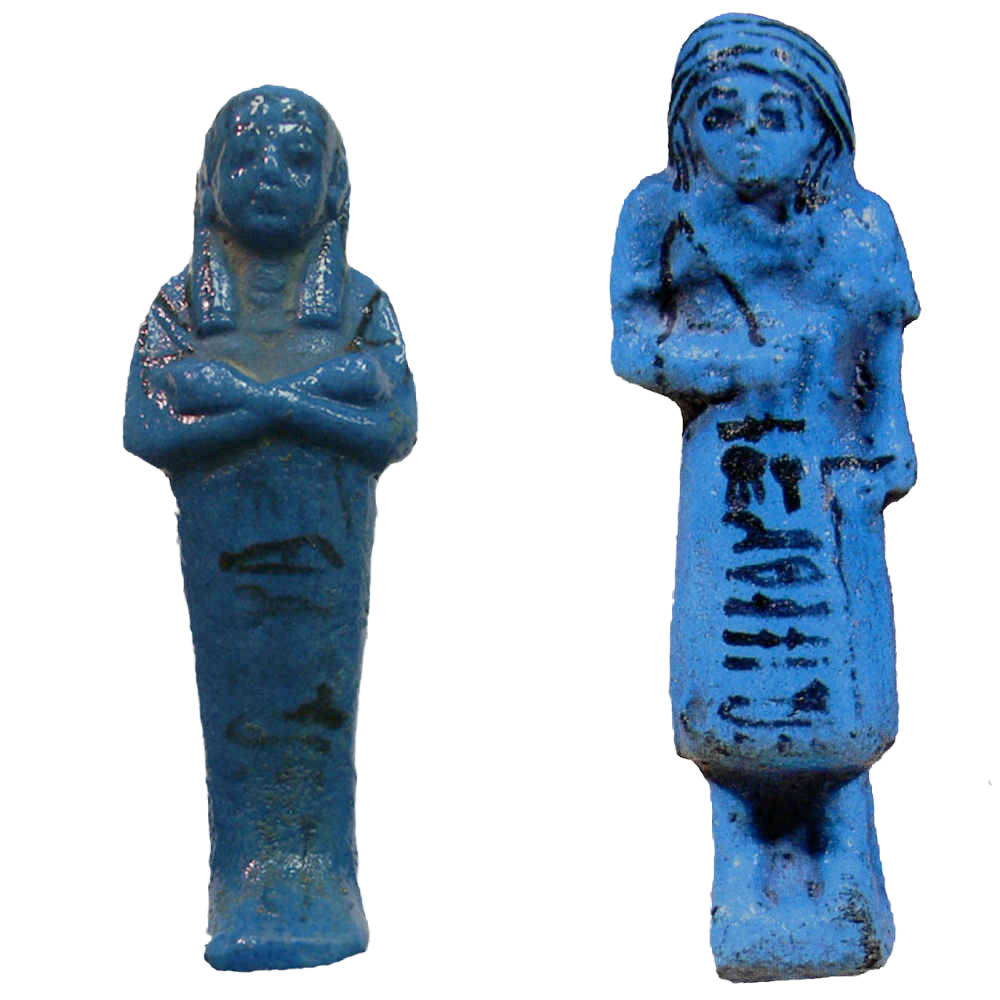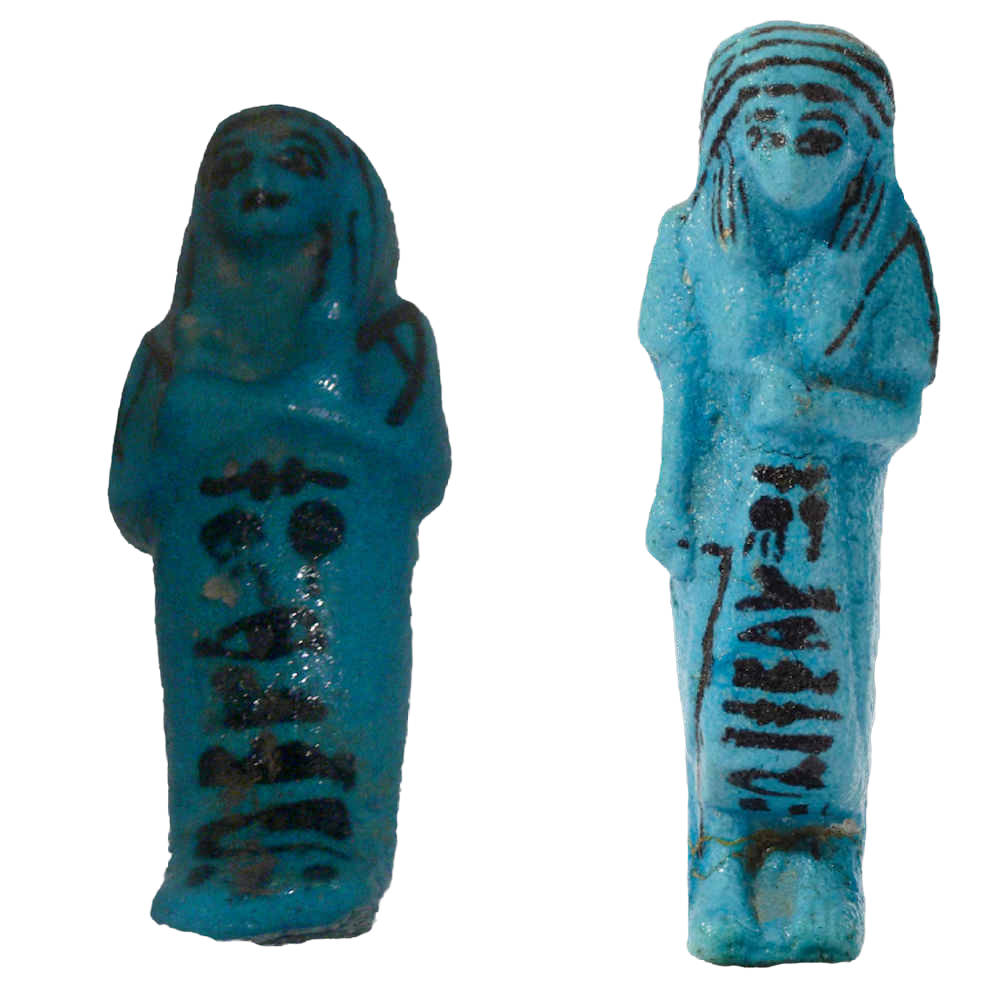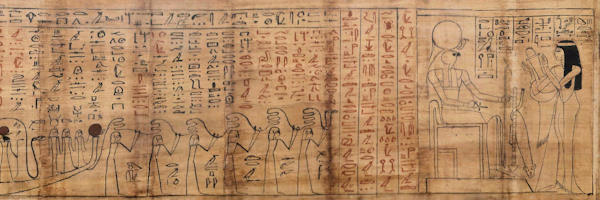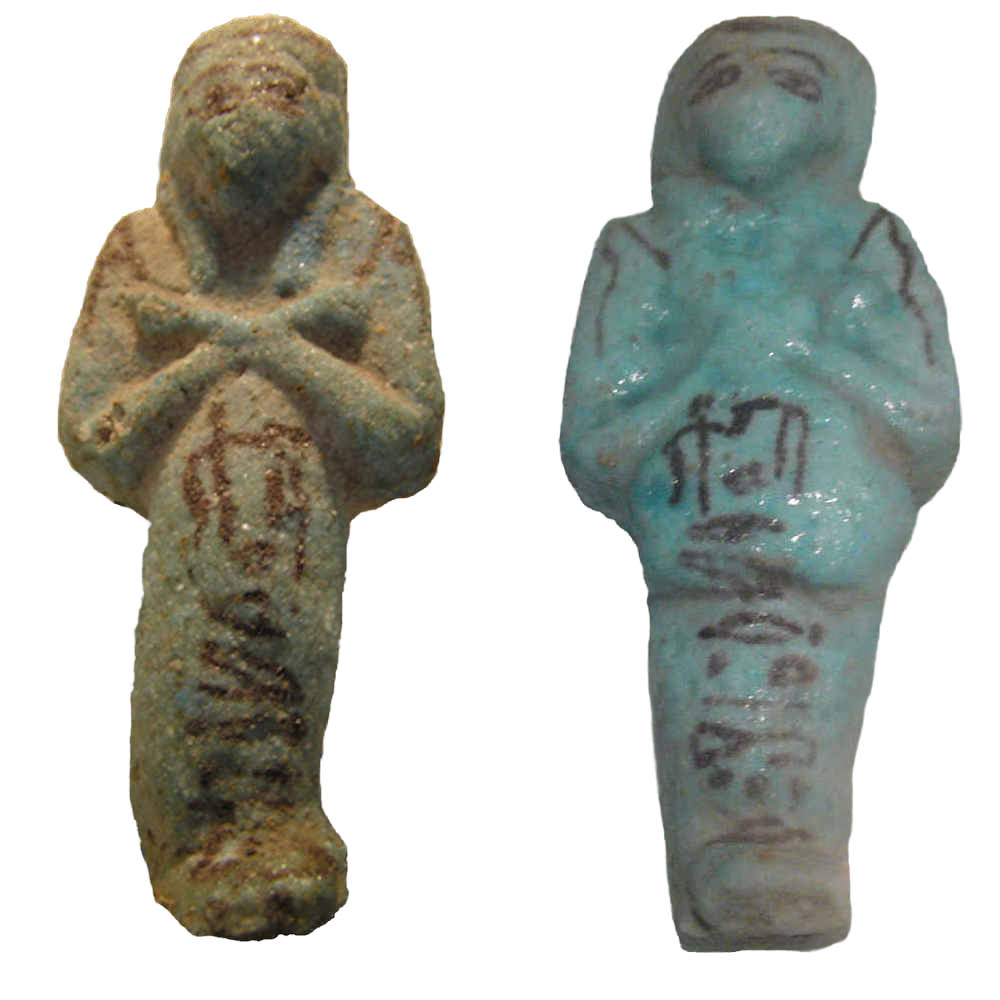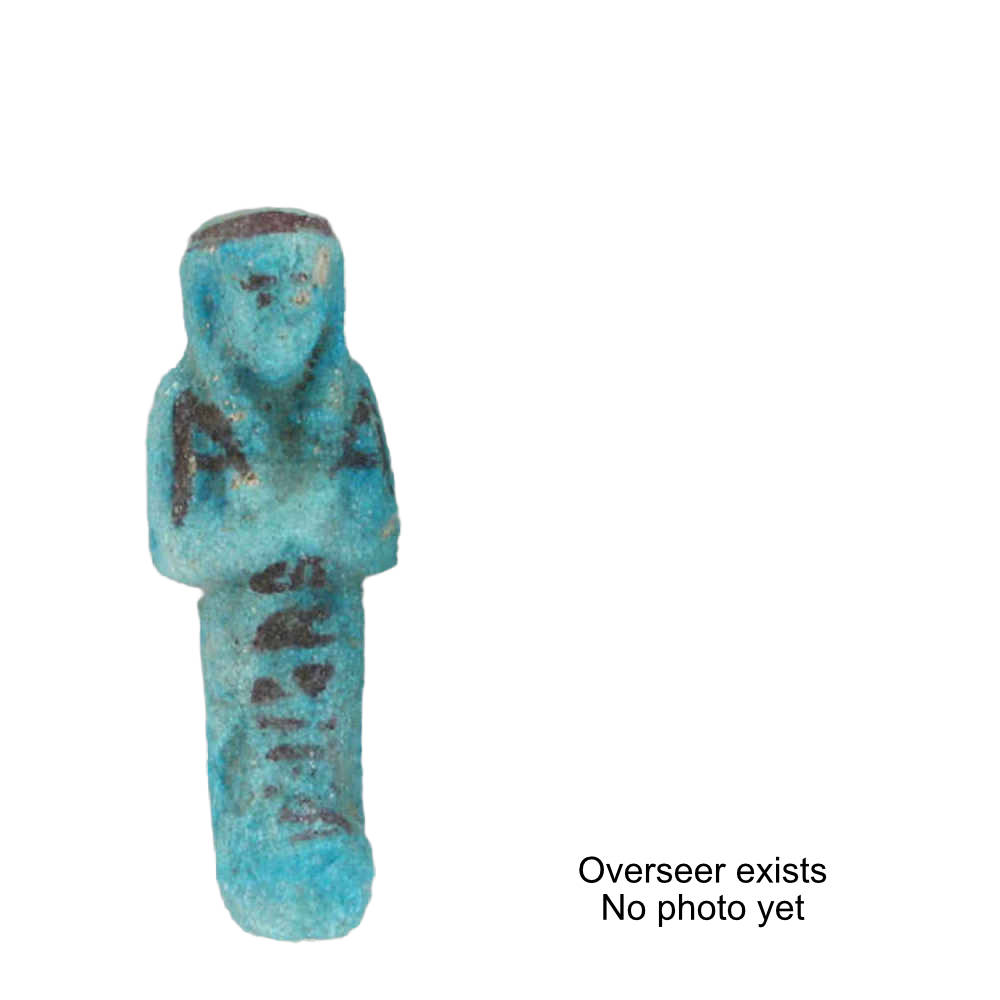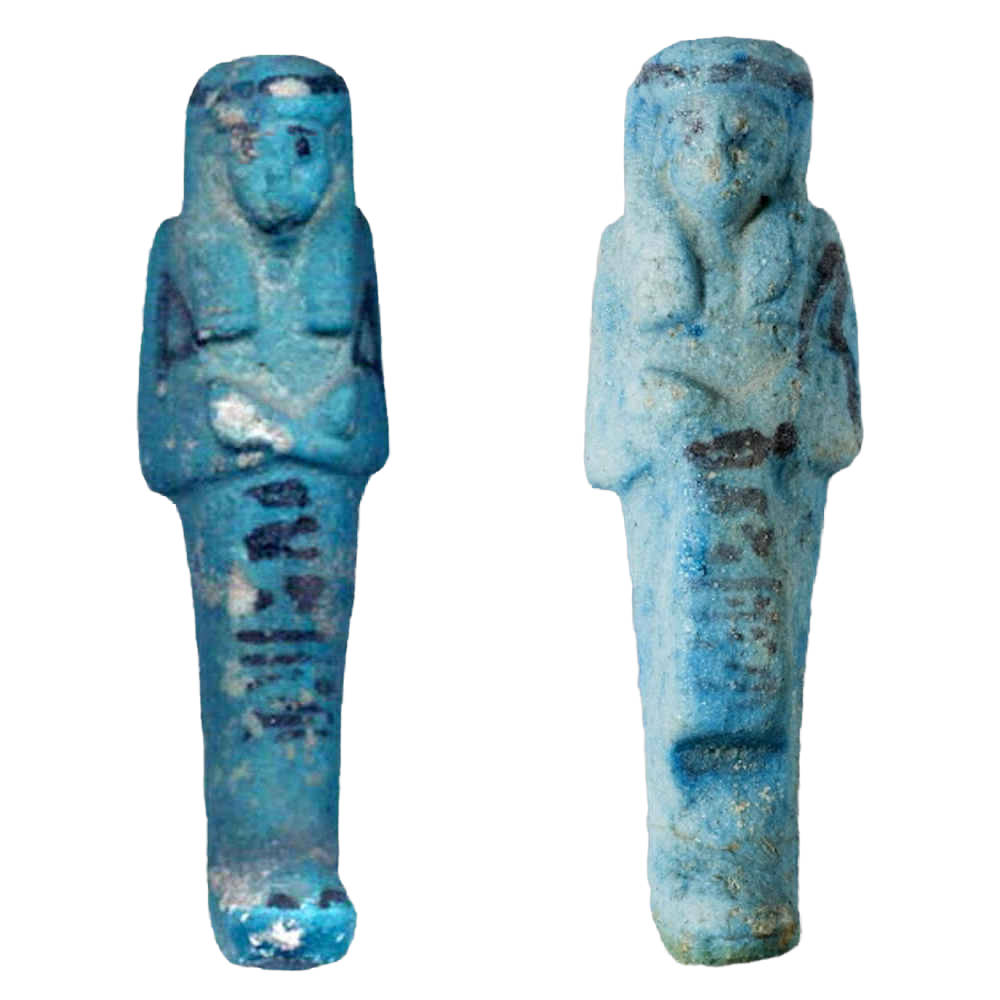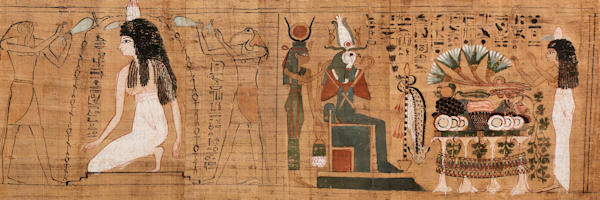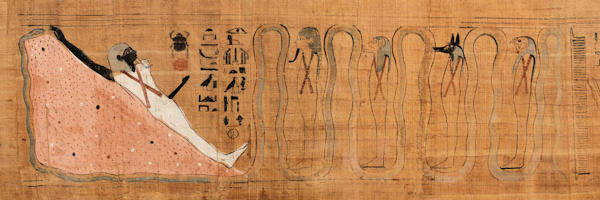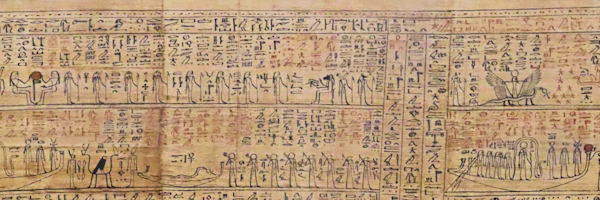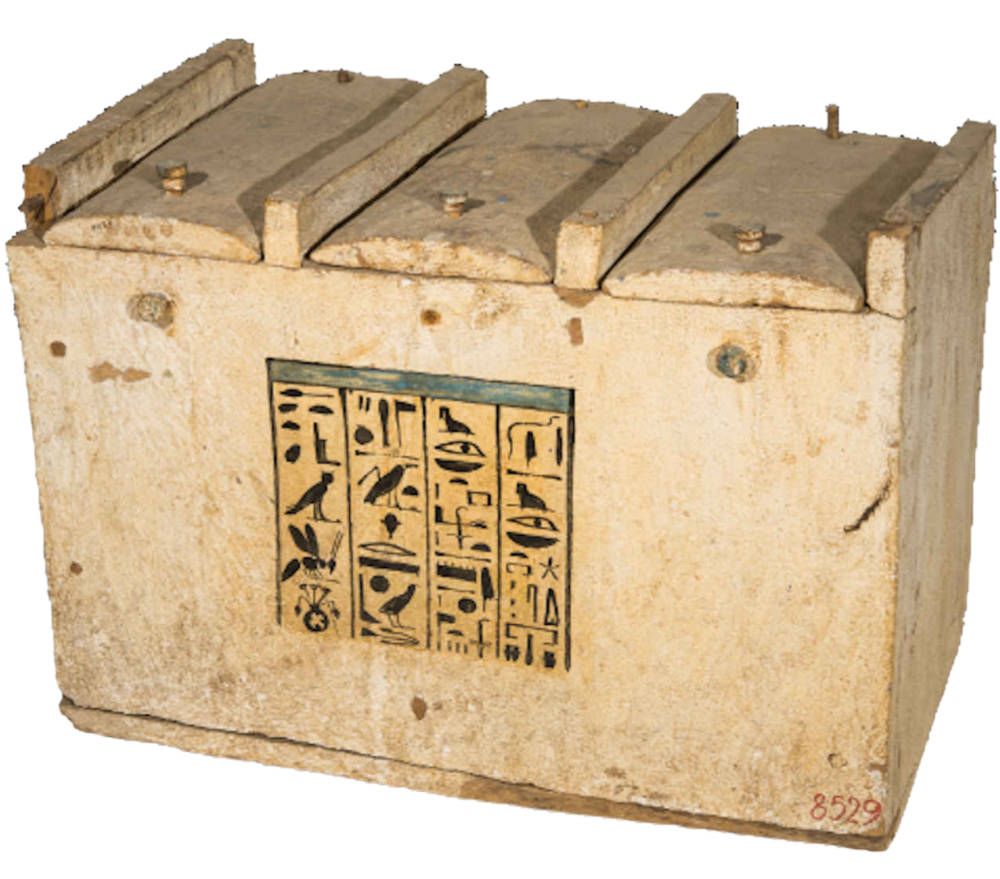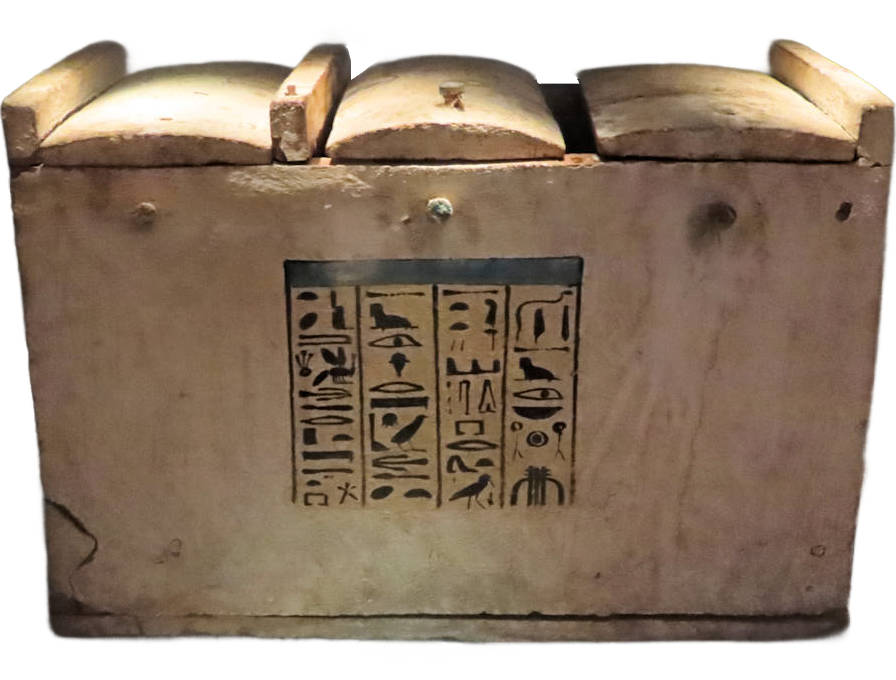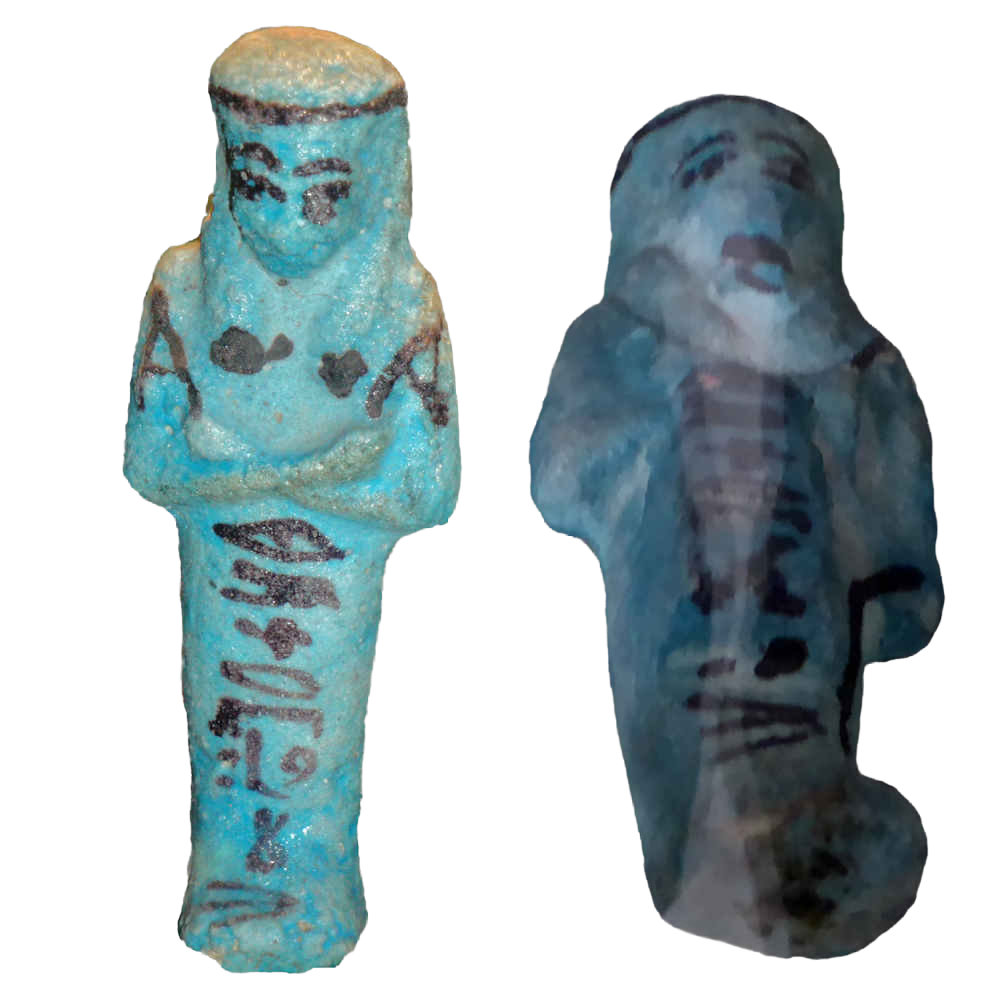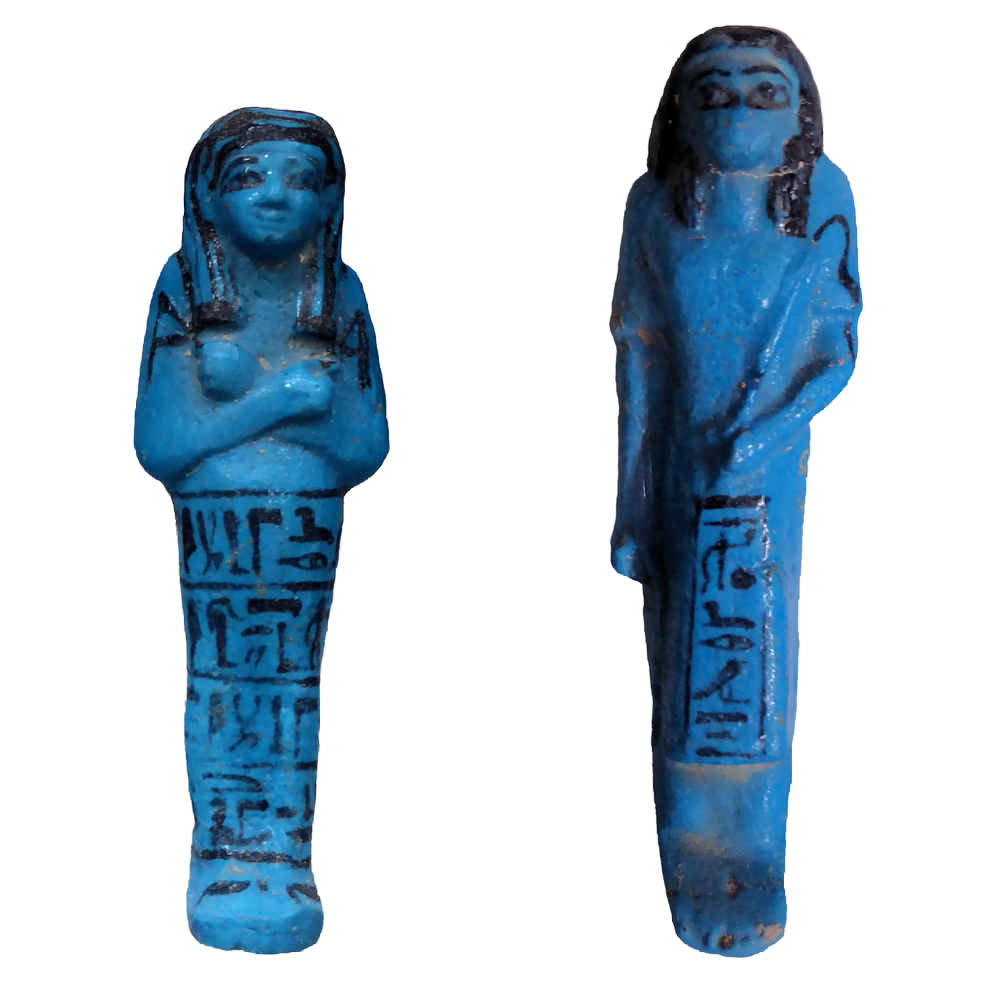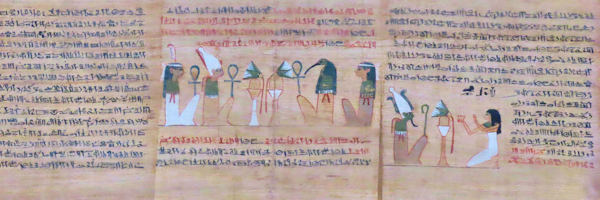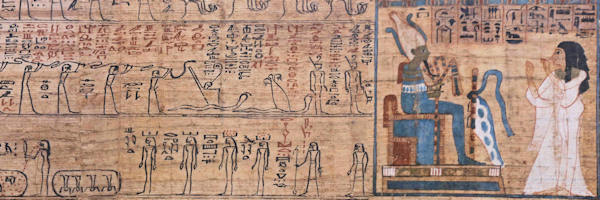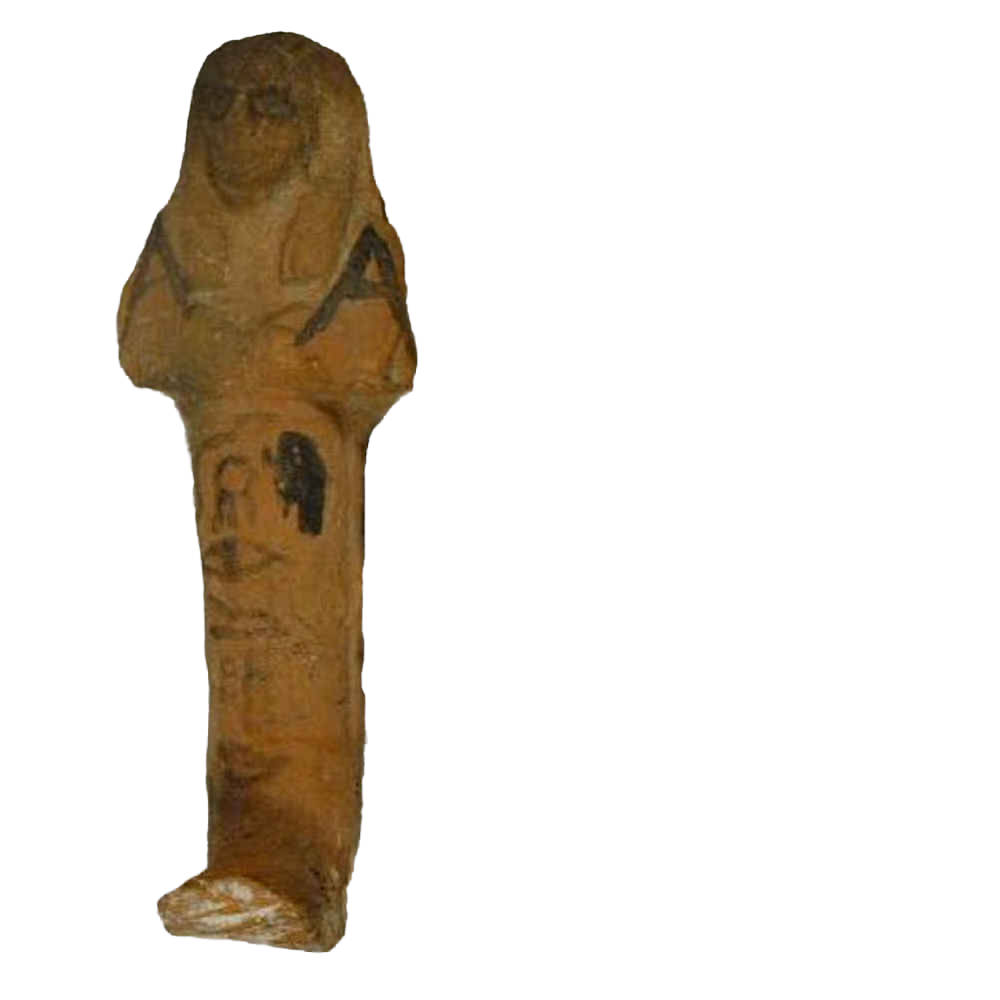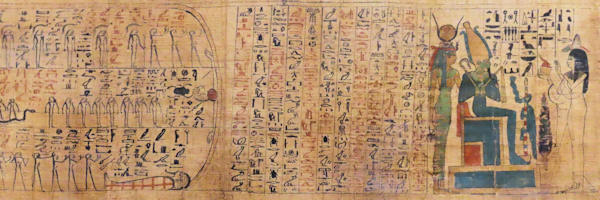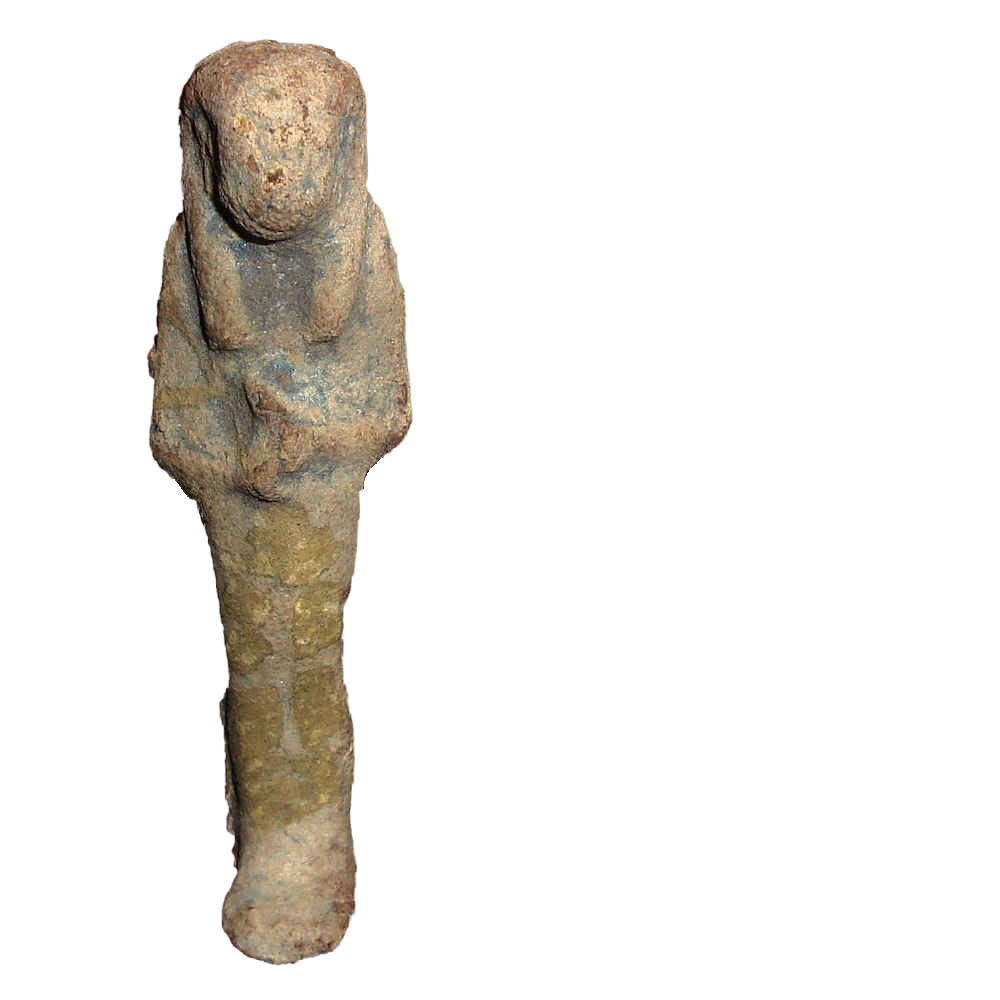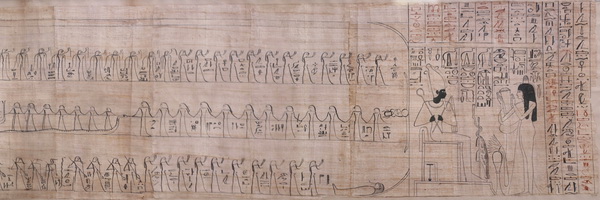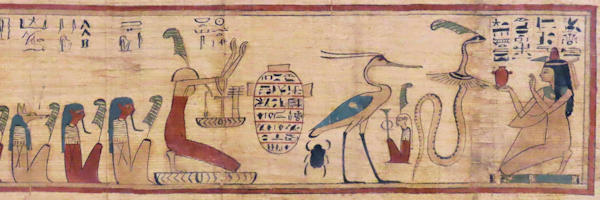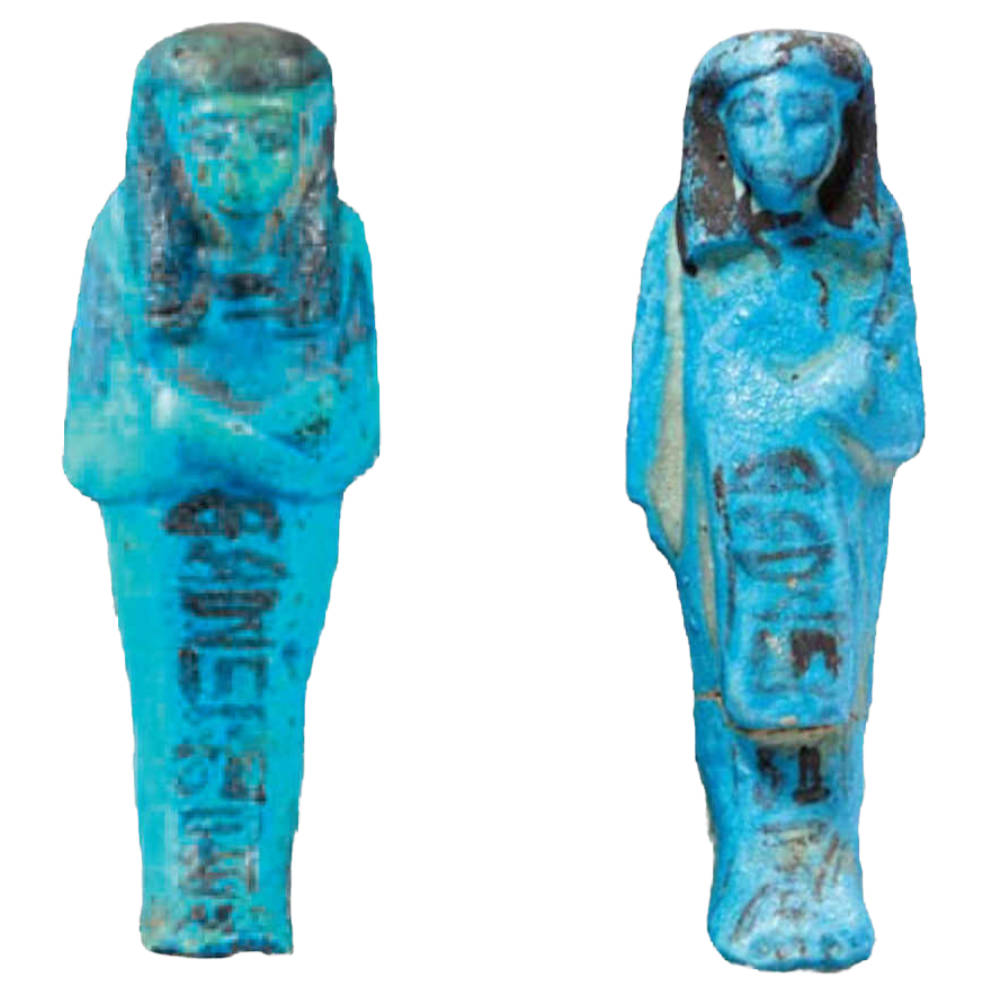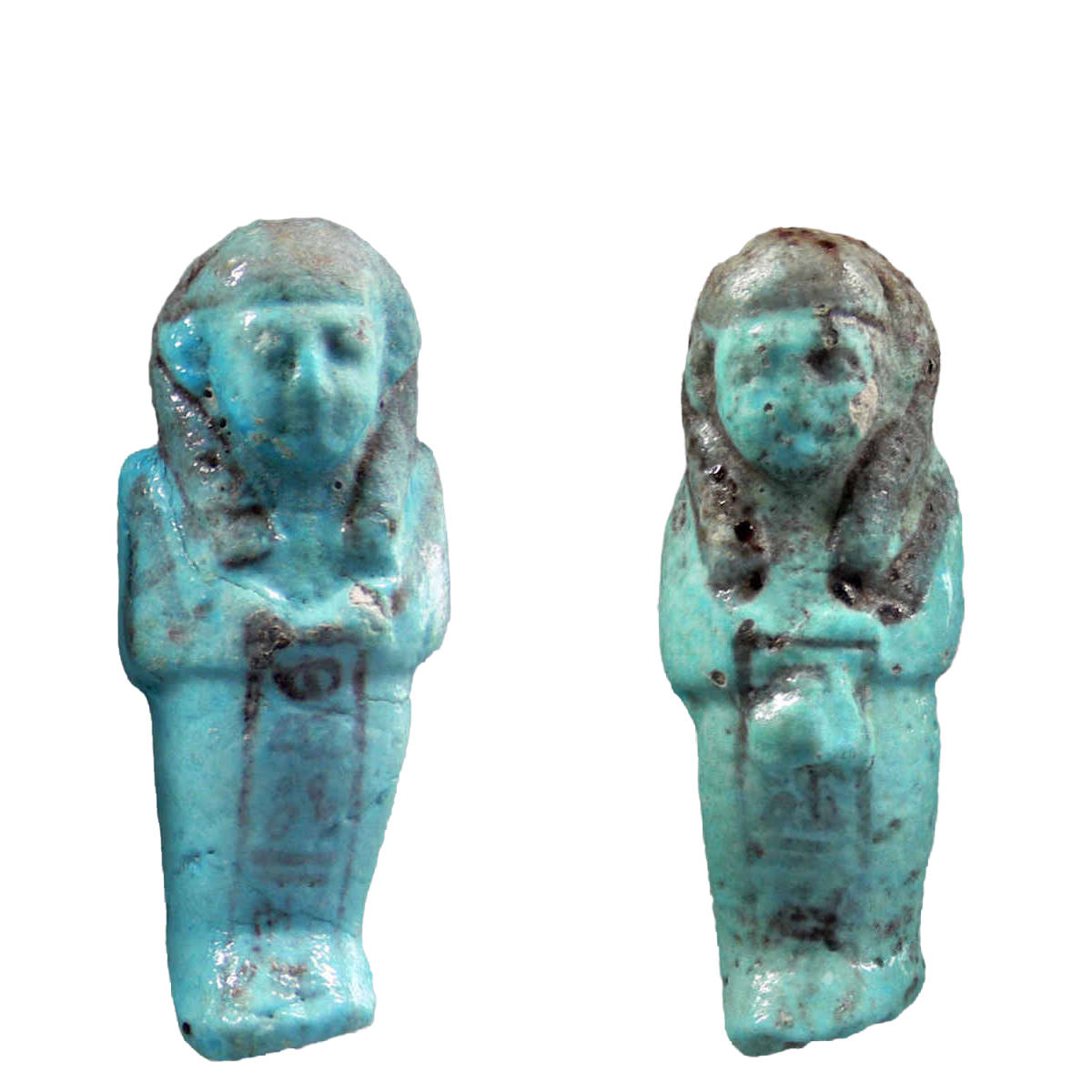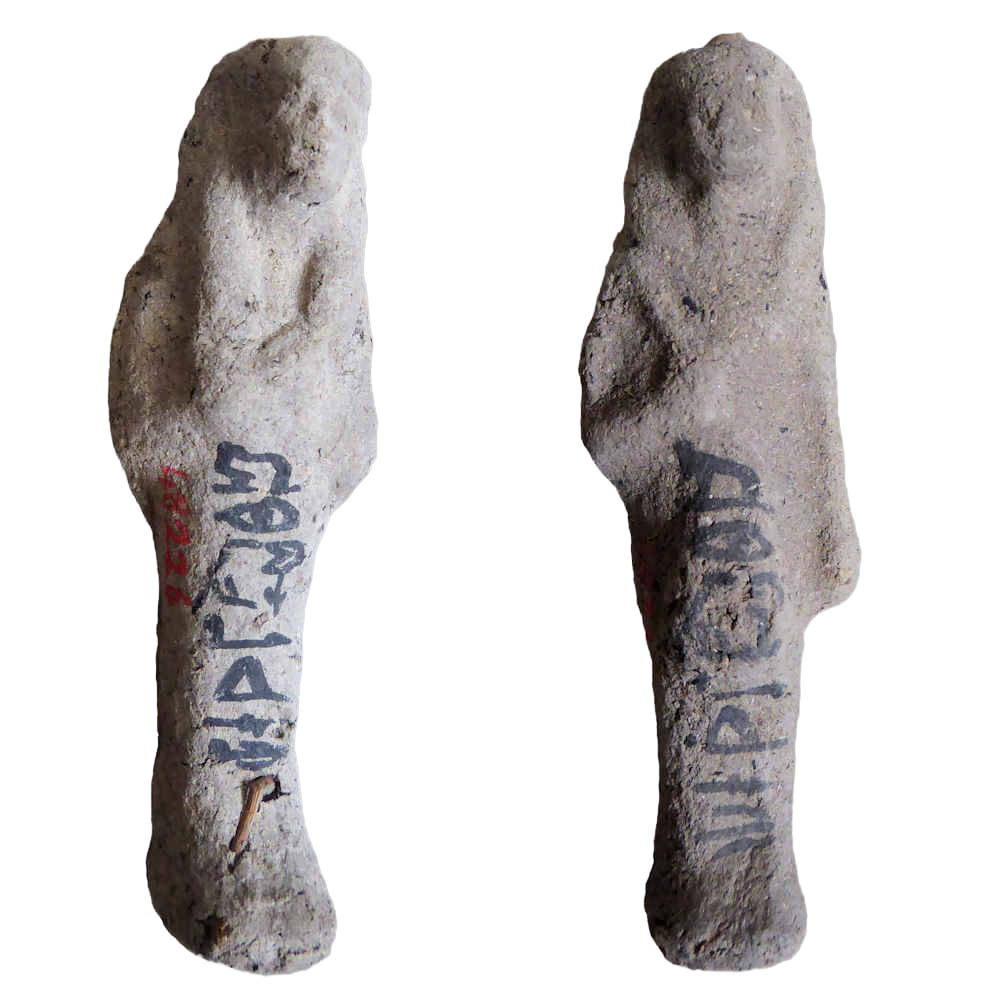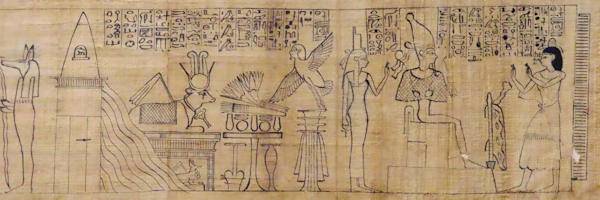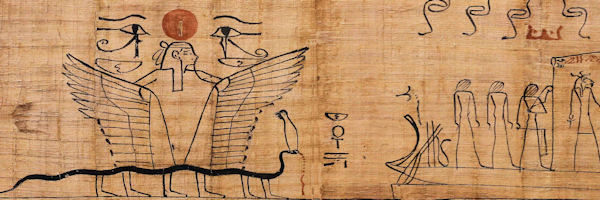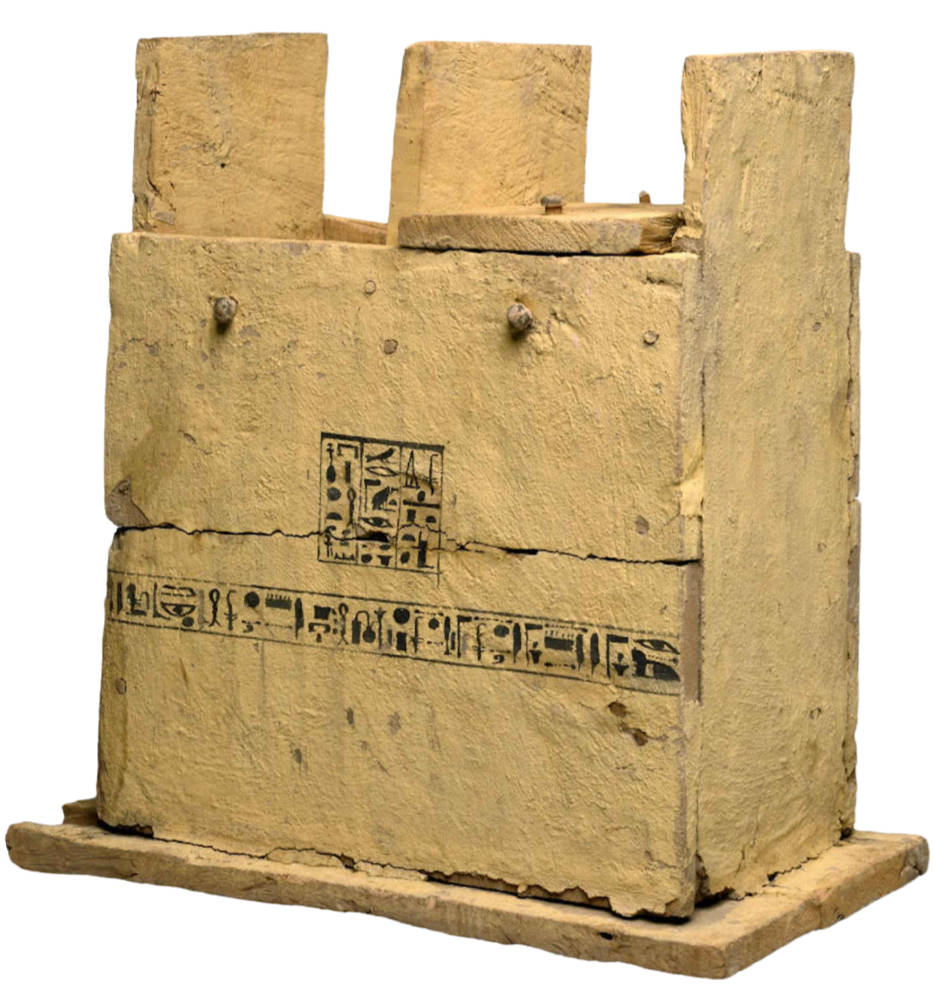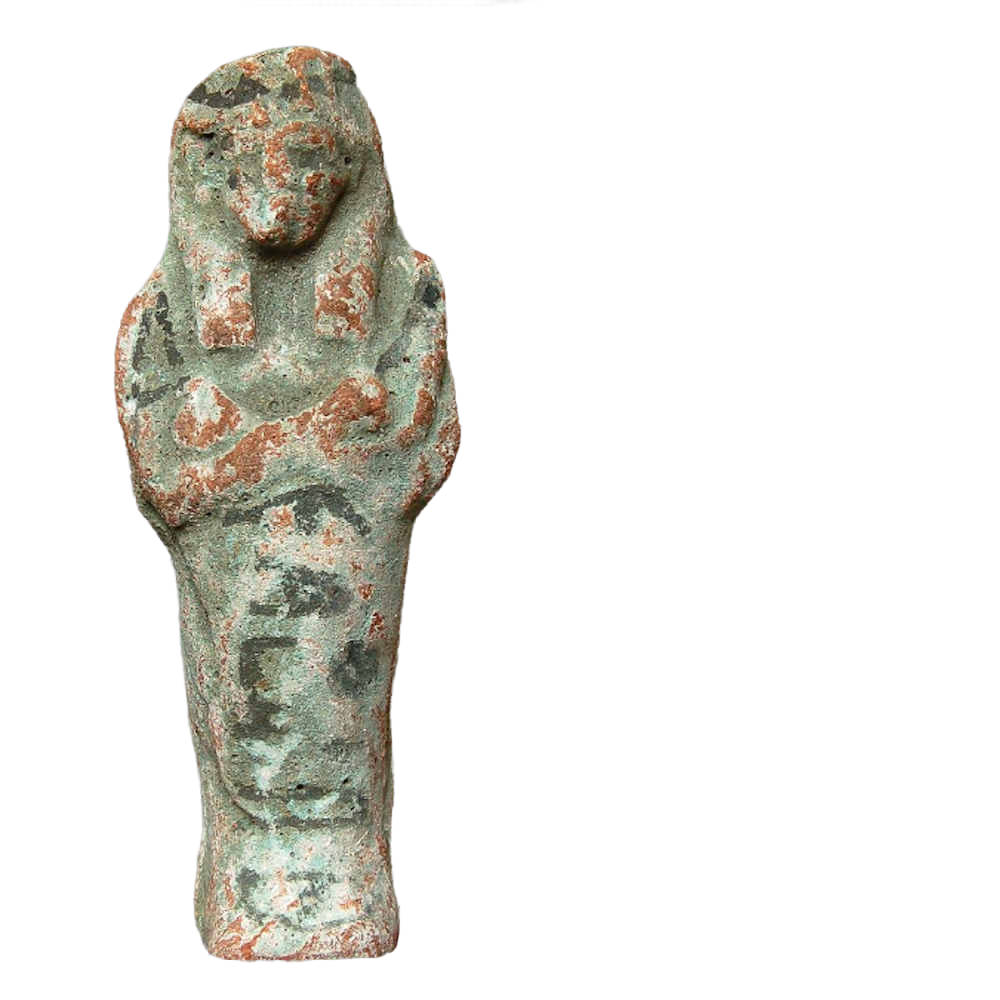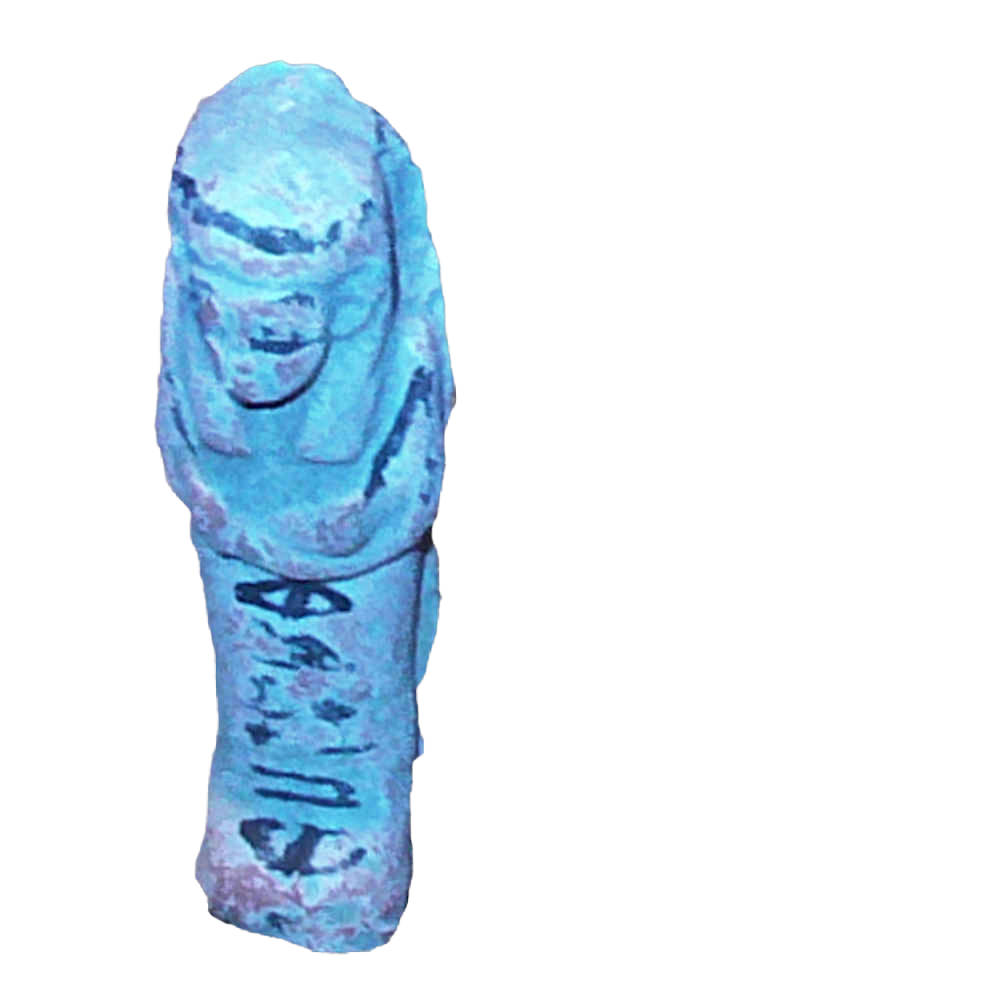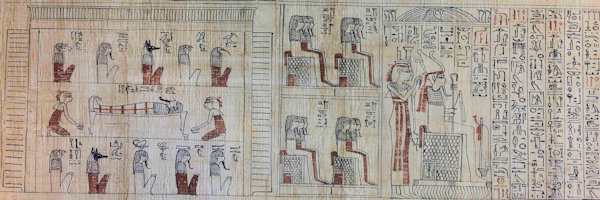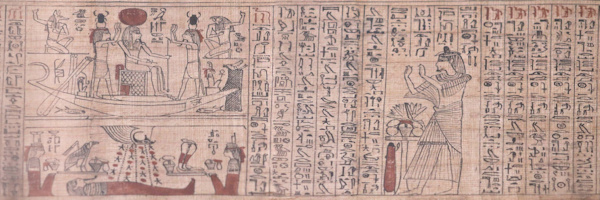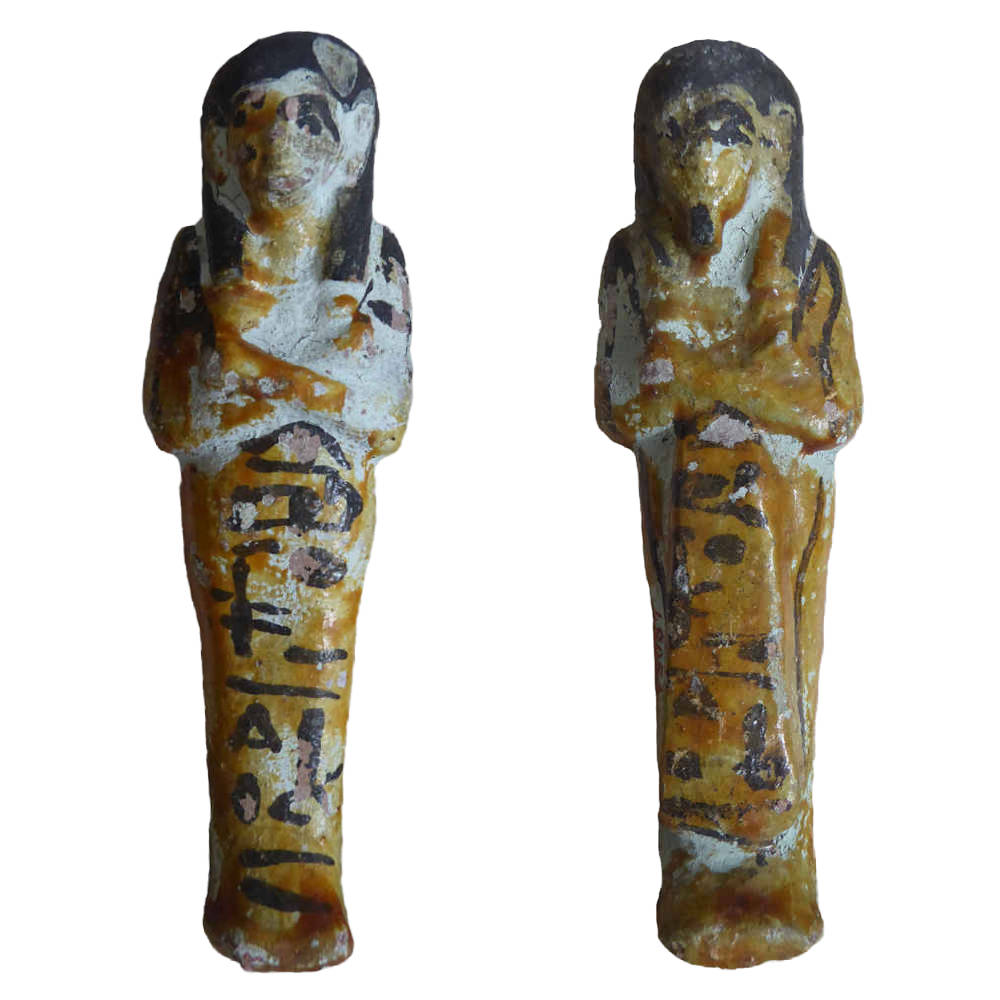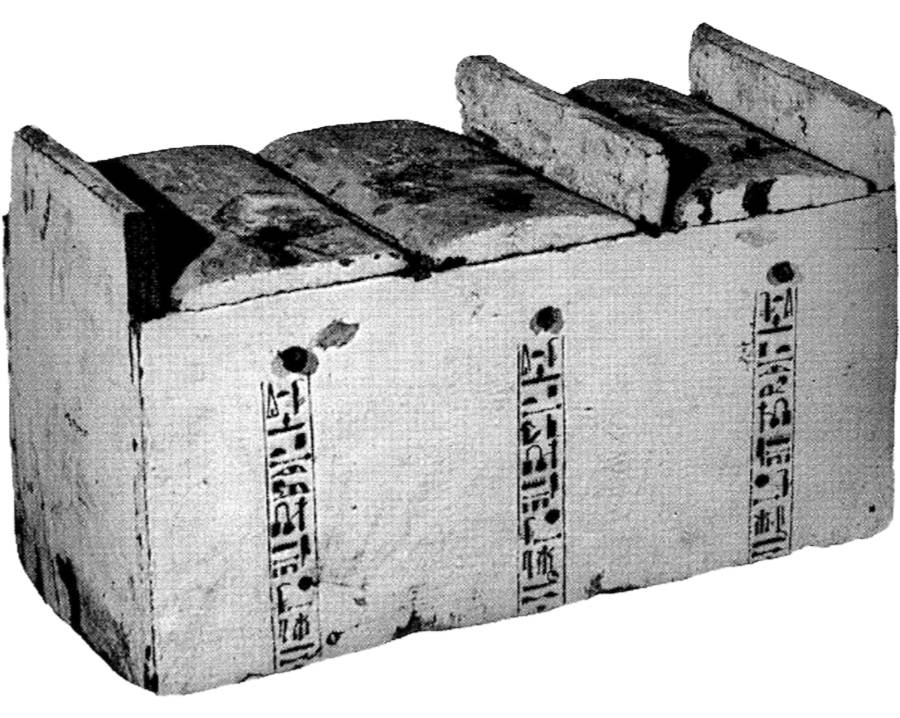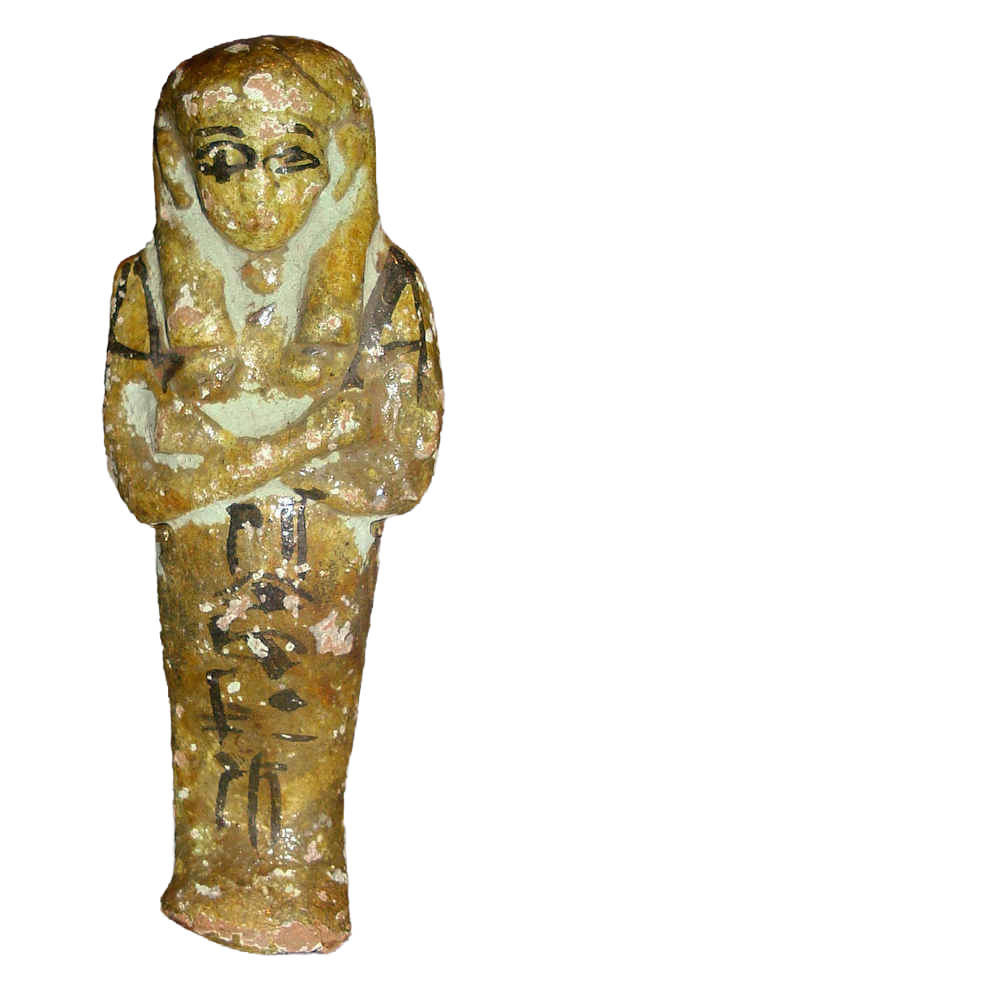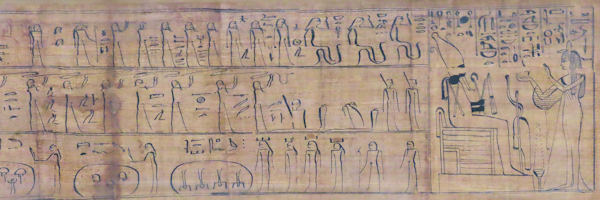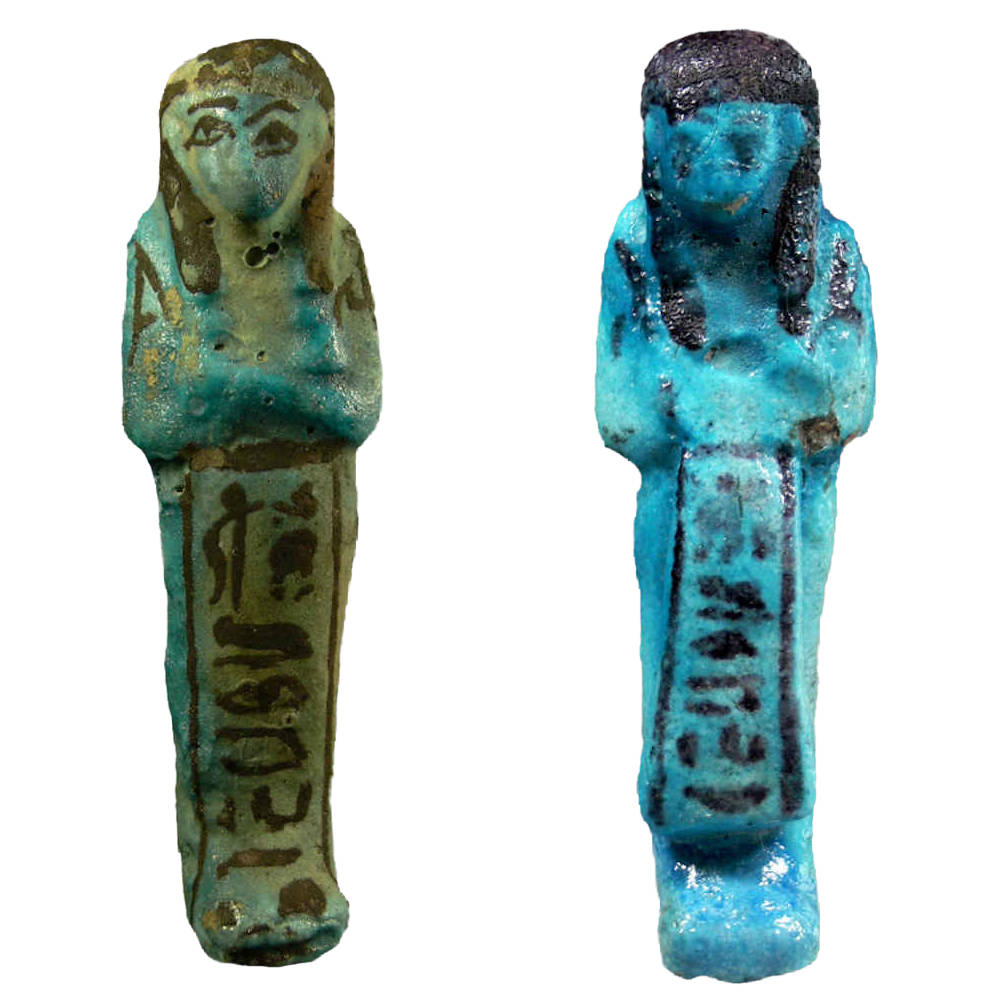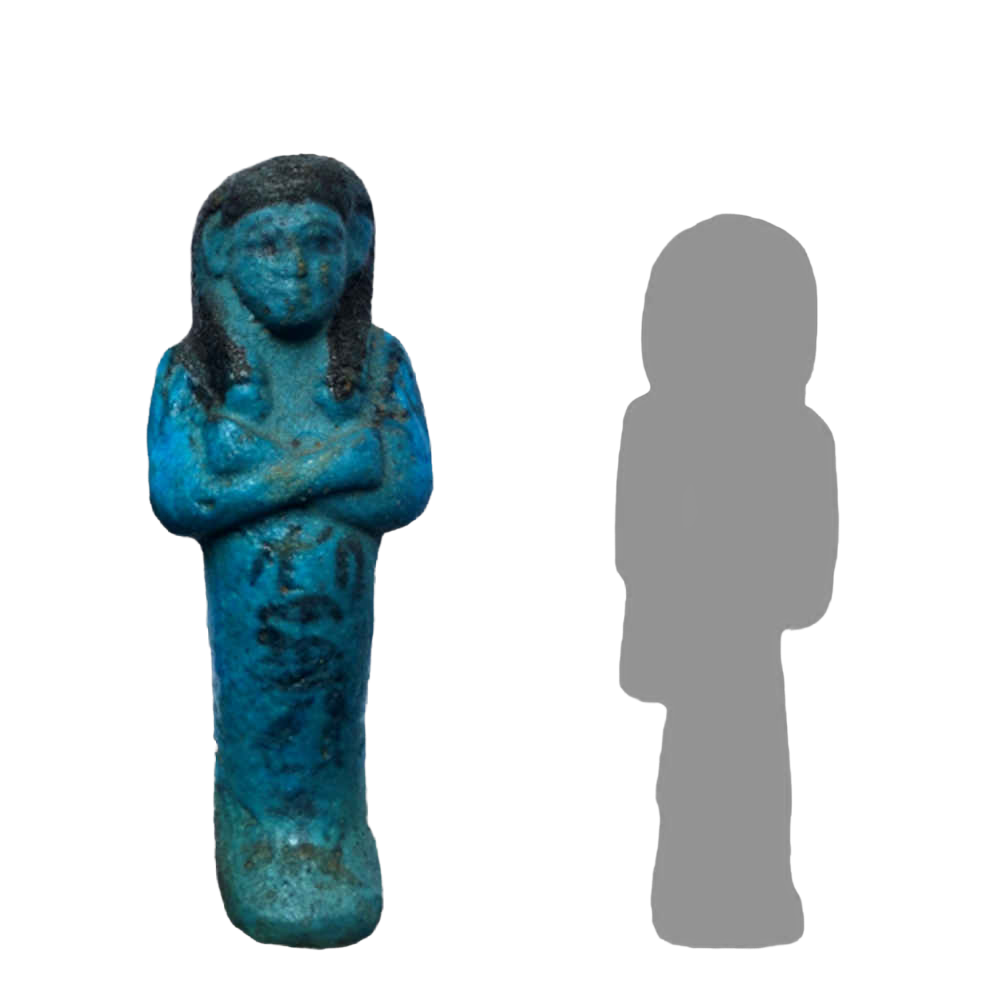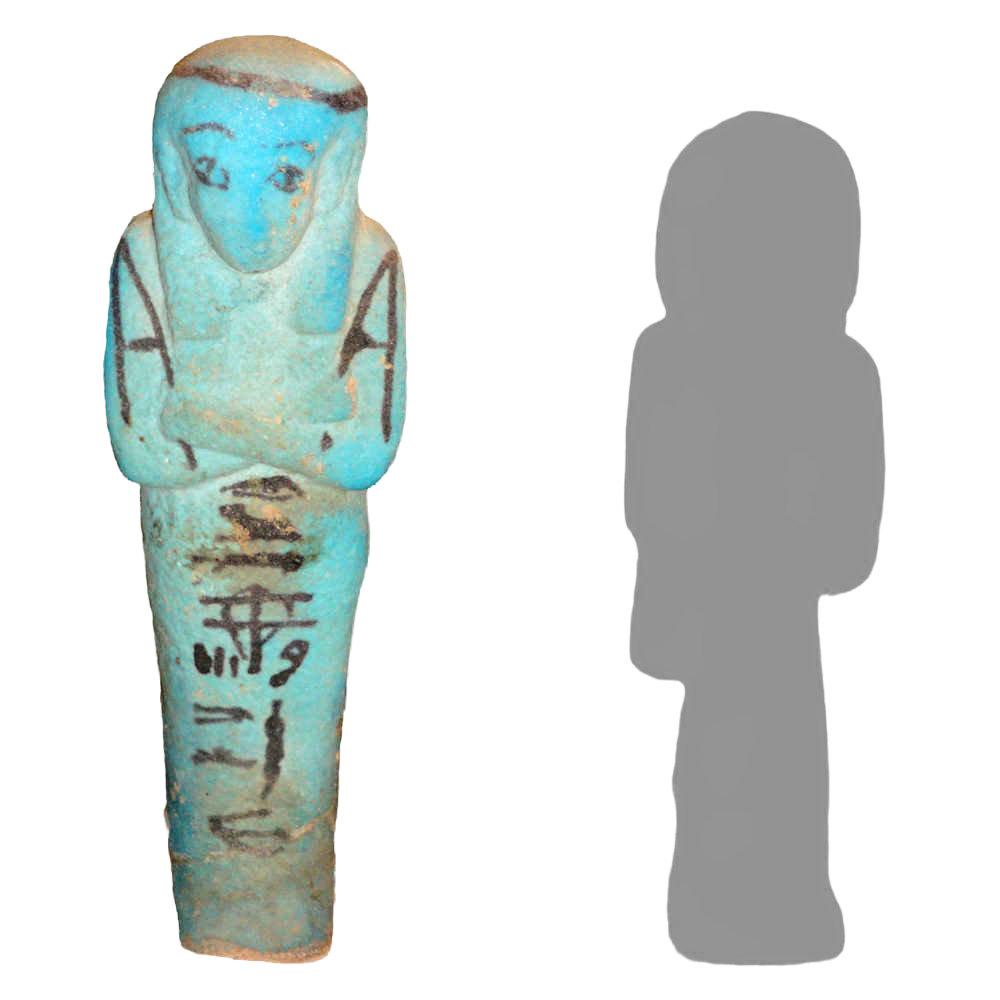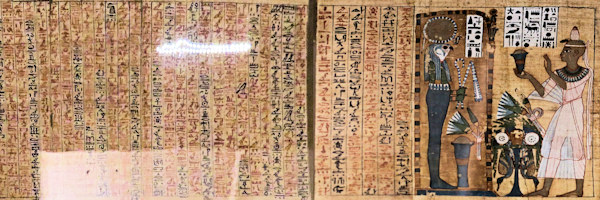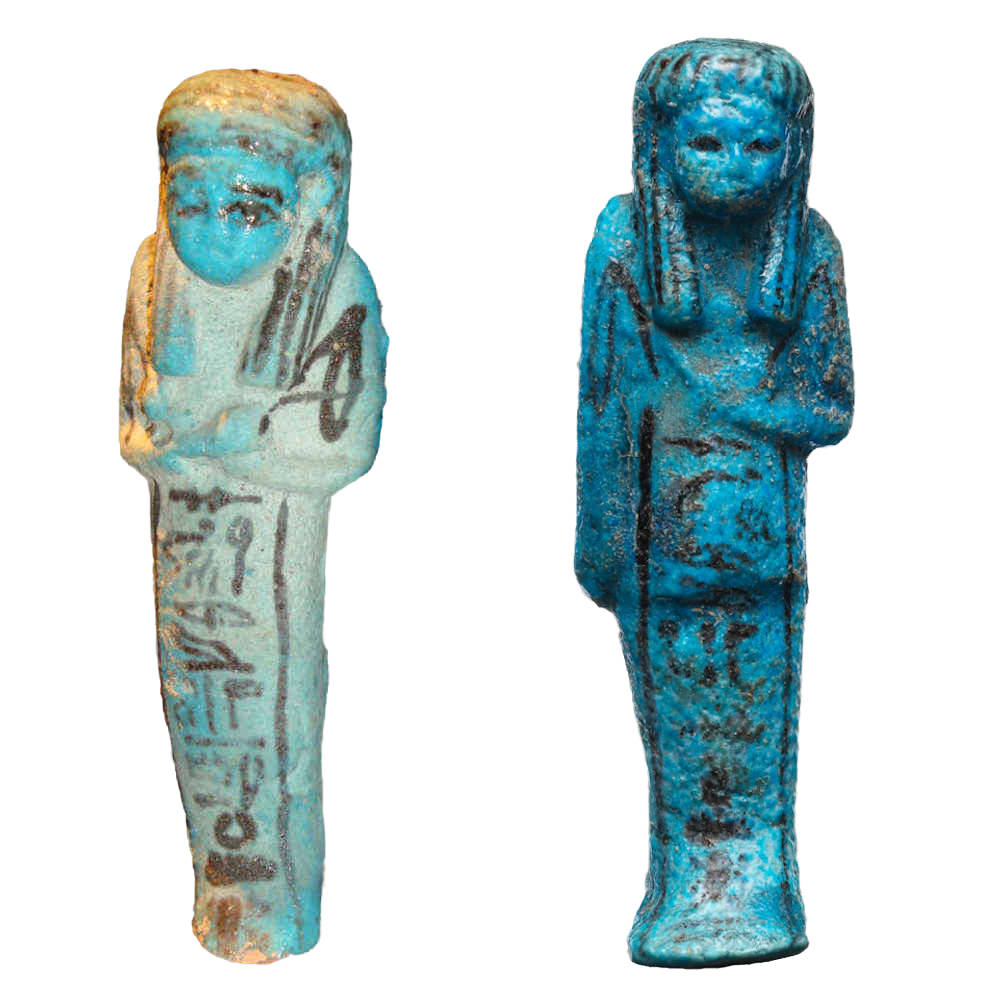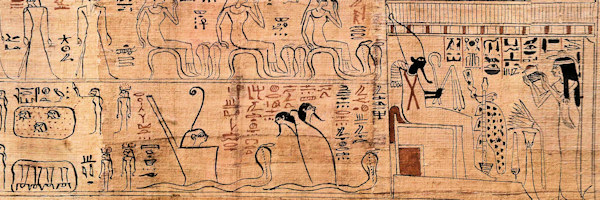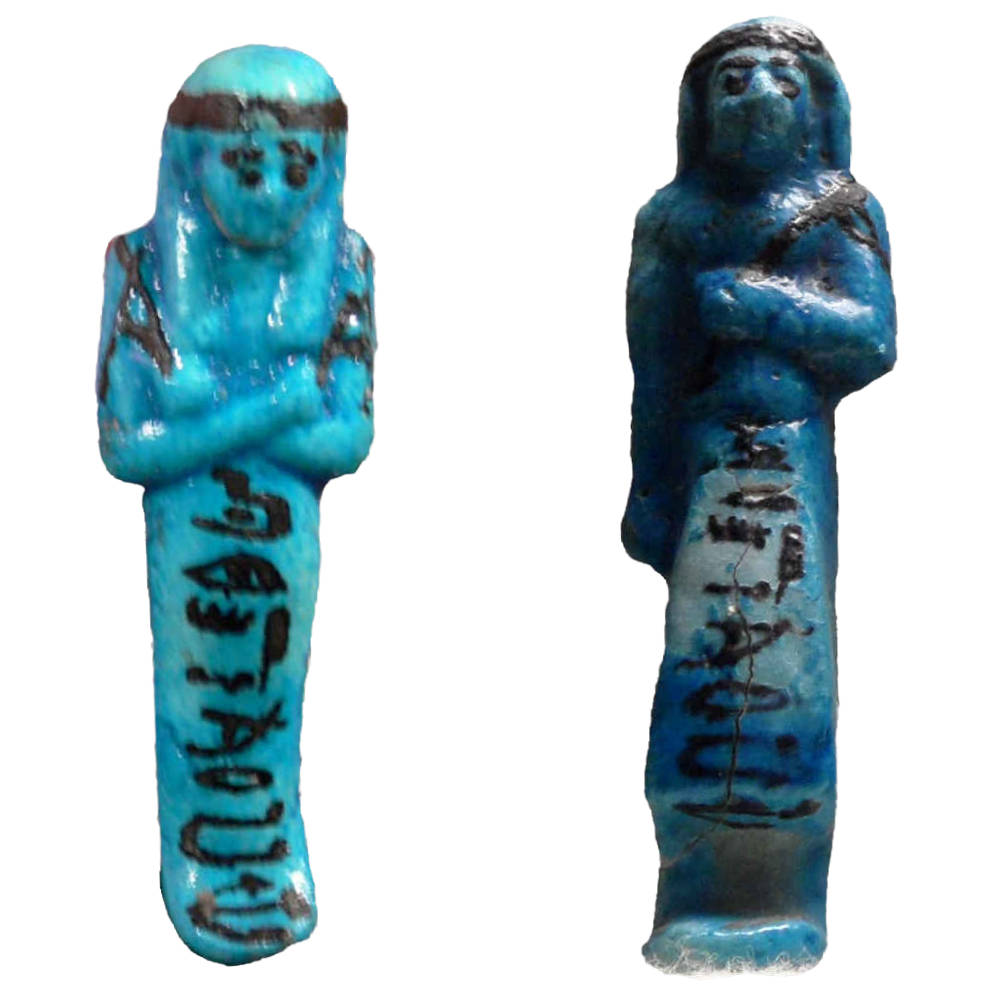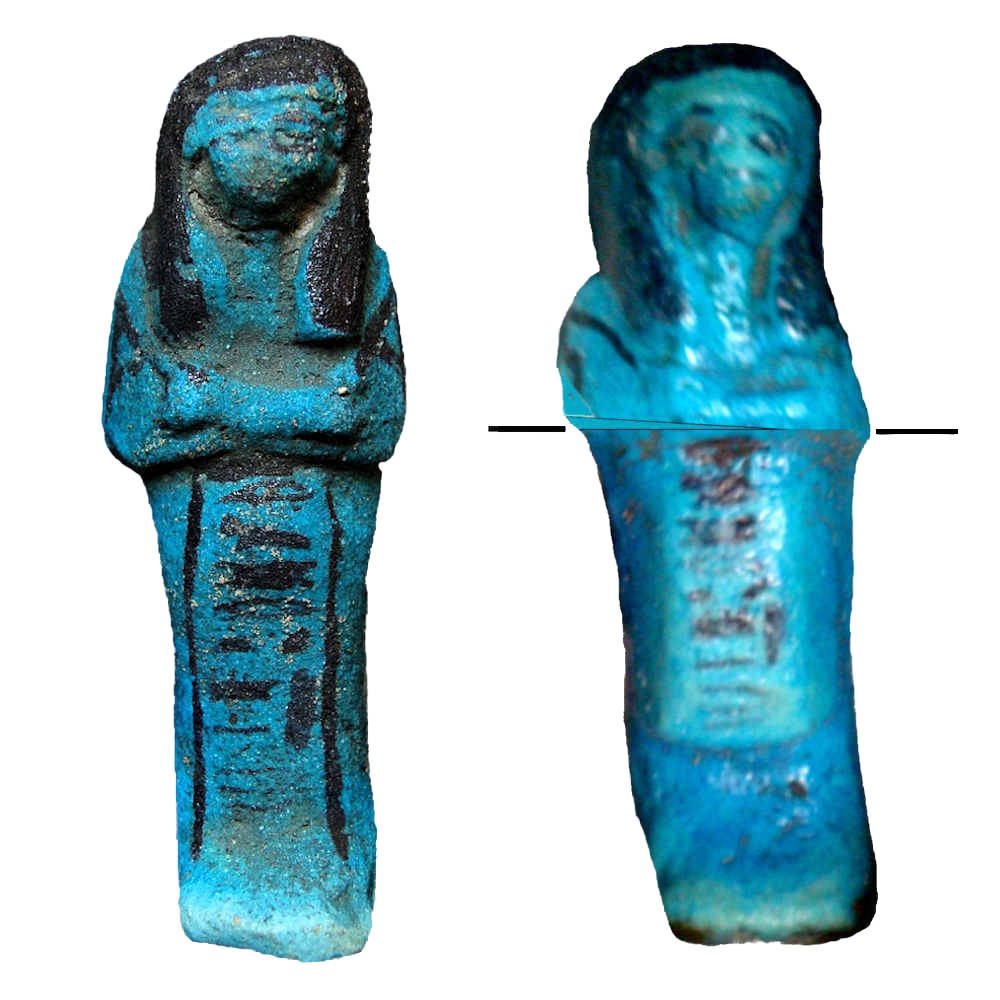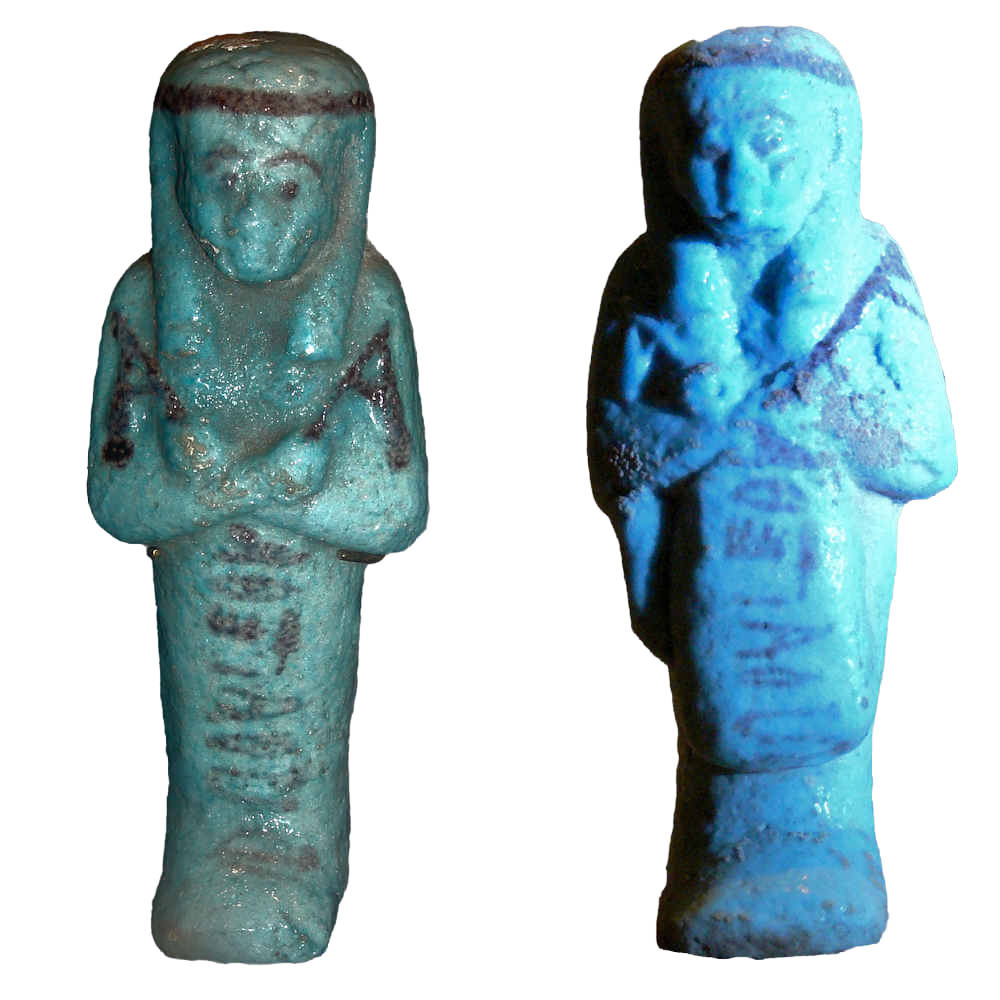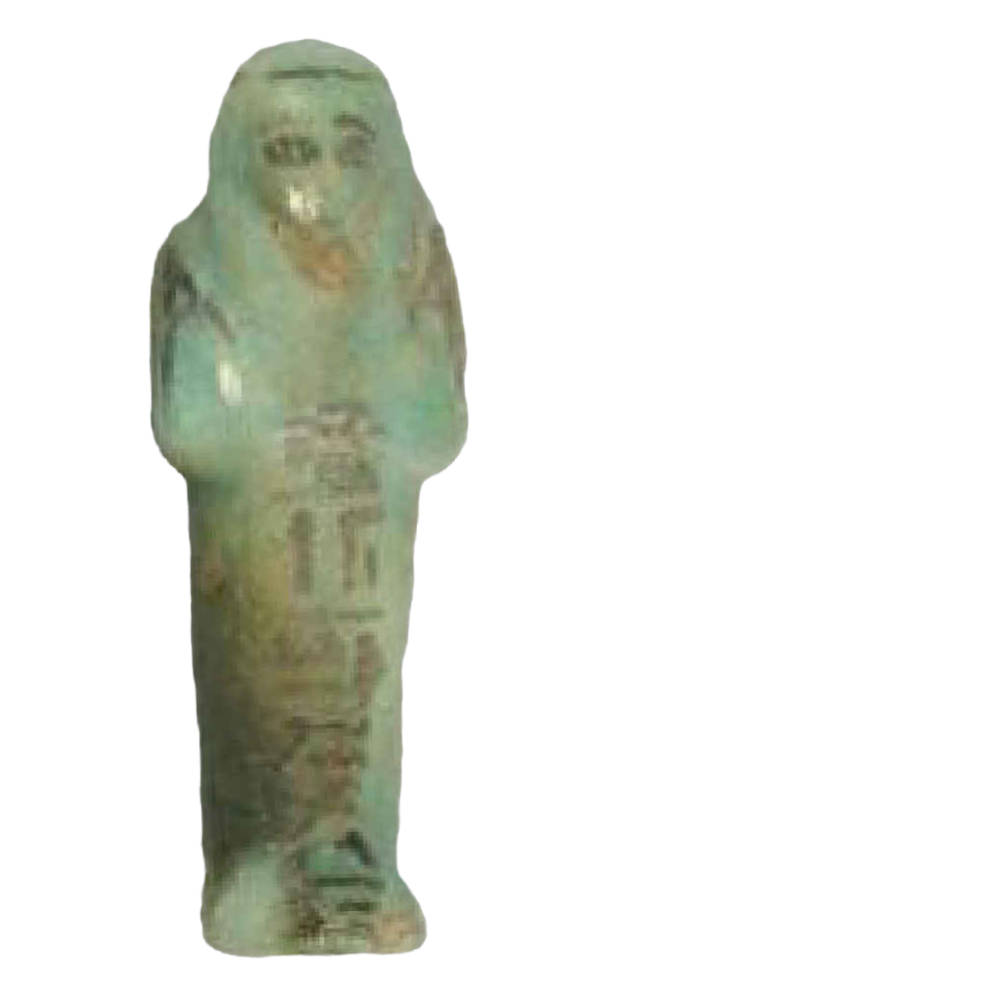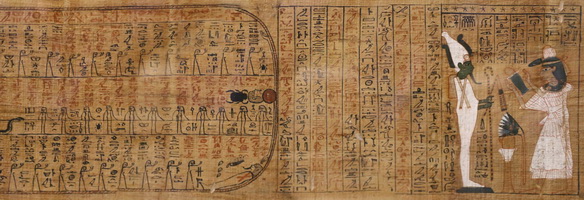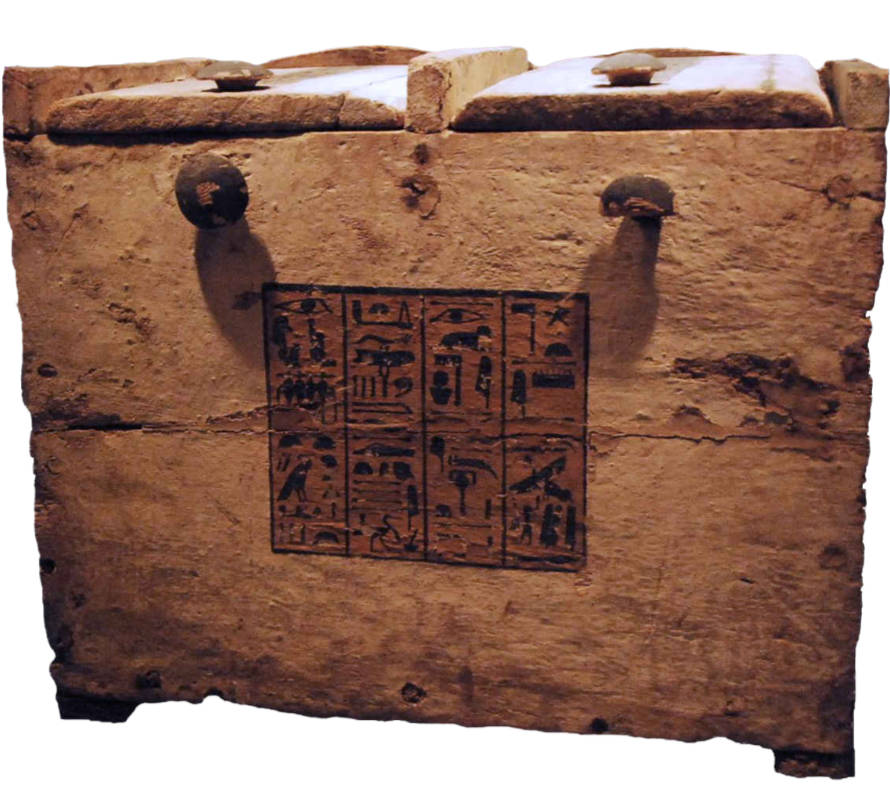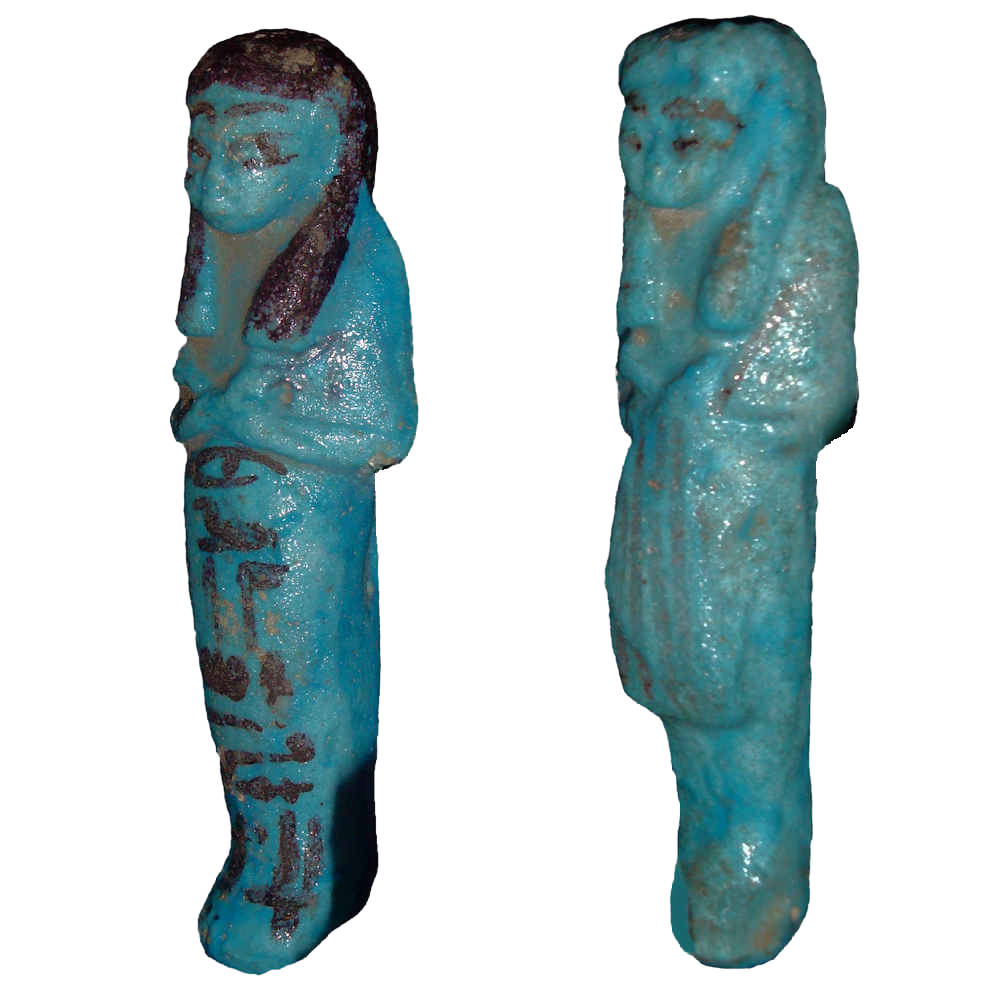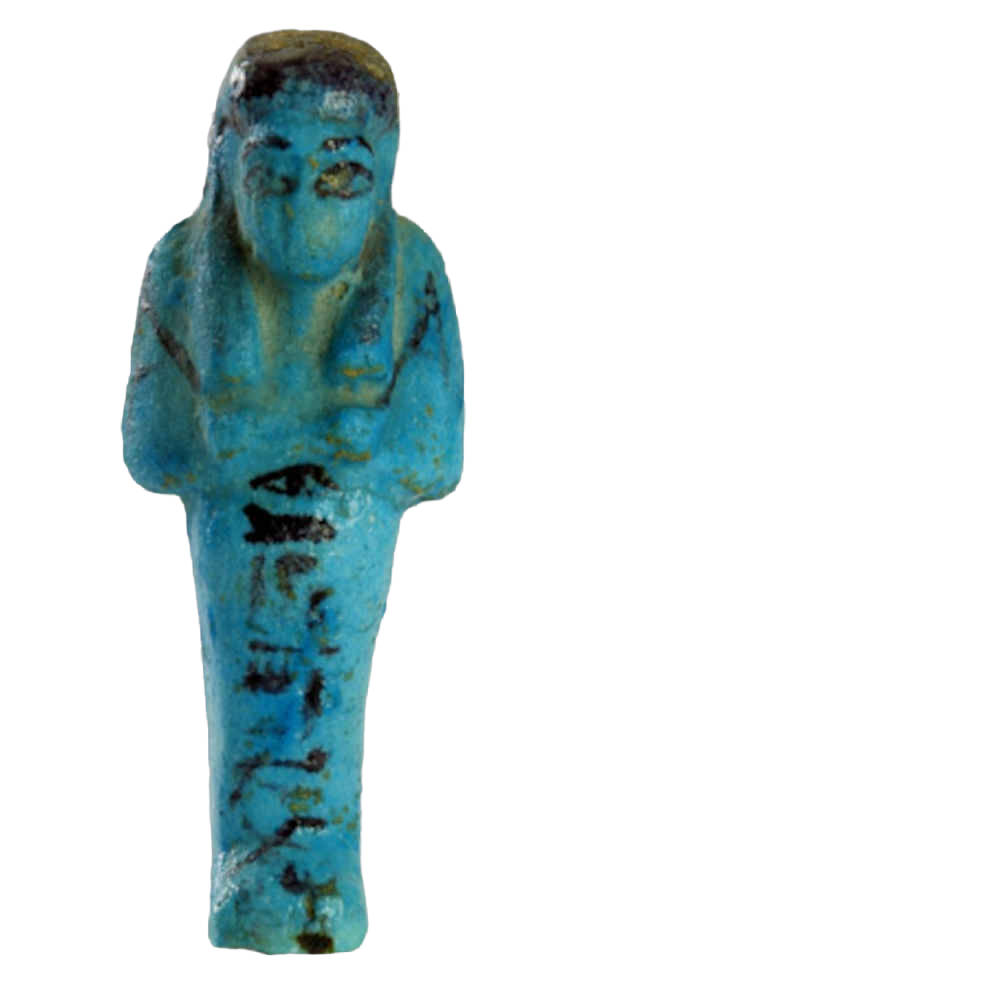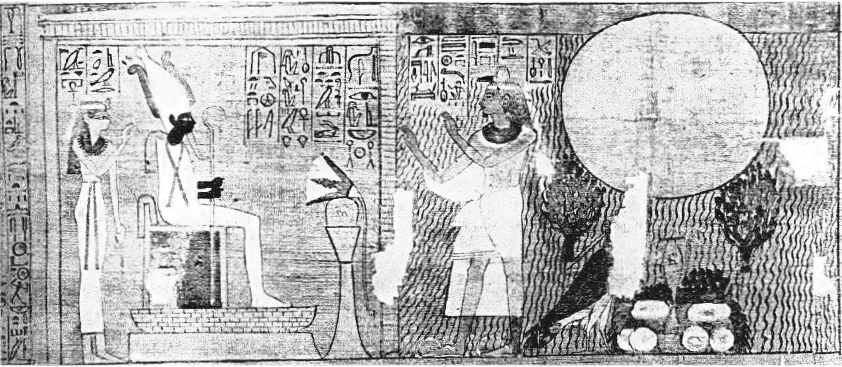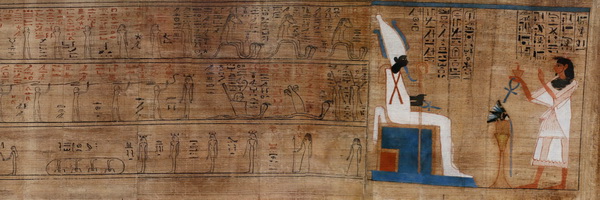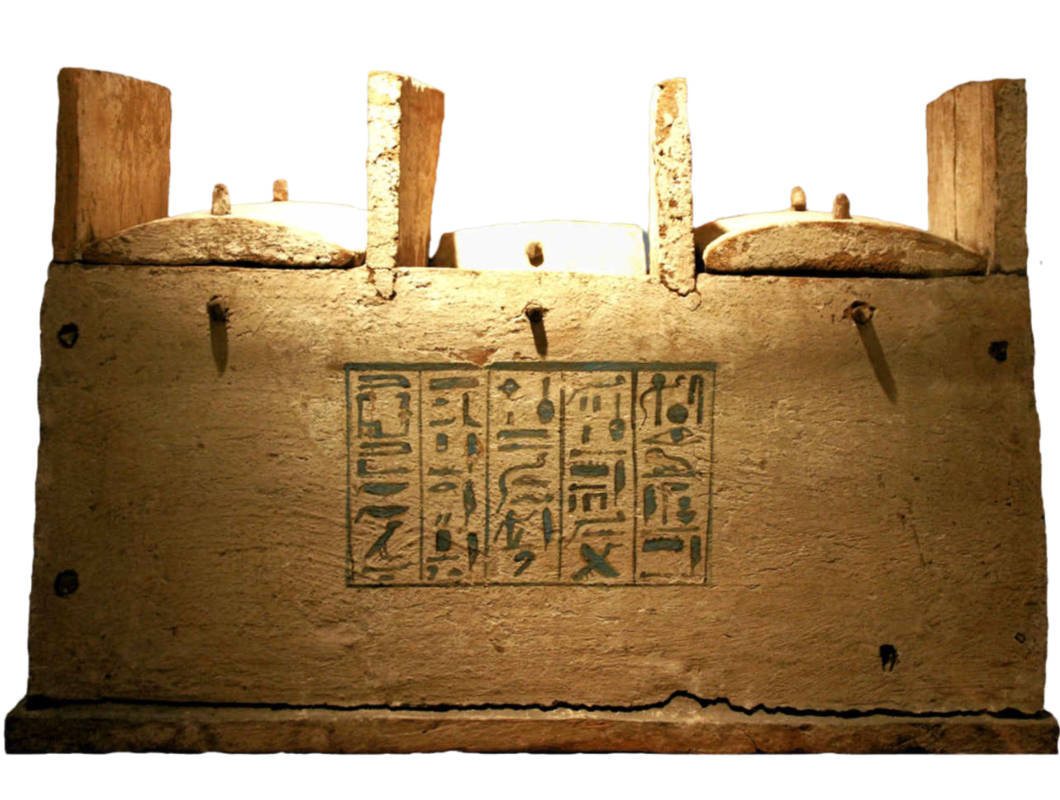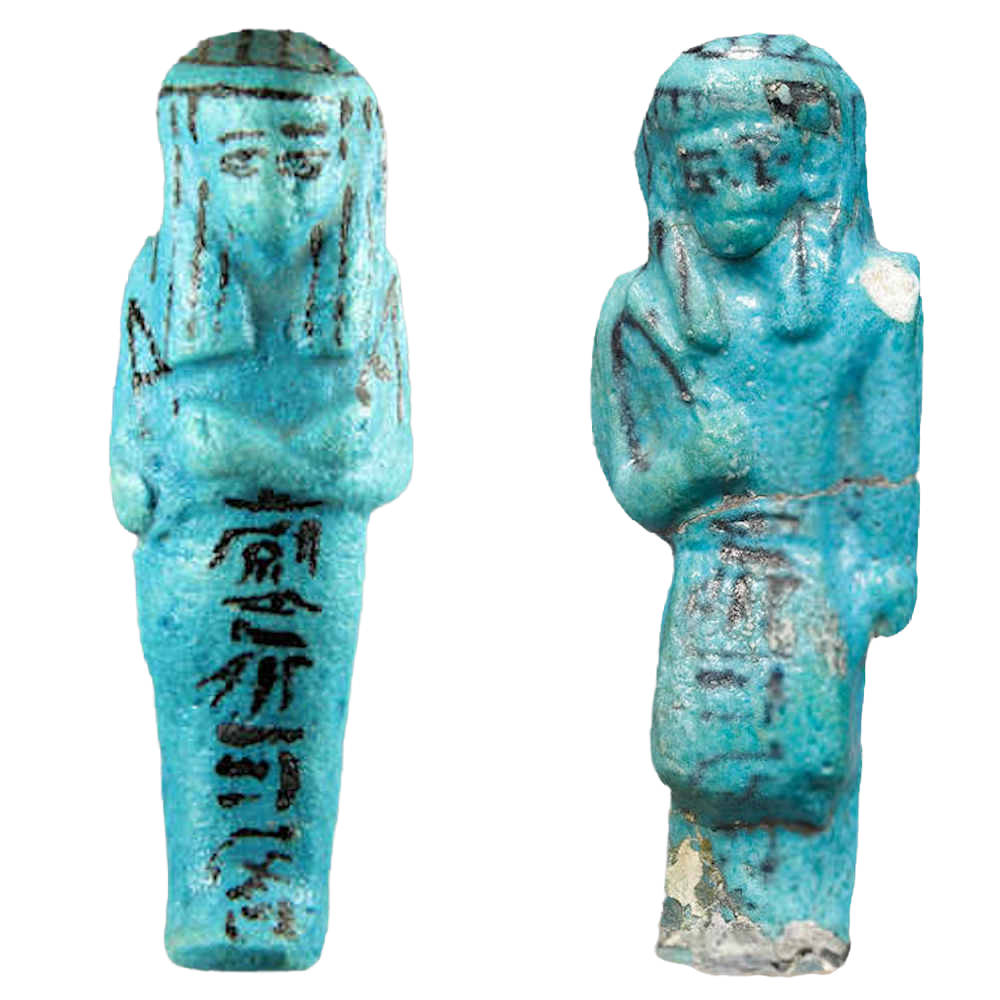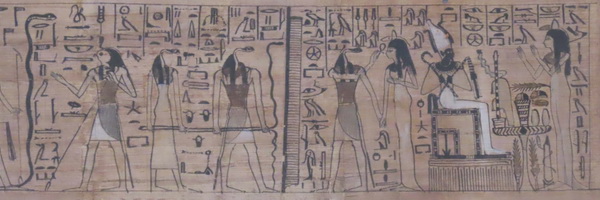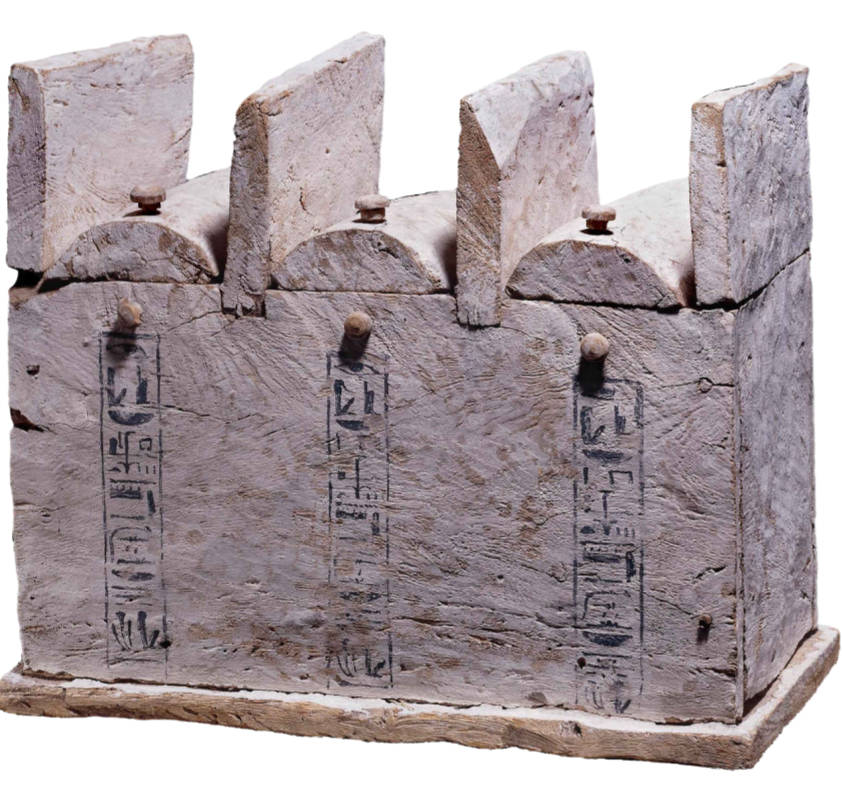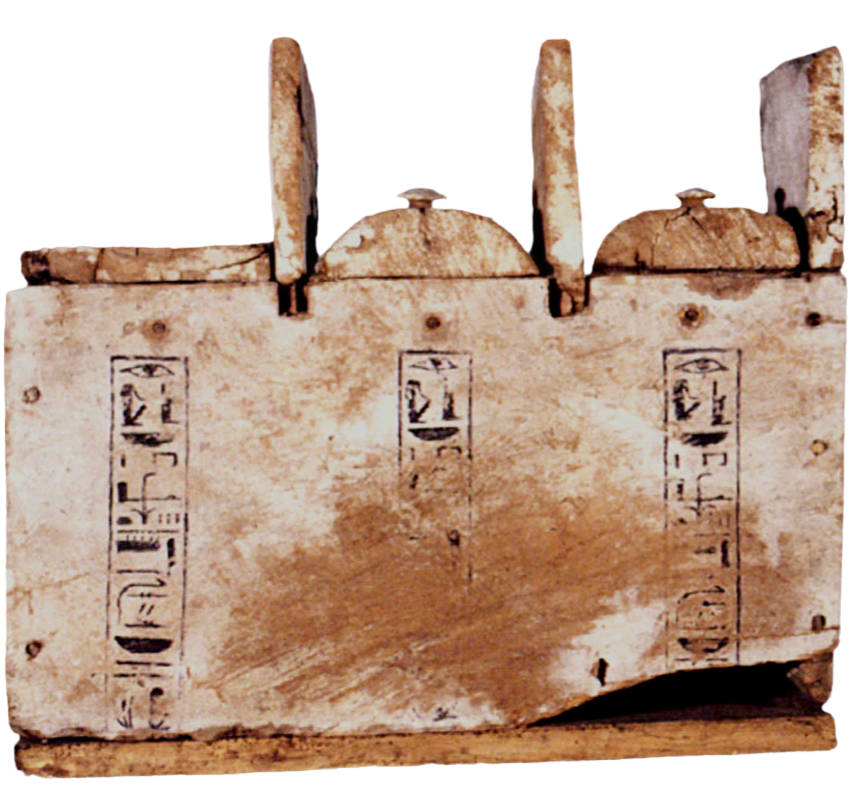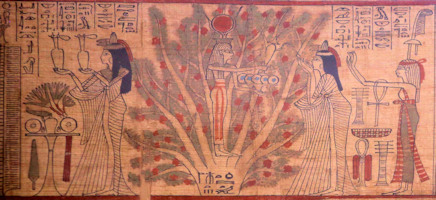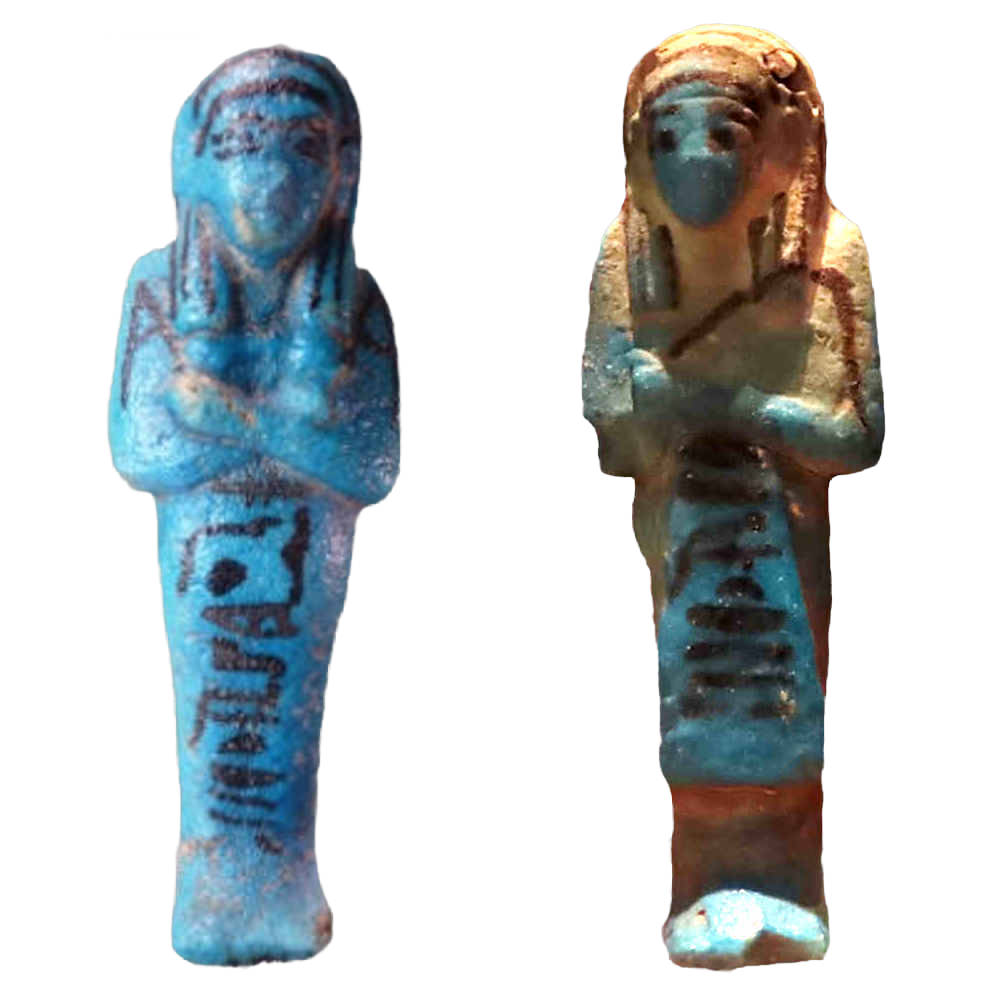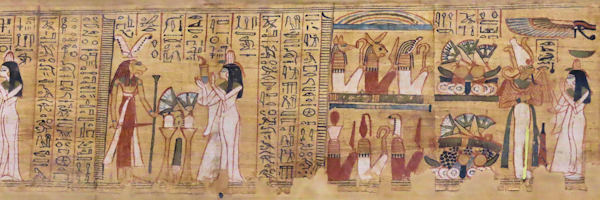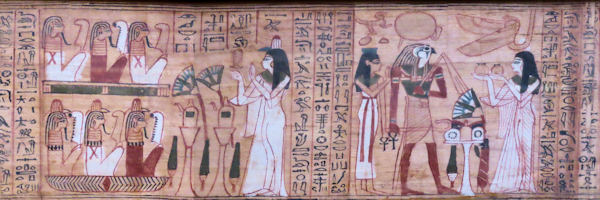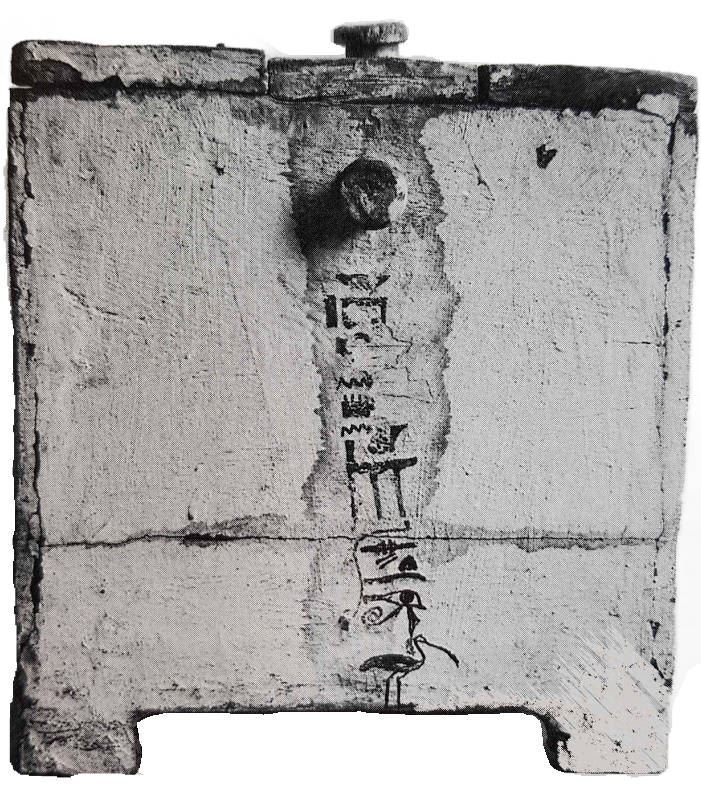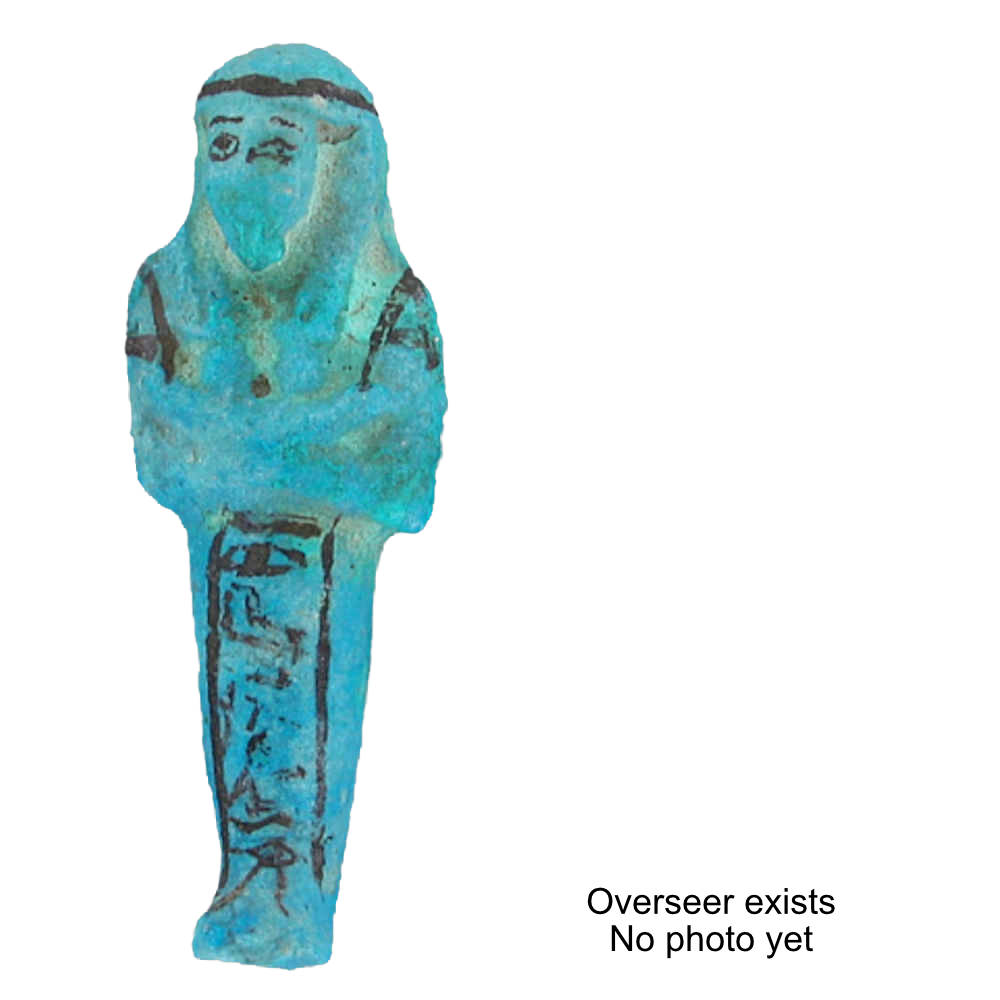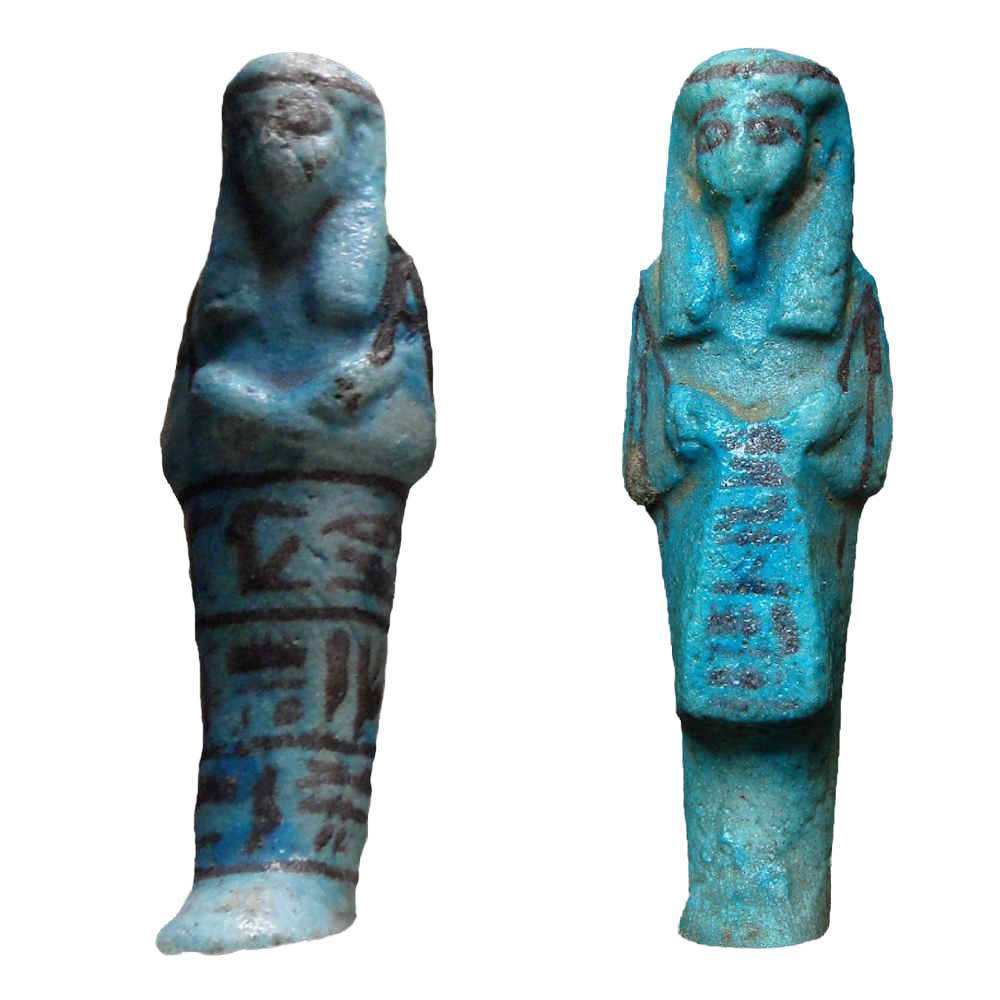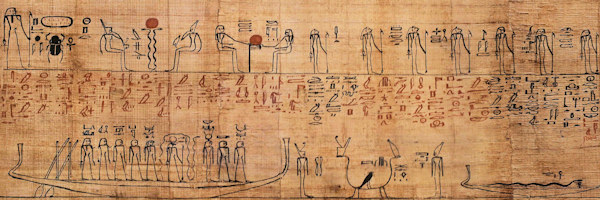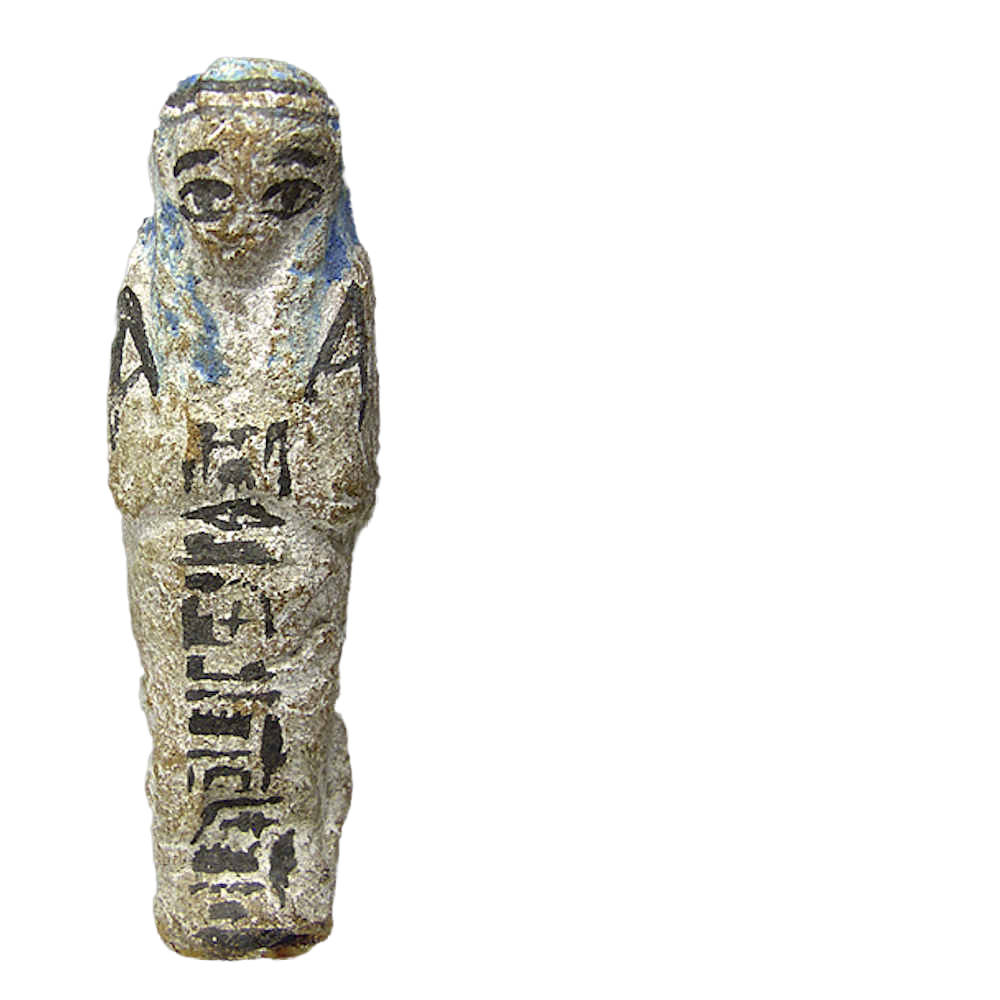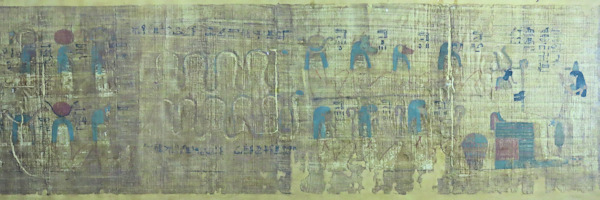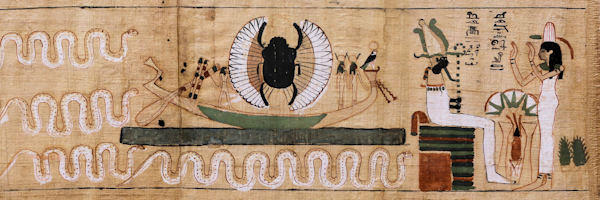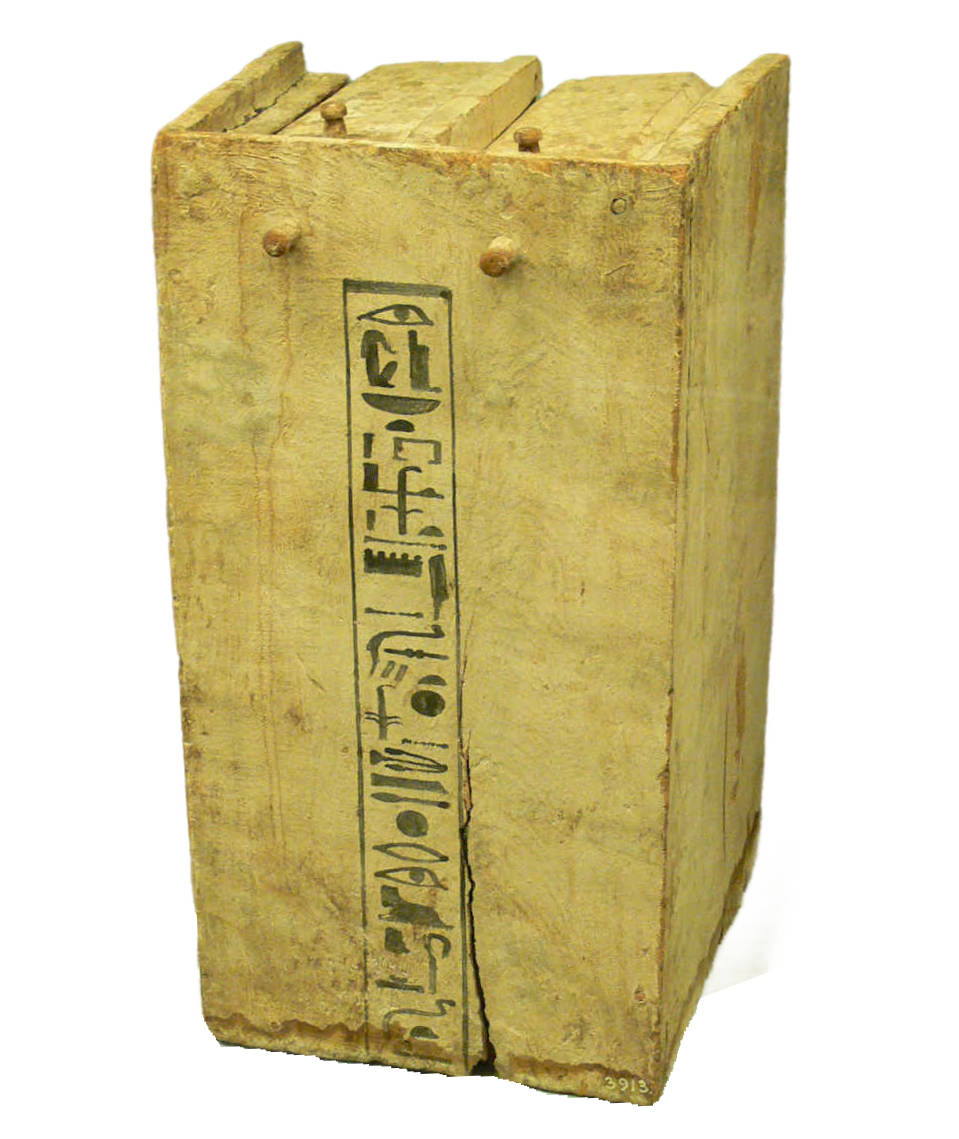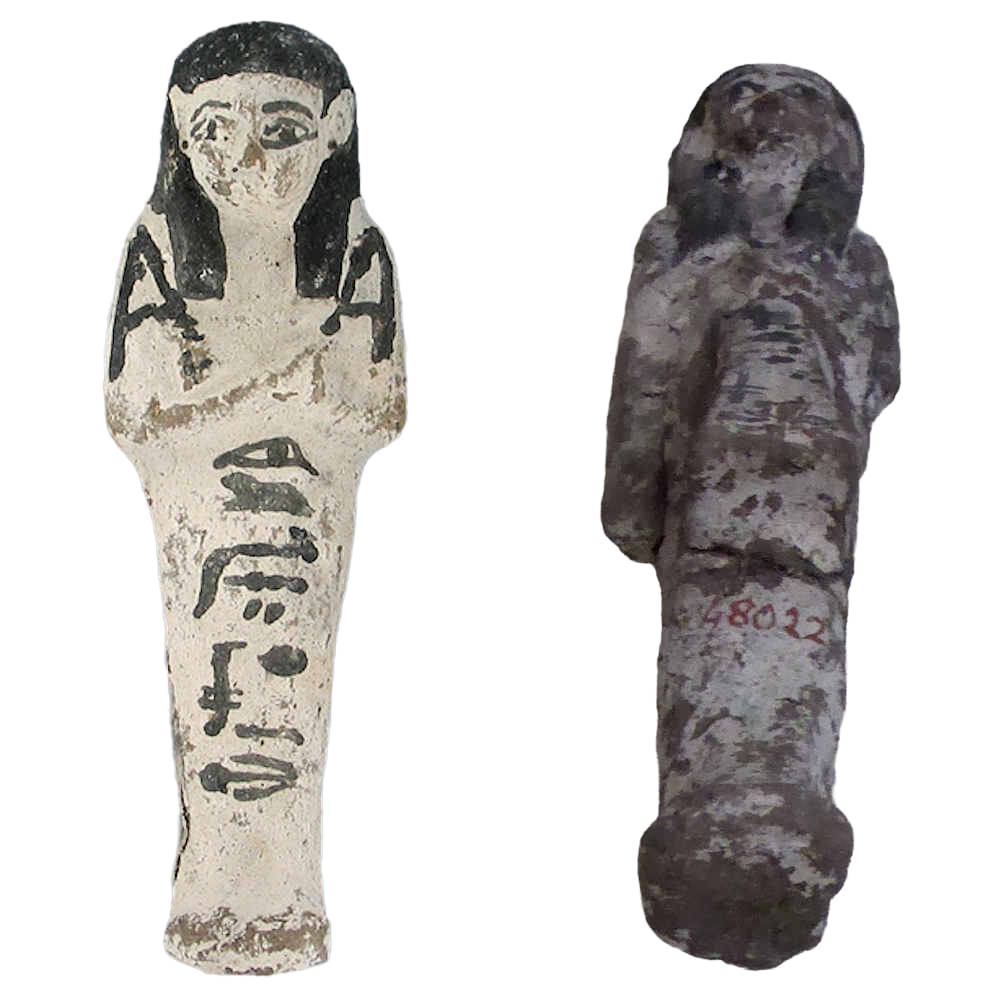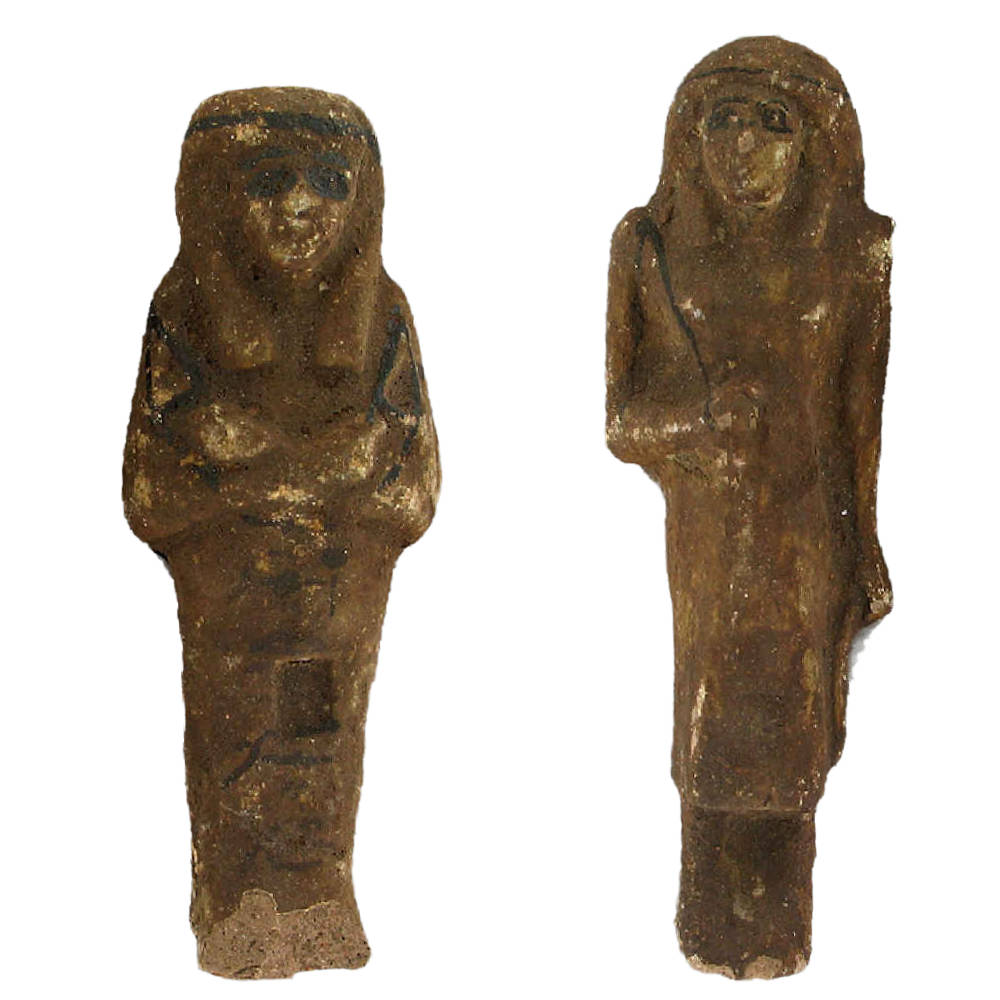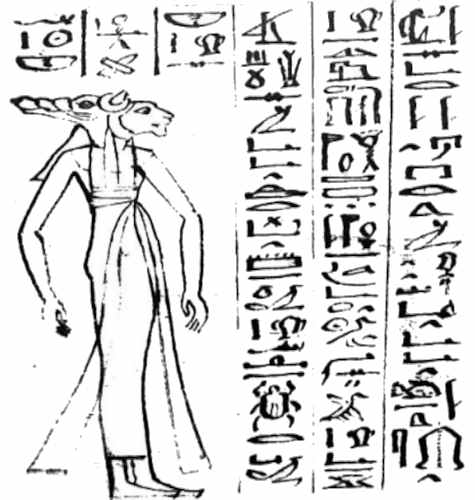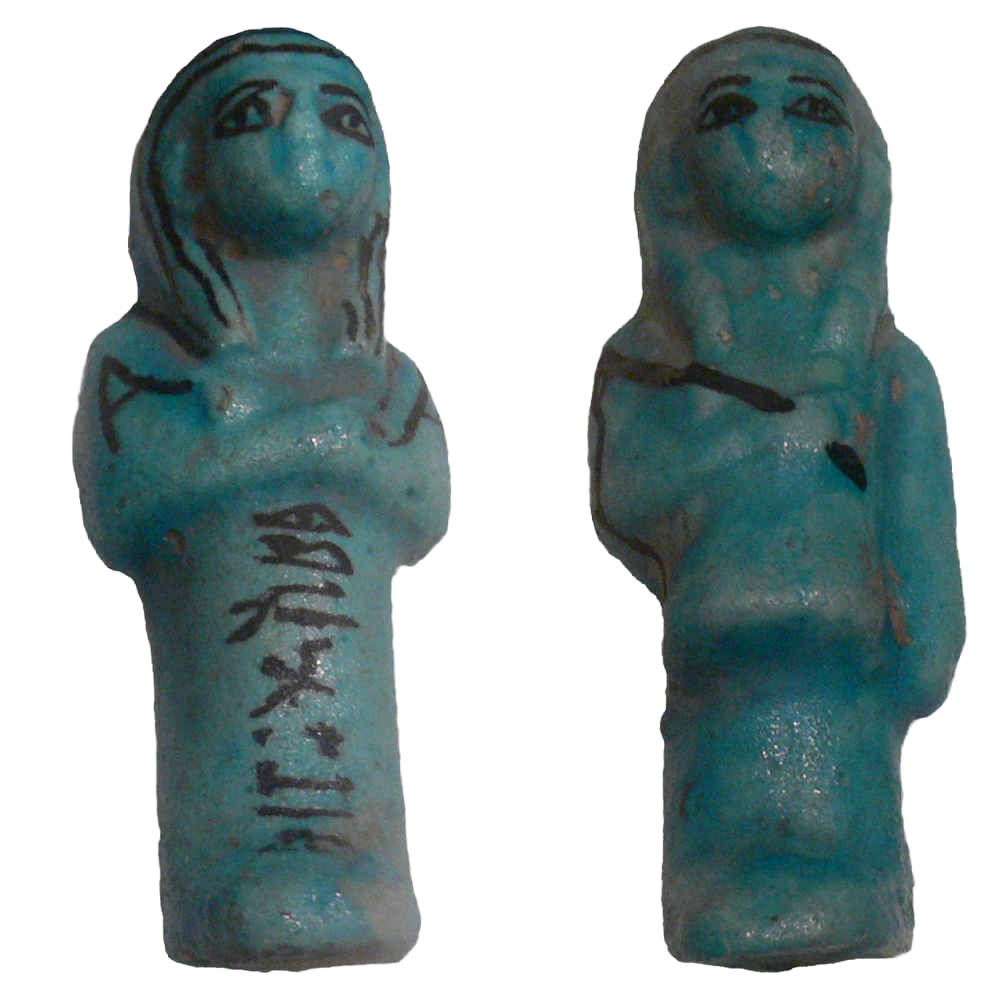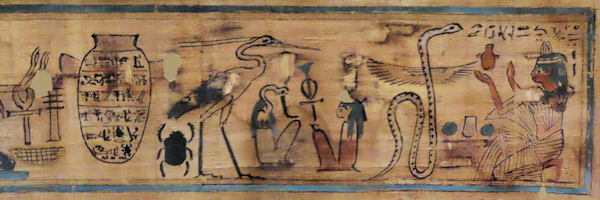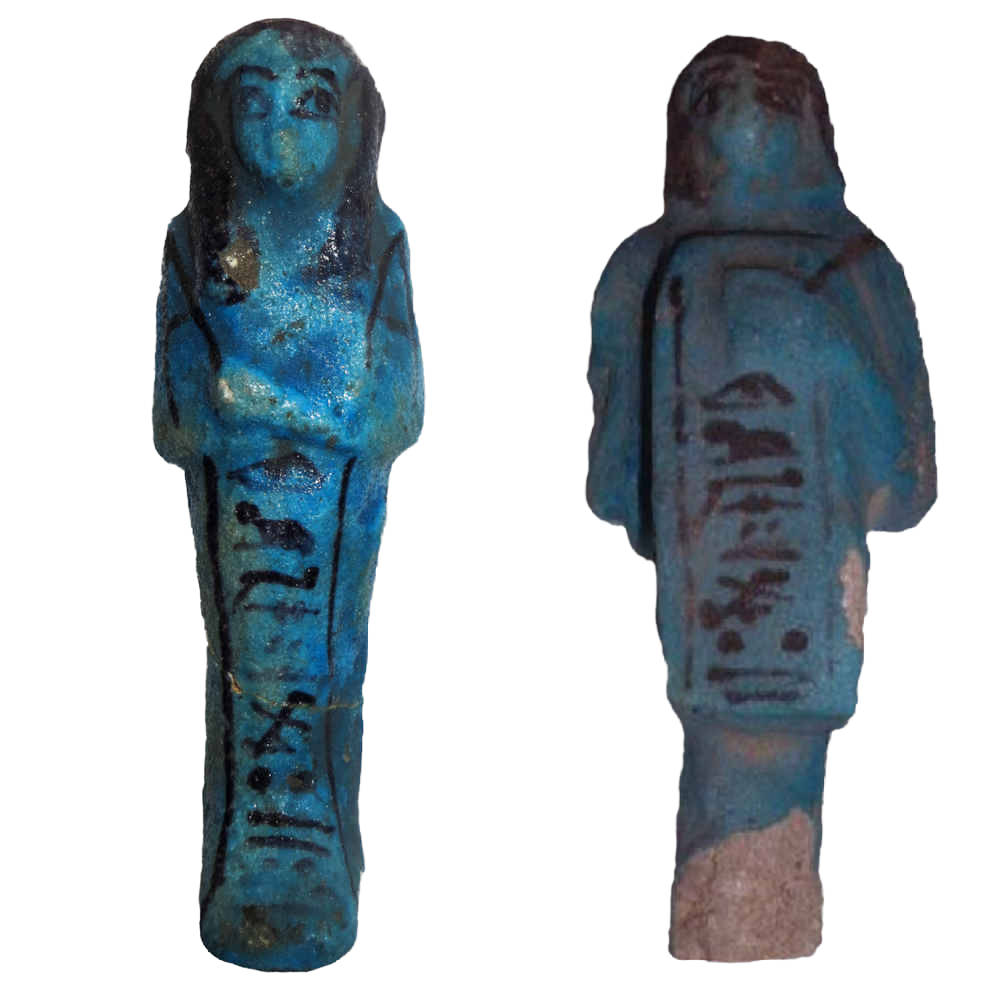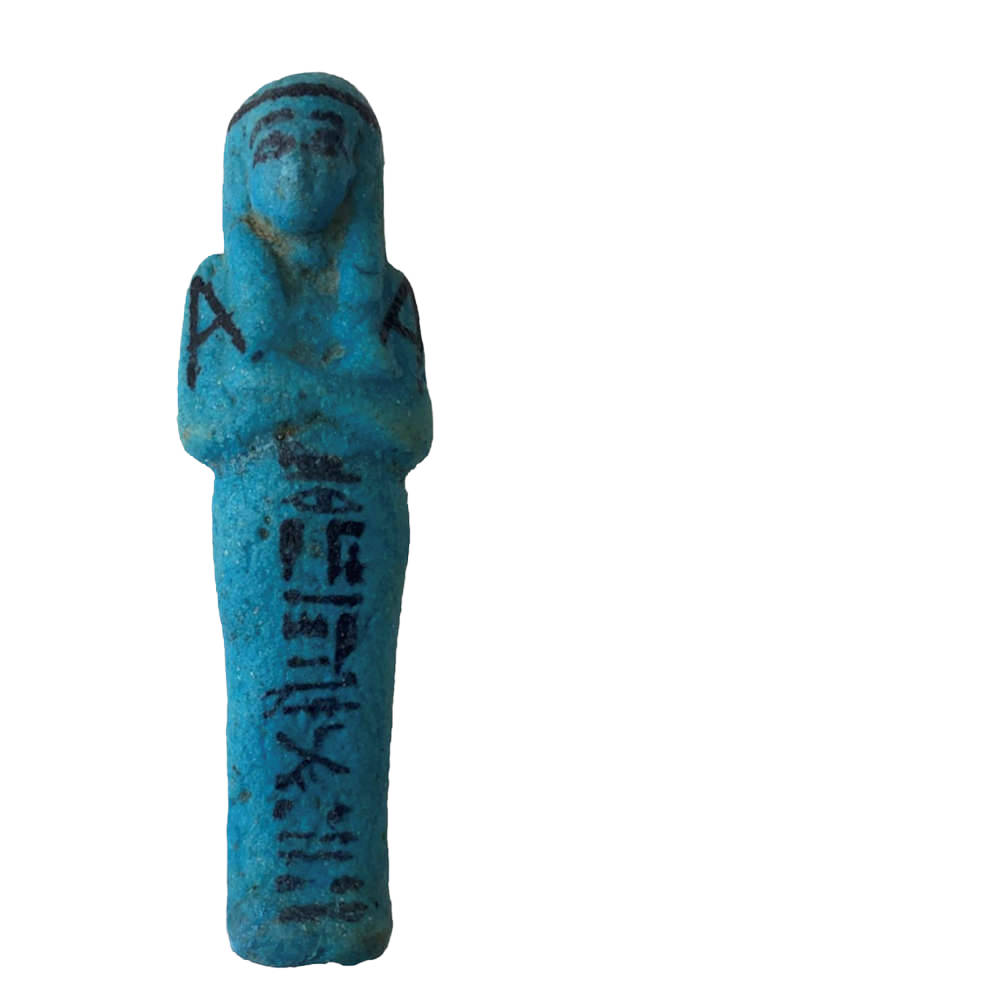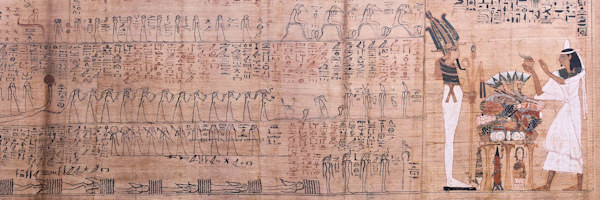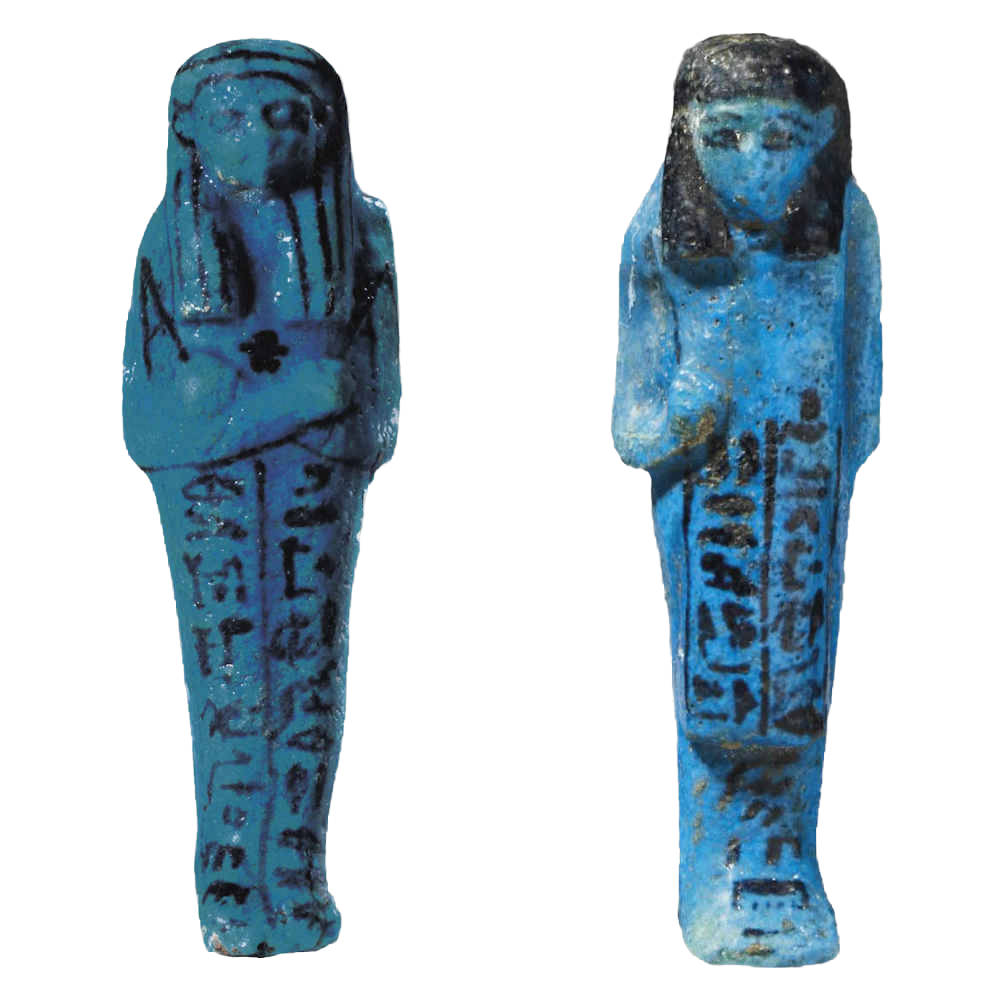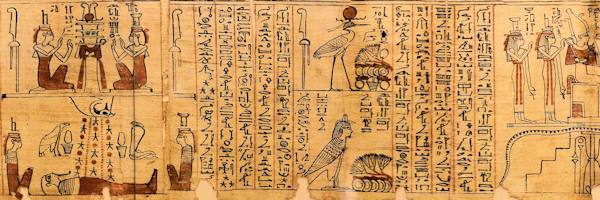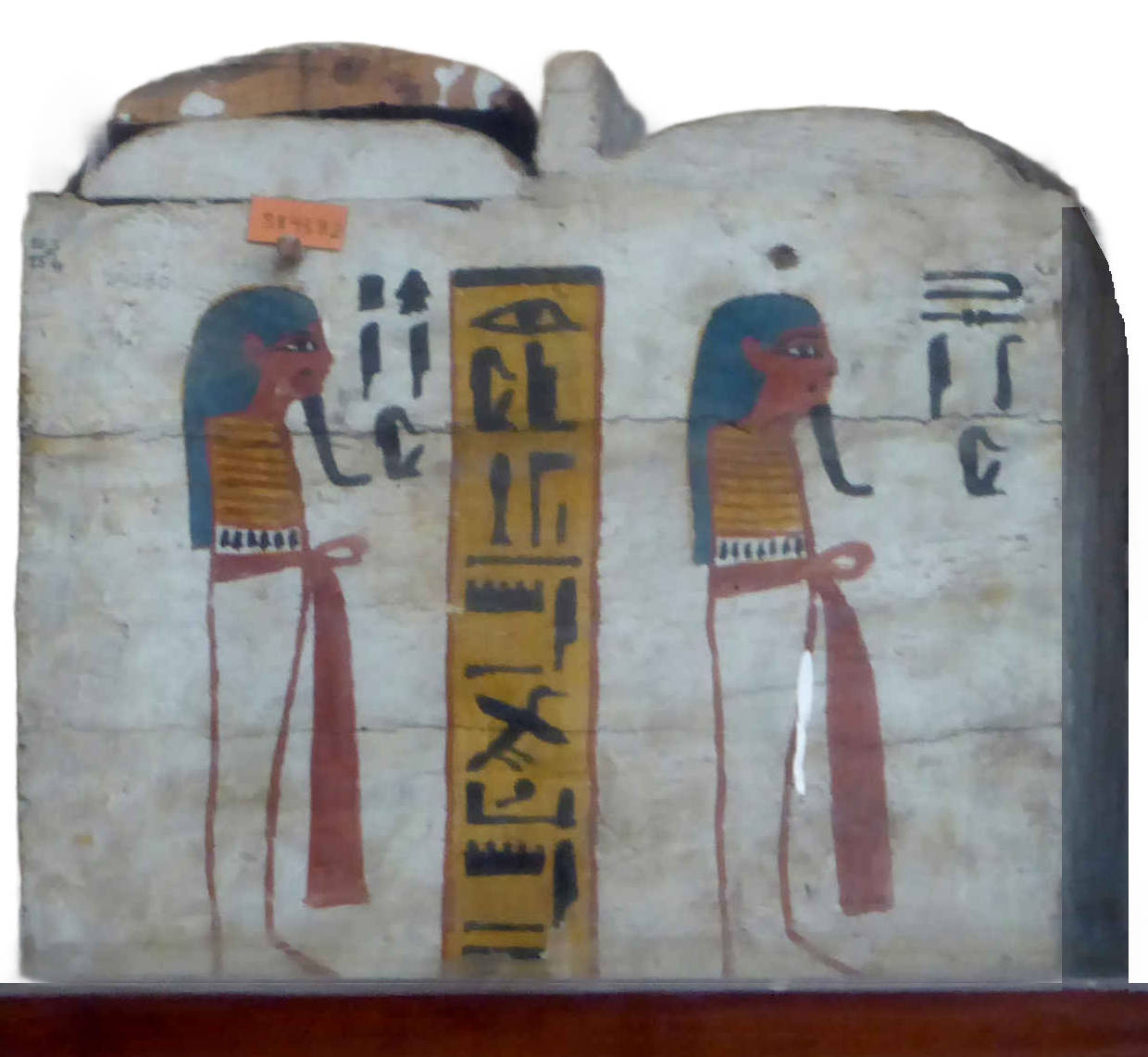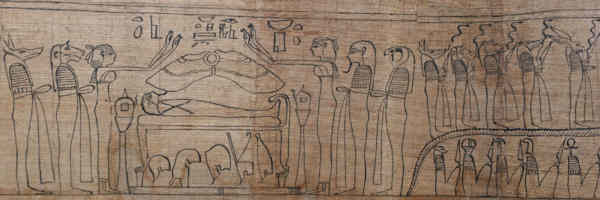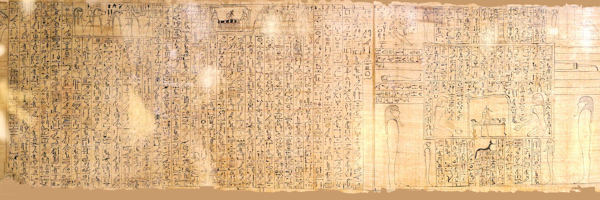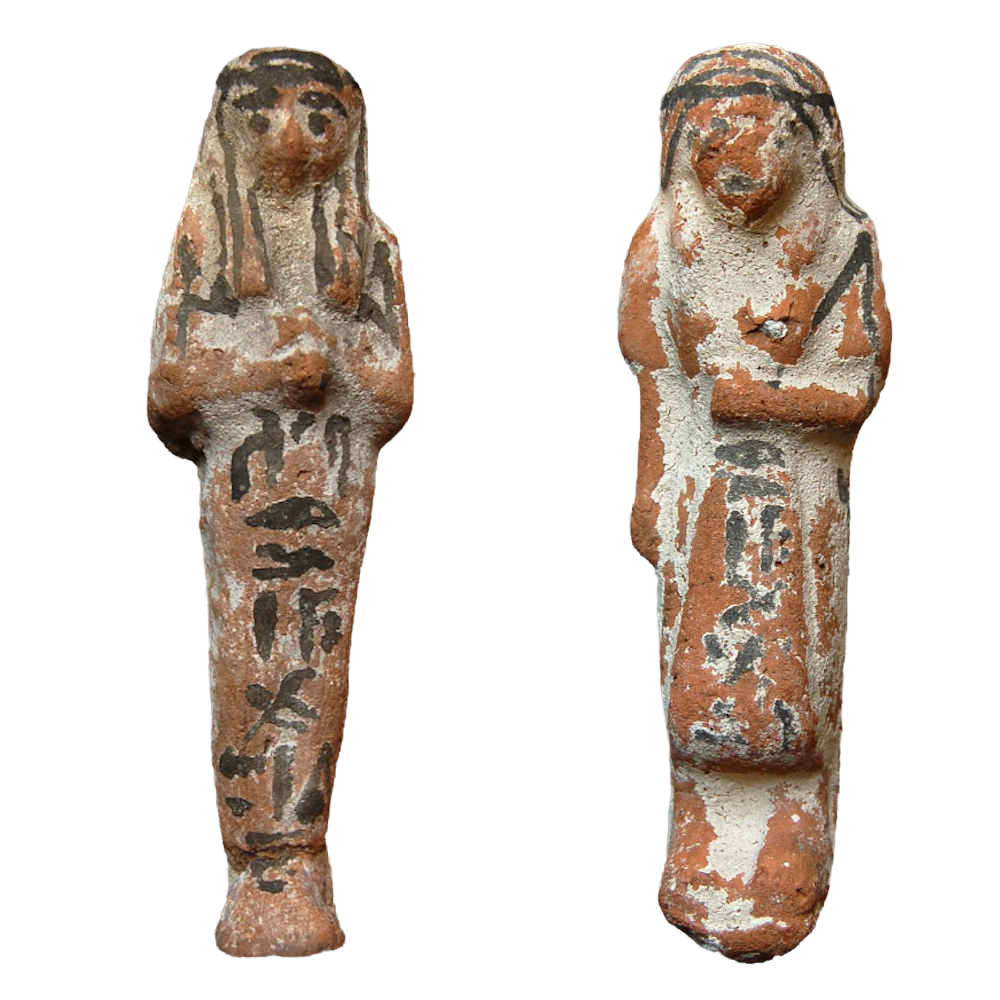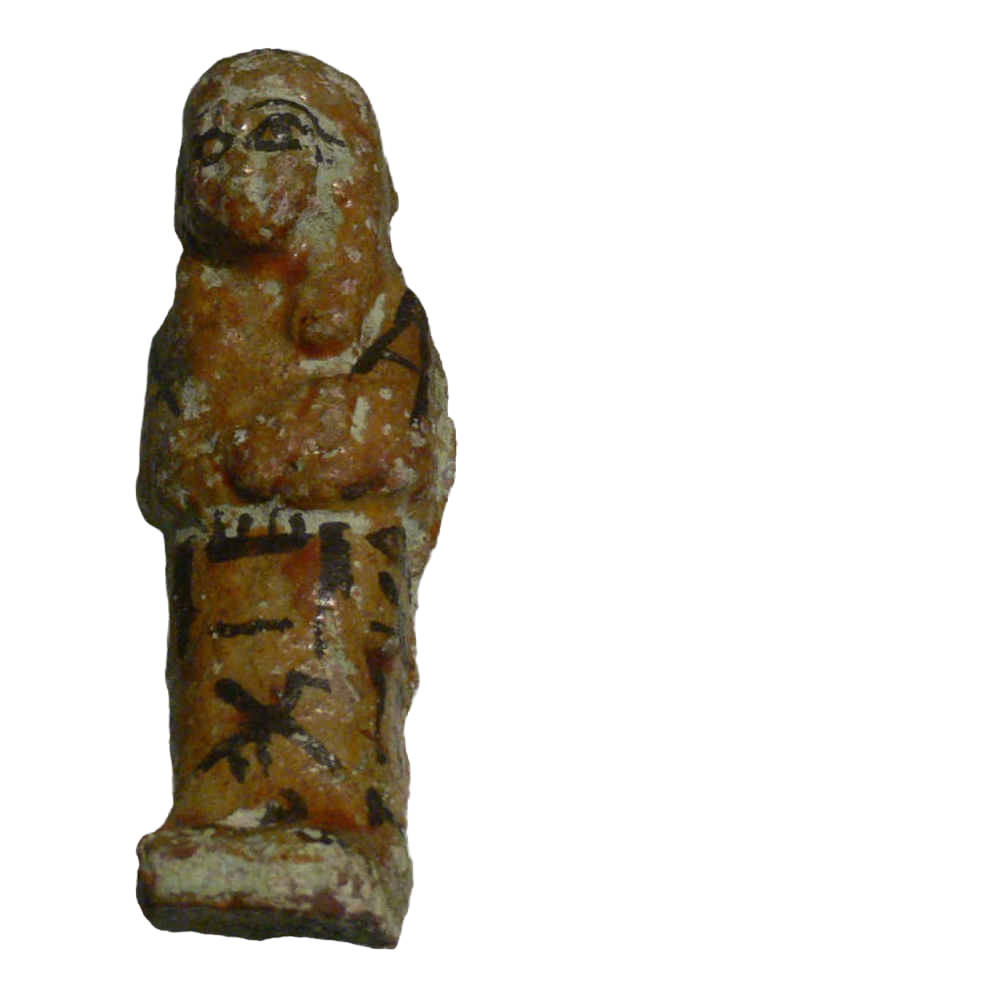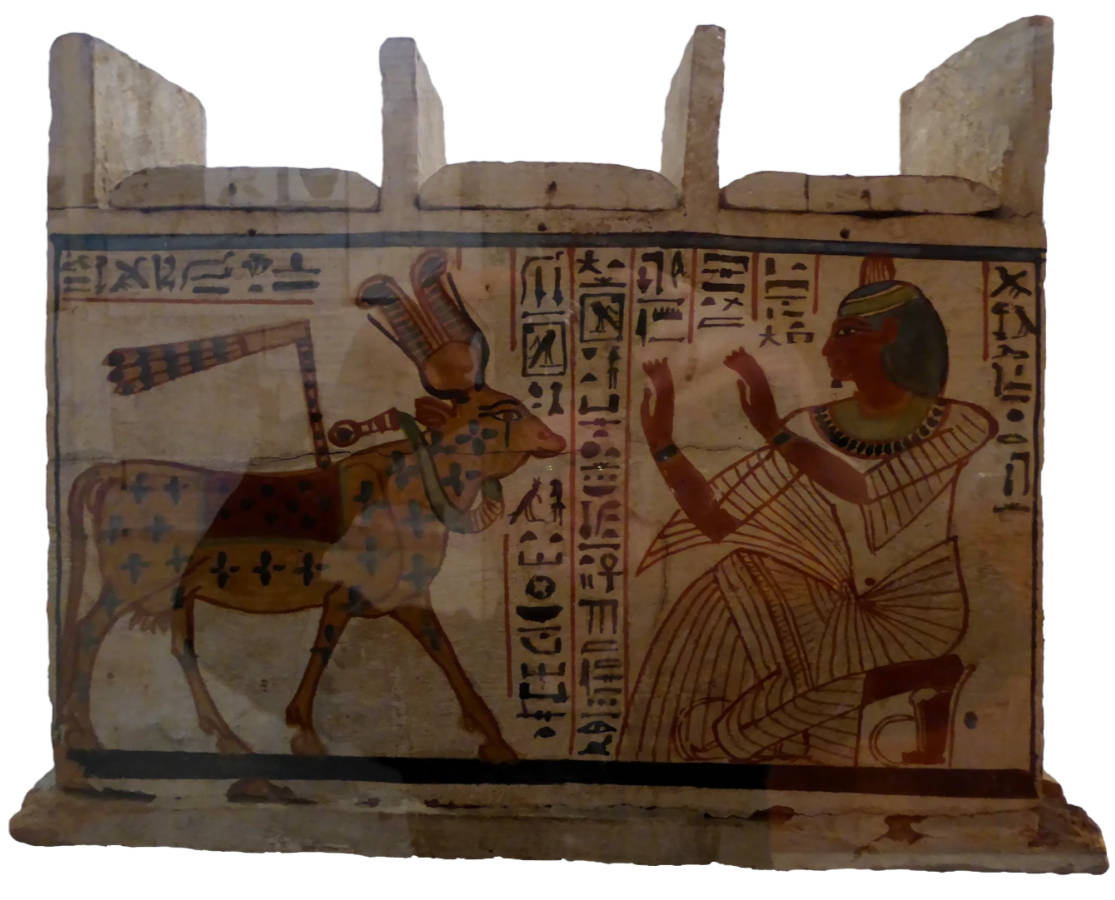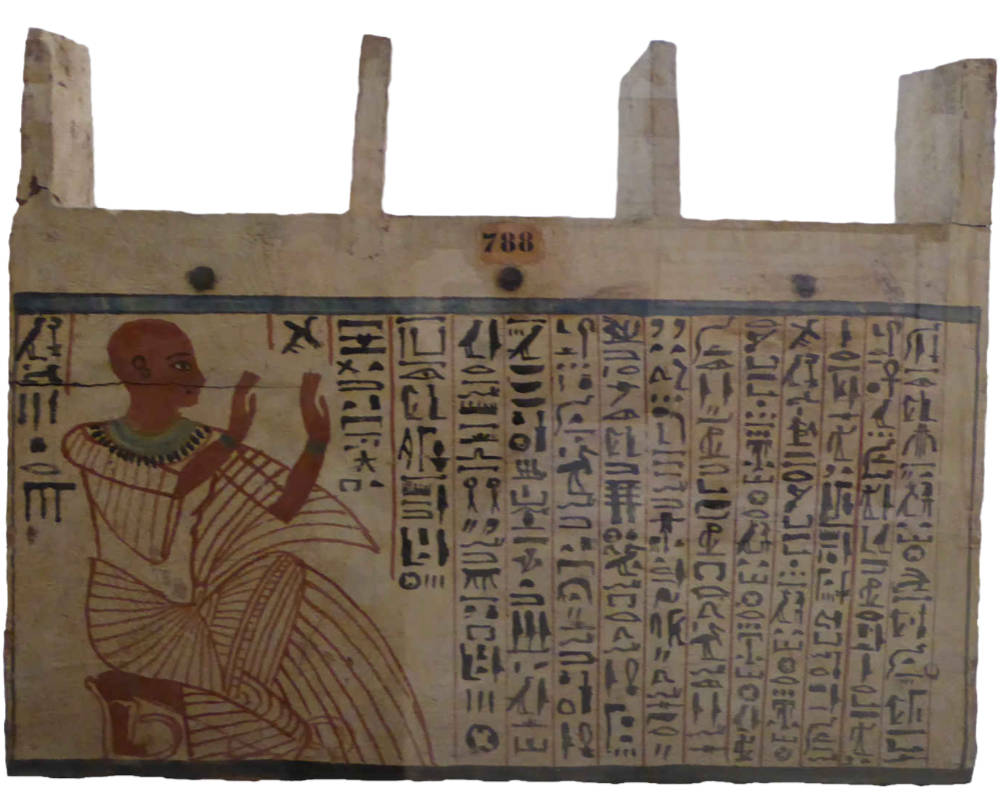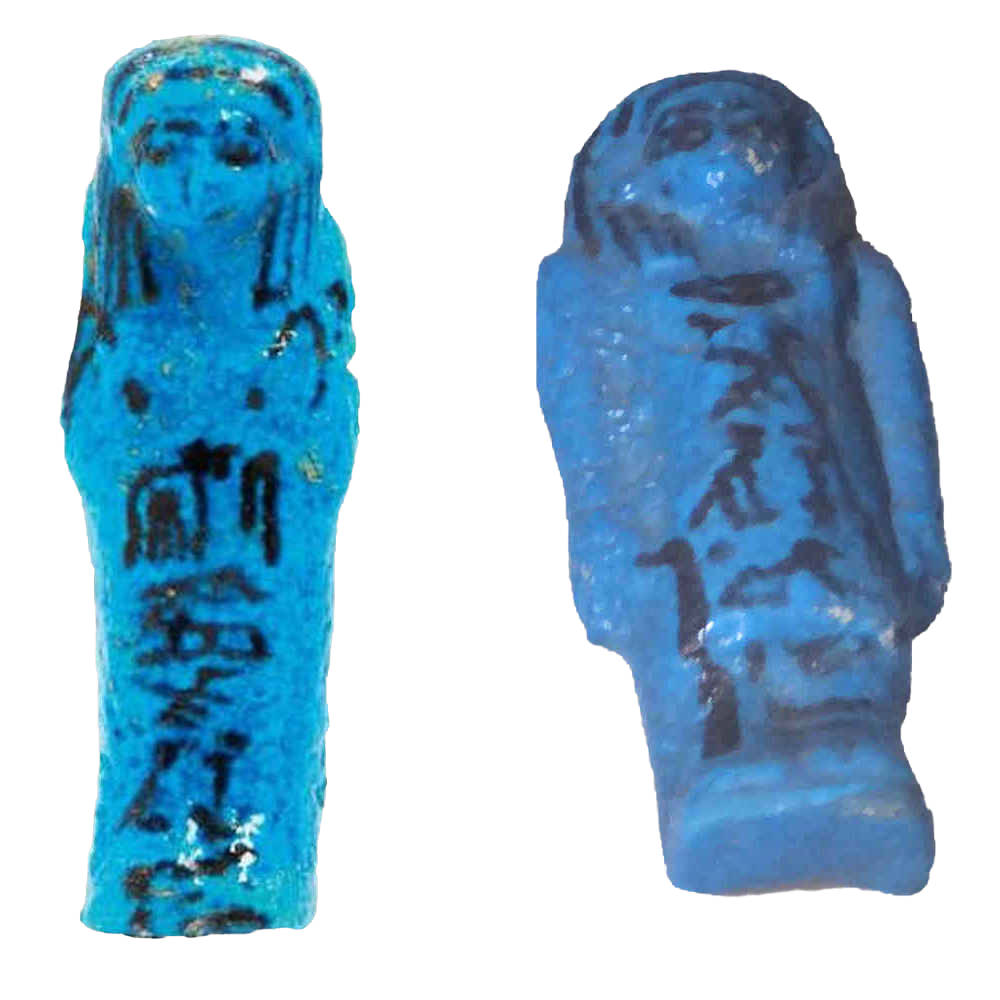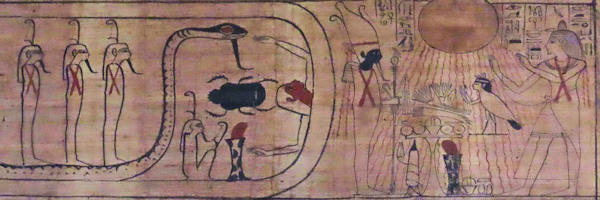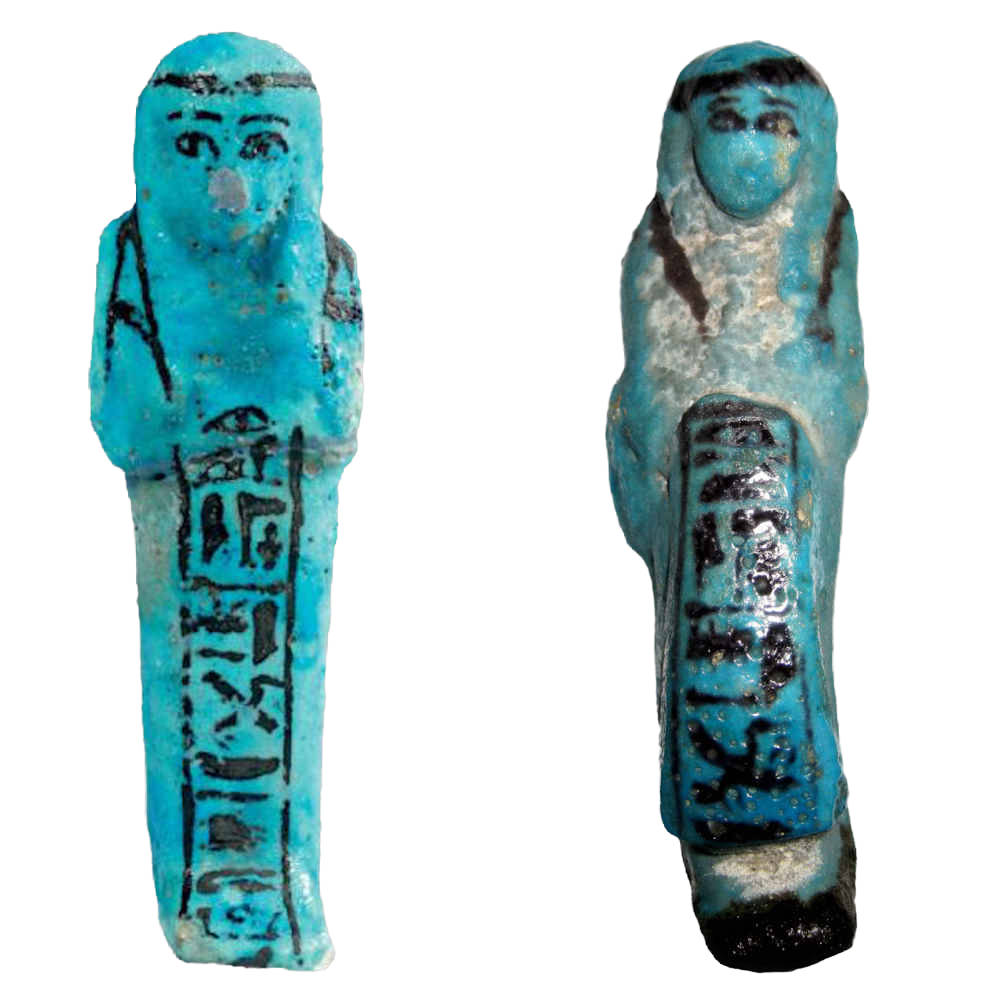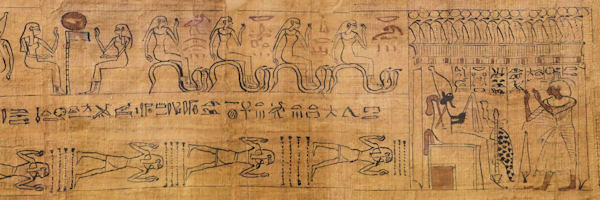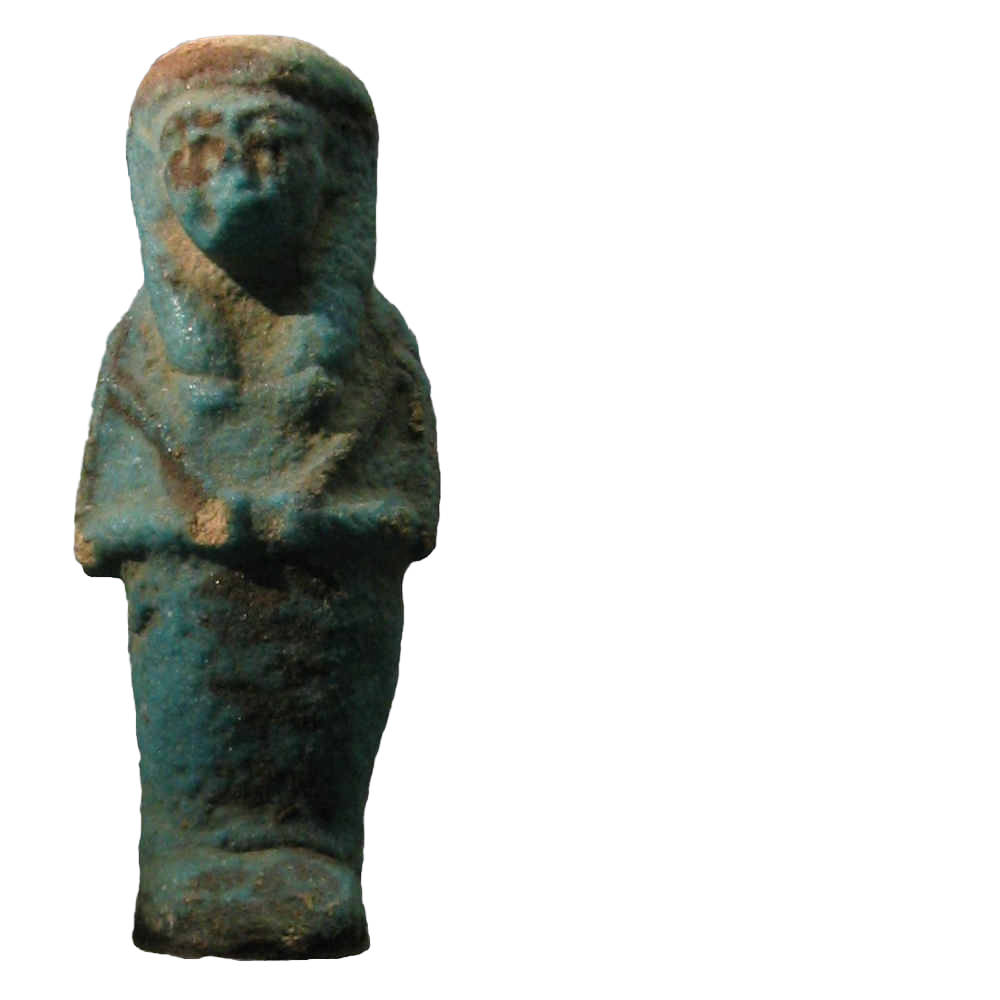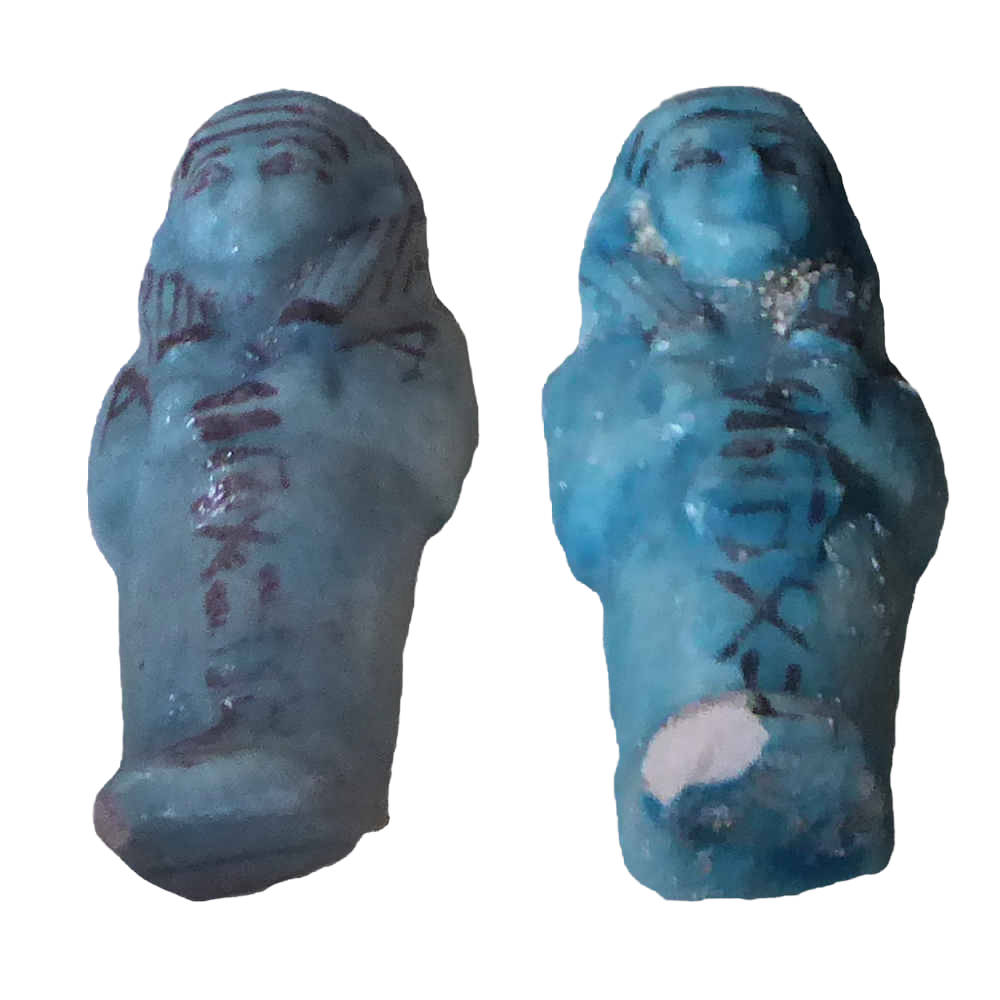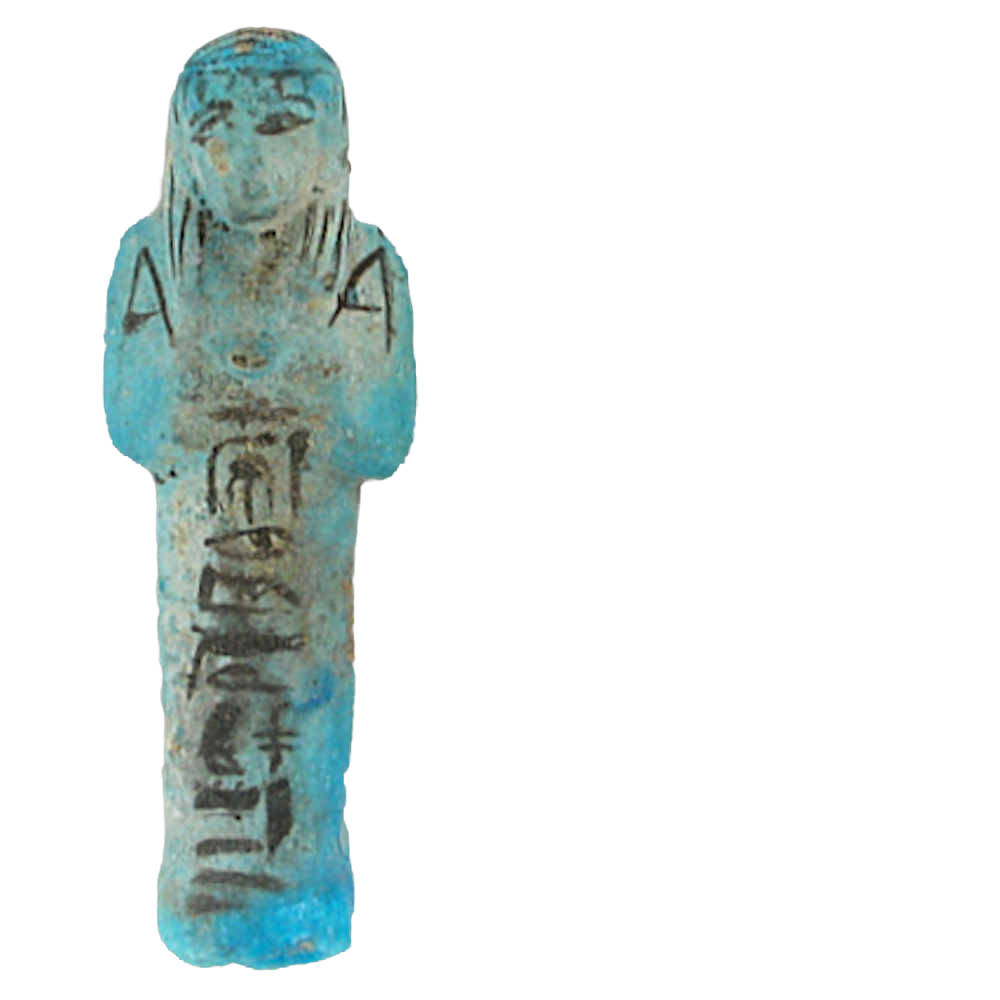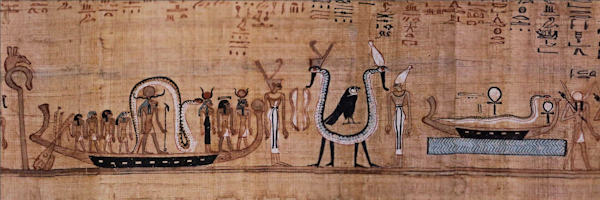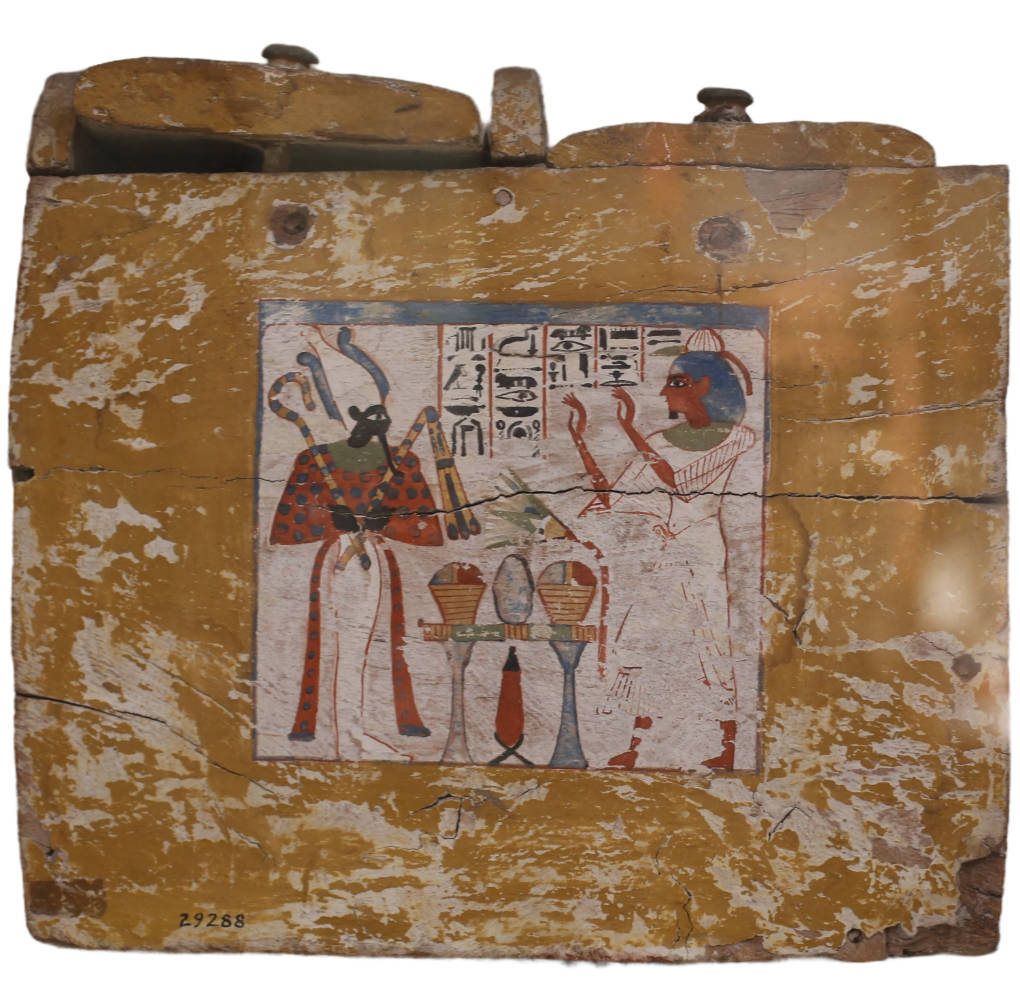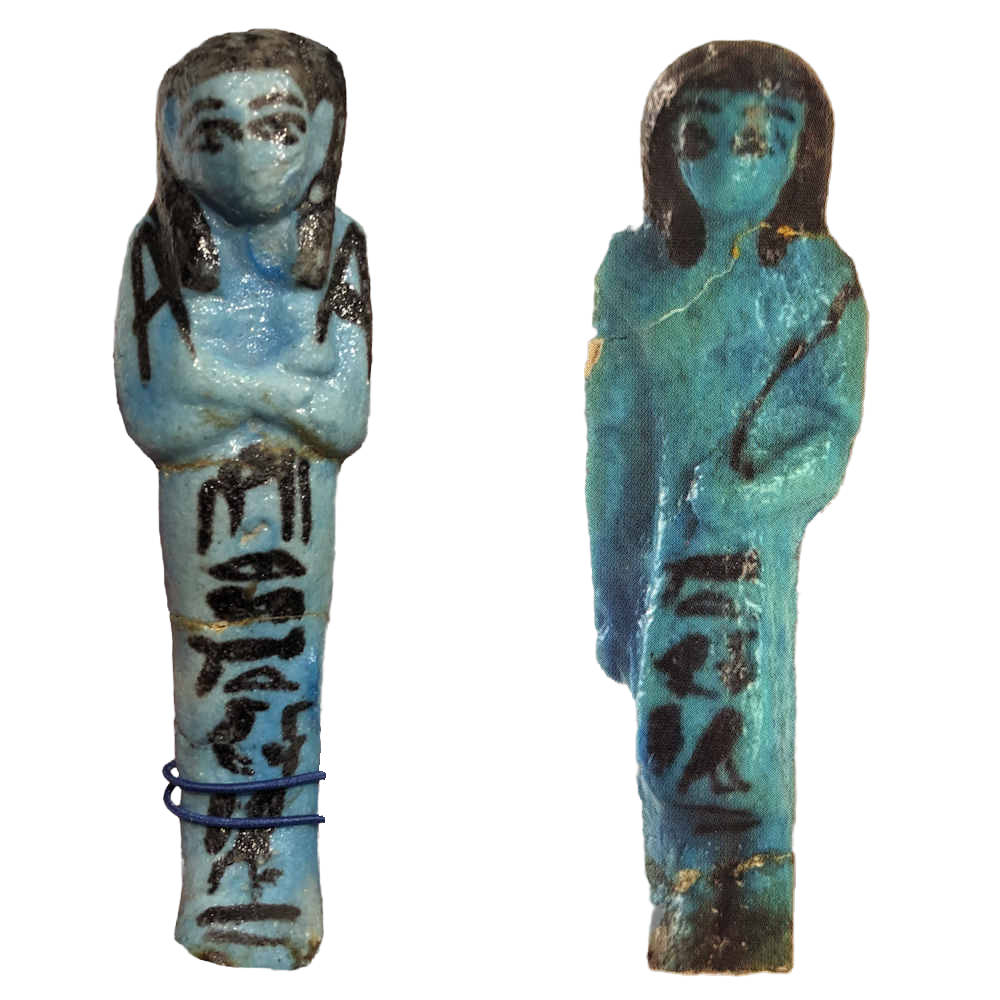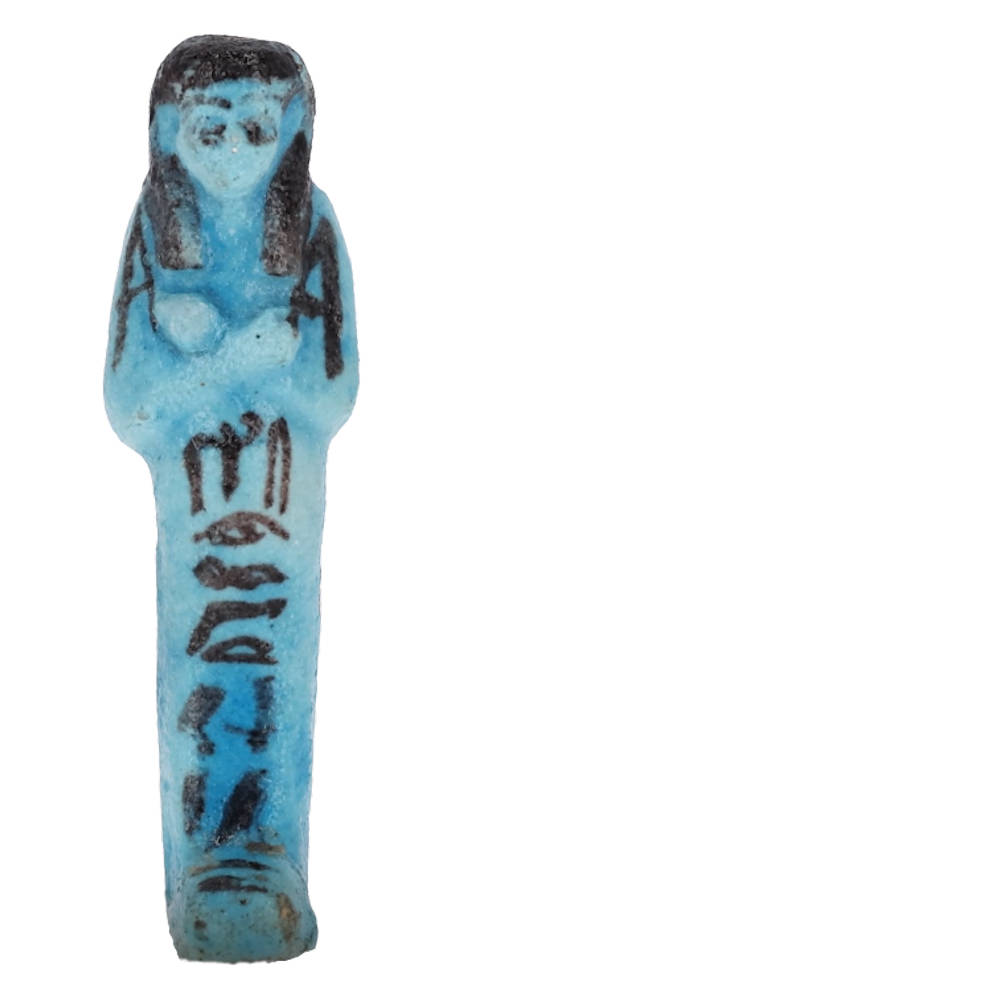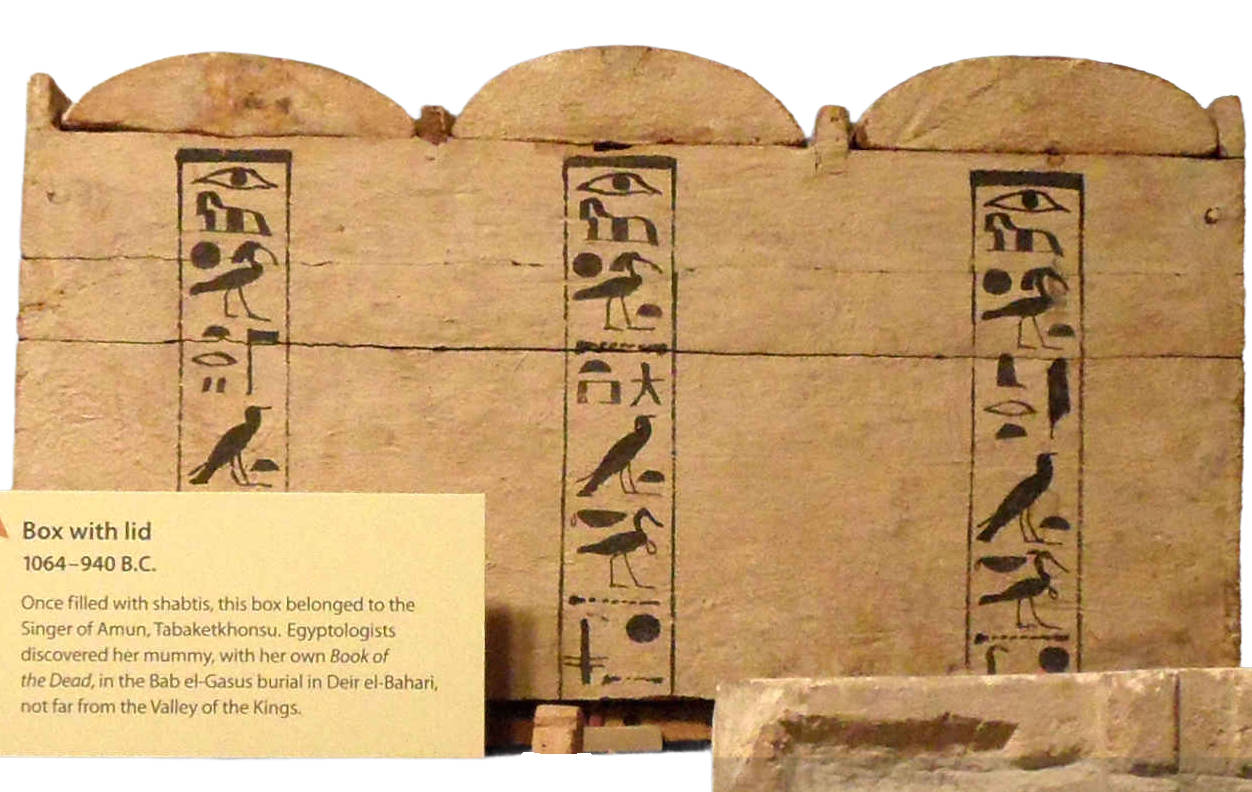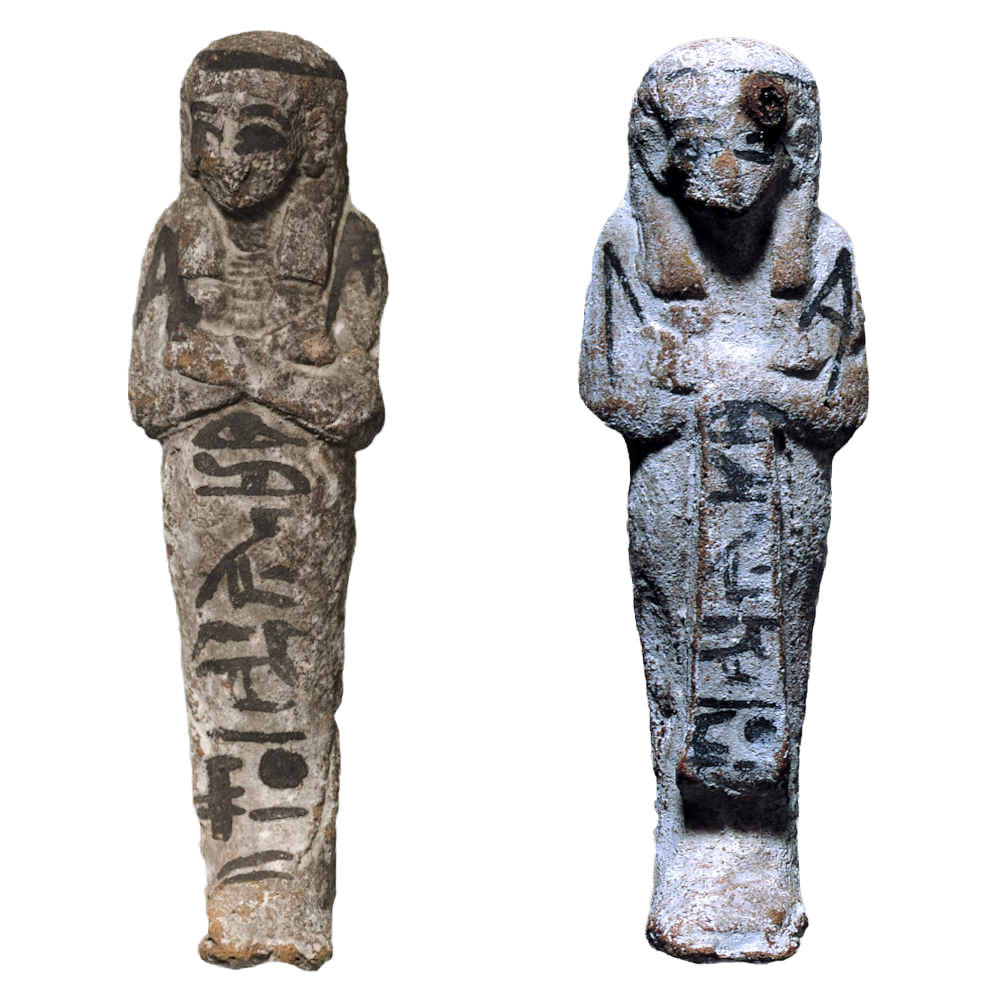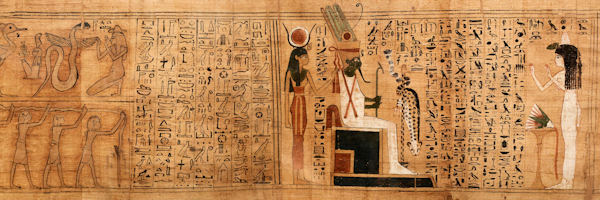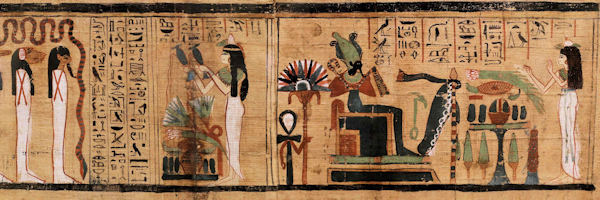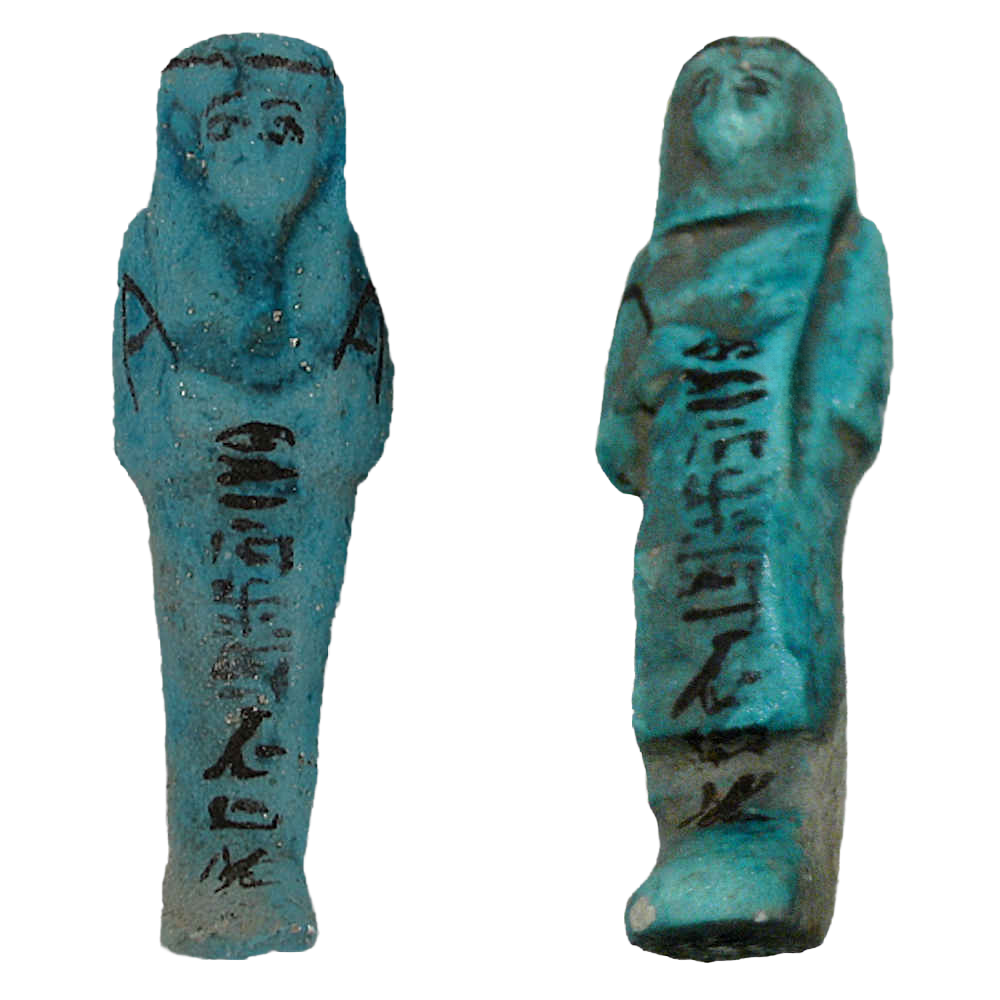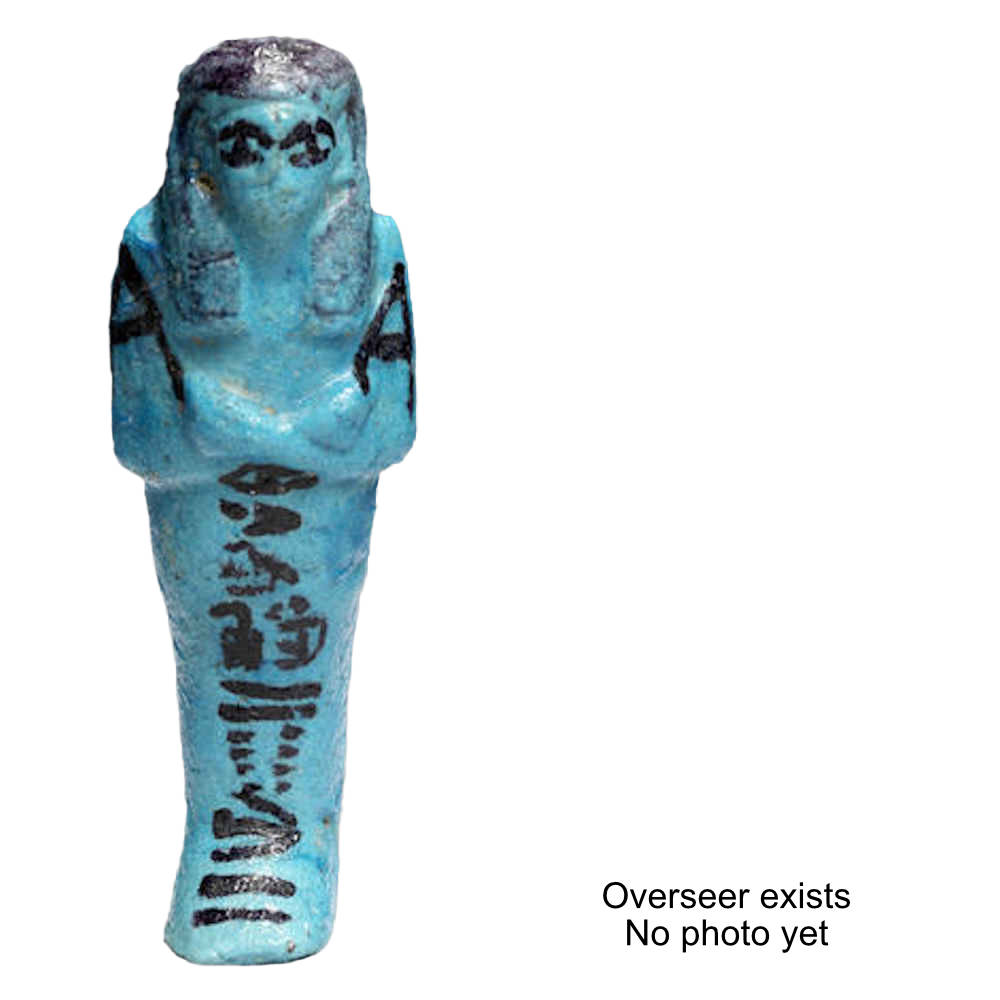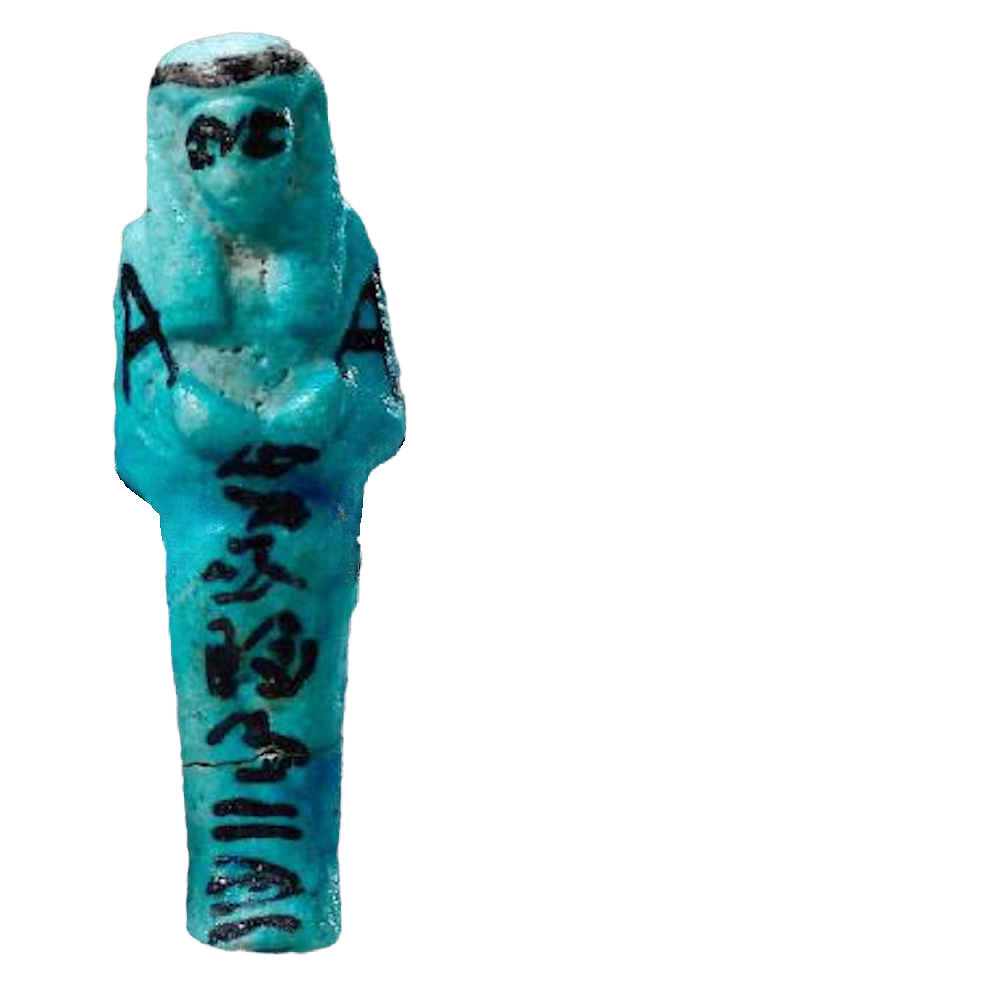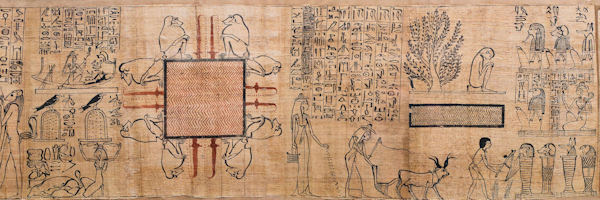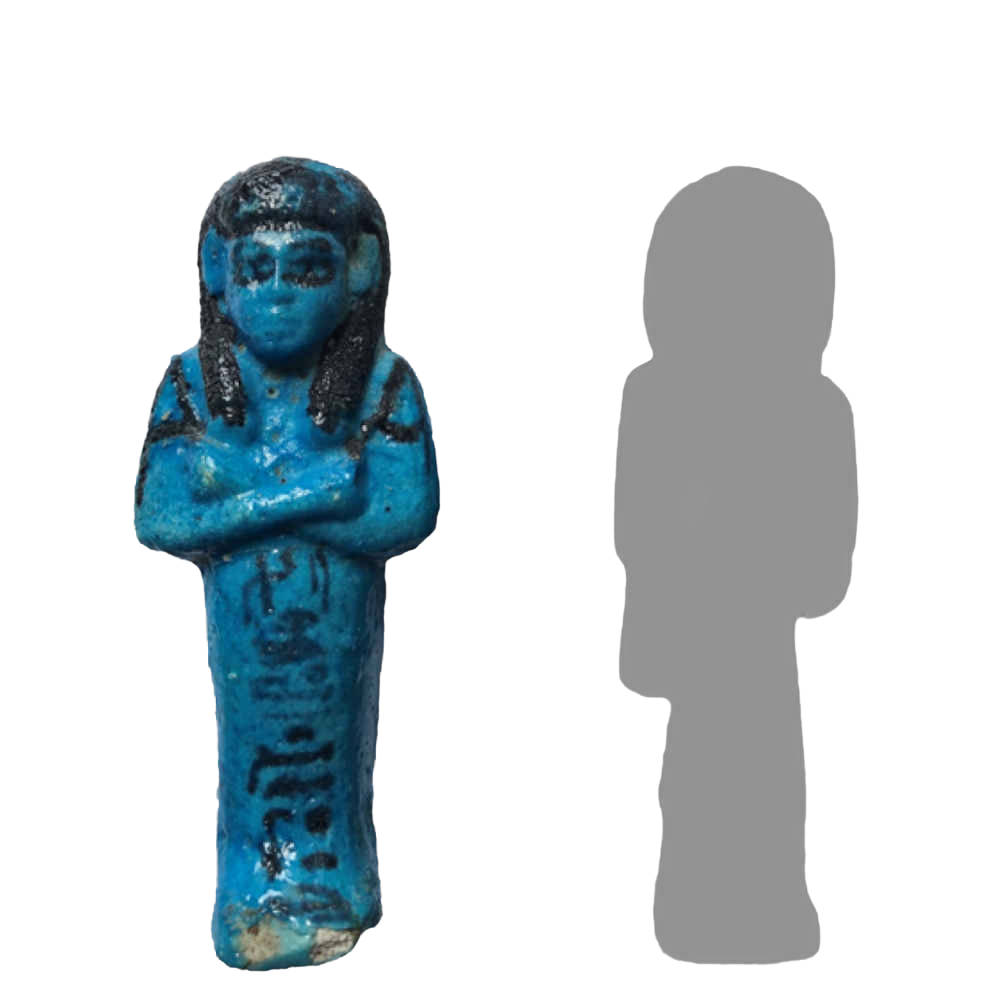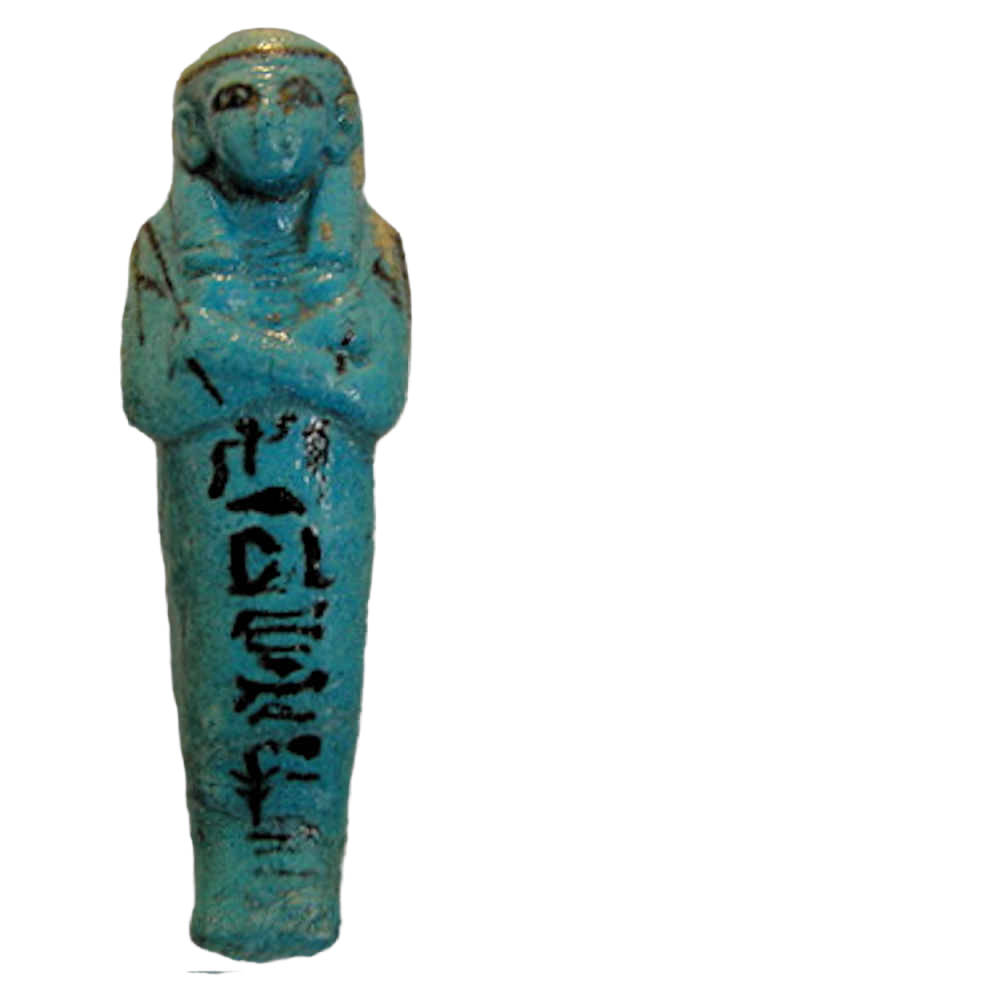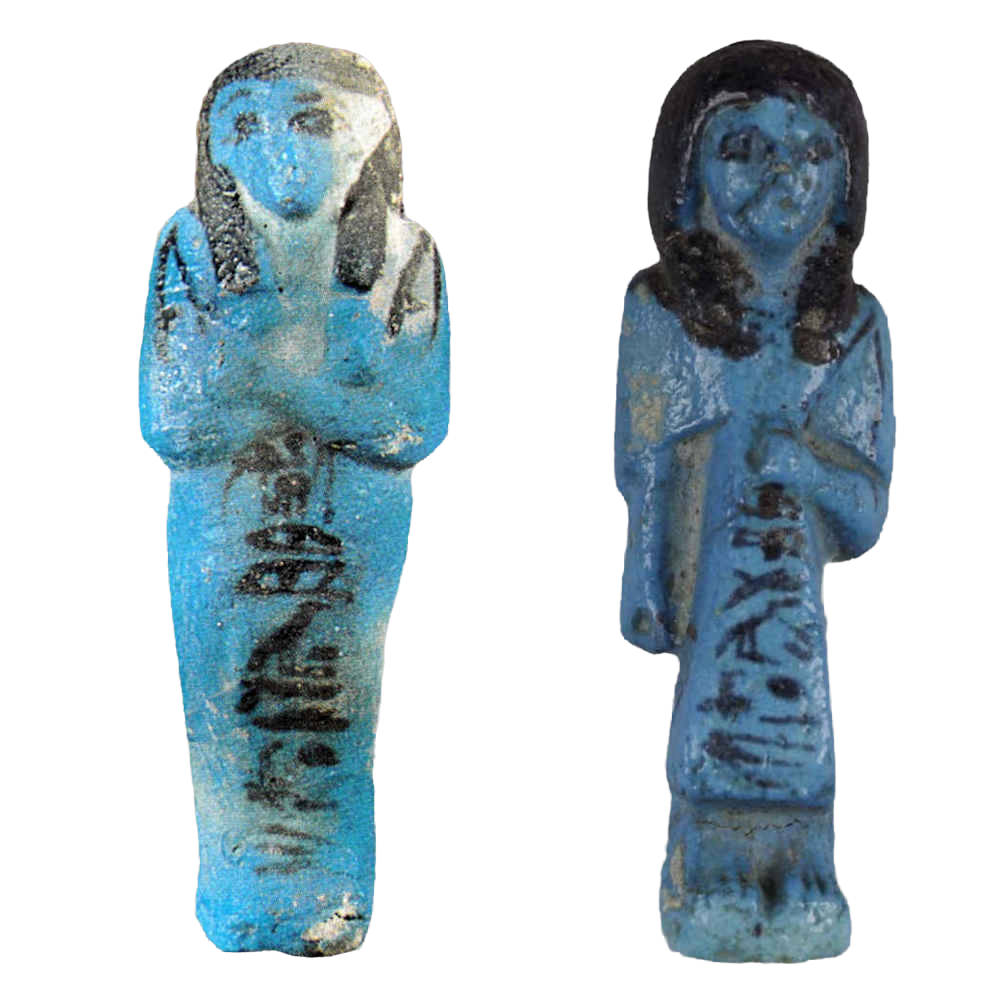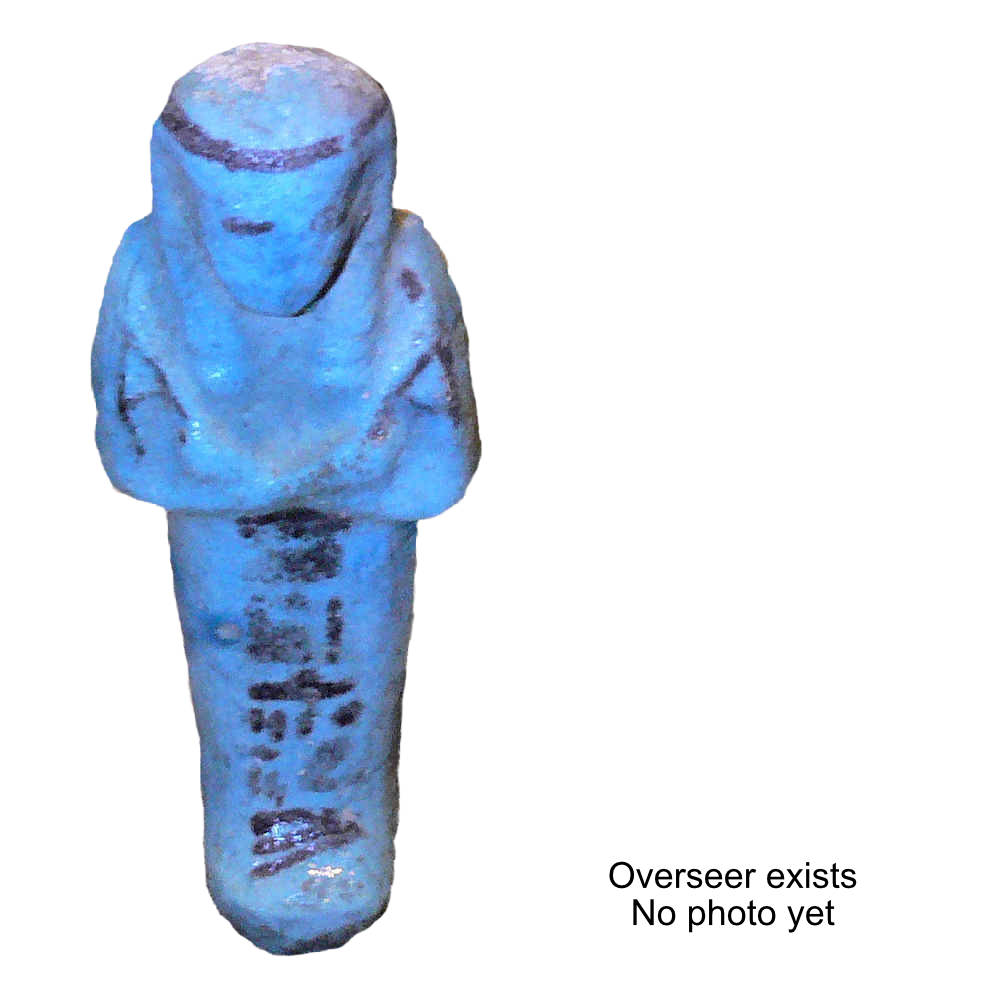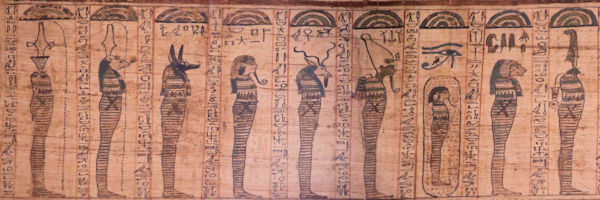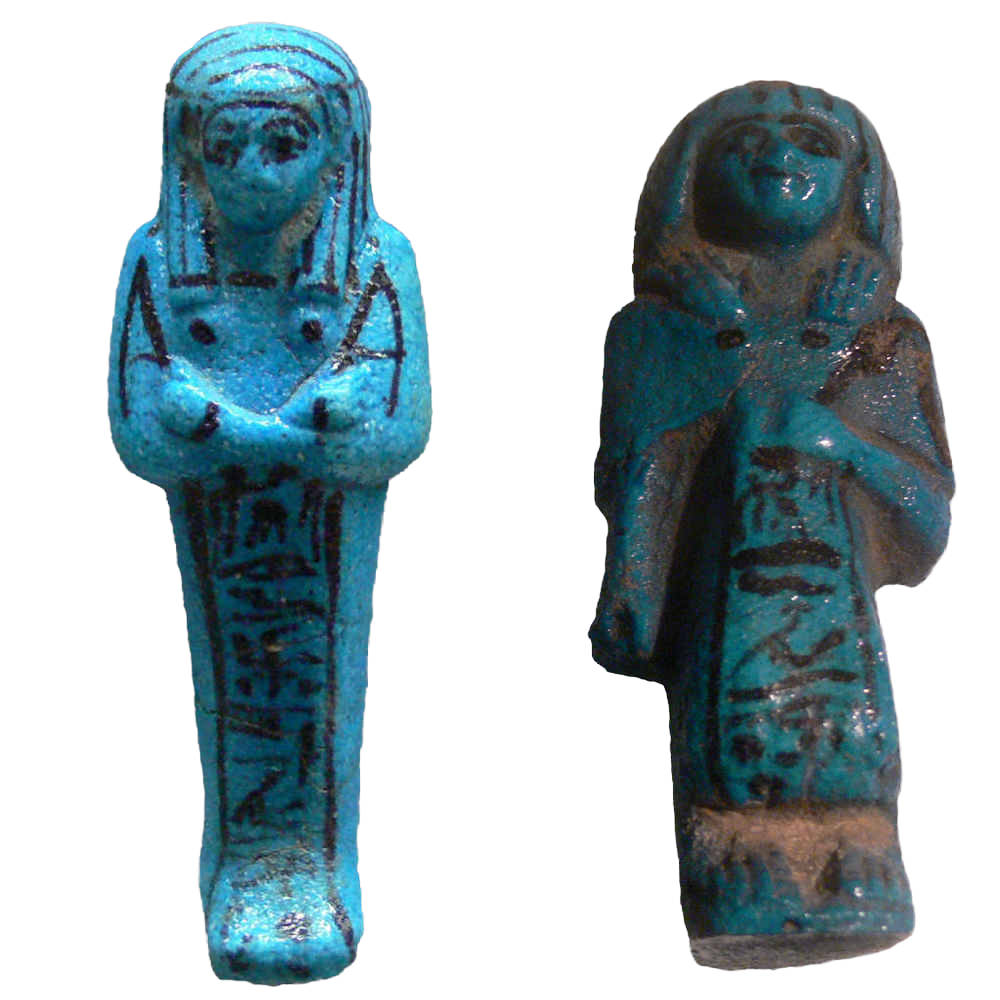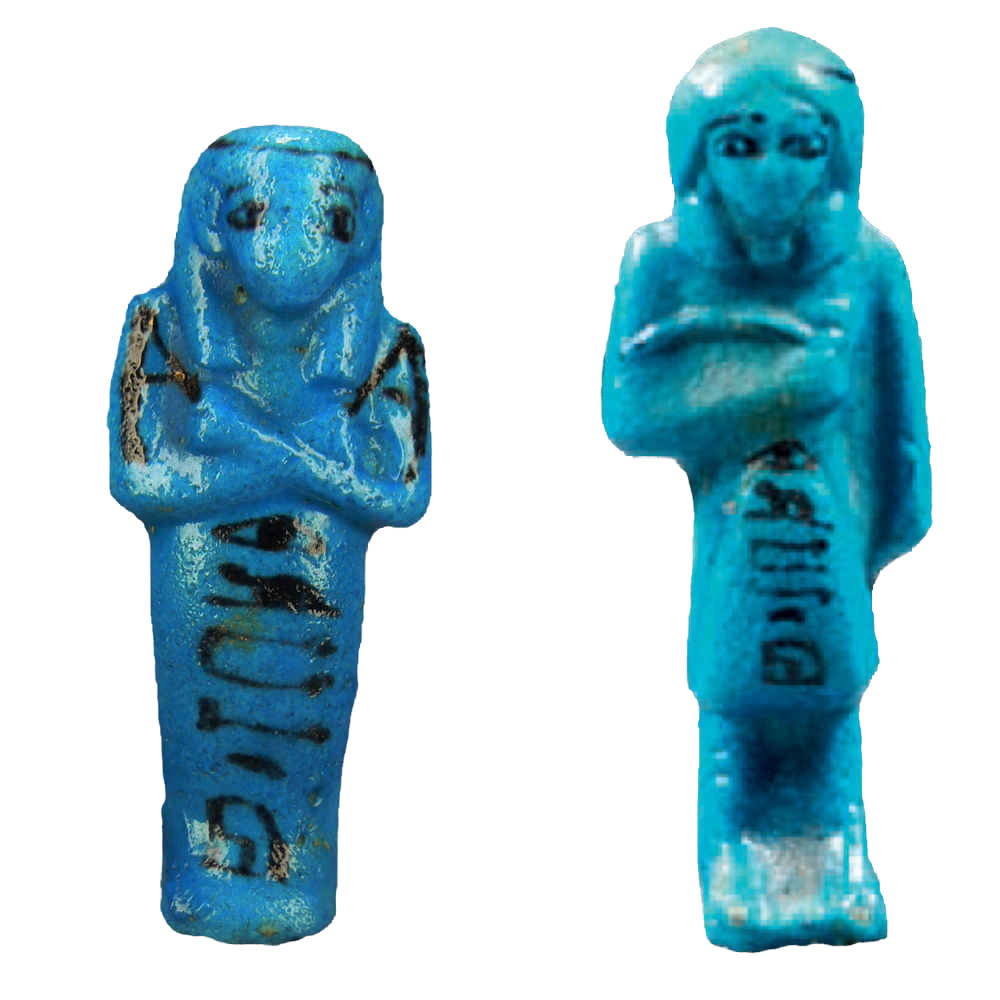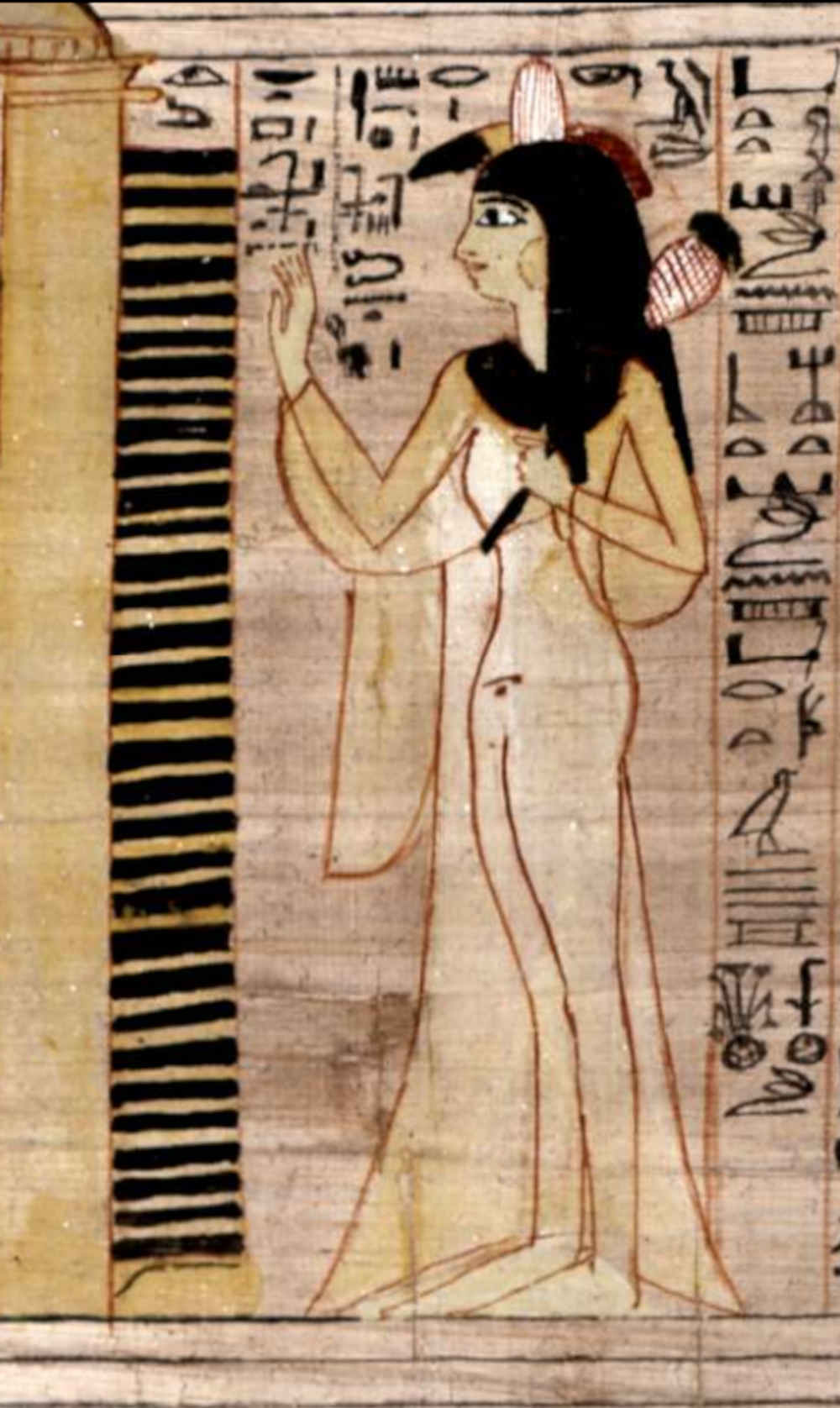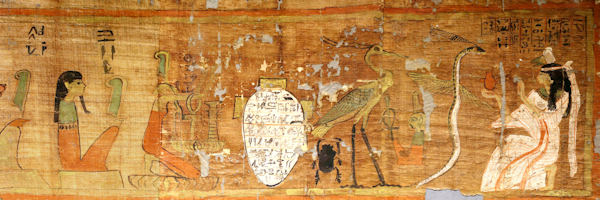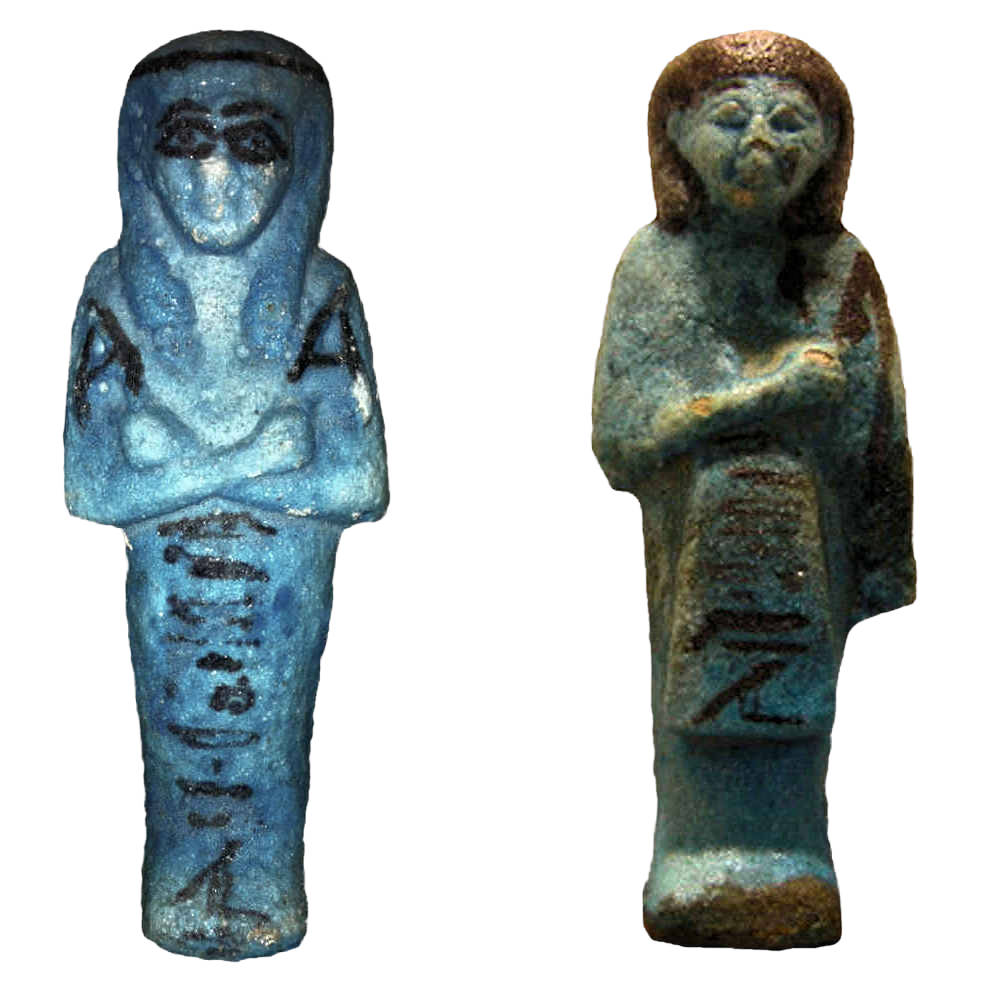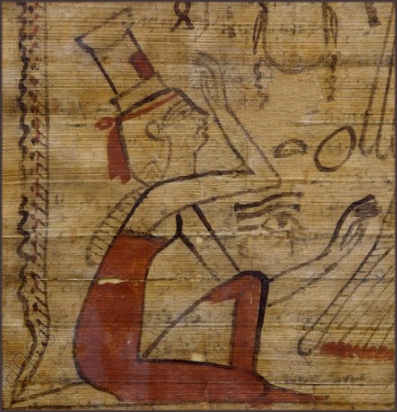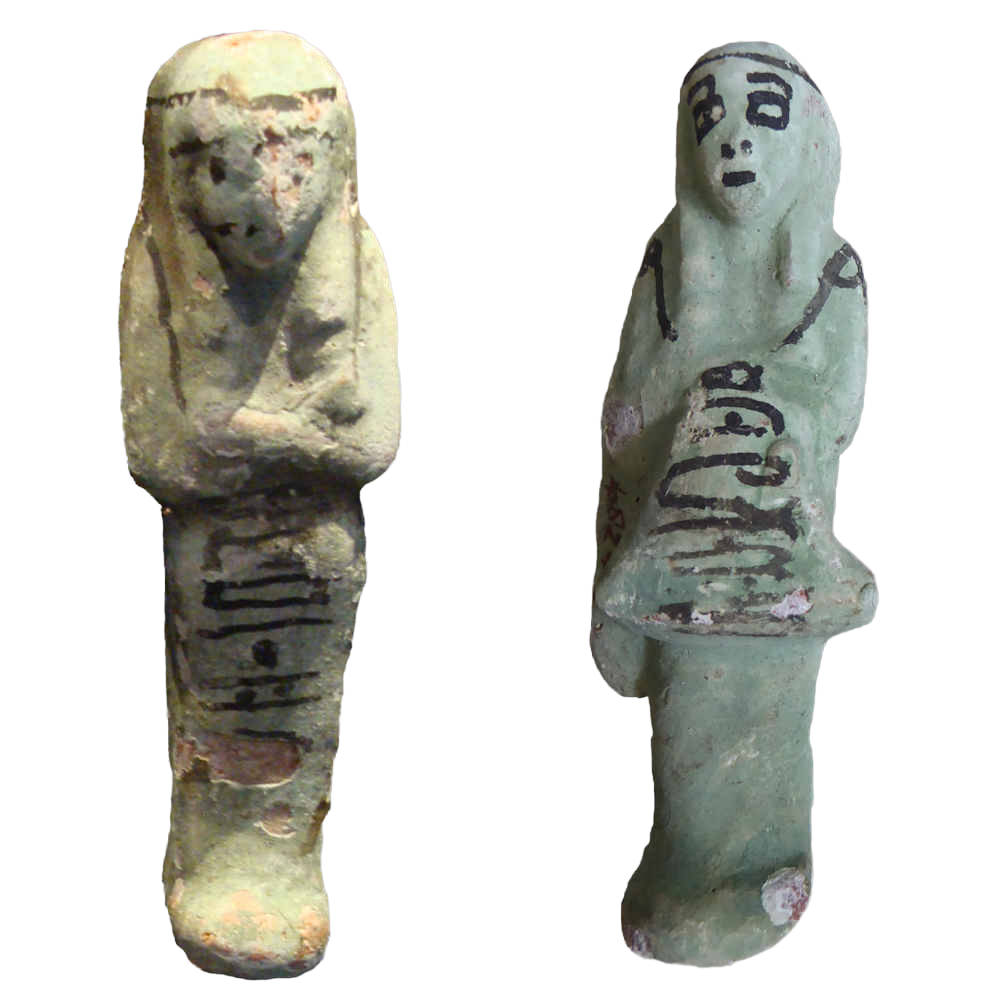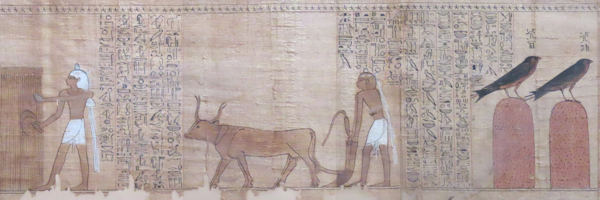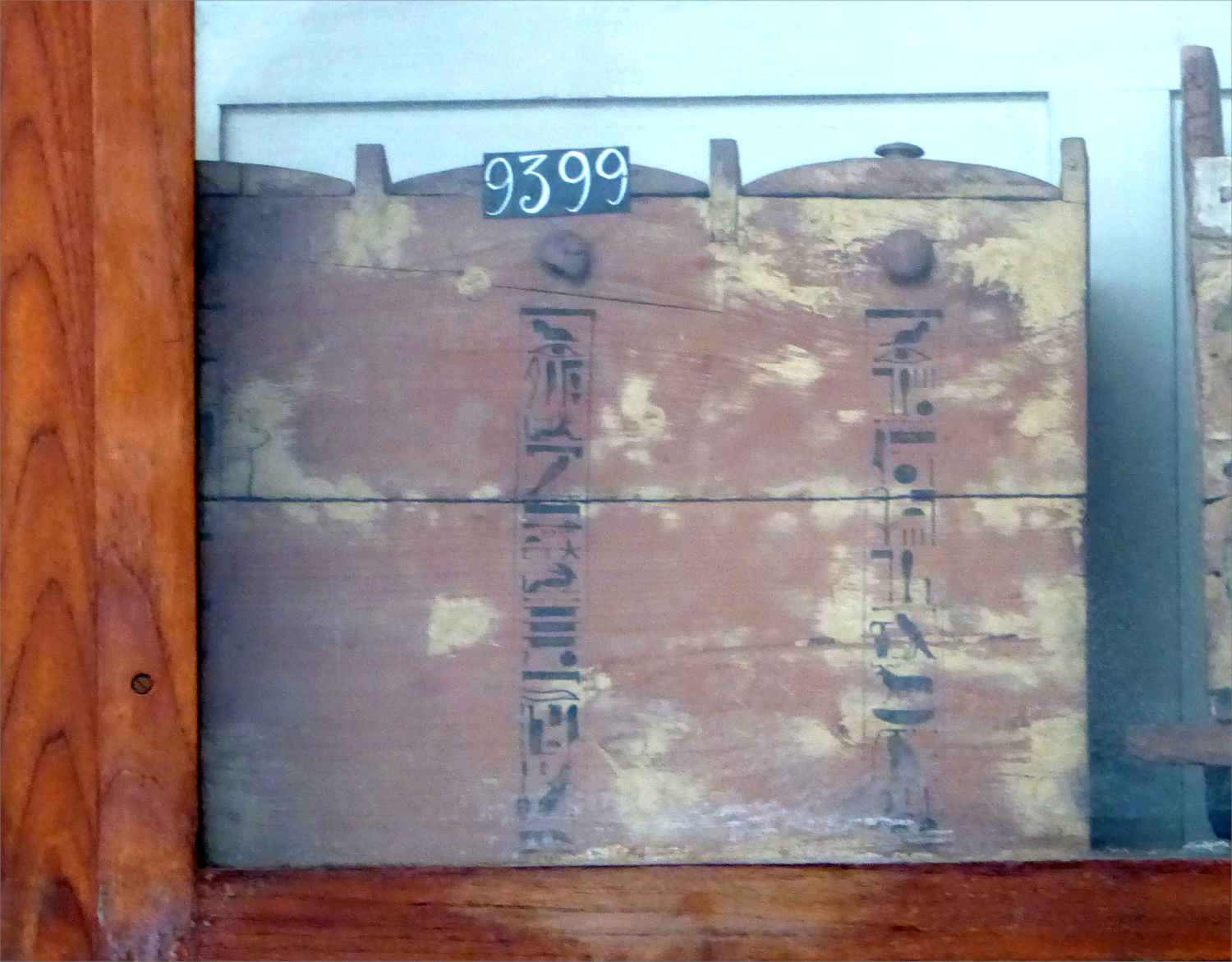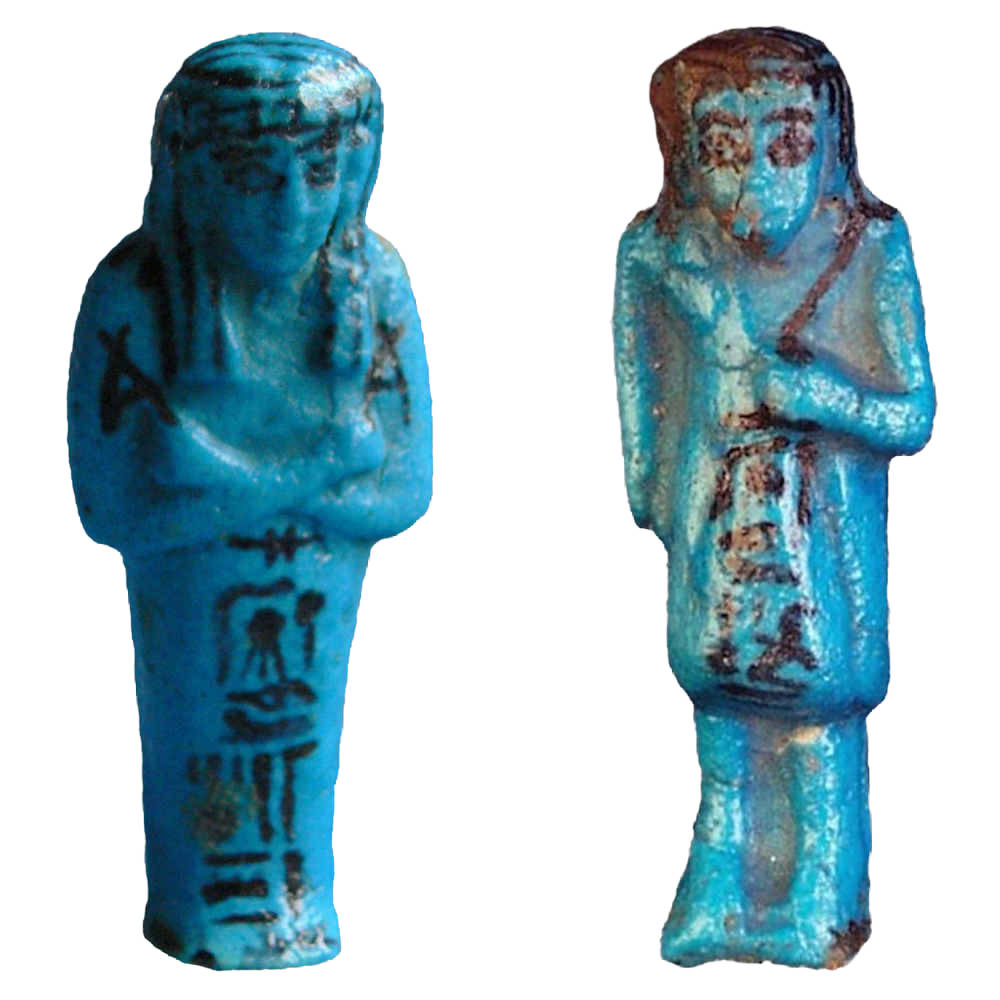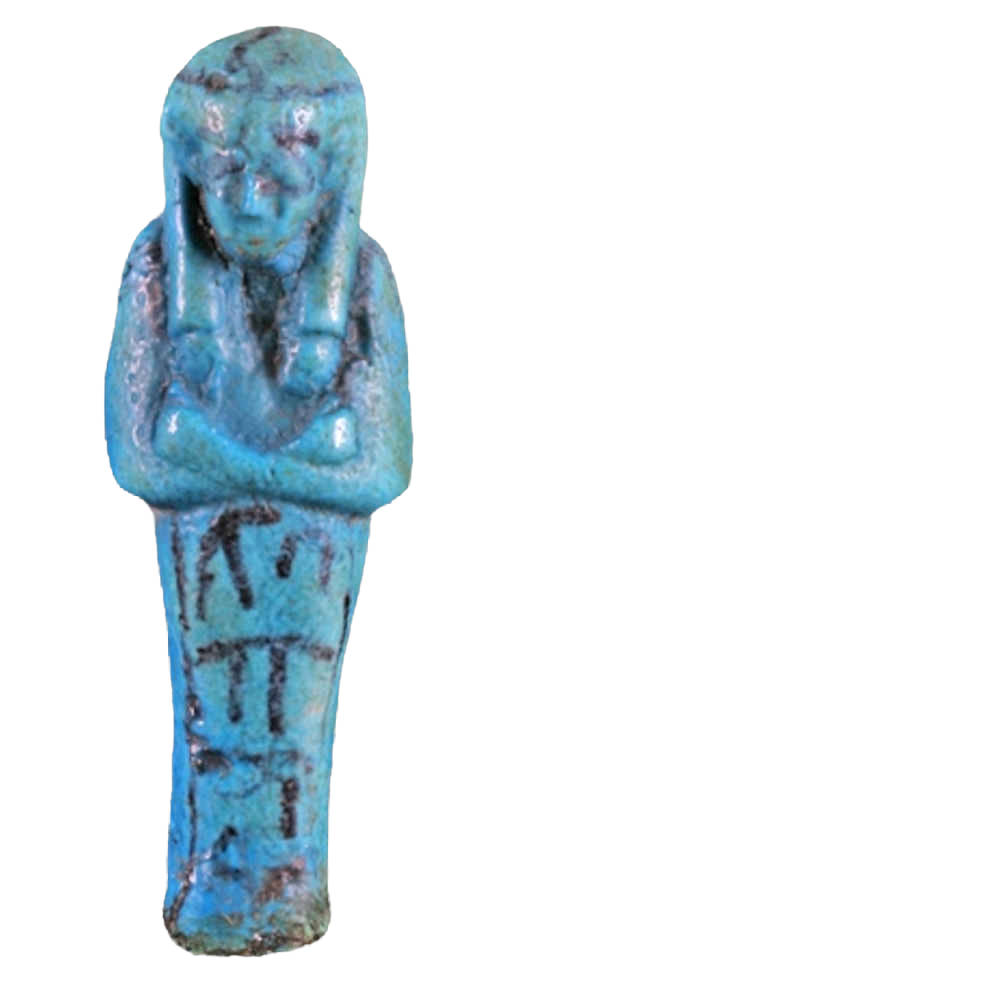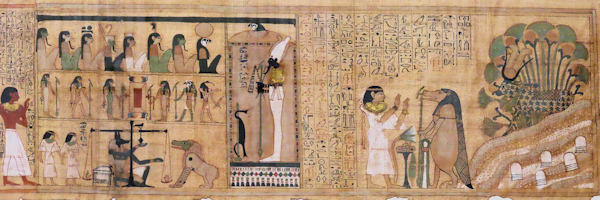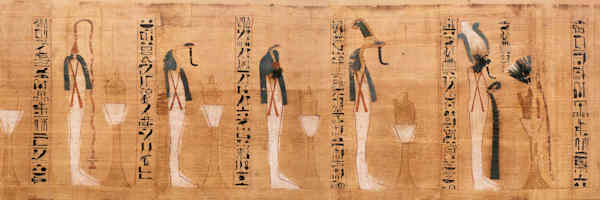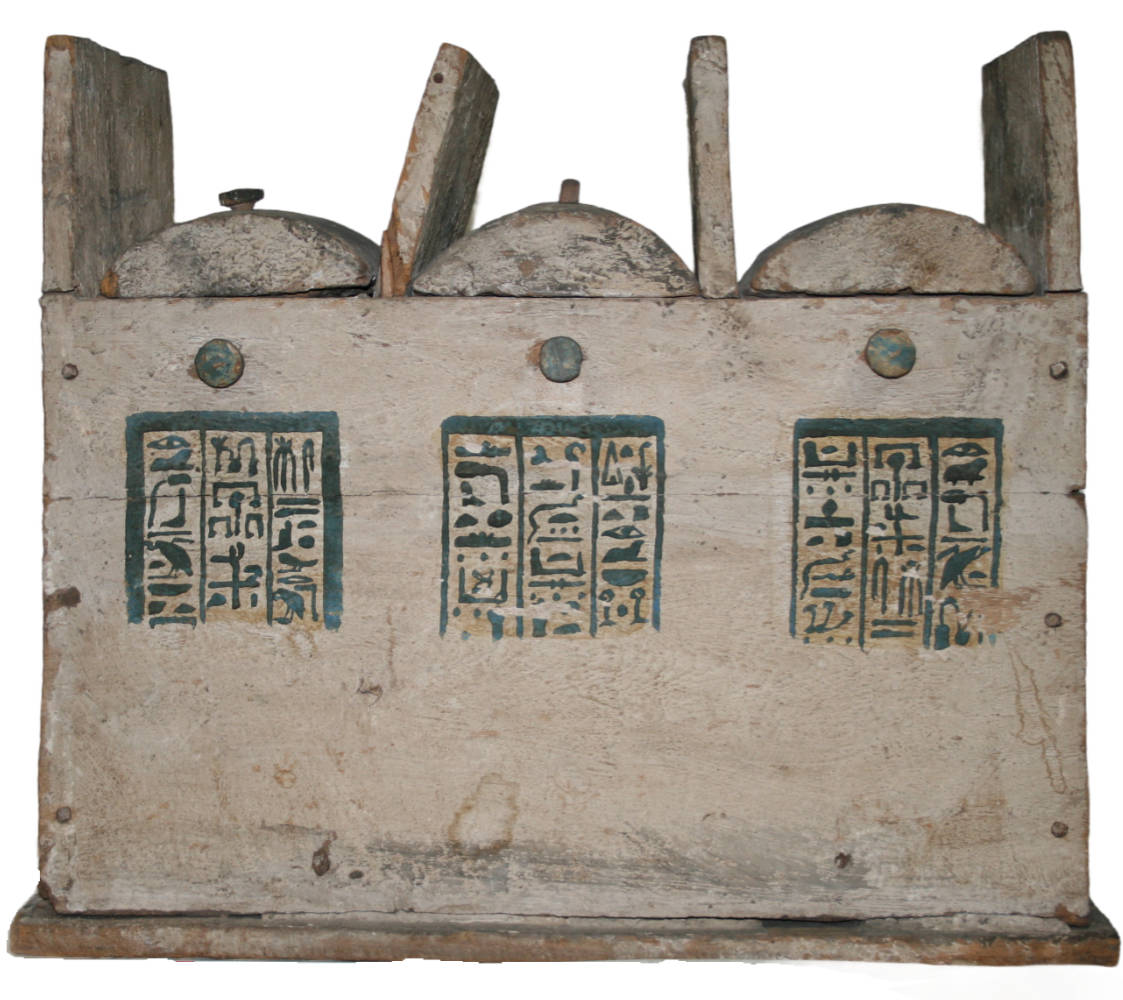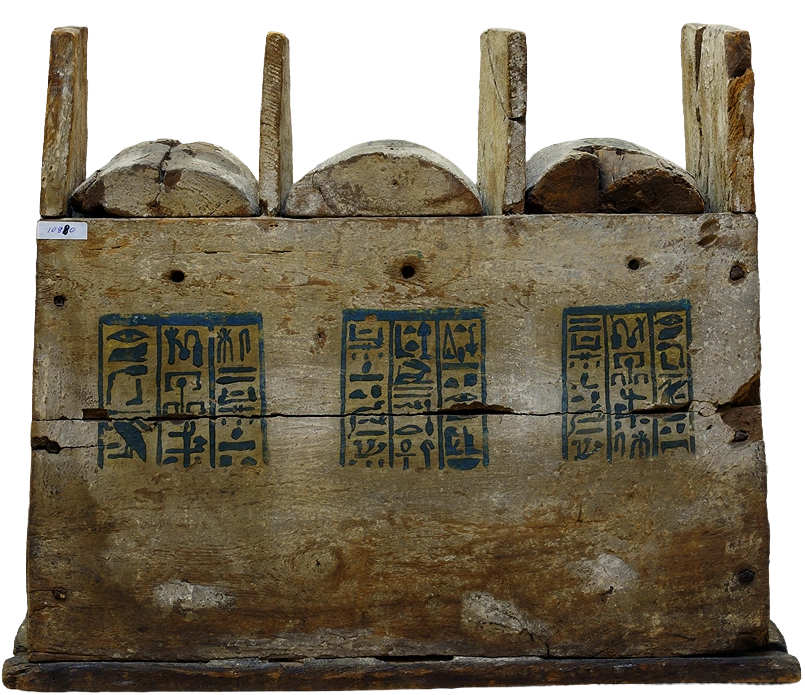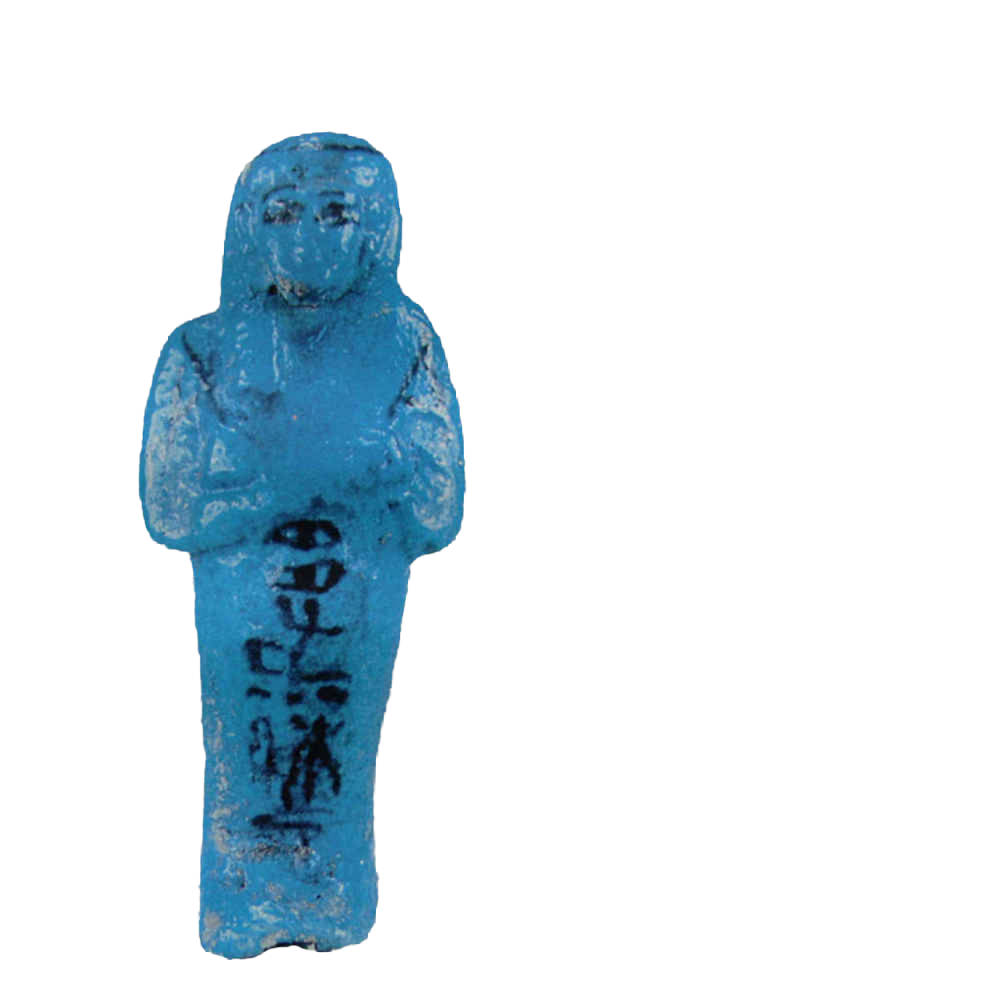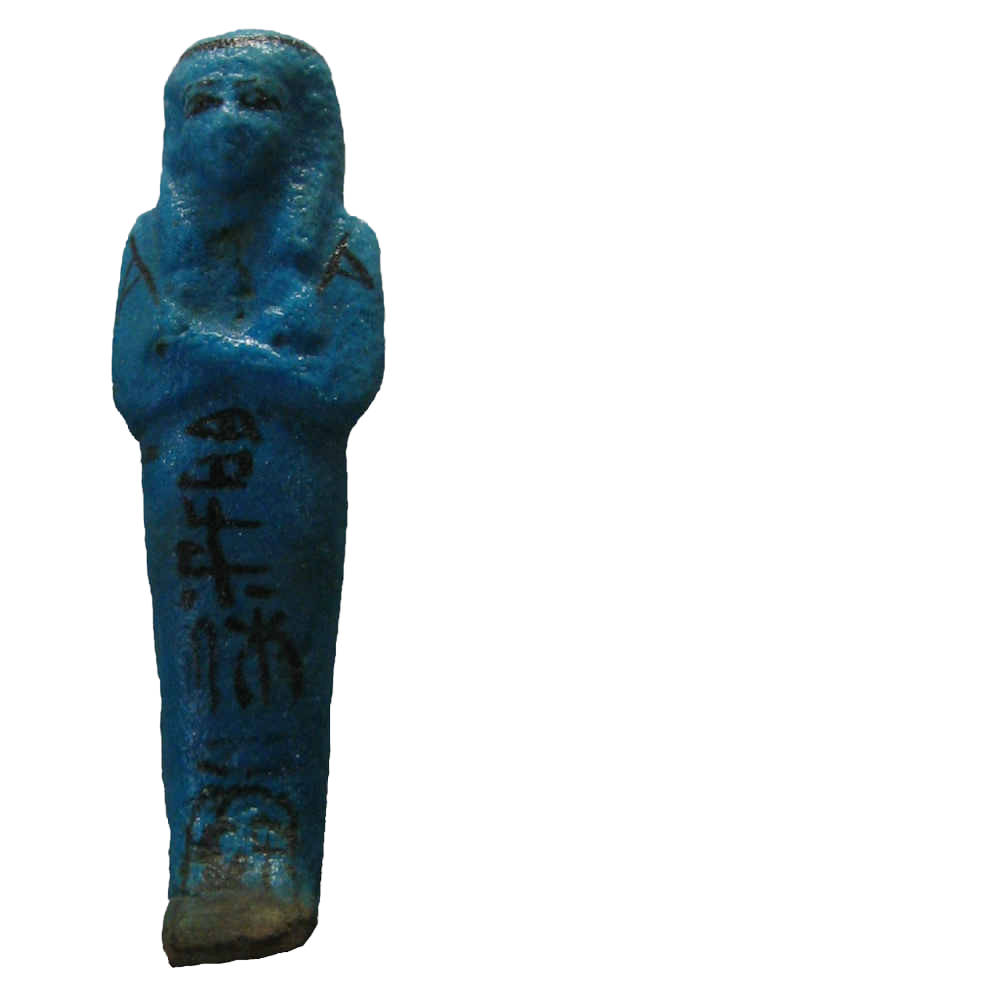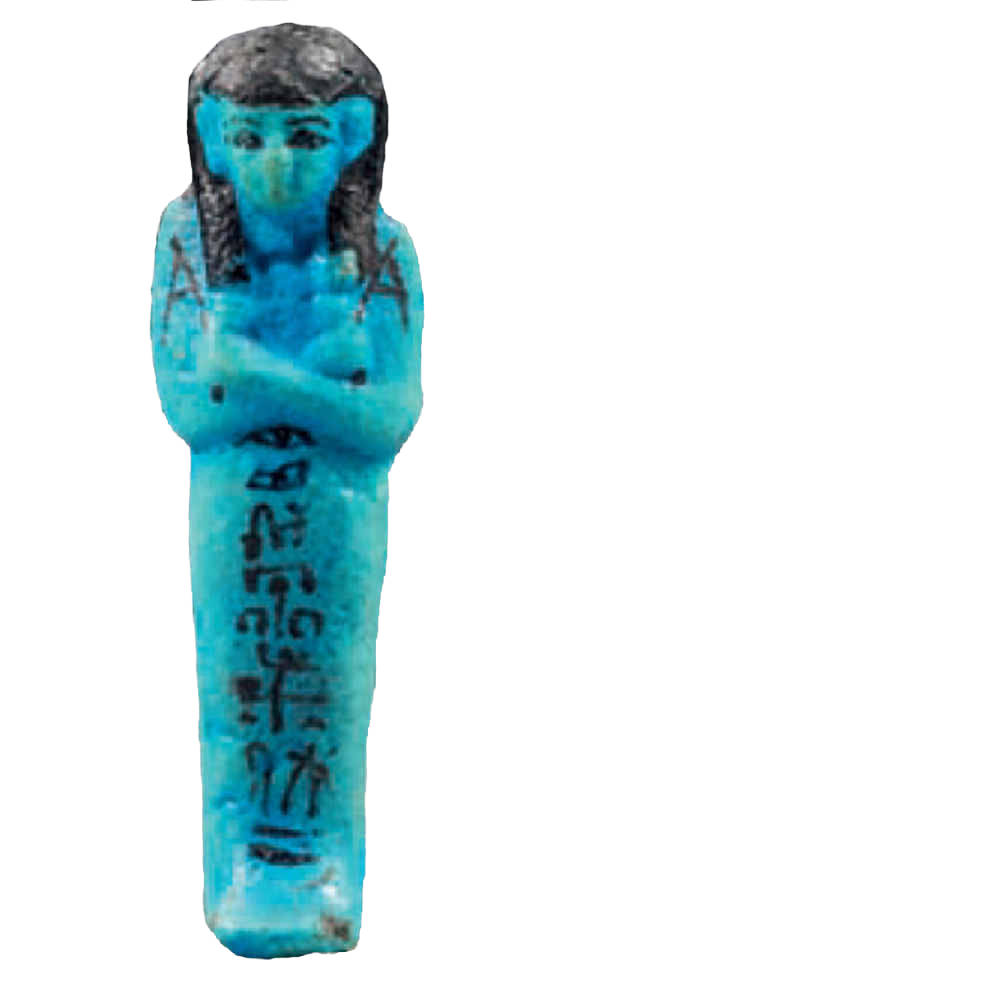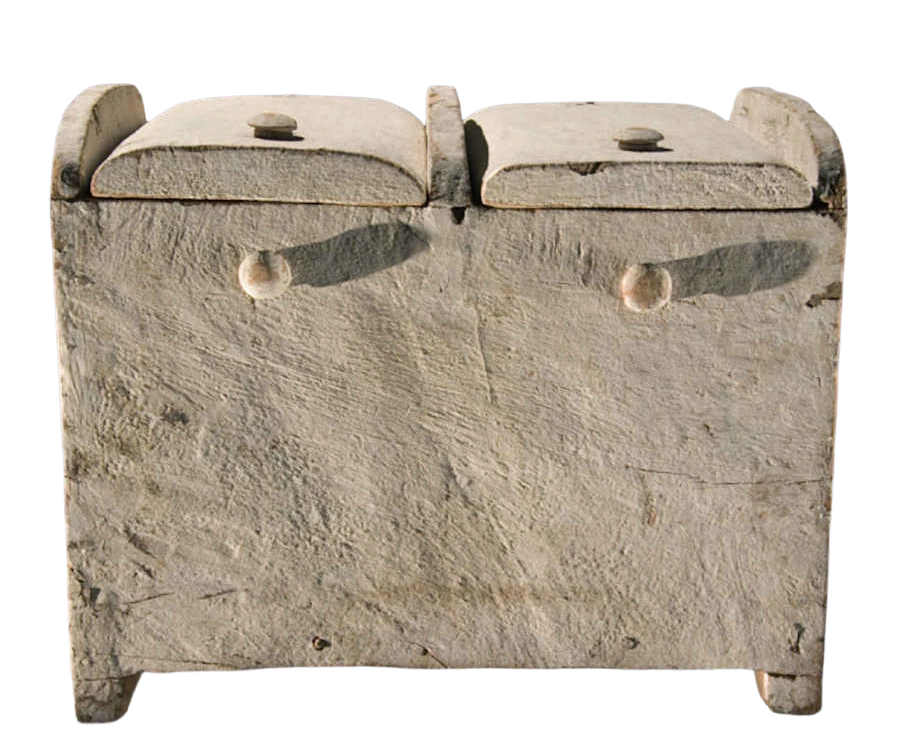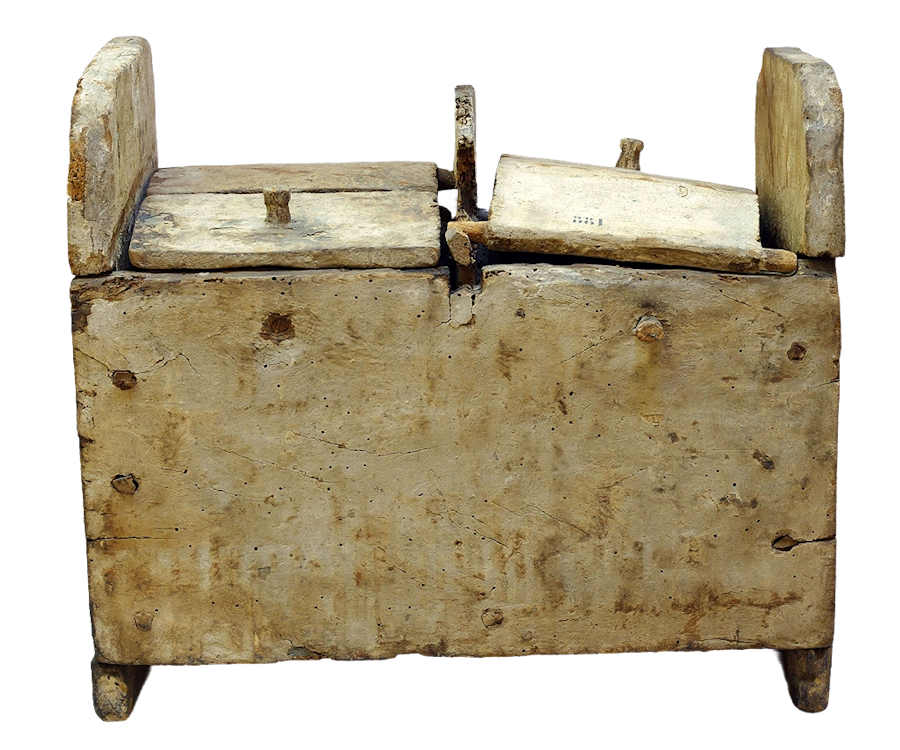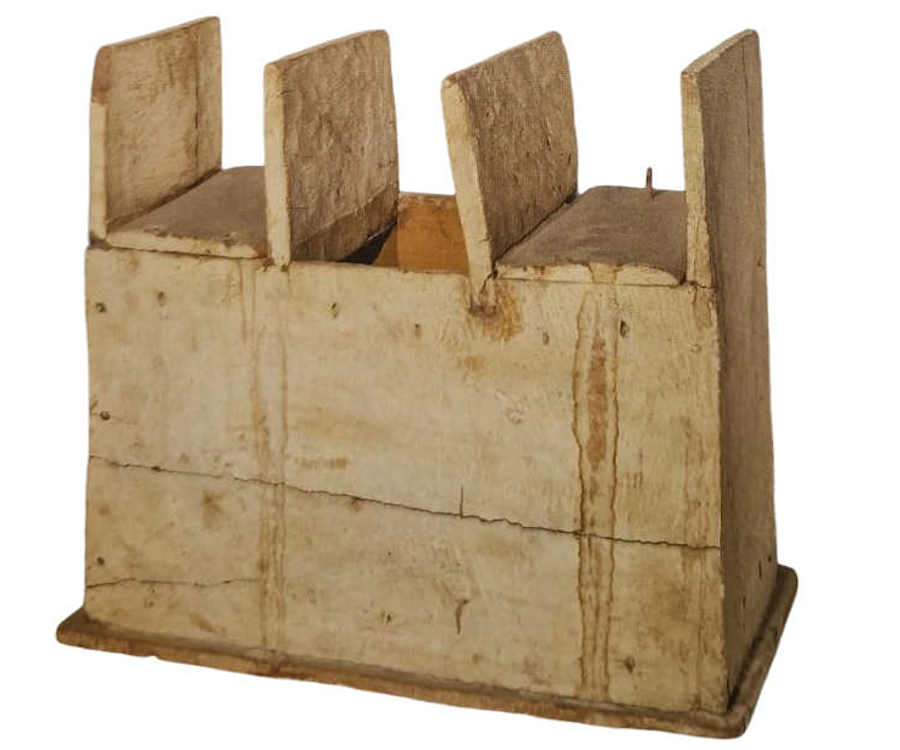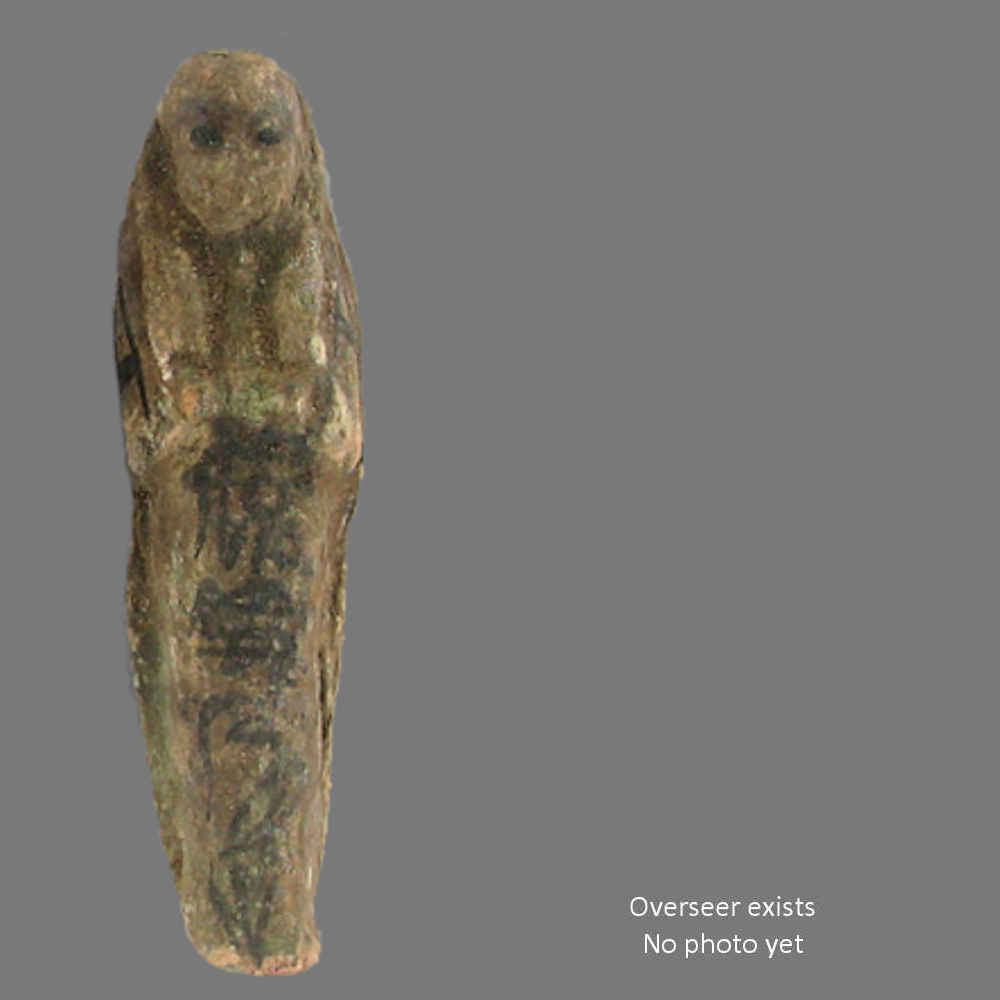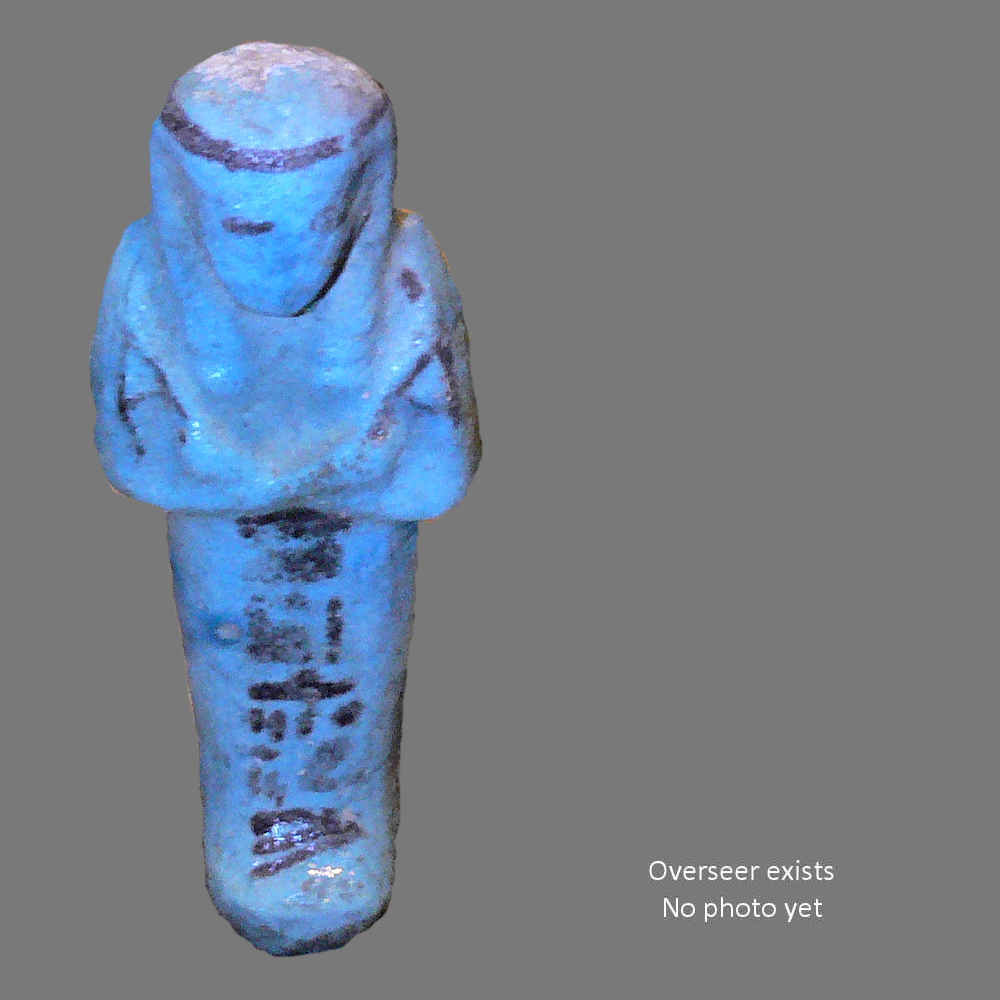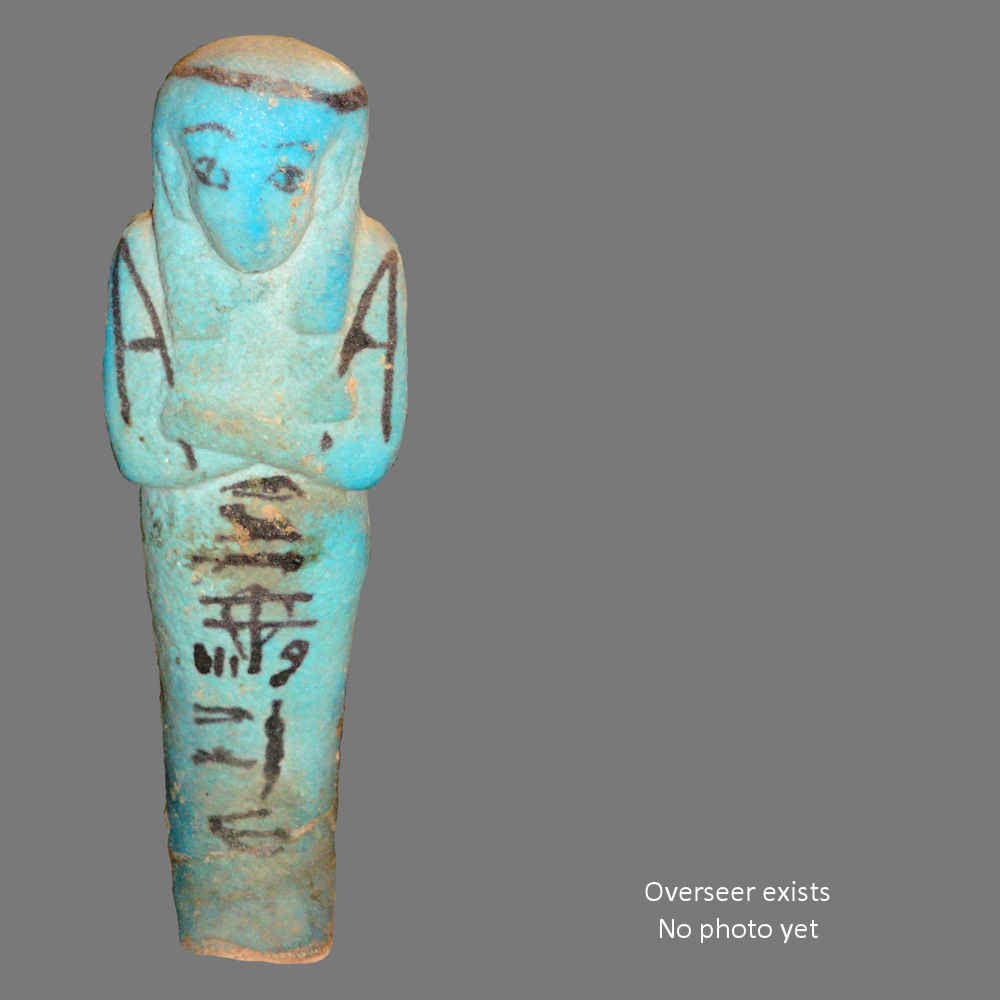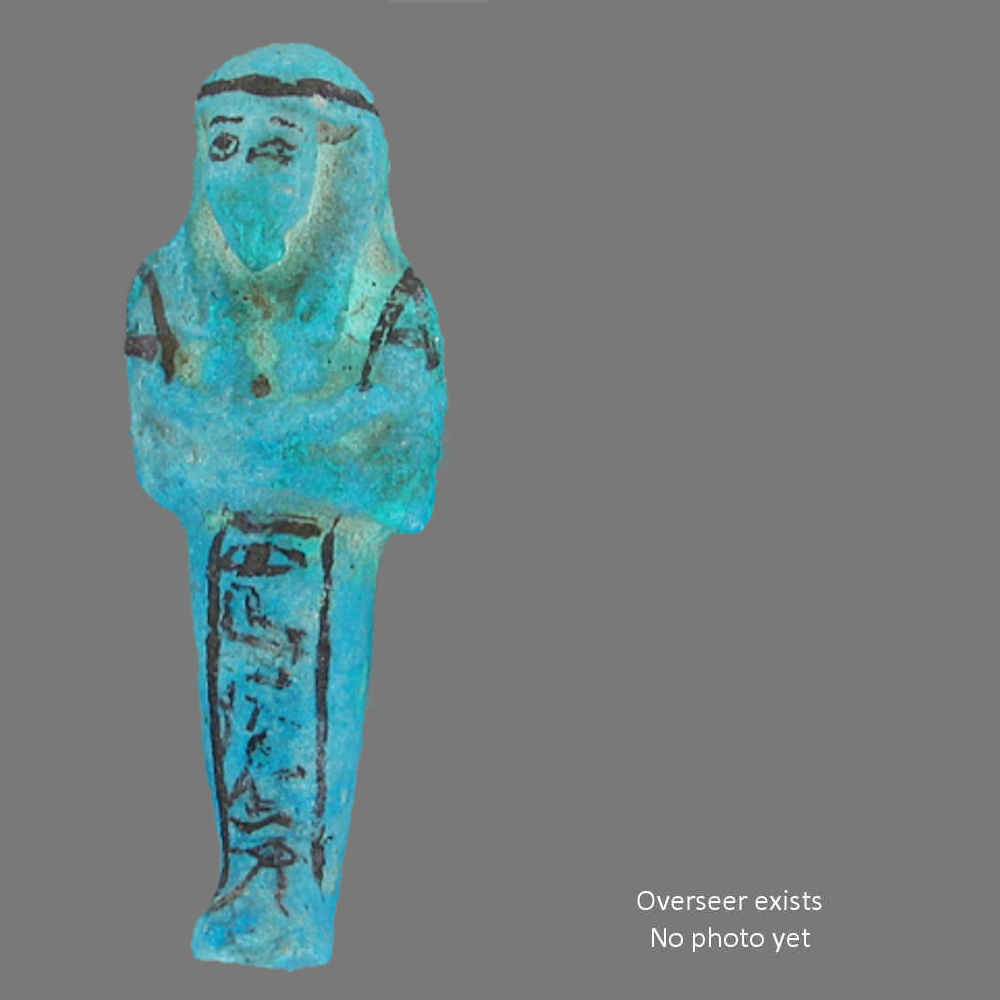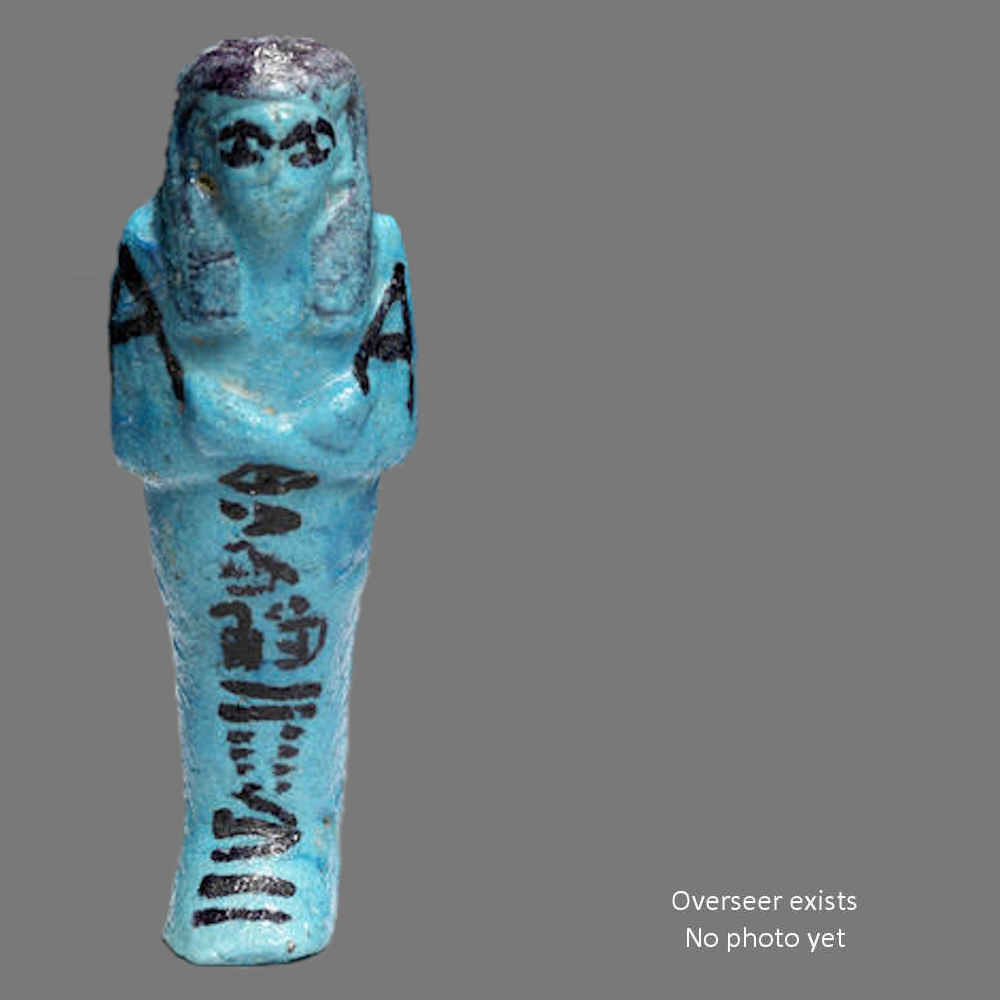All known Bab el-Gasus shabti types, shabti boxes and papyri
Amenhatpamecha – imn-HAt-pA-mSa – 4 types
Amenniutnakht – imn-niwt-nxt – 2 types
Ankhefenkhonsu – anxf-n-xnsw – 2 persons
Djedkhonsuiuefankh – Dd-xnsw-iwf-anx – 2 persons
Djedmaatiuesankh – Dd-mAat-iws-anx
Djedmutiuesankh – Dd-mwt(-iws-anx)
Gautseshenu A – gAwt-sSnw – 2 types
Henuttawy – Hnwt-tAwy – 2 types
Isetemkhebit – Ast-m-Ax-bit – 2 persons
Khonsuemheb – xnsw-m-Hb – 2 types
Mehunedjem – mHw-nDm – 2 types
Meretamen / Amenmeret – imn-mrt – 3 types
Nespaherentahat – ns-pA-Hr-n-tA-Hat
Nespakashuty – ns-pA-qA-Swty – 2 types
Nestanebettawy – ns-tA-nbt-tAwy
Nestaudjat(akhet) – ns-tA-wDAt-(Axt)
Nesypawtytawy – nsy-pAw-ty-tAwy
Panebenkemetnakht – pA-nb-n-kmt-nxt
Pasebakhaenniut – pA-sbA-xa-niwt
Tabaketenkhonsu – tA-bAkt-n-xnsw
Tahenetdjehuty – tA-Hnt-DHwty (= Tahenetnebkhemenu)
Tahenetnebkhemenu – tA-Hnt-nb-xmnw (= Tahenetdjehuty)
Tashedkhonsu – tA-Sd-xnsw- 3 types
Tentshedkhonsu – Tnt-Sd-xnsw (=Tashedkhonsu)
Userhatmes – wsr-HAt-ms – 3 types
NB The name of the shabtis of which it is not certain whether they come from the Bab el Gasus tomb is shown in turquoise italic
NB With the spelling chosen for names and transliteration, I was unable to find a standard for the use of Tnt and tA and ns and nsy. For example, Nekhons or Nesykhonsu. This can lead to other names than the ones you like to use, therefore I have included several names for each shabti that might be similar to the ones you use and if all goes well Google should be able to find them as well.
Emptying the Bab el Gasus tomb.
A watercolor drawing by Marianne Brocklehurst who was one of the few travelers present. See Janes, The Amasis Collection for a detailed description pg. 261-270
Photo courtesy West Park Museum Macclesfield via IW
Transport of the coffins to the Nile
The second watercolor drawing by Marianne Brocklehurst. See Janes
Photo courtesy West Park Museum Macclesfield via IW
Photo by Daressy on February 5th, 1891 of the local workers who helped emptying the tomb and transport to the river. See Janes, The Amasis Collection pg. 269, for the authentication of known persons.
Photo: Facebook
Shabtis of the Tomb of the Priests of Amun
This page shows all shabti series found in the Bab el Gasus tomb at Deir el-Bahri, also called Cache II, Second Deir el Bahari Cache and Gate of the Priests. Sections are per owner
While visiting Hatshepsut Temple, most visitors have no idea that they are passing one of Egypt’s most important archaeological sites. The tomb is just a few meters from the visitor centre, but officials have not posted a sign to indicate the site
It was January 1891 when Mohammed Abd el-Rassul, the same person who unveiled the Royal Cache DB320 ( Cache I ) with royal mummies, told Eugène Grébaut that he had found a new grave. After opening, they discovered another exceptional group funeral dated to 950 BC containing 153 coffins (101 double) and 153 mummies of the priests Amen, princesses and princes ( Cache II )
The Egyptologist George Daressy, assistant of Eugène Grébaut, the head of the Egyptian Antiquities Service, was responsible for clearing the tomb. Mr. Urbain Bouriant, director of the French archaeological mission, assisted Daressy
Daressy and Bouriant documented shabtis for 58 individuals. I found 70 persons with shabtis of which 7 are uncertain, of the latter the names are in italics in this study
Of the 70 people I recorded, 39 are male and 31 are female
Daressy reported to have discovered 110 shabti boxes. In my research I could trace only 55 shabti boxes (with or without inventory number) of which 25 are documented with photos or text. So most shabti boxes can’t be found. Not registered, anonymous, donated away, sold or disappeared
The coffins and other grave goods were removed from the graves in just 9 days from 5 to 13 February 1891. The tomb was quickly emptied due to safety concerns. Daressy slept in a tent next to the entrance to the shaft to guard the find
Most of the coffins were double (101) and consisted of an outer and inner coffin, 52 single ones were found, so 254 in all. The coffins were sent to Cairo and in 1893 several coffins, boxes and shabtis were selected as a gift from the Khedive of Egypt. Abbas II Helmy Bey, to 17 museums in several other countries. Today, at least 30 museums around the world display the famous so-called “yellow” coffins
The site was called Bab el Gasus, also translated as “Door of the Priests”
In the tomb Daressy made a list of the owners of the coffins found. Bouriant and Grébaut did the same outside the tomb and listed the owners of the coffins, shabtis, Osiris statuettes (77) and (shabti) boxes with his own numbering. When the coffins arrived at the museum in Giza, they were again assigned a number, the so-called Journal d’Entrée number (JE). In 1907 the combined lists were published in Cercueils des Prètres d’Amon
Unfortunately, mistakes have been made and nowadays there are international initiatives (f.e. The Vatican Coffin Project) to find out where things went wrong, so that an unambiguous cataloguing can still take place
Prof. Niwinski dates the mass reburial to the reign of King Psusennes II c. 959-945 BC
Today the tomb is used by the Polish mission for the preservation of finds
This overview would not exist without the help, research and publications of
Prof. Andrzej Niwinski, specialist in religious and mythological iconography of the XXI – XXII dynasty, who fulfils an incredibly important task in his research on coffins, papyri and everything related to the Third Intermediate Period. His publications are of unparalleled quality and without his research this B&G shabti publication would be a lot less interesting. His enthusiasm and knowledge about the Third Intermediate Period inspire daily
Miguel Ángel Escobar Clarós, for unprecedented in-depth research into the discovery, the different names of the owners whose shabtis were found and the distribution of the shabtis to various museums and institutions. His enthusiasm and scientific approach have inspired me, many enthusiasts and scientists to learn more about the individual shabtis and their journey around the world to various museums and private collections
Niek de Haan, who, with his love for the Cache II shabtis, conducts research into individual groups of shabtis and publishes this in the Academia group and on his website shabticollections.com. In addition, he visited museums at every opportunity to photograph shabtis. He made these photos available to me and this has proven to be a valuable resource for this publication as finding images of some rare Cache II shabtis is not very easy
Glenn Janes, who, with his unparalleled knowledge of shabtis, has compiled numerous publications and reference works with beautiful photographs, finely detailed descriptions, and an unimaginable number of parallels and references of each shabti he describes. A treasure trove in your library for shabti references
Liliane Aubert who, with her 1998 publication, for the first time provided a fairly complete and well-founded overview of the BeG shabtis and laid the foundation for further research
Marianne Zarli who has researched the B&G shabtis in Florence and created an unbeatable publication with fantastic photos in the book The tomb of the priests of Amun
Andreas von dem Berge who has provided professional 3D films of many shabtis with special provenance or historical context, including many from the Royal Cache and Bab el Gasus
Bab el Gasus database
In collaboration with the InVisu Laboratory (INHA – French National Centre for Scientific Research), France Jamen and Alain Dautant have created a database for the Bab el-Gasus cache. The current version (April 2023) contains all the names (223) and titles (274) of the 153 deceased buried in this tomb and 70 related persons along with a first set of 1280 funerary objects conserved in 97 museums in 26 countries. The database is accessible here
Relevant publications
Les sépultures des prêtres d’Ammon à Deir el-Bahari by M. Georges Daressy 1900
– overview of the location of the coffins in the tomb)
Cercueils des Prètres d’Amon, deuxième trouvaille de deir El-Bahari by M. Georges Daressy 1907
– composite overview of Daressy’s A and B lists
La seconde trouvaille de Deir el-Bahari – Catalogue Général du Musée du Caire, Nos 6001-6029 – Emile Chassinat 1909
– BeG coffins in the Cairo Museum
Les statuettes funéraires de la deuxième cachette à Deir El Bahari by Liliane Aubert 1998 – Bulte, J. – Yoyotte, J.
– first very complete description of the BeG shabtis, a standard work for the BeG shabtis
The tomb of the priests of Amun by Rogério Sousa (editor); Maria Cristina Guidotti, Marianne Zarli, e.o. 2019
– excellent publication with fantastic photos of the coffin sets and Bab el Gasus shabtis in Florence
Bab El-Gasus in Context: Rediscovering the Tomb of the priests of Amun, 2021
– 576-page edition with mainly black and white photos and a firm price includes a wide range of articles including an overview of the Bab el Gasus papyri by Giuseppina Lenzo, but unfortunately only a short article with a single photo of the shabtis in Berlin
The Shabti Box A Typological Study, OMRO 74, David Aston 1994
– extensive overview of shabti coffins with a classification by type and period
21st Dynasty coffins from Thebes: Chronological and typological studies, by Andrzej Niwinski 1988
– outstanding standard reference publication for coffins of Thebes from the Third Intermediate Period
Estatuetas funerárias Egípcias da XXI dinastia, by Luís Manuel de Araújo 2003
– extensive overview (more than 1100 pages) of shabtis from the Third Intermediate Period with beautiful photos showing both the front and the back of the shabtis
Burial Assemblages of Dynasty 21-25: Chronology – Typology – Developments by David Aston 2009
– very complete and standard reference of the burial assemblages of Dynasty 21-25
Studies on the illustrated Theban Funerary Papyri of the 11th and 10th Centuries B.C. by Prof. Andrzej Niwinski, 1989
– another amazing work from this author. In my overview I have taken the liberty of showing the notes from his publication to quickly get a complete overview of the papyri that can be attributed to a shabti
Contribution à l’étude de l’Amdouat: Les variantes tardives du Livre de l’Amdouat dans les papyrus du Musée du Caire by Sadek, Abdel-Aziz Fahmy 1985
– extensive reference publication of the Amdouat papyri in Cairo
Mythological papyri, by Alexandre Piankoff and Natacha Rambova, 1957
– this well written publication includes the complete photographic recording important mythological papyri (many from Bab el Gasus), and miscellaneous cosmological texts and symbolical representations. The series includes, where possible, the full translation of texts
Catalogue général des antiquités égyptiennes du Musée du Caire compiled by Michael Tilgner and Ingeborg Waanders, with major additions by Alain Dautant
– unlocks free access to searchable standard high quality reference works
Funerary Statuettes and Model Sarcophagi, Percy E. Newberry 1930, 1937, 1957
Fascicule 1, Le Caire, 1930, CG 46530-48273
Fascicule 2, Le Caire, 1937, CG 48274-48575
Fascicule 3, Le Caire, 1957, Indices and Planches
– standard reference for shabtis in the Cairo Museum
Bab el Gusus, Cache-tomb of the priests & priestesses of Amen
– excellent article about the tomb by Jadwiga Lipinska in KMT, Volume 4, Issue 4, Winter 1993-1994
Priests of the Amen Cache
– extensive description of the find with unique photos. Also two unique realistic sketches made by European tourists who stayed in Luxor at the time of the excavation. Can be found in Glenn Jane’s publication ‘The Amasis Collection’, 2020, p. 261-271
Shabtis: A Private View
– a stunning publication by Glenn Janes about shabtis of all periods. With full-size photos of shabtis, back and front view and useful references
Ägyptische Totenfiguren aus öffentlichen und privaten Sammlungen der Schweiz
– an important reference work by Schlögl and Brodbeck, showing the front and back (black/white) of the shabtis and recording in-depth research for each shabti
Shabtis
– this publication of Prof. Hans Schneider needs no further introduction. It offers an unparalleled detailed overview of an enormous amount of shabtis
Prof. Dr. Siegfried Schott (1897-1971) photo archive
Ancient Egyptian Monuments and Antiquities in Photographs of the Early 20th Century
Abbreviations and references
BD = Book of the Dead
BA = Amduat papyrus
MP = Magical papyrus
Cairo museum numbering system from highest to lowest rank
CG = Catalogue General of Egyptian Antiquities in the Cairo Museum (published objects)
JE = Journal of Entry number Cairo Museum (begun 19th century)
T =Temporary Register Cairo (begun in 1914)
SR or S.R. = Special Registers Cairo (begun in 1959-60)
nnnn.. = Exhibition numbers Cairo (at the objects in the cabinets)
OC: = Outer coffin (CG… top/lid – CG… bottom)
IC: = Inner coffin (CG… top/lid – CG… bottom)
MB: = Mummy board
based on Niwinski 21st Dynasty Coffins (after Brunton & Guēraud) pg.202-204 Table III
Note: In the coming years, a number of coffins are likely to be renumbered or relocated in response to the Vatican-initiated investigation of 21st dynasty coffins, see the Vatican Coffin Project
Typology shabti boxes (Aston, The Shabti Box A Typological Study)
Va = pictorial style with 3 lids (average dimensions 40-60 long, 30 cm wide)
Vb = inscriptional style with 3 lids
Vc = undecorated with 3 lids
VIa = pictorial style with 2 lids
VIb = inscriptional style with 2 lids
VIc = undecorated with 2 lids
Photo and publication credits
VB = Dik van Bommel (author), photos are free to use for non-commercial purposes
Images may be subject to copyright
NH = Niek de Haan www.shabticollections.com
GJ = Glenn Janes www.shabtis.com
Internet or other publications. If known I mention the source
For the sake of fast reference, I also added scans of the amazing works of Professor Andrzej Niwinski, Abdel-Aziz Fahmy Sadek, Percy E. Newberry and of course Georges Daressy
Authors of reference material
Zarli = Marianne Zarli who did an awesome job cataloguing the Florence Cache II shabtis in the Tomb of the Priests of Amun
Aston = Burial Assemblages of Dynasty 21-25 and The Shabti Box A Typological Study
Aubert = Liliane Aubert, Les statuettes funéraires de la Deuxième Cachette à Deir el-Bahari
Niwinski = Studies on the illustrated Theban Funerary Papyri of the 11th and 10th Centuries B.C. and 21st Dynasty Coffins from Thebes
Daressy’s coffins, Bouriant’s shabti boxes list and Daressy’s/Bouriants’s shabti list = Cercueils des Prètres d’Amon, deuxième trouvaille de deir El-Bahari
“Examination of a Mummy – The Priestess of Ammon” Taudjatra (1891)
Oil on canvas, by Paul Dominique Philippoteaux.
From left to right:
Marquis De Reverseaux (minister of France)
Mr. Eugène Grébaut (head Antiquities Service)
Dr. Damiel Fouqet (physician)
Mr. Émile Brugsh (curator of the Bulaq Museum)
Mr. George Daressy (making notes)
Mr. H. Bazil (secretary of the museum)
Mr. J. Barois (general secretary public works)
Mr. Urbain Bouriant (director of the French archaeological mission)
La Science Illustree – October 1891 pg. 353
Artwork from the eighth volume (second period of 1891) of the French popular science weekly ‘La Science Illustree’
Map of the location of the coffins in Bab el Gasus by Prof. Andrzej Niwinski
Photo: © 21st Dynasty coffins from Thebes: Chronological and typological studies, 1988
Map of the location of the shabti owners and shabti boxes in Bab el Gasus by Miguel Ángel Escobar Clarós
Combined (coffin) list, Daressy 1907 (composition of the lists made during the excavation)
Column 1 = A-list number noted by Daressy in the B&G tomb, used to identify the coffins
Column 2 = B-list number noted by Bouriant outside the tomb (he numbered various other items like Osiris statuettes and shabti boxes, so his numbers do not match the ones from the A-list)
Column 3 = Entry number(s) of the coffins in the Cairo Museum, JE 29nnn
Column 4 = Catalog number or Lot number distribution
Column 5 = Name and / or object description
Source: ‘Les cercueils des prêtes d’Ammon‘, 1907
Example combined (coffin) list
Shabti list, Daressy 1907
Because Daressy will have compiled the shabti-list (59 owners) from notes made by Bouriant during the excavation and their research in Cairo, I included the name Bouriant in the names of the images of the shabtis. With the images of the coffins, I have included the name of Daressy
Because it turned out that this list is not complete, I have included the proven and plausible owners in the overview and that brings the total number of different owners to possibly 70
Column 1 = Name on the shabtis noted by Daressy/Bouriant
Column 2 = A-list (coffin) number by Daressy
Column 3 = Material of which the shabti is made
Source: ‘Les cercueils des prêtes d’Ammon‘, 1907

Example shabti list (Bouriant/Daressy)
Catalogue Bab el-Gasus shabtis
Amenhatpamecha – imn-HAt-pA-mSa
4 types (2 or more persons?)
Daressy A.124
Burial c. 978 BC (Aston)
Also known as Amenemhatpamecha, Amenhatpamesha, Amenemhet, Imenhatpamecha, Amumemhatpamescha
Ranke I, pg. 28, 10, Ranke II, pg. 340, 28.10
The name means ‘Amen is at the front of his army’, ‘Amen is the commander/chief of the army‘, see the remarks at type 4
Family
Recorded on papyrus S.R.VII.11495 as son of Ankhefenmut (Daressy A.16, no shabtis, not in this overview)
Coffins
Associated with coffin(s) JE 29696, OC: CG-6001-6062. The link to the anonymous coffin A.124 seems based on the papyri found with a mummy attributed to this coffin
Two persons?
Researcher and publicist Glenn Janes has studied this group intensively and pointed out to me that there are four papyri bearing this owner’s name. Niwinski links them all to Bab el Gasus
Two papyri contain the title ‘Hry qariw‘, which was originally translated on this site (< 12-2023) as Chief of the Gold Diggers. In Hannig (Agyptisch – Deutsch, p.921) this is written as ‘Hry qwrw‘
Titels on S.R.VII.10230 and S.R.VII.11495
Devereaux (Document 19) comes up with the title Chief of Chariot Drivers. This doesn’t seem a good translation because driver is written as ‘mhnti‘ and chariot is written as ‘wrryt‘ or ‘mrkbt‘. Charioteer (Chariot Driver) is written as ‘qDn’
My suggestion is Chief of the Shield Bearers ‘Hry qraw‘ (Hannig, Deutsch – Agyptic, p. 1109). The first three hieroglyphs of the title on the papyri do not correspond to ‘qra‘, as it says ‘qar‘, but this seems a possibility if the writer used graphical transposition. The writer could render ‘qra‘ most beautifully in this way. So ‘qraw‘ seems an option. I can’t find a reference to this title and am not an expert on titles or Egyptian script, so other suggestions are most welcome
It is broadly assumed that the two papyri BD 10230 and BA 11495 (God’s father of Amen and Chief of the Shield Bearers) belong to the shabtis of Amenhatpamecha
However, since the two other papyri of the same name BD 11502 (God’s father of Amen-Re, King of the God’s, Prophet of the Horus of Hefat, God’s father of Mut) and BA 10233 (God’s father of Amen-Re) are also from Bab el Gasus according to Niwinski’s research, Glenn Janes (11-2023) gives the very plausible suggestion that there may have been more than one priest named Amenhatpamecha interred at Bab el Gasus.
Glenn Janes also pointed out that on 10230 and 11495 the ‘-pA-‘ is onmitted in the name. He goes even further with his research by tracing the origins of a number of types, in one of his next publications (2024-2025) he will discuss this in detail
Funerary papyri
BD S.R.VII.10230, Cairo 67
Book of the Dead for Amenhatpamecha
Length 245 cm, height 23 cm
God’s father of Amen and Chief of the Shield Bearers
See also Niwinski Studies on the illustrated Theban Funerary Papyri 1989 plate 26a, 26-28
Panorama view, VB 2021
BA S.R.VII.11495, Cairo 117
Amduat papyrus for Amenhatpamecha
Length 388 cm, height 23 cm
God’s father of Amen and Chief of the Shield Bearers
Recorded as son of Ankhefenmut (Daressy A.16, no shabtis, not in this overview)
Panorama view, VB 2021
BD S.R.VII.11502, Cairo 124
Attribution to BeG in Niwinsky
God’s father of Amen-Re, King of the God’s, Prophet of the Horus of Hefat, God’s father of Mut
Brought to my attention by Glenn Janes
BA S.R.VII.10233, Cairo 70
Attribution to BeG in Niwinsky
God’s father of Amen-Re, King of the God’s
Amenhatpamecha, Contribution à l’étude de l’Amdouat, © Sadek 1985, C24 Planche 34-35, for description see page 180-182
Shabti boxes
No shabti boxes known
Newberry
All 24 worker shabtis registered by Newberry CG 46714-46732 – CG 46759-46763 are between 12 cm and 12.5 cm. Although I am listing 4 different types here because I see obvious differences, Newberry registered them as one series
The 4 overseers measure 13.5 cm and are listed as CG 46764-46767. The overseer of type 3 measures 12 cm (1.5 cm shorter than the ones in the Cairo Museum
Daressy – Bouriant
Amenhatpamecha – imn-HAt-pA-mSa
Type 1
Characteristic of this series are the slim version, the narrow arms with small hands. Often the title God’s Father of Amen is mentioned and there are usually no vertical lines to the left and right of the hieroglyphs
The text (hieroglyphs) on the shabtis of type 1 alternates from left to right and vice versa
Worker Cairo Museum label 10320 12.5 cm, overseer Galerie Eberwein 2014, approx. 12.5 cm
Photo: worker VB Cairo 2015, overseer Galerie Eberwein 2014
All around movie of the overseer
German private collection
Courtesy AB 2022
Amenhatpamecha – imn-HAt-pA-mSa
Type 2
Slightly firmer than type 1, arms and hands more robust than the narrow arms and small hands of the first type, the inscription without title is in a frame. Newberry made no registration for this type with vertical lines next to the hieroglyphs.
Thanks to a tip from Glenn Janes I could add the overseer to this overview (11-2023)
Worker private collection UK, ex Michel Phillipe (see Aubert pg. 65, Planche I) 12.5 cm. Overseeer 13.8 cm in Assisi, published in Catalogo regionale dei beni culturali dell’Umbria Raccolte Comunali di Assisi. Antichità Egizie, by Gloria Rosati, p. 231, photo is from this publication
Photo worker: Glenn Janes
Amenhatpamecha – imn-HAt-pA-mSa
Type 3
In this group the arms of the workers are crossed the other way over each other compared to types 1 and 2. Unfortunately the photo of the overseer is too unclear to determine whether it is the case there
Worker in Milan, Civiche Raccolte Archeologische e Numismatiche, E. 0.9.40194 11.5 cm. I attributed the 12 cm overseer to this series because of the length and resemblance of painting. The overseers in Newberry are longer and measure 13.5 cm
Photo: worker Il Cammino di Harwa pg. 126, overseer Millon, Drouot lot 153 27 June 2016
Here a beautiful light blue 12.1 cm worker from a British private collection. Photo: Glenn Janes
All around movies of two workers, here and here
German private collection
Courtesy AB 2024
Amenhatpamecha – imn-HAt-pA-mSa
Type 4
Contrary to the other series, the eyes and tools are neatly worked out in the faience. The painter only put a black dot on each eye, while the other series have a beautiful black eye outline. Another difference is a different spelling of the name as:
Amenhatyaemmesha – imn-HAt(y)-a-m-mSa
This name may be translated as Amen is the Chief of the Army, literally it says Amen is the Mayor in the Army. On the other types the name means Amen is the Commander of the Army (communication with Huub Pragt).
Miguel Ángel Escobar Clarós pointed me to Newberry’s registration CG 46761 of this name so that we can link the shabti to the BeG find. On CG 46760 the ‘a’ is present, but the ‘m’ is omitted. Perhaps this type belongs to a different person from types 1, 2 and 3, as dozens of anonymous mummies were found in the tomb, but it does not seem plausible to link them to the papyri found
Worker 12 cm, Bonhams, London, Antiquities, 26 Oct 2007, lot 329
Photo: Bonhams, London
All around movie of another worker
German private collection
Courtesy AB 2022
Amenhotep – imn-Htp
Daressy A.39
Also known as Imenhotep, Imenipet, Amenhetep, Amunemhotep
Ranke I, pg. 30, 12, Ranke II, pg. 341
The name means ‘Amen is merciful’
God’s father of Amen-Re, the king of the gods, Scribe of the army recruits, Wab-priest of Mut in the temple of Amen
Family
Son of a Aset (perhaps our Aset/Isis in this overview?)
Coffins
Coffins JE (unknown) in The Smithsonian in Washington IC: Inv.no. A154959, MB: A364999 (register entry) and part of the coffin in London BM EA15658. The coffin? can be dated to c. 1050-950 BC (Aston)
Funerary papyri
BD S.R.IV.543 = JE 95646, Cairo 9, Type BD.II.1 Niwinski
Book of the Dead for Amenhotep
Length 142 cm, height 24 cm
Panorama view, VB 2021
BA S.R.IV.546 = JE 95648, Cairo 12
Amduat papyrus for Amenhotep
Length 137 cm, height 23 cm
See Mythological Papyri 1957, Piankoff and Rambova Plate 26, for description see page 189-191
Panorama view, VB 2021
Shabti boxes
One shabti box was noted by Bouriant B.45, location unknown
Newberry
Newberry has registered no fewer than 19 overseers and 39 worker shabtis of Amenhotep in the Cairo Museum CG 46644-46691, CG 46734-46738 and CG 46768-46772.
The worker shabtis vary in length and can measure between 8.8 cm and 10.5 cm. Several moulds may have been used. Here is an example of two shabtis from a Dutch collection. The one on the left is 98mm and the other one 88mm. Photo: Niek de Haan 2021
Various
See also shabticollections SC/43 and for a nice overseer Les statuettes funéraires de la deuxième cachette à Deir El Bahari, pg. 54 and pg. 66 planche II, Liliane Aubert 1998
Daressy – Bouriant
Amenhotep – imn-Htp
Worker Cairo labelled 10413 approx. 9.5 cm, overseer Cairo labelled 10420 approx. 9.5 cm
Photo: VB 2015
Amenniutnakht – imn-niwt-nxt
Daressy A.81
Pontificate Pinedjem II and Amenemope c. 1001-992 BC (Aston), the shabti box is dated to the period c. 990-984 BC (Aston, The shabti box, a typological study)
Also known as Amennioutnakht
Ranke I, pg. 29, 12, Ranke II, pg. 341, 29.12
The name means ‘Amen of the victorious city’
God’s father of Amen, Wab-priest, Wab-priest of the House of Anubis, Overseer of the Wab-priests, Overseer of the Secrets of Amen, Chamberlain of Amen, Mut and Khonsu, Chamberlain of the Lord of the two Lands, Overseer of the engravers in the domain of Amen
Coffins
JE 29649 in Cairo IC: CG-6173-6174, MB: CG-6196
Funerary papyri
BD S.R.VII.10224, Cairo 61
Book of the Dead for Amenniutnakht
Length 513 cm, height 23 cm
Panorama view, VB 2021
MP S.R.IV.946 = JE 95848 = CG 58025, Cairo H
Shabti boxes
There should be one shabti box of Amenniutnakht type Va in Cairo, JE 29278. As the box is registered, I hope to obtain a photo in due course
Newberry
Registered 25 workers and 8 overseers under the name niwt-nxt CG 47951-47983, he left ‘Amen’ – ‘imn’ out
Daressy – Bouriant
Amenniutnakht – imn-niwt-nxt
Type 1
White background with neatly drawn hieroglyphs
Worker CG 47955 approx. 6.7 cm in Cairo, overseer also in Cairo approx. 6.5 cm
Photo: VB 2015
Here the worker with two overseers of approx. 6.5 cm (overseer in the middle is probably labelled 10337) in the Cairo Museum, photo: VB 2015
All around movie of another worker
German private collection
Courtesy AB 2022
Amenniutnakht – imn-niwt-nxt
Type 2
White background with red lines and coarsely drawn hieroglyphs
Worker 1919.610 approx. 6.5 cm at the Harvard Museum Collections, overseer Dutch private collection 6.3 cm
Three other workers 1919.609, 1919.612, 1919.613
Photo: worker Harvard Museum, overseer NH 2021
Here a Type 1 worker with two other overseers of approx. 6.5 cm (overseer in the middle is probably labelled 10337) in the Cairo Museum, photo: VB 2015
Newberry described these workers under CG 47971-47975
Amenpermut – imn-pr-mwt
Daressy A.93
Also known as Imenpermout, Imenpermut, Amenpermout
Ranke I, pg. 28, 4
His name means ‘Amen is in the house of Mut’
God’s father of Amen-Re, the king of the gods
Coffins
JE 29706 (attributed to a person named Padiamun, usurped by Amenpermut, dated c. 1050-1040 BC) IC: CG-6152-6153, MB: CG-6160 in Cairo, maybe inside an Osiris figure JE 29317 a funerary papyrus (Aston)
Shabti boxes
No shabti boxes known
Various
Little is known about this mysterious shabti. The fragility and unsightly appearance may be the cause. It is plausible that Daressy and Bouriant saw this series and that the shabtis were present at the tomb. Newberry found 10 examples in the Cairo Museum and registered them under the name Mut without attribution to the Bab el Gasus Cache
Newberry
Registered 10 workers CG 48155-48159, CG 48170-48174
Daressy – Bouriant
Amenpermut – imn-pr-mwt
Worker Petrie UC40026 10.2 cm
Photo: Petrie Museum
A potential overseer for this shabti is possibly kept in MAEC Cortona, see here
Ankhefenkhonsu – anxf-n-xnsw
Daressy A.108 (Daressy) and/or A.33 (Aubert), other namesakes A.3, A.63 and A.112
Also known as Ankhefenkhonsou, Ankhefenkhons, Anchefenchons
Ranke I, pg. 67, 9, Ranke II, pg. 347
His name means ‘He lives for Khonsu’
At least five individuals with this name seem to have been buried in Cache II. Two sets shabtis of Ankhefenkhonsu are known and Daressy attributed the first set to A.108.
Zarli mentions that Aubert has attributed those with the small eyes to A.33 and those with the large eyes to A.108. Unfortunately, on both types the eyes can be nicely painted, so the one with small eyes in Aubert pg. 57 is not exemplary for the rest. Nor are there any titles on the shabtis that we can use to solve the mystery. So, for now it is impossible to assign a series to a particular owner. This is confirmed by Aubert by showing them together in one overview on page 56
What we do know is that the shabtis of the first type (A.108 in this overview) were included in the lots that went to the museums in 1893 and that Newberry also found them in the Cairo museum. Little is known about the second set (A.33), apart from Aubert’s documentation (pg. 56-57). Since Liliane Aubert has recorded the second set, I assume that she has strong indications of its origin from B&G. The shabtis may have been resold (most likely by the Cairo Museum) on the open market
I do not follow the indication in Aubert (page 56, top), as I am convinced that the first series belongs to A.108, as they were the only series in the distribution to the museums
The second series (A.33 in this overview) differ from the first series by: large eyes, less slim and little more stocky, less neatly written with bold hieroglyphs (see the examples in Aubert, pg. 57), headband, thinner white underlay and the spell starts with Shedj
Newberry
Registered 10 workers and 10 overseers in the Cairo Museum CG 47984-48003 of the first type, there is no indication that he found the second type.
Ankhefenkhonsu (I) – anxf-n-xnsw
A.108 (first series)
God’s father of Amen-Re, the kings of the gods, Beloved by the God, Overseer of the secrets , Overseer of the engravers in the domain of Amen
Coffins
JE 29663 in Cairo OC: CG-6208-6209, IC: CG-6210|6193, MB: CG-6194
Funerary papyri
BD S.R.IV.556 = JE 95658, Cairo 19
Book of the Dead for Ankhefenkhonsu
Length 159 cm, height 23 cm
Panorama view, VB 2021
BA S.R.IV.554 = JE 95656 (anonymous), Cairo 17
Attribution to this owner probably not correct, see papyrus for Herytubekhet
Shabti boxes
Shabti box of Ankhefenkhonsu (I) type Vb in Istanbul, Archeology Museum 10837, attributed to A.108
The shabtis lined up in the box are not of Ankhefenkhonsu
Photo: VB 2007
In Monuments égyptiens – notice sommaire – Musée impérial ottoman by Scheil, 1898 pg. 21 a type V box is mentioned for Ankefenkhonsu. The dimensions don’t match with the one in the Istanbul Archeology Museum (length 80 cm by depth or height 62 cm). Compared with the Istanbul Archeology Museum box the depth or height should be around 30% of the length. If it exists, it may belong to A.33 as the Istanbul Archeology Museum one is attributed to A.108
Second shabti box of Ankhefenkhonsu (I) should be in Berlin BM 11987, type Vb, dated to 1070-980 BC (Aston). This box may belong to A.108. As the box is registered, I hope to obtain a photo in due course
Daressy – Bouriant
Ankhefenkhonsu (II) – anxf-n-xnsw
A.33 (second series, shabti attribution by Aubert to BeG)
God’s father of Amen, Overseer of the metallurgists in the domain of Amen, Chief Wab-priest allowed to stay before Amen in Karnak
Coffins
JE 29630 + JE 29729 in Copenhagen Inv.no. 3910
Shabti boxes
No shabti boxes known
Funerary papyri
BD in the Vatican Inv.no. 19651 (Aston pg. 168)
BA S.R.IV.1003, Cairo 52, see Sadek pg. 169-17
Ankhefenkhonsu (II), Contribution à l’étude de l’Amdouat, © Sadek 1985, C21 Planche 32, for description see page 169-172
Daressy
Ankhefenkhonsu – anxf-n-xnsw
A.3 – No shabtis attributed
Wab-priest of Amen
Coffins JE 29690 in Madrid Inv.no. IC: + MB: 18256
Daressy
Ankhefenkhonsu – anxf-n-xnsw
A.63 – No shabtis attributed
Title unknown
Coffins JE 29684 in Istanbul Inv.no. 10892
Daressy
Ankhefenkhonsu – anxf-n-xnsw
A.112 – No shabtis attributed
Wab-priest of Amen
Coffins no. unknown
Daressy
Ankhefenkhonsu (I) – anxf-n-xnsw
A.108 (first series)
Worker MNA E93 10.6 cm, overseer MNA E95 10.4 cm
Museu Nacional de Arqueologia, Lisboa
No headband (fillet). There are short and long examples of this type. A worker A154907-0 in Washington is 12.4 cm
Photo: VB 2009
Ankhefenmut C – anxf-n-mwt
Daressy A.140
Also known as Ankhefenmout, Anchefenmut
Ranke I, pg. 67, 8
The name means ‘He lives for Mut’
God’s father of Amen, God’s father of Mut the great, mistress of Isheru
Family
Son of HPA Menkheppera A and (half-)brother of Pinedjem II, Hori, Tjanefer, Gautseshenu A and Meretamen
Coffins
JE 29730 = JE 29741) OC: CG-6093-6092, IC: CG-6091|6095, MB: CG-6094 (Brunton & Guēraud). In Aston OC: CG-6064 usurped from Tenetmerpare, IC: CG-6065 and MB: CG-6066. The coffins have been dated to the period c. 1010-965 BC.
NB. In Vienna we can see a beautiful lid of an inner coffin of a namesake from the Bab el Gasus tomb KHM 6267A belonging to Daressy A.68 (no shabtis known)
Funerary papyri
BD S.R.VII.10652 = T.14/7/35/9, Cairo 105
BA S.R.VII.10274, Cairo 103
Amduat papyrus for Ankhefenmut
Length 128 cm, height 36 cm
See Ankhefenmut C, Contribution à l’étude de l’Amdouat, © Sadek 1985, C20 Planche 31-32, for description see page 163-168
Panorama view, VB 2021
Shabti boxes
No shabti boxes known
Newberry
Registered 5 workers and 5 overseers in the Cairo Museum CG 48160-48169
Daressy – Bouriant
Ankhefenmut C – anxf-n-mwt
Worker Louvre E22075 12.8 cm, overseer Cairo 7953 approx. 12.5 cm
Photo: worker unknown, overseer VB 2015
More info in Schlögl/Brodbeck 1990 pg. 150-151
Ankhesenmut – anxs-n-mwt
Daressy A.38
Pontificate of Pinedjem II, c. 1001-976 BC (Aston)
Also known as Ankhesenmout, Anchesenmut
Ranke I, pg. 67, 20
The name means ‘She lives for Mut’
Mistress of the House, Chantress of Amen-Re, the king of the gods, Musician of the choir of Mut
Family
Liliane Aubert (pg. 58) suggests that Ankhesenmut could be Hor’s daughter, based on the London BM EA10036 and Richemond papyri belonging to a Henuttawy (Niwinski 1989 p. 330 and 364)
Coffins
JE 29675 in Cairo OC: CG-6158-6159, IC: CG-6147-6148, MB: CG-6149
Funerary papyri
BD S.R.VII.10255, Cairo 90
BD S.R.IV.528 – JE 95637, Cairo 4, suggested to attribute to Ankhesenmut, Aubert, pg. 58
In the Cairo Museum in room 29, there are four sheets that could also belong to a papyrus by this lady
For an Ankhesenmut but not attributed to A.38, Liliane Aubert suggests this one belongs also to our Bab el Gasus lady
Photo: Flickr © Hans Ollermann 2016
Shabti boxes
One shabti box noted by Bouriant B.46, location unknown
Newberry
Registered 20 workers in Cairo CG 48190-48209
Various
Zarli suggests the existence of a second series based on shape and writing. In this series the throne of Osiris and the flowers at the bottom are depicted from left to right. This is not really out of the ordinary as it occurs on more shabtis. The body is thicker. We also see this more often with shabtis that are made of clay, they can deviate up to about 10% in width, thickness and length. In my opinion, only one series has been made. Here is a comparison between the two writing styles. The Cairo one compared with a shabti from a Dutch private collection, photo: NH 2021. Here another overview
See The Tomb of the Priests of Amun, 2019, p. 353-354 and for more photo’s Araújo pg. 607-610
Daressy – Bouriant
Baakenbaak – bAk-n-bAk
Not in Daressy
Not in Ranke
The name means ‘The servant of the servant’?
Newberry
Registered some series with the remark ‘Not in Daressy’. And indeed, neither Bouriant nor Daressy have noted Bakenbak. One might think that Newberry has assumed that this shabti came from the Bab el Gasus cache. For the sake of completeness, I have included the series in this overview. The names of the shabtis of which it is not certain whether they come from the Bab el Gasus tomb is shown in italics
Newberry has registered 4 workers CG 46597-46600
Bakenmut (I) – bAk-n-mwt
Daressy A.94
Also known as Bakenmout, Baakenmut
Ranke I, pg. 91, 9
The name means ‘The servant of Mut’
God’s father of Mut the great, mistress of Isheru, Wab-priest, Goldsmith in the domain of Amen
Coffins
JE 29714 in Istanbul Inv.no.-10866-10868
Funerary papyri
BD S.R.IV.982 = JE 95880, Cairo 45
Book of the Dead for Bakenmut (I)
Length ? cm, height 24 cm
See Niwinski Studies on the illustrated Theban Funerary Papyri 1989 plate 21a-21b
Panorama view, VB 2021
BA S.R.VII.10231, Cairo 68
Amduat papyrus for Bakenmut (I)
Length 252 cm, height 22 cm
See Mythological Papyri 1957, Piankoff and Rambova Plate 20, for description see page 163-168
See Schott 1965, page 194-195 Plate 3
Panorama view, VB 2024
Shabti boxes
No shabti boxes known
Newberry
Registered 10 workers without title, 2 workers with the title Wab-priest of Amen, 1 worker with the title God’s father of Mut and 8 overseers CG 46604-46623, CG 46697
Daressy – Bouriant
Bakenmut (I) – bAk-n-mwt
Worker Amiens France approx. 9.5 cm, overseer 9 cm Florence Inv.no. 8547, see The tomb of the priests of Amun, 2019, pg. 358-360
Photo: worker VB 2012, overseer internet © The tomb of the priests of Amun
Bakenmut (II) – bAk-(n)-mwt
Daressy A.40
Also known as Bakenmout, Baakenmut
Ranke I, pg. 91, 9
The name means ‘The servant of Mut’
God’s father of Amen-Re, the king of the gods
Coffins
JE 29650 in BM, London Inv.no. BM OC: EA24792, IC: EA24798 and MB: EA24799
Shabti boxes
One shabti box (type VIb) in Cleveland
Shabti box of Bakenmut (II) type VIb
One shabti box (type VIb) in Cleveland CMA 14.719 acquired in 1914, name and title are correct but exact provenance is unknown, 44.6 cm x 28 cm
Photo: website Cleveland Museum
Newberry
Registered 5 workers CG 48136-48140
Daressy – Bouriant
Registration by Daressy at Bakenmut (I) A.94
Bakenmut (II) – bAk-(n)-mwt
Worker approx. 11 cm, see for more photo’s Araújo pg. 712-714. Here four workers in private collections
Photo: Niek de Haan
Dikhonsuiry – di-xnsw-iry
Daressy A.49
Also known as Dikhonsouiry, Diekhonsiri, Dikhonsuiri, Dichonsiri
Ranke I, pg. 397, 17
The name means ‘Khonsu gives a companion’
God’s father of Amen-Re, the king of the gods, Scribe of the domain of Amen, Royal scribe, Wab-priest at the prow of the barque of Khonsu
During the examination of the Bab el Gasus coffins in Leiden, the name (in hieratic) of a namesake was found at the coffin of A.47. He may have been part of a team that had to bring the coffins to safety (RMO magazine no. 36 pg. 28)
Coffins
JE 29733 in Cairo OC: CG-6266-6267, IC: CG-6263|6265, MB: CG-6264
Funerary papyri
BA S.R.VII.10236, Cairo 73
Amduat papyrus for Dikhonsuiry
Length 213 cm, height 24 cm
See Contribution à l’étude de l’Amdouat, Sadek 1985, C26 Planche 37-38, for description see page 186-192
Panorama view, VB 2021
Shabti boxes
Two shabti boxes were noted by Bouriant B.67 and B.68
Shabti box of Dikhonsuiry in Florence Inv.no. 8531 type Vb, noted by Bouriant in Daressy as B.67 or B.68. Pontificate of Pinedjem II c. 1001-976 BC
Photo: Internet © The tomb of the priests of Amun 2019, pg. 472-473, height 43.5, width 64.5, depth 34 cm (photo of lids on pg. 476)
Second shabti box of Dikhonsuiry type Vb noted by Bouriant in Daressy B.67 or B.68. The whereabouts are unknown
Newberry
No registration
Daressy – Bouriant
Dikhonsuiry – di-xnsw-iry
Worker British Museum EA24861 9.4 cm , overseer (based on typology) Lisboa MNA-E106 10.2 cm
Photo: © The Trustees of the British Museum, overseer © Estatuetas funerárias Egípcias da XXI dinastia, 2002 pg. 770
Djedkhonsuiuefankh (I) – Dd-xnsw-iwf-anx
Daressy A.141 or A.8 or A.107
Also known as Djedkhonsouioufankh, Djedkhonsefankh, Djedkhonsuiufankh
Ranke I, pg. 412, 4
The name means ‘Khonsu has said, he will live’
God’s father of Amen-Re, the king of the gods, Steward, Overseer of the double Granary, Chief scribe of Amen-Re
Family
The owner of A.141 is the son of Shedsuhor
Attribution to BeG
In several publications the Wab-priest Djedkhonsuiuefankh has been linked to A.141 but given the lack of the correct title this seems incorrect. A papyrus found in A.141 confirms the title ‘Overseer of the double Granary’ who, as far we know, was not a Wab-priest
Three or four namesakes were buried in the Bab el Gasus and no definitive attribution can be made.
The ‘Overseer of the graneries’ series that surfaced shortly after the find is to be considered as owner of A.141 due to its title and design. Unfortunately, the ‘Overseer of the Granaries’ shabtis were not included in the lots that went to the 17 countries in 1893, but there is evidence that this series was sold to collectors soon after its discovery. Miguel Ángel Escobar Clarós, who examined the journey of the series in 2008, has found several indications to support this theory (not published yet)
Newberry
No registration
Djedkhonsuiuefankh – Dd-xnsw-iwf-anx
A.8
Coffins JE 29688 in France at the Louvre IC: E10636, in Lyon MB: E10637 Inv. no. H2322, see Dautant/Jamen, see ‘Inventory of the yellow coffins in the French museums’. There are several coffins with the same name and one of them (N.2585) belonged to a Djedkhonsefankh, son of Nespernub dated c. 930-880 BC), the other coffins are of later date and cannot be part of the B&G find, see Aston p. 165
Daressy
Djedkhonsuiuefankh – Dd-xnsw-iwf-anx
A.107
Wab-priest of Amen-Re, the king of the gods
Coffins unknown, only mummy with his name and title and the funerary papyrus
BA S.R.IV.932 = JE 95835, Cairo 30
Djedkhonsuiuefankh A.107, fragment BD © Niwinski Studies on the illustrated Theban Funerary Papyri 1989 plate 42a
Daressy
Djedkhonsuiuefankh – Dd-xnsw-iwf-anx
A.141
God’s father of Amen-Re, the king of the gods, Steward, Overseer of the double Granary, Chief scribe of Amen-Re
Family
Son of Shedsuhor (Niwinski pg. 142)
Coffins
JE 29620 and JE 29626 (supposedly sent to Russia but still in Cairo, Aston 2009)
Funerary papyri
BA S.R.VII.11498 = T.14/7/35/2, Cairo 120
Amduat papyrus for Djedkhonsuiuefankh
Length 615 cm, height 28 cm
See Contribution à l’étude de l’Amdouat, Sadek 1985, C28 Planche 39-41, for description see page 196-208
Panorama view, VB 2021
BA S.R.VII.10266 = 14/7/35/4, Cairo 95
Djedkhonsuiuefankh, Mythological Papyri 1957, © Piankoff and Rambova Plate 22, for description see page 171-176. Because the papyrus is more than 7 metres long, I have split the image above into two for display purposes
Shabti boxes
Two shabti boxes Cairo JE 29286 and JE 29287. As the boxes are registered, I hope to obtain photos in due course
Daressy
Djedkhonsuiuefankh – Dd-xnsw-iwf-anx
A.( – )?
Funerary papyri
In Niwinski there are two other papyri for a Djedkhonsuiufankh that probably come from Bab el Gasus (Cairo 20 and 96)
Cairo 20 – Wab-priest of Amen-Re, the king of the gods, Great singer of West-Thebes
BD SRIV.557 = JE 95659, Cairo 20
Book of the Dead for Djedkhonsuiuefankh
Length 139 cm, height 23 cm
Panorama view, VB 2021
Cairo 96 – Wab-priest of Amon-Re, King of the Gods, God’s Father of Thoth, Lord of the City of the Eight, the Scribe
BA S.R.VII.10267, Cairo 96
Amduat papyrus for Djedkhonsuiuefankh
Length 354 cm, height 22 cm
See Mythological Papyri 1957, Piankoff and Rambova Plate 19, for description see page 156-162
Panorama view, VB 2022
Both papyri are not linked to a Daressy coffin, so it is impossible to determine where they belong, but both seem a good candidate for the shabti with the Wab-priest title, that one is certainly from the Bab el Gasus find
Djedkhonsuiuefankh (I) – Dd-xnsw-iwf-anx (I)
A.141 (presumptive owner) – Overseer of the double Granary
Not proven to come from Bab el Gasus but imho most likely the owner of A.141 and son of Shedsuhor. See Schlögl/Brodbeck 1990, pg. 221 (rejected by Liliane Aubert) and for the hieroglyphs Niwinski pg. 142. Araújo also attributes this shabti to Bab el Gasus but to A.8, son of Nespernub
Worker ex-VB1166 10.7 cm, overseer Dutch private collection 10.8 cm. See for another overseer Schlick-Nolte/V. von Droste zu Hülshoff 1982, Rhein-Main 2, 134-135 (Mainz, Mittelrheinisches Landesmuseum)
Photo: VB 2017, overseer unknown
All around movies of the worker above and another one
German private collection
Courtesy AB 2022/2024
Djedkhonsuiuefankh (II) – Dd-xnsw-iwf-anx (II)
Candidates for this shabti are the
Wab-priest A.107 (on the cloth of his mummy he bears the title Wab-priest of Amen-Re, the king of the gods, Liliane Aubert)
Wab-priest of Amen-Re, the king of the gods, Great singer of West-Thebes. A.(-)?
as the owner of the Book of the Death SRIV.557 = JE 95659
Wab-priest of Amen, God’s father of Djehuty, lord of Hermapolis, Scribe, Overseer of the double Granary, Chief scribe of Amen-Re, the king of the gods. A.(-)?
as owner of BA S.R.VII.10267
Worker MAEC, Museo dell’Accademia Etrusca e della Città di Cortona approx. 12.5 cm
Photo: Niek de Haan 2010
Djedmaatiuesankh – Dd-mAat-iws-anx
Daressy A.109
Also known as Djedmaatiousankh, Djedmaatesankh, Djedmaatiuesach
Ranke I, pg. 410, 13, Ranke II, pg. 401
The name means ‘Maat has said, she will live’
Mistress of the house, Chantress of Amen-Re, the king of the gods
Coffins
JE 29660 (usurped from Tenetwenemheretib) OC: CG-6213-6214, IC: CG-6182-6183, MB: CG-6184
Funerary papyri in Cairo
BA S.R.IV.542 = JE 95645, Cairo 8
Amduat papyrus for Djedmaatiuesankh
Length 146 cm, height 23 cm
Panorama view, VB 2021
BA S.R.IV.553 = JE 95655, Cairo 16
Amduat papyrus for Djedmaatiuesankh
Length 155 cm, height 23 cm
Panorama view, VB 2021
Shabti boxes
One shabti box (type VIa) in the Vatican Inv. No. 1252, the other one (type VIa) T.4/12/24/4 (exhibition no. 9102, Aston, The Shabti Box, 1994) in Cairo
See The Shabti Box: A Typological Study – David A. Aston pg. 29-30 for a description of both boxes
Pontificate HPA Menkheperra A c. 1051-1001 BC
Shabti box of Djedmaatiuesankh type VIa
Vatican Inv. No. 1252, photo side and back view
Photos: VB 2013
Second shabti box of Djedmaatiuesankh type VIa in Cairo Inv. No. T.4/12/24/4, exhibition no. 910, see Aston pg. 365, photo side view
Photos: Internet
Newberry
Newberry has incorrectly attributed these 5 workers and 4 overseers to A.110, CG 48141-48149
Daressy – Bouriant
Djedmaatiuesankh – Dd-mAat-iws-anx
Worker Washington A154936-0 approx. 11.5 cm, overseer Cairo CG 48146 11 cm
Photo: Smithsonian National Museum of Natural History, Fascicle 3, Le Caire, 1957, Indices and Planches, plate XXXIX
There are several types in this group:
An overseer in the Cairo Museum has a black wig and white fillet, photo VB 2015
In Newberry the wigs of the overseers are white with a black fillet
At an auction of Artemission 0999 03-06-2024 Lot 548 the worker has a black wig without fillet
All around movie of a worker with black wig without fillet
German private collection
Courtesy AB 2024
Djedmutiuesankh – Dd-mwt (-iws-anx)
A.110 by Daressy, A.45 by Aubert and another namesake A.150
Also known as Djedmout, Djedmoutiousankh, Djedmutesankh
Ranke I, pg. 410, 16
The name means ‘Mut has said, she will live’
Djedmut is an abbreviation of Djedmutiuesankh
Chantress of Amen
Coffins
There are three coffins registered by Daressy on which the name Djedmutiuesankh appears. The ladies all have the title of singer of Amen. In the Bouriant/Daressy list the shabtis are linked to A.110, but this may not seem the right choice. Liliane Aubert links them to A.45 because on the Osiris shroud (Cairo SR 14388, which comes from A.45) the name Djedmut is shown as on her shabtis. Also, in Niwinski the shorter name seems to appear, see pg. 143
Unique feature
Several shabtis of Djedmutiuesankh have an unique feature. Instead of text they have a hastily painted pattern of horizontal lines in a vertical frame
Papyri
Not connected to a coffin is papyrus
BD S.R.VII.10223, Cairo 60
Book of the Dead for Djedmutiuesankh
Length 126 cm, height 13 cm
Panorama view, VB 2021
Shabti boxes
One shabti box (type VIb) in Stockholm NME 896
Shabti box of Djedmutiuesankh type VIb
Stockholm NME 896
Photo: Niek de Haan 2009
Newberry
Registered 15 workers and 10 overseers CG 48074-48086, CG 48107-48118. Two workers have a full inscription, 13 workers have a frame with horizontal lines under the inscription, 5 overseers have a frame on the front and inscription on the side and 5 overseers have a frame only
Djedmutiuesankh – Dd-mwt (-iws-anx)
A.45 (attribution by Aubert)
Chantress of Amen
Coffin JE 29652 in Istanbul Inv. No. 10872 by Niwinski and CG-6070-6072 in Cairo by Aston
Osiris shroud SR 14388 in Cairo
Daressy
Djedmutiuesankh – Dd-mwt (-iws-anx)
A.110 (attribution by Bouriant/Daressy)
Chantress of Amen-Re, the king of the gods, Great musician of the choir of Mut
Coffin JE 29679 (usurped from Shedsutaipet, according Aston) in Lisbon, but Niwinski links this coffin to A.150 and attributes an unknown coffin to the collection in Lisbon
Daressy – Bouriant
Djedmutiuesankh – Dd-mwt (-iws-anx)
A.150
Chantress of Amen-Re, the king of the gods, Great musician of the choir of Mut on the Coffin JE 29679, in Cairo Inv. no. OC: CG-6113-(6114) IC: CG-6088|6090 MB: CG-6089, attribution by Niwinski, also in P&M I pg. 635. Aston attributes this coffin to A.110 and mentions a coffin for this owner in Dresden Inv.no Aeg 782 (pg. 193)
Funerary papyri
Two small papyri, one in Cairo no no. (C 25 in Sadek). The titles Mistress of the house, Chantress of Amen are on papyrus C 25 found on the mummy
Funerary papyrus BA S.R.VII.10220, Cairo 57
Amduat papyrus for Djedmutiuesankh
Length 92 cm, height 13 cm
See Contribution à l’étude de l’Amdouat, Sadek 1985, C25 Planche 36, for description see page 183-185
Panorama view, VB 2021
Daressy
Djedmutiuesankh – Dd-mwt(-iws-anx)
A.45 (attribution by Aubert, A.110 in Daressy)
Worker Washington A154915-0 approx. 9 cm
Photo: Smithsonian National Museum of Natural History
Here two workers in the Cairo Museum with a frame with horizontal lines
Probably the overseers were made the same as the workers, except that a whip was painted in addition to the hoes, see Newberry’s notes
Dyrepu – dy-rpw
Daressy A.123
Also known as Derepou, Direpu, Dirpu
Not in Ranke
Her name suggests she was of Nubian or Ethiopian descent (Bruyère, 1939)
Mistress of the house, Chantress of Amen-Re, the king of the gods
Coffins
JE 29669 in Cairo OC: CG-6117-6118, IC: CG-6083-6084, MB: CG-6085 (Niwinski) CG-6059-6061 (Aston)
Funerary papyri
BD S.R.IV.960 = JE 95860, Cairo 39
BA S.R.VII.10257, Cairo 92
Amduat papyrus for Dyrepu
Length 267 cm, height 23,5 cm
See Mythological Papyri 1957, Piankoff and Rambova Plate 6, for description see page 84-87
Panorama view, VB 2021
Shabti box of Dyrepu type VIb
Cairo JE 29291
The registers where the singer’s name should be are empty. Aston names two shabtis coffins for this owner, so it is possible that on the other coffin her name has been entered. Here are the left and right sides of the shabti coffin.
Photo: VB 2021
Second shabti box of Dyrepu type VIb in Cairo JE 29281. As the box is registered, I hope to obtain a photo in due course
Newberry
No registration
Daressy – Bouriant
Gautseshenu A – gAwt-sSnw
2 types
Daressy A.152
Also known as Gautseshen, Gautsechen, Gautseschenu
Ranke I, pg. 350, 6
The name means ‘The bundle of lotus flowers’
Mistress of the house, Superior of the harem of Amen in the third phyle (or Great chief of Amen’s sacred musical troupe in the third phyle), Superior of the harem of Montu, lord of Thebes, Chantress of Amen, Great musician of Mut
Liliane Aubert does not use the term ‘harem’ and writes that Gautseshenu is part of ‘du corps musical sacre d’Amon’, the sacred musical body (group/troupe) of Amen. I could not find further reference for it, so I mention both translations
Family
She was the daughter of HPA Menkheperra A and Isetemkhebit C and was married to her half-brother Tjanefer and was (half-)sister of Pinedjem II, Hori, Tjanefer, Ankhefenmut and Meretamen. Her daughter is Gautseshenu B. Her sons are Pinedjem A (A.146 not in this overview), Menkheperra B (A.147) and Nesyamun (A.148), see Bab El-Gasus in Context: Rediscovering the Tomb of the priests of Amun, pg. 172-173
Coffins
In Cairo Inv.no. 29635, OC: + IC: + MB: no CG-number known
Funerary papyri
BD S.R.IV.936 = JE 95838 = CG 40012, Cairo 32
BA S.R.VII.10265 = 14/7/35/3, Cairo 94, see Sadek 95-98
Gautseshenu A, Contribution à l’étude de l’Amdouat, © Sadek 1985, C3 Planche 8-9, for description see page 95-98
Shabti boxes
Maybe one in Cairo?
Daressy, RT 17, (1895), 114 (lxxxviii)
Aston pg. 194
Newberry
Registered 10 workers CG 46789-46793 (5x type 1) and CG 46794-46798 (5x type 2) and 10 overseers CG 46799-46803 (5x type 1) and CG 47081-47085 (5x type 2)
Daressy – Bouriant
Gautseshenu A – gAwt-sSnw A
Type 1
Worker shabticollections SC/70 12.2 cm, overseer Louvre E22121 13.5 cm
See other overseer 14 cm CG 46800 and worker 12.5 cm CG 46789 in Newberry, plate XXXVI
Photo: worker shabticollections.com, overseer internet
All around movie of another worker
German private collection
Courtesy AB 2022
Gautseshenu B – gAwt-sSnw
Daressy A.139
Pontificate of Pinedjem II c. 1001-976 BC
Also known as Gautseshen, Gautsechen, Gautseschenu
Ranke I, pg. 350, 6
The name means ‘The bundle of lotus flowers’
Mistress of the house, Chantress of Amen-Re, the king of the gods, Chantress in the domain of Mut (on the coffin in Leiden)
In Bab El-Gasus in Context: Rediscovering the Tomb of the priests of Amun 2021, pg. 207 Alba Maria Villar Gómez names the following titles on coffin CG-6013: xnmtt n xnsw pA-xrd – Wet nurse of Khonsu the child and Hryt tiwt – (translation unknown to me)
Family
Daughter of Gautseshenu A. Coffins JE 29617 in Cairo Inv.no. CG-6010-6011 (CG-6012 usurped from Nesamunnestawy) now in Leiden Inv.no OC: F93/10.1a, IC: F93/10.1b, MB: F93/10.1c, see ‘De reis van de kisten, 2013’
Funerary papyri
MP S.R.IV.944 = JE 95846 = CG 58002, Cairo G
BD S.R.IV.1001, Cairo 51
BA S.R.IV.10221, Cairo 58
Amduat papyrus for Gautseshenu B
Length 230 cm, height 23 cm
See Gautseshenu B, Contribution à l’étude de l’Amdouat, Sadek 1985, C19 Planche 30-31, for a description see pg. 159-162
Panorama view, VB 2021
Shabti boxes
No shabti boxes known
Newberry
Registered 1 worker CG 46815 and 2 (3) overseers CG 46817-46818. Probably CG 46816 also belongs to this series and Newberry has not been able to read hieroglyphs properly. The shape of the shabtis is quite unique and there is a good chance that this overseer is part of it, especially because Newberry himself also refers to it, see his comment at CG 46817
Daressy
Gautseshenu B – gAwt-sSnw B
Worker shabticollections.com SC/55 10.4 cm, overseer Lisboa MNA E83 10.4 cm
Photo: worker shabticollections.com, overseer VB 2009
See other overseer 10.5 cm CG 46818 and back of the worker 10.7 cm CG 46815 in Newberry, plate XXXVII and XL
All around movie of an overseer
German private collection
Courtesy AB 2024
Henuttawy E – Hnwt-tAwy
2 types
Daressy A.64
Pontificate of Menkheperra A c. 1051-1001 BC
Also known as Henouttaouy, Henuttaui, Henettawy
Ranke I, pg. 244, 12
The name means ‘The lady of the Two Lands’
The noble lady, Chantress of Amen-Re, Musician of the choir of Mut
Two types of this group were found, one group has an average size of 9.5 cm and the second group 12.5. Newberry also found a 14.5 cm overseer CG 48313, but I doubt if he belongs to this group
Coffins
JE 29656 (usurped from Nestanebettawy) in Cairo OC: CG-6052|6050, IC: CG-6049-6048, MB: CG-6051, in Aston a reference to Seconde trouvaille, 27-45 of Niwinski CG-6036-6040
Daressy noted two sets of coffins attributed to a Henuttay, A.136 JE 29614 now in Lisbon and A.64 (above) to which the shabtis have been assigned
Funerary papyri
BA S.R.IV.1531, Cairo 54
Shabti boxes
No shabti boxes known
Newberry
Registered 5 workers and 4 overseers of type 1 (9.5 cm) and 5 workers and 1 overseer for type 2 (12.5 cm) and an overseer of 14.5 cm under CG 47066-47080, CG 47864, CG 48313
Daressy – Bouriant
Henuttawy E – Hnwt-tAwy E
Type 1 – ca. 9.5 cm
Worker Washington A154935-0 approx. 9 cm
Photo: worker Smithsonian National Museum of Natural History
Henuttawy E – Hnwt-tAwy E
Type 2 – ca. 12.5 cm
Worker estimated 12.5 cm, overseer 12.8 cm Brussels Musées royaux d’art et d’histoire E.05426b
Photo: worker unknown, overseer Catalogue en ligne du musée des MRAH
Herytubekhet – Hryt-wbxt
Daressy A.133
Pontificate of Psusennes III c. 976-944 BC
Also known as Heroubekht, Herouben, Harweben, Herytuben, Heroub, Herubechet, Heruben
Ranke I, pg. 253, 6, Ranke II, pg. 379
The name means poetically translated ‘Luminous firmament (the vault of the heavens)’, Aubert pg. 82
She is named Harweben in Aston, Herytuben by Prof. Niwinski and Heroub by Brunton & Guēraud
Mistress of the house, Chantress of Amen-Re, the king of the gods, Overseer of the harem of Amen in the fourth phyle (or Great chief of Amen’s sacred musical troupe in the fourth phyle), Second prophetess of Mut at the temple of birth, Third prophetess of Mut the great, mistress of Isheru
NB. Instead of ‘harem’ Liliane Aubert translates this part of the title as ‘du corps musical sacre’. Alba Maria Villar Gómez translates this part as ‘sacred musical troupe’
NB. In Bab El-Gasus in Context: Rediscovering the Tomb of the priests of Amun 2021, pg. 196 Alba Maria Villar Gómez names another unfortunately unspecified object with the important title ‘God’s mother of Khonsu (the child)) that was found in the funerary assemblage of Herytubekhet, a title that was also recorded for her mother Isetemkhebit D. I am curious as to which object this is about, as on her papyri only ‘God’s mother of Khonsu’ is listed with her mother and she seems/is not connected to the cult of Khonsu, see pg. 197
Family
Daughter of Isetemkhebit D (Royal Cache) and granddaughter of HPA Menkherrere A
Coffins
JE 29738 Cairo Inv.no. OC: CG-6275|6277, IC: CG-6276|6273, MB: CG-6474
Funerary papyri
BD S.R.VII.10256 = T.14/7/35/6, Cairo 91
Book of the Dead for Herytubekhet
Length 198 cm, height 23.5 cm
See for description Mythological Papyri 1957, Piankoff and Rambova page 71-74 and Plate 1
Panorama view, VB 2021
BA S.R.VII.10254 = JE 31986, Cairo 89
Amduat papyrus for Herytubekhet
Length 191 cm, height 23.5 cm
See for description Mythological Papyri 1957, Piankoff and Rambova page 75-76 and Plate 2
Panorama view, VB 2021
Sadek states that three papyri were found and that this anonymous one also belongs to Herytbekhet. This papyrus was also given the old inventory number 133 and as such is linked to this owner. The papyrus has the same height as the other two and possibly these three papyri were found rolled up together between the mummy’s legs. The manuscript includes divisions X to XII of the Grand Amdouat
Contribution à l’étude de l’Amdouat
Length 147 cm, height 23.5 cm
Attributed to Herytubekhet by Sadek 1985, C5 Planche 11. See for description see page 104-105
Panorama view, VB 2021
Shabti box of Herytubekhet type Vb
Florence Inv.no. 8529
Height 38 cm, width 54.2 cm, depth 33 cm
Photo: Internet © The tomb of the priests of Amun 2019 pg. 475-476
Second shabti box of Herytubekhet type Vb
Vienna KHM 6253
Photo: VB 2022
Newberry
Registered 5 workers of 11 cm and 5 overseers of 13.2 cm CG 46624-46628, CG 47126-47130
Daressy – Bouriant
Herytubekhet – Hryt-wbxt
Worker MAEC, Museo dell’Accademia Etrusca e della Città di Cortona 10.5 cm, overseer in Cairo Museum with whip in right hand and long whip resting at the lower leg in the left hand, approx. 10 cm. Newberry lists them as 11 cm (1) and 13.2 cm (4)
Photo: worker Niek de Haan 2010, overseer VB 2015
Here a modified worker as overseer with (royal) beard 10.6 cm. For another overseer without beard? see shabticollections.com SC/69 and Janes, Shabtis 60a and 60b
Photo: worker Niek de Haan 2010, overseer Niek de Haan 2020
There are two types of this series and these differ, especially in size. The first type averages 10-11 cm and the second type averages 12-13 cm. The group of small and large overseers consists of modified workers with crossed arms holding a whip in the right hand and standard executed overseers with the right arm over the chest holding a whip and the other arm hanging down with or without whip
Hor – Hr.i
Daressy A.143
Pontificate Pinedjem II, coffins have been dated to c. 990-950 BC
Also known as Hori, Hory
Ranke I, pg. 245, 18
The name means ‘Horus’
God’s servant of Amen-Re, the king of the gods, God’s servant of Anubis and Khonsu, God’s servant of Hathor, mistress of the valley of Thebes, God’s servant of Seth of Sepemerou, God’s father of Mut, God’s father of Khonsu, God’s servant of Khonsu and Sobek, God’s servant of Amen-Re lord of the throne of the two lands of Thebes
See for an overview of known shabtis of Hor in museums and private collections, The shabtis of the Prophet of Amun, Hor by Niek de Haan on shabticollections.com
Family
Son of HPA Menkheppera A and (half-)brother of Pinedjem II, Tjanefer, Meretamen, Ankhefenmut C and Gautseshenu A. Liliane Aubert (pg. 58) suggests that Ankhesenmut could be Hor’s daughter, based on the London BM EA10036 and Richemond papyri belonging to a Henuttawy (Niwinski 1989 p. 330 and 364)
Coffins
JE 29619 (OC: IC: MB: no CG number, see Niwinski pg. 119/202), JE 29704 (outer – Aston)
Published by Hala Mostafa, The Coffin Set of Hori JE 29619 from the 21st Dynasty
See also ‘The Books of Netherworld on the Inner Coffin of Hori’ from the same author on the page of IWNW journal
Funerary papyri
Aston (p. 191) mentions a paprus but gives no reference. I have not found any other reference
Shabti boxes
No shabti boxes known
Newberry
Registered 10 workers and 14 overseers CG 46570-46589, CG 47171-47174
Daressy – Bouriant
Incorrectly attributed to A.37
Iset (Isis) – Ast
Daressy A.127
Pontificate Pinedjem II
Also known as Isis, Aset, Taaatemperimen (tA-aA(.t)-m-pr-imn) or abbreviated Taaatimen
Ranke I, Ast pg. 3, 18, Ranke I tA-aA(.t)-imn pg. 354, 15
The name Iset means ‘Isis’, the name Taaatemperimen means ‘The great one in the domain of Amen’
Chantress of Amen
Sadek 1985 suggests that Ta-aatimen ‘la Grande-dans-le-domaine-d’Amon’ is her nickname and Isis her real name. He writes (translated) “It is unlikely that the basalt scarab with the name of Ast (Isis) was usurped, also it is possible to think that this woman, of priestly rank, bearer of a extremely common anthroponym, at one point felt the to distinguish herself from her many companions who were called Isis, by being nicknamed “The great one in the domain of Amen”, perhaps besides, according to a current title of the goddess Isis in Thebaine region”. See L. Sadek, pg. 120-121)
Family
Maybe mother of Amenhotep
Coffins
JE 29672 (Niwinski) Inv.no. CG-6162-6163 (Aston)
Funerary papyri
MP S.R.IV.990 = JE 95886 = CG 58026, Cairo J
BD S.R.IV.549 = JE 95651, Cairo 14
Book of the Dead for Iset
Length 535 cm, height 25 cm
Panorama view, VB 2021
BA S.R.IV.552 = JE 95654, Cairo 15
Amduat papyrus for Iset / Taaatemperimen
Length 94 cm, height 23 cm
See Contribution à l’étude de l’Amdouat, Sadek 1985, C9 Planche 17, for description see page 120-124
Panorama view, VB 2021
BA Inv.no. unknown
Iset (Isis), Contribution à l’étude de l’Amdouat, © Sadek 1985, C15 Planche 25, for description see page 143-144. The inventory number of this second BA papyrus in Cairo is unknown. The papyrus is 140 cm long and 19 cm high
Shabti boxes
No shabti boxes known
Newberry
No registration
Daressy
Isety – Ast.y
Daressy A.66
Burial pontificate Psusennes II, see notes Aston pg. 175
Also known as Isty, Isis, Asty
Ranke I, pg. 4, 13
The name means ‘Isis’
Mistress of the house, Chantress of Amen-Re, the king of the gods
Coffins
JE 29654 in Cairo Inv.no. OC: CG-6198-6199, IC: CG-6164-6165, MB: CG-6161
Funerary papyri
MP S.R.IV.989 = JE 95885 = CG 58001, Cairo I, for an Ast (Niwinski attributed the papyrus to A.127, Aston to A.66, see Aston pg. 175)
BD FM 31326, Chicago 1
Book of the Dead for Isety
Length c. 270 cm, height c. 23 cm
Inv.no. FM 31326 in the Field Museum, Chicago
Panoramaview, VB 2023
BA S.R.VII.10239, Cairo 76
Amduat papyrus for Isety
Length 223 cm, height 23 cm
See Sadek 1985 C4, Planche 9 and 10, for a description see pg. 99-103
Panorama view, VB 2021
Shabti boxes
Two shabti boxes, one (type VIb) one in London and the second one maybe in Sweden, Uppsala Victoria Museum
Shabti box of Isety type VIb in London, British Museum Inv.no. EA24895
Height 39 cm, length 42 cm, width 25 cm
Rectangular wooden shabti box of the Chantress of Amen Isety. Two vaulted lids and two divisions; exterior painted white with a vertical column of Hieroglyphic text on one sidewall; two round knobs in one side of box and in one lid; one in another lid. Remains of cord attached to lid and box. Stands on two wooden bars attached to base. Single line of hieroglyphs: The Osiris, Chantress of Amen, Asty. Donated by: Government of the British Protectorate of Egypt. Acquisition date 1893 – 1893,1014.95 – No photo available
Second shabti box of Isety type ?
Maybe discovered in Sweden, Uppsala Victoria Museum VM0159 (communication Miguel Ángel Escobar Clarós – Geoffrey Metz). No further info
Newberry
Registered 10 workers CG 48064-48073, 5 of 7 cm and 5 from another mould 6 cm
Daressy – Bouriant
Reference on the B-list
Isetemkhebit – Ast-m-Ax-bit
Daressy A.17, A58, A.62, A.100 or A.126
Also known as Isetemkheb, Isetemkhebi, Istemkheb, Asetemachbit, Asetemakhbit
Ranke I, pg. 4, 3
The name means ‘Isis is in Ipu (Akhmim)‘
Two shabti series from Isetemkhebit have been attributed to A.126, but it is likely that they are two different ladies. Five different burials have been found named to Isetemkhebit.
This summary is based on research by Miguel Ángel Escobar Clarós. The allocation of the small series to A.100 is my suggestion because the lovely lady from A.100 may had a relationship with Payefadjer A.99. In the Bab el Gasus cache both shabti versions are unique in size and execution and may be husband and wife. If so, the small shabtis may belong to A.100, as her coffin was right next Payefadjer’s coffin. See the awesome map of Prof. Niwinski in ’21st Dynasty Coffins from Thebes’, pg. 196-197
Shabti boxes
There is one shabti box noted by Bouriant B.19. The whereabouts are unknown
Newberry
The registration of Newberry is included under A.100 and A.126, in total 20 workers and 10 overseers
Isetemkhebit – Ast-m-Ax-bit
A.17 – No shabtis attributed
The burial would date to the period c. 963/962-944-BC (Aston)
Chantress of Amen
Coffins JE 29699 in Cairo OC: CG-6218-6219, IC: CG-6177-6178, MB: CG-6179 (for Tenetpenherunefer (Aston))
Funerary papyrus
BD S.R.IV.961 = JE 95861, Cairo 40, between the legs of the mummy
Daressy
Isetemkhebit – Ast-m-Ax-bit
A.58 – No shabtis attributed
Mistress of the house, Chantress of Amen-Re, the king of the gods
Coffins JE 29640, JE 29689 now in Madrid Inv.no. 18257 (usurped from Ihy by Isetemkhebit K, Aston)
Funerary papyrus
BA S.R.VII.11490 = 14/7/35/1, Cairo 112
Amduat papyrus for Isetemkhebit
Length 333 cm, height 37 cm
Panorama view, VB 2021
Daressy
Isetemkhebit – Ast-m-Ax-bit
A.62 – No shabtis attributed
Coffins JE 29740 (usurped from Neferetimen) IC: CG-6006|6008, MB: CG-6007 hold also the name Isetemkhebit (Niwinski), funerary papyrus
BD S.R.VII.10655 = 23/4/40/3, Cairo 108
Niwinski suggests to connect coffin JE 29717 (Daressy A.100) OC: CG-6010|6005 as CG-6005a|b to A.62.
Aston mentions the CG-6005 (usurped from Pashedkhons) and dates the coffin to the period c. 1000-930 BC
Daressy
Isetemkhebit – Ast-m-Ax-bit
A.100 (attribution to Isetemkhebit II by author)
Chantress of Amen-Re, the king of the gods, Musician of the choir of Mut
Coffins
29717 in Cairo OC: CG-6010|6005. Niwinski suggests to connect this coffin (usurped from Pashedkhons by Isetemkhebit) to A.62.
Aston mentions a different coffin set in Cairo IC: CG-6124-6125, MB: CG-6123 (A.126 in Niwinski as 6006a|b)
Funerary papyri
None known
Shabti boxes
Boriant mentions one box with the name of the ladies in this group (B.19), but it is not known to which lady it belonged
Newberry
Registered 10 workers and 5 overseers CG 47016-47030. He made a mistake with 47021 by noting the wrong size, 12 cm instead of 10 cm. See the following shabtis 47222 – 47230 that also all have the same characteristic light blue colour instead of the darker blue of Isetemkhebit I
Daressy
Isetemkhebit – Ast-m-Ax-bit
A.126 (attribution to both series by Daressy)
Mistress of the house, Chantress of Amen
Coffins
JE 29671 (usurped from Iuenmut) in Cairo Inv.no. OC: CG-6143-6142, IC: CG-6124-6125 (CG 6006a|b), MB: CG-6123. Coffin CG 6006 has been dated to c. 1000-960 BC
Funerary papyri
BA S.R.IV.555 = JE 95657, Cairo 18
Amduat papyrus for Isetemkhebit
Length 136 cm, height 23 cm
Panorama view, VB 2021
Shabti boxes
Boriant mentions one box with the name of the ladies in this group (B.19), but it is not known to which lady it belonged
Newberry
Registered 10 workers and 5 overseers CG 47001-47015
Daressy – Bouriant
Isetemkhebit (I) – Ast-m-Ax-bit (I)
A.126 (attribution by Daressy)
Worker 24/10/2012 Charles Bouche auction lot 81 11.8 cm, overseer (modified worker) unknown French auction
Normally overseers of Isetemkhebit wear a triangular long apron ending under the knees, but there are also overseers with the apron ending above the knees. A number of overseers like the one above is made of a worker. Here are a few examples, the two on the left are converted workers and the one on the right (Cairo Museum) was actually created as an overseer and is as described by Newberry
Photo: worker Thierry de Maigret 2012, overseer unknown
All around movie of another worker
German private collection
Courtesy AB 2022
Isetemkhebit (II) – Ast-m-Ax-bit (II)
A.100 (attribution by author)
Worker 9.5 cm, see shabticollections.com SC/45, overseer 9.5 cm see shabticollections.com SC/143
Overseers with a small apron or bag are rare (the overseers in Cairo wear a big apron)
Dutch private collection 2020
Photo: VB
See also the small Payefadjer shabtis for this rare shape, maybe these two were husband and wife
All around movie of another worker
German private collection
Courtesy AB 2022
Khaas – xAas
Daressy A.102
Also known as Chaas
Ranke I, pg. 262, 14
Chantress of Amen
Coffins
JE 29665 in Cairo Inv.no. OC: CG-6115-6116, IC: CG-6077-6075, MB: CG-6075
Funerary papyri
(BA, no inv.no.) in Cairo. According to Daressy, an unlocated Amduat papyrus has been found on her mummy. Liliane Aubert wonders if this might not be one of the anonymous people (Sadek 1985, C1, C13 or C27)?
Shabti boxes
No shabti boxes known
Newberry
Registered 4 workers and 5 overseers CG 48225-48233
Daressy – Bouriant
2 types
Daressy A.106
Also known as Khonsemheb, Khonsouemheb, Chonsemheb
Ranke I, pg. 271, 3
The name means ‘Khonsu is in celebration’
God’s father of Amen-Re, the king of the gods, God’s father of Khonsu, God’s servant of Khonsu-Ra, Scribe of the counting of the grain in the domain of Amen
Liliane Aubert writes that Khonsouemheb added his titles “Scribe of the counting of the grain in the domain of Amen” (also on his shabti box) and “Wab-priest at the prow of Mut” on the sarcophagus which he usurped from Nespaneferher. See pg. 86
Coffins
In Cairo Inv.no. CG-6002-6004
Funerary papyri
BD S.R.VII.10228, Cairo 65
Book of the Dead for Khonsuemheb
Length 259 cm, height 23 cm
Panorama view, VB 2021
BA S.R.IV.541 = JE 95644, Cairo 7
Amduat papyrus for Khonsuemheb
Length 149 cm, height 40 cm
See for description Sadek 1985, C30 Planche 43, for description see page 213-217
Panorama view, VB 2021
Shabti boxes
Two shabti boxes according Aston, but only one reference (type Vb) in Vienna KHM 6259
Shabti box of Khonsuemheb type Vb
Vienna KHM 6259
Photo: Kunsthistorisches Museum Wien
Seconds shabti box of Khonsuemheb
Unknown
Newberry
Registered 6 workers of type 1 and 4 workers of type 2, CG 48120-48124 with a green body (right arm over left) and CG 48125 (also right arm over left) plus CG 48126-48129 with a white body (left arm over right).
The shabti in the photo of type 2 is clearly light blue and on the Newberry specimens the blue may have disappeared or not added so maybe Newberry only saw a white undercoating. It may also be the case that type 1 and 2 are all made blue, but that the blue on type 1 has changed to green. A discoloration that often occurs with light blue shabtis and is often clearly visible on shabtis of faience. On terracotta shabtis you have to look carefully, but traces of the original light blue can also be found in various places on EA24817 and EA24818 in the British Museum
Daressy – Bouriant
Khonsuemheb – xnsw-m-Hb
Type 1
Worker arms right over left British Museum EA24817 9.1 cm
Photo: © The Trustees of the British Museum
Khonsuenrenep – xnsw-n-rnp
Daressy A.120
Also Khonsemrenep, Khonsuemrenep, Khonsouemrenep, Khonsuenrenpet
Ranke I, pg. 271, 2, Ranke II, pg. 382
The name means ‘Khonsu is a youngling’
Wab-priest of Amen, Scribe of the domain of Khonsu
Liliane Aubert mentions other intriguing functions of this important priest. “The inscriptions adorning his sarcophagus (Niwinski pg. 118) tells us that he was “Scribe of organization and Grand controller of the domain of the royal son of Kush”, that is to say the countries of the South. “Scribe of the domain of Khnum, lord of the Cataract at Eléphantine”, so he supervised the border of the first Nome of Upper Egypt, furthermore “Scribe of the domain of Osiris, Lord of Abydos” north of Thebes, and “Scribe of the domain of Onuris-Chou, son of Ra” in the region of This north of Abydos”. See Aubert, pg. 85
Coffins
JE 29613 in Cairo Inv.no. OC: CG-6256-6257, IC: CG-6258-6259, MB: CG-6220
Funerary papyri
BD 31759, Chicago 2, Field Museum
Panorama view, VB 2022
BA S.R.VII.11501, Cairo 123
Khonsuenrenep, Mythological Papyri 1957, © Piankoff and Rambova Plate 11, for description see 117-125
Panorama view, VB 2021
Shabti boxes
One shabti box in Cairo
Shabti box of Khonsuenrenep type ? in Cairo JE 29295, no photo yet
Newberry
Registered 10 workers and 12 overseers CG 48042-48063. Newberry states explicitly that he has found 5 light blue, 6 dark blue and 11 pale blue varnished shabtis.
Various
If we look at the shabtis, they are amber or yellow. Varnish can discolour considerably and maybe Newberry thought that blue was the original colour because it can be seen in various places on different shabtis. So, a white undercoat, a blue layer to give the shabtis a blue appearance and a layer of varnish that has been heavily discoloured over the centuries. It remains a difficult issue. Here a compilation of several pieces on which the blue can be seen. Courtesy Niek de Haan
Daressy – Bouriant
Khonsuenrenep – xnsw-n-rnp
Worker Cairo 7944 11.5 cm – CG 48042-48046, overseer Cairo 7945 – CG 48053 11 cm (see label on the right leg)
Photo: VB 2015 (in showcase)
All around movie of another worker
German private collection
Courtesy AB 2022
Khonsumes – xnsw-ms
Daressy A.82 or A.121 (ex A.22)
Also known as Khonsoumes, Khonsmes, Khonsmose, Chonsmes
Ranke I, pg. 271, 7
The name means ‘Khonsu is born’
Priest of Amen-Re, the king of the gods and Scribe of the domain of Amen
Coffins and attribution shabtis
In the tomb Daressy has found 3 coffin sets that can be attributed to a Khonsumes. All three have the title of Scribe of the domain of Amen. Daressy has attributed the shabtis to A.22. But that is unlikely because this coffin set is usurped by a Mistress of the House whose name has been lost. So attribution to A.82 or A.121 seems more likely
Funerary papyri
Not known
Shabti boxes
One shabti box in Berlin BM 11988
Shabti box of Khonsumes type Vb
Berlin BM 11988
Since A.22 was usurped by a woman, this box could be assigned to A.82 or A.121. The box can be dated stylistically to the period of c. 1030-980 BC (Aston)
Photo: The shabti box a typological study, Aston, 1994
Newberry
No registration
Various
Although the shabtis appear amber and yellow in colour, it could very well be that the original color is blue just like Khonsuenrenep
In Schneider II, p. 148, Prof. Schneider writes at 4.5.1.27 “painted green with yellow varnish, details black”. Because green on shabtis is often a discoloration of blue and varnish also tends to discolour, this could also be an indication that the shabtis were originally blue. Other examples of blue to green discoloration can be found at the bottom of the details of Khonsuemheb
Khonsumes – xnsw-ms
A.22
Scribe of the domain of Amen-Re, the king of the gods
Coffin set A.22 ex- IC: JE 29676 + JE 29731 (lid) in Florence Inv.no. IC: 8527 (case/lid) modified for a woman, MB: 9530 (also for a lady), so this set of Khonsumes was usurped for a unknown lady
Research and photos of the coffin ensemble in The tomb of the priests of Amun pg. 152-194 and 486-487
Daressy – Bouriant
Khonsumes – xnsw-ms
A.82
The burial can be dated to the period c. 1001-992 BC (Aston)
Wab-priest of Amen-Re, the king of the gods and Scribe of the domain of Amen
Coffins
Coffin set A.82 in Alexandria, Musée Grēco-Romain Inv.no. 386, 1297 and 1641 (Niwinski) or/and in Uppsala VM 228 ex-JE 29709 and the mummy board in Stockholm NME 894 (Aston)
The set in Uppsala and Stockholm is in Niwinski attributed to A.121
Funerary papyri
Not known
Shabti boxes
See the introduction above
Newberry
No registration
Daressy
Khonsumes – xnsw-ms
A.121 (Niwinski)
Wab-priest of Amen, Wab-priest of Mut and Scribe of the domain of Amen
Coffins
Coffin set ex JE 29709 in Uppsala Victoria Museet VM 228 and mummy board in Stockholm Medelhavsmuseet NME 894
Aston list a unknown coffin as Anonymous and dates the burial to the period c. 1001-976 BC, pg. 186
Funerary papyri
Not known
Shabti boxes
See the introduction above
Newberry
No registration
Daressy
Khonsumes – xnsw-ms
A.82 or A.121 (Daressy attributed the shabtis to A.22, but that seems not likely since A.22 was ursurped by a lady)
Worker approx 9 cm Museum Gustavianum, Uppsala
Photo: Niek de Haan 2009
Makaekra – m-kAk-ra
Daressy (-), A.132?
Aston dates the burial of Maatkara to c. 976-944 BC
Also known as Maatkara, Maatkare, Makaekra, Makaekre, Kaekre, Emkaekre
Not found in Ranke
Mistress of the house and Chantress of Amen
Family and other mysteries
If these shabtis belong to A.132, then this is the daughter of Pinedjem II and Isetemakhbit D
Liliane Aubert writes that it is tempting to attribute this group to the daughter of Pinedjem II and Isetemkhebit D (see Aubert pg. 69), Maatkara A.132, but no evidence has been found. Interesting theory because the shabtis of Maatkara in the correct writing are unknown and one would expect them to be there as many other funeral gifts have been found. See Aston pg. 188. It is therefore not unreasonable to link the name that resembles that of Maatkara (mAa.t-kA-ra) to Emkaekra (m-kA-k-ra, pronounced Makaekra?), especially since no other coffin or mummy has been found to make the link with the Makaekra shabtis
However, Daressy has the name displayed on his shabti registration with hieroglyphs for the Sun and Goddess Maat and neither can be found on the shabtis we have here. Moreover, according to his description, the Maatkara’s are white-painted terracotta shabtis and those of Makaekra are made of faience. And, with the correct hieroglyphs, the Makaekra’s are also included in Daressy’s list. So this is still a big mystery to be solved
Coffins
JE 29612 usurped from Ankhesenaset in Cairo OC: CG-6286-6287, IC: CG-6288-6289, MB: CG-6283
Funerary papyri
BD S.R.IV.959, Cairo 38
BA S.R.IV.548 = JE 95650 = 14/7/35/8, Cairo 13
Amduat papyrus for Makaekra
Name on this papyrus Maatka(ek)ra?
Length 133 cm, height 24 cm
See Sadek 1985, C10 Planche 18, for description see page 125-129
Panorama view, VB 2021
Newberry
Registered 10 workers and 10 overseers CG 46739-46758 and did not find any shabtis with the hieroglyphs with the Sun, Goddess Maat and Ka-sign as listed by Daressy
Bouriant – Daressy – Bouriant
m-kA-k-ra
mAa.t-kA-ra
Makaekra – m-kAk-ra
Worker 10.1 cm, overseer 10.3 cm, both in Dutch private collection
Photo: VB
All around movie of a worker
German private collection
Courtesy AB 2024
Mehunedjem – mHw-nDm
2 types
Daressy (-)
Also known as Mehounedjem, Mehtaunedjem
Ranke I, pg. 163, 30
The name means ‘The pleasant North-wind’
During the evacuation of the Bab el Gasus cache, Bouriant registered Mehunedjem on his shabtis list. We only know of this person’s existence from the shabtis that were found
Mehunedjem is one of the persons from the B&G cache, who cannot be matched with any of the “anonymous” coffins or mummies. So, coffins, funerary papyri and shabti boxes are not attributed. See Aston Mehtaunedjem pg. 195
Newberry
Registered 10 workers and 10 overseers (based on the writing of the name and inclusion in his overview directly behind the workers) (46873) -46874-46892. The length of the overseers varies between 9.7 cm (5x) and 11.5 cm (5x)
It seems that of type 1, as with Tashedkhonsu, three sizes are available, for Newberry describes overseers of 9.7 cm and 11.5 cm. So probably there are also workers of this size. The pictured version of Type 1 and 2 show great similarities with the series of Tashedkhonsu and Userhatmes
It is not possible to determine whether the 10 workers CG 46634-46643 also belong to the Bab el Gasus cache. It seems unlikely because of their 15 cm height, which would make them one of the the largest in the cache
Bouriant
Mehunedjem – mHw-nDm
Type 1
Worker Dutch private collection 10.3 cm plus possible overseer 9.7 cm
Photo: Niek de Haan 2021
Workers of this series also exist with a hair band adorned on an unpainted wig, see here with Newberry Pl. XXXVI CG 46877, 10.5 cm and here (Drouot FR 15-02-2024 Auction Classique / Moderne Lot 71, 9.5 cm)
All around movie of a worker
German private collection
Courtesy AB 2024
Menkheperra B – mn-xpr-ra
Daressy A.147
Menkheperra’s burial took place in Year 10 of Siamon c. 976 BC (Aston pg. 195)
Also known as Menkheperre
Ranke I, pg. 150, 14
The name means ‘The future of Re is stable’
Third prophet of Amen-Re, the king of the gods, Greatest of Re-Atem’s seers in Thebes, Setem priest in the Horizon of Eternity, God’s father and Third prophet of Khonsu in Thebes Neferhotep, Chief of the cattle in the house of Re in the domain of Amen
Family
Son of Tjanefer A and Gautseshen A and grandson of HPA Menkheperra A. Brother of Nesyamun and Pinedjem A (A.146, not in this overview), see Bab El-Gasus in Context: Rediscovering the Tomb of the priests of Amun, pg. 172-173
Coffins
JE 29735 Inv.no. OC: 6269|6272 and JE 29628 in Cairo Inv.no. IC: CG-6268|6271, MB: CG-6270
Funerary papyri
BD S.R.IV.967 = CG 40010 = JE 95866, Cairo 41
BA S.R.IV.529 + S.R.IV.1004 = JE 95638, Cairo 5
Amduat papyrus for Menkheperra B
Length 152 cm, height 25,5 cm (3 fragments), total length unknown
Panorama view, VB 2021
Shabti boxes
Unknown
Newberry
Registered 5 workers CG 46819-46823
Daressy
Menkheperra B – mn-xpr-ra B
Worker approx. 12.5 cm, MAEC,
Museo dell’Accademia Etrusca e della Città di Cortona, overseer Bonhams 13 cm
Photo: worker Niek de Haan 2010, overseer Bonhams Antiquities July 6, 2023 lot 286
In Newberry, workers and overseers are often described below each other in a connecting number sequence. With this shabti, the numbering also follows about five overseers with the same name, but they show no resemblance to the worker. In 2023, a modified worker appeared at an auction at Bonhams that can undoubtedly be included as an overseer of this series. With that, we can establish that the overseers, with the striped skirt, which I had linked to the worker before July 2023, do not belong together.
These are the worker and overseer included together in the same series of numbering in Newberry CG 46820, CG 46826, plate XXXVI and XXXVII
All around movies of two workers, here and here, and one overseer
German private collection
Courtesy AB 2022/2024
Meretamen / Amenmeret – imn-mrt
3 types
Daressy A.71
Meretamen’s burial is dated to c. 990-970 BC (Aston)
Also known as Meretamon, Meretamun, Meretimen, Imenmeret, Amenmeret
Ranke I, pg. 158, 15, Ranke II, pg. 362
The name means ‘The beloved of Amen’
Mistress of the House, Chantress of Amen-Re, the king of the gods, Musician of the choir of Mut, great lady of Isheru, Nurse of Khonsu the child
Honorific transposition name
Meretamen’s name can also be written as Amenmeret as on the first and second types. Both names are used in the literature, but in this case, they are for the same person. The God’s name Amen is put forward as is often the case with the name of gods
Family
Daughter of HPA Menkheperra A and Isememkhebit C and (half-)sister of Pinedjem II, Ankhefenmut, Gautseshen A, Hori and Tjanefer
Coffins
JE 29734 Inv.no. OC: CG unknown, JE 29704 Inv.no. IC: CG-6176-6175, MB: CG-6197
An article was published in 2023 by Hala Mostafa of Egyptology dept, Faculty of Archaeology, Ain Shams Univ., Cairo, Egypt attributing an anonymous outer coffin lid JE 29622 Inv. CG 6133 to Meretamen
Funerary papyri
BA S.R.IV.933 = JE 95836, Cairo 31
Meretamen, BA Contribution à l’étude de l’Amdouat, © Sadek 1985, C16 Planche 26-27, for description see page 145-150
Not linked to a coffin is this papyrus, which may also belong to this lady. It should be noted, however, that her important titles are missing
BA S.R.IV.10227, Cairo 64
Amduat papyrus for (a?) Meretamen
Length 243 cm, height 23 cm
See Sadek 1985, C14 Planche 23-24, for description see page 138-142
Panorama view, VB 2021
Shabti boxes
Unknown
Newberry
Registered
Type 1: 20 workers and 10 overseers
Type 2: 5 workers and 5 overseers
Type 3: 5 workers and 5 overseers
Amenmeret CG 46773-46778, CG 46849-46872, 47111-47120, Meretamen CG 46923-46932
Daressy – Bouriant
Type 1 & 2
Type 3
Meretamen / Amenmeret – imn-mrt
Type 1
Worker 12.7 cm, see The tomb of the priests of Amun, pg. 377-379, overseer Musée de Picardie – Amiens approx. 13 cm
Photo: worker at La Reine Margot Paris, overseer VB 2012
All around movie of another worker
German private collection
Courtesy AB 2022
Meretamen / Amenmeret – mrt-imn
Type 3
Worker British Museum EA24847 11 cm
Overseer in the Kestner Museum Hannover. I could not find a photo of this overseer, fortunately Miguel recognized one in the Kestner Museum. Because it is impossible to take a complete picture, the photo shown above is a composition of two photos. So, the real proportions are slightly distorted and the upper body is slightly rotated compared to the lower body. Here the original photos as taken by Niek de Haan
Photo: worker © The Trustees of the British Museum, overseer Niek de Haan 2009
All around movie of a worker
German private collection
Courtesy AB 2024
Nekhbu – nxbw
Daressy (-)
Also known as Nekhbou, Nakhbu, Nekhbou
Ranke I, pg. 209, 14
Shabtis
No image found
Newberry
Registered 1 overseer CG 46816 and made the remark ‘Not in Daressy’. And indeed, neither Bouriant nor Daressy have noted this name or anything resembling it. Yet Newberry probably thought this shabti came from the Bab el Gasus cache. For the sake of completeness, I have included the series in this overview
Nespaherentahat – ns-pA-Hr-n-tA-HAt
Daressy A.28
Also known as Nespaherenhat, Nespahorentahet
Ranke I, pg. 175, 12
Fourth prophet of Amen
Coffins
JE 29643 (usurped from a Padiamun) in Cairo Inv.no. OC: CG-6154-6155, IC: CG-6119-6120, MB: CG-6144
Funerary papyri
Unknown
Shabti boxes
One shabti box (type Vb) JE 29293 in Cairo (dated to 1000-980 BC (Aston pg. 168)). No image yet
Various
See Estatuetas funerárias Egípcias da XXI dinastia, pg. 512 (170), The heart scarab of Nespaherentahat in Göttinger Miszellen 249, Brian Weightman and The Third Intermediate Period in Egypt, K.A. Kitchen pg. 307-308 § 266
See also Petrie Museum UC39912 and UC39913 for the name written with Gardener Q3 (stool/square) instead of G40 (flying duck). Maybe different series or owner
Daressy – Bouriant
Nespakashuty – ns-pA-qA-Swty
2 types
Daressy A.43
Pontificate of Psusennes III c. 976-944 BC
Also known as Nespakachouty, Nesipakashuti, Nesipakashuty
Ranke I, pg. 175, 18
The name means ‘The one who belongs to the God’
God’s father of Amen-Re, the king of the gods, Overseer of the treasury of the domain of the Divine Adoratrice of Amen
Coffins
JE 29641 in Cairo Inv.no. OC: CG-6018|6062/(CG-6014a-6014b), IC: CG-6061|6086/(CG-6015), MB: CG-6087
Funerary papyri
BD S.R.IV.994 = JE 95889, Cairo 48
BA S.R.VII.10272, Cairo 101
Amduat papyrus for Nesypakashuty
Length 112 cm, height 25 cm
See Contribution à l’étude de l’Amdouat, Sadek 1985, C11 Planche 18-19, for description see page 130-133
Panorama view, VB 2021
Shabti boxes
One shabti box (type VIb) F.93/10.5 in RMO Leiden and the second one (unconfirmed) in Germany
Shabti box of Nespakashuty type VIb
RMO Leiden F93/10.5
Photo: VB (HC 2013)
Second Shabti box of Nespakashuty type ? in Germany
Graefe, 1981 (unconfirmed)
Research Miguel Ángel Escobar Clarós
Newberry
Registered 1 overseer CG 47783 with an inscription down the front of his skirt
Daressy – Bouriant
Nespakashuty – ns-pA-qA-Swty
Type 1
Worker and overseer in Museum Gustavianum, Uppsala approx. 12 cm. The worker and overseer are rather slender modelled compared to the worker of type 2, also the elbows are more pressed against the body, see here some other slender examples (current location unknown to me, probably Copenhagen Inv.no. 4004-4006)
In Florence (8591) an overseer of this series has a column of hieroglyphs with the title and part of the name. See The tomb of the priests of Amun, pg. 399-401
Photo: Niek de Haan 2009
All around movies of three workers, one, two ,three
German private collection
Courtesy AB 2022/2024
Nespakashuty – ns-pA-qA-Swty
Type 2
Worker, 13 cm, no. 51 in Shabtis a private view, Janes 2002. A shabti friend mailed me that he once saw one measuring 14.5 cm. So if you know any, let me know
Photo: GJ
All around movie of another worker
German private collection
Courtesy AB 2022
Nespaneferher – ns-pA-nfr-Hr
Daressy A.117 – attributed to A.98 (A.21, A.106)
Also known as Nespaneferhor, Nespahernefer, Nespaneferhor
Ranke I, pg. 175, 5
The name means ‘The one who belongs to the beautiful faces’
Prophet and God’s father of Amen, God’s father of Mut, Scribe and overseer of the recruits of the domain of Amen
Attribution to A.98
Based on research of the objects it is suggested that the series belong to the owner of A.98 and not to A.117 as attributed by Bouriant/Daressy
Liliane Aubert writes “Nespaneferher was attributed several sarcophagi: the one usurped by Khonsouemheb A.106, the one reused by Horhotep A.117, that of the enigmatic A.21 which actually belongs to a homonym, and finally the one used by our character, A.98″
Nespaneferher – ns-pA-nfr-Hr
A.21
God’s father (..?) of the domain of Amen
(see Niwinski pg. 180)
Location coffin unknown
No shabtis attributed
Daressy
Nespaneferher – ns-pA-nfr-Hr
A.98
Mummy-linen of HPA Menkheperra A and Pinedjem II dates the burial to c. 1001-990 BC
God’s father of Amen-Re, the king of the gods, God’s father of Mut, Overseer of the recruits of the domain of Amen
Family
Son of a Serdjehuty who was also God’s father of Amen and Overseer of the recruits of the domain of Amen
Coffins
Location unknown
Funerary papyri
MP S.R.IV.941 = JE 95843 = CG 58003, Cairo D
BD S.R.VII.11503, Cairo 125
Nespaneferher, fragment BD © Niwinski Studies on the illustrated Theban Funerary Papyri 1989 plate 25c
BA S.R.VII.10229, Cairo 66
Amduat papyrus for Nesypaneferher
Length 244 cm, height 23 cm
See Contribution à l’étude de l’Amdouat, Sadek 1985, C8 Planche 15-16, for description see page 114-119
Panorama view, VB 2021
Shabti boxes
One shabti box (type Vb) in Toulouse Labit 49.309
The letter containing the inventory of Bab el-Gasus gifts to France by Emile Brugsch (© Archives Nationales de France AN-F/17/17240) contains a handwritten note from someone else that 2 boxes should go to Toulouse and one box (Userhatmes) to Clermont-Ferrand, so maybe a second box is still in Toulouse or in the Louvre
© Archives Nationales de France AN-F/17/17240
Shabti box of Nespaneferher type Vb
Toulouse Musee Georges Labit 49.309
Photo: unknown
Newberry
Registered 14 workers and 5 overseers CG 47031-47049. He describes 12 workers of about 12 cm, 1 of 10.5 cm and 1 of 9.5 cm. There are 4 overseers of 12 cm with the left arm down like in the picture, but Newberry also describes 1 overseer of 10 cm with a shawl and the right arm down instead of the left one. I wonder if this one is part of the series
Daressy
Nespaneferher – ns-pA-nfr-Hr
A.106
Coffin CG-6002-6004 (usurped by Khonsouemheb), see P&M pg. 630, Niwinski pg. 132 no. 150
Daressy
Nespaneferher – ns-pA-nfr-Hr
A.117
God’s father of Amen, God’s father of Mut, Overseer of the recruits of the domain of Amen
Coffins JE 29664 (usurped by Herethetep, God’s father of Amen and Scribe) in Cairo Inv.no. OC: CG-6166-6167, IC: CG-6168-6169, MB: CG-6170
Shabtis attributed by Bouriant but rejected by other scholars who linked them to A.98
Daressy – Bouriant
Nespaneferher – ns-pA-nfr-Hr
A.98 (attribution by other scholars, originally A.117 by Bouriant/Daressy)
Worker approx. 11.5 cm, overseer approx. 11 cm Bonhams 28042010 Lot 333 .jpg
Photo: worker website Helios, overseer Bonhams 2010
All around movie of another worker with the title ‘Overseer of the recruits of the domain of Amen’
German private collection
Courtesy AB 2022
Nessuan – ns-sw-an
Daressy (-)
Also known as Nessouan
Not found in Ranke
Shabtis
No image found
Newberry
Registered 1 worker CG 48090 and made the remark ‘Not in Daressy’. And indeed, neither Bouriant nor Daressy have noted this name or anything resembling it. Yet Newberry probably thought this shabti came from the Bab el Gasus cache. For the sake of completeness, I have included the series in this overview
Nestanebettawy – ns-tA-nbt-tAwy
Daressy A.77 (A.6, A.9, A.64, A.88)
Also known as Nestanebtawy, Nesitanebtaui, Nestanebettaouy
Ranke I, pg. 179, 16
The name means ‘She who belongs to the Lady of the Two Lands’
The name Nestanebettawy occurs at least five times in the Bab el Gasus find. The tricky part is that the ladies were all singers for Amen. Daressy has linked the shabtis to the coffin set A.77 and to date this is a widely held opinion
Nestanebettawy – ns-tA-nbt-tAwy
A.77
Mistress of the house, Chantress of Amen-Re, the king of the gods, Chantress in the room? of Mut
Coffins
JE 29685 in Cairo (Niwinski) Inv.no. OC: CG-6055-6056, IC: CG-6058-6059, MB: CG-6060 now in Leiden F93/10.2a (OC: outer, usurped by a unknown man), F93/10.2b (IC: inner), F93/10.2c (MB: mummy board)
Aston, pg. 176 links JE 29680 (= A.85 in Niwinski for Pasebakhaniut) OC: CG-6043-(6044), IC: CG-6041-6042, MB: CG-(6045) to A.77
Aston, pg. 165 links the Leiden coffins F93/10.2 to A.6
It is not clear to me which coffins are involved or to which they belong. The Nestanebettawy coffins in Leiden appear to have been converted to contain a man. The outer and inner box may also not belong together. Nevertheless, the set in Leiden has been attributed to Nestanebettawy
Funerary papyri
BD S.R.VII.11504, Cairo 126
Book of the Dead for Nestanebettawy
Length 113 cm, height 20 cm
Panorama view, VB 2021
Shabti boxes
One shabti box (type Vb) in London BM EA24894 and one shabti box (type Vb) in Madrid Inv.no. 18259
Shabti box of Nestanebettawy type Vb
London BM EA24894, Inv.no. 1893,1014.94
Height 44.5 cm, width 55 cm, depth 29.5 cm
Photo: © The Trustees of the British Museum
Second shabti box of Nestanebettawy type Vb
Museo Arqueologico Nacional, Madrid Inv.no. 18259
Height 44.5 cm, width 52.5 cm, depth 27.5 cm
Photo: The Global Egyptian Museum
Newberry
Registered 20 workers and 10 overseers under CG 46893-46922
Daressy – Bouriant
Nestanebettawy – ns-tA-nbt-tAwy
A.6 – No shabtis attributed
Chantress of Amen-Re, the king of the gods
Coffins JE 29724 in Cairo (Niwinski) Inv.no. OC: unknown, IC: CG-6247-6248, MB: CG-6237
Aston, pg. 165 links the Leiden coffins F93/10.2 to A.6, see A.77
Daressy
Nestanebettawy – ns-tA-nbt-tAwy
A.9 – No shabtis attributed
Mistress of the house, Chantress of Amen-Re, the king of the gods
Coffins ex JE 29700 in Washington Inv.no. IC: A154955-0 (register entry)
The coffin can be dated to c. 1000-930 BC (Aston)
MB: 364998, funerary papyrus
BA S.R.VII.11493, Cairo 115
Amduat papyrus for Nestanebettawy
Length 429 cm, height 22.5 cm
See Mythological Papyri 1957, Piankoff and Rambova Plate 8, for description see page 93-103
Panorama view, VB 2021
Daressy
Nestanebettawy – ns-tA-nbt-tAwy
A.64 – No shabtis attributed
Chantress of Amen-Re, the king of the gods
Coffins JE 29656 (usurped by Henuttawy E) in Cairo
Daressy
Nestanebettawy – ns-tA-nbt-tAwy
A.88 – No shabtis attributed
The burial can be dated to c. 976-944 BC (Aston)
Mistress of the house, Chantress of Amen-Re, the king of the gods
Coffins JE 29716 in Cairo Inv.no. OC: CG-6245-6246, JE 29724 IC: CG-6247-6248, MB: CG-6237
Funerary papyrus
BA S.R.VII.10651 = JE 36259, Cairo 104
Daressy
Nestanebettawy – ns-tA-nbt-tAwy
A.77 (attribution by Daressy)
Worker unknown approx 9.5 cm, overseer Musée des Beaux-Arts de Lyon, approx. 10 cm,
Photo: worker Niek de Haan, overseer VB 2020
Another worker CG 46905 and overseer CG 46917 in Newberry Plate XXXVIII and XXXVI
All around movies of two workers, here and here
German private collection
Courtesy AB 2024
Nestaudjat(akhet) – ns-tA-wDAt-(Axt)
Daressy A.96
Pontificate HPA Menkheperra A c. 1051-1001 BC
Also known as Nestaoudjatakhet, Nestawedjatakhet, Nesitaudjatakhet, Nesytaoudjatakhet
Ranke I, pg. 179, 12. Ranke II, pg 365
The name means ‘She who belongs to the glorious eye’
Mistress of the house, Chantress of Amen-Re, the king of the gods, Musician of the choir of Mut, the great lady of Isheru
Coffins
JE 29712 in Odessa Inv.no. 52976 plus the inner coffin in the National Museum of Tatarstan (ex-Kazan University) IC: Inv.no. HMPT KII-5404/1, see Bab El-Gasus in Context: Rediscovering the Tomb of the priests of Amun 2021, pg. 293-312 by Vladimir Bolshakov
Outer coffin of Nestaudjatakhet in Odessa, Ukraine
Funerary papyri
BA S.R.IV.558 = JE 95660, Cairo 21
Amduat papyrus for Nesytaudjatakhet
Length 133 cm, height 24 cm
Panorama view, VB 2021
BA S.R.VII.11497, Cairo 119
Amduat papyrus for Nesytaudjatakhet
Length 140 cm, height 22 cm
Panorama view, VB 2021
Shabti boxes
One shabti box (related to type Vb (Aston)) HM C 730.86 in St. Gallen, Switzerland
Shabti box of Nestaudjatakhet type Vb
St. Gallen GH C 730.86
Note: The name on the box is written as Nesy-ta-udjat-akhet
Photo: Schlögl, Brodbeck, Ägyptische Totenfiguren aus öffentlichen und privaten Sammlungen der
Schweiz pg.205
Newberry
Registered 10 workers and 5 overseers CG 46962-46975 and CG 48305
In the Tomb of the Priests of Amun a little 6 cm overseer is attributed to this owner. There are two numbers on the back 8620 and 8595. These registration numbers correspond to the group coming from Cairo, but it is not often that an overseer is a lot smaller than the worker, see pg. 410. Since Newberry has registered overseers apparently of the same quality and size (10.5 – 12 cm) as the worker shown, I am not convinced that the 6 cm overseer belongs to this lady unless we find workers of the same size attributable to the BeG cache. Here the 6 cm overseer in Florence Inv.no. 8620 compared to the worker. Photo overseer on internet © The Tomb of the Priests of Amun
Araújo (pg. 762) lists another 11 cm overseer as (Nesi)taudjat, see Taudjatra. This one also does not fit Newberry’s descriptions, so I am still looking for a Newberry one
Daressy – Bouriant
Nestaudjat(akhet)– ns-tA-wDAt-(Axt)
Worker Washington A154925-0 approx. 10.5 cm
Photo: Worker Smithsonian National Museum of Natural History
Nesyamen – nsy-imn
Daressy A.148
Burial pontificate Psusennes III c. 976-944 BC
Also known as Nesyamun, Nesamen, Nesamun, Nesamon, Nesiamun
Ranke I, pg. 173, 19
The name means ‘The one who belongs to Amen’
God’s father of Amen, Chief of the secrets in the sky, on the earth and in the Duat, The one who opens the doors of the sky in Karnak, Fourth prophet of Amen
Note: Fourth (Third) prophet of Amen (see Aston pg. 193, Zarli pg. 386-388)
Coffins
JE 29611 in Cairo Inv.no. OC: CG-6290-6291, IC: CG-6292-6293, MB: CG-6294
Family
Although there is no written evidence for the relationship of Nesyamen with HPA Menkheperra, the indications are very strong. France Jamen reports three elements. First, the coffin had the characteristics of the High Priest’s family. Second, among the grave goods the name of his mother is reported, Gautseshen. Third, the coffin was in the same room in the tomb as coffins of the High Priest’s family. And fourth, I would personally add that all the overseers of Nesyamen are equipped with a beard, which is also a clear indication of a royal lineage
Son of Tjanefer A and Gautseshen A and grandson of HPA Menkheperra A, see Bab El-Gasus in Context: Rediscovering the Tomb of the priests of Amun, pg. 172-173 by France Jamen. Brother of Menkheperra B and Pinedjem A (A.146, no shabtis, not in this overview)
Funerary papyri
BA S.R.IV.1535, Cairo 55
Shabti boxes
One shabti box (type VIb) Inv.no. 11989 in Berlin. As the box is registered, I hope to obtain a photo in due course
Newberry
Registered 10 workers (5 with 3 horizontal lines, 1 with 4 lines and 4 with 5 lines) and 10 overseers CG 46981-47000
Daressy – Bouriant
Nesyamen – nsy-imn
Also known as Nesamen
Worker Musée De Picardie, Amiens, approx. 11.5 cm, overseer BM EA24834 11.5 cm
Photo: worker VB 2012, overseer © The Trustees of the British Museum
.
Nesyamenipet – nsy-imn-ipt
Daressy A.113
The burial is dated between 1001-992 BC (Aston)
Also known as Nesamenhotep, Nesamenope, Nesimenenipet, Nesamenopet, Nesiamenemope, Nesamunipet
Ranke I, pg. 173, 20
The name means ‘The one who belongs to Amen of Thebes’
Wab-priest at the prow of Amen, Great wab-priest having access to Amen in Karnak, Wab-priest of Amen, Acolyt? in the temple of Amen, Scribe of the treasury of the domain of Amen
Coffins
JE 29659 (usurped from Imiseba) in Cairo Inv.no. OC: CG-6215-6216, IC: CG-6217|6180, MB: CG-6181
Funerary papyri
BD S.R.VII.10269, Cairo 98
Nesyamenipet, fragment BD © Niwinski Studies on the illustrated Theban Funerary Papyri 1989 plate 6b. The name on this payrus is written as Nesyamen
BA S.R.VII.10245, Cairo 82
Amduat papyrus (for Nesyamenipet?)
Length 163 cm, height 25 cm
Suggested to belong to this owner by Niwinski
See Contribution à l’étude de l’Amdouat, Sadek 1985, C13 Planche 22, for description see page 136-137
Panorama view, VB 2021
Shabti boxes
Two shabti boxes (type VIa) JE 29283 and Ex. no. 9099
Shabti box of Nesyamenipet type VIa Inv.no. JE 29283. A description of both boxes can be found in Aston’s shabti box publication pg. 30. No photo yet
Second shabti box of Nesyamenipet type VIa Cairo exhibition number 9099. A description of the boxes can be found in Aston’s shabti box publication pg. 30. No photo yet
Newberry
Registered 10 workers CG 48004-48013
Daressy – Bouriant
Nesykhonsu – nsy-xnsw
Daressy A.42
Burial is dated c. 1001-992 BC (Aston)
Also known as Neskhons, Nesikhons, Nesikhonsu, Nesikhonsou, Neschons
Ranke I, pg. 178, 20
The name means ‘The one who belongs to Khonsu’
Mistress of the house, Chantress of Amen
Coffins
JE 29632 in Cairo CG-6024-6025 and JE 29713 in Istanbul ex Cairo IC: CG-6031|6040 (CG-6024a-6024b?), MB: CG-6030 (CG-6025?), Inv.no. 10875 (Niwinski)
Funerary papyri
BA S.R.VII.10252, Luxor 2, City Museum J.25, on loan from Cairo Museum
Amduat papyrus for Nesykhonsu
Length 124 cm, height 24 cm
See Mythological Papyri 1957, © Piankoff and Rambova Plate 4, for description see page 80-81
Panorama view VB 2021
BA S.R.IV.544 = JE 36465, Cairo 10
Amduat papyrus for Nesykhonsu
Length 155 cm, height 23 cm
See Mythological Papyri 1957, Piankoff and Rambova Plate 5, for description see page 82-83
Panorama view, VB 2021
Shabti box of Nesykhonsu type VIb
Copenhagen National Museet Inv.no A154958-0 (3913 Aston)
Photo: VB 2010
Newberry
Registered 5 workers and 5 overseers CG 48014-48023. It is exceptional that the worker CG 48014 (Pl. XXXVIII Newberry III) does not carry a basket, pick and hoe, but a whip in the right hand. Was this meant to be as an overseer?
Newberry reports that only the overseer CG 48019 has an inscription, the other 4 would be without it. But at least that’s not correct for one of them, CG 48022, see the overseer in the picture. In his notes CG-48020-48023 he also refers to 48020 instead of 48019, so he probably had an off day
Daressy – Bouriant
Nesykhonsu– nsy-xnsw
Worker Washington A154950-0 approx. 10.5 cm, overseer Cairo Museum 11 cm CG 48022
Photo: worker Smithsonian National Museum of Natural History, overseer VB 2015
Nesymut – nsy-mwt
Daressy A.48
Burial pontificate of Psusennes III c. 976-944 BC
Also known as Nesmut, Nesimut, Nesimout
Ranke I, pg. 176, 10, Ranke II, pg. 365
The name means ‘The one who belongs to Mut’
Chantress of Amen
Coffins
JE 29634, CG-6007 (sic?) in Odessa IC: plus MB: Inv.no. 71700
Since the names of two Nes(y)mut’s have been found in the tomb, Marianne Zarli suggests that there are also can be two types of shabtis. She links a second type to A.54. A.54 is linked to coffin JE 29645, now in Nechâtel Inv.no. Eg. 184 (see Niwinski pg. 158), (A.54a (box-wall) in Avignon, Museé Calvet, Dautant/Jamen, see ‘Inventory of the yellow coffins in the French museums’) and is used for an anonymous man. In one spot of the outer coffin the name Nesmut is visible. I am not convinced that based on Zarli’s arguments there are two sets and I suspect that only for A. 48 shabtis have been found. So, I left it with one set for the lady attributed to A.48
Shabti boxes
Two shabti boxes listed by Bouriant B.69 and B.70
Shabti box of Nesymut noted by Bouriant in Daressy as B.69. The whereabouts are unknown
Second shabti box of Nesymut noted by Bouriant in Daressy as B.70. The whereabouts are unknown
Newberry
No registration
Daressy
Nesymut – nsy-mwt
Worker Washington A154938-0 approx. 13.5 cm overseer 14.5 cm
For a female worker (with full writing of the name) see British Museum EA 24885
Photo: Smithsonian National Museum of Natural History
Nesypaheran – nsy-pA-Hr-an
Daressy A.35
Also known as Nespaheran, Nesipaheran, Nespahoran
Ranke I, pg. 175, 10
The name means ‘The one who belongs to the God’
God’s father of Amen, Wab-priest of Khonsu, Scribe of the organization of the domain of Amen, God’s father of Maat
Coffins
JE 29677 ex Inv.no. OC: CG-6223-6224 and JE 29722 in the Suez Museum ex Inv.no. IC: CG-6221-6222, MB: CG-6240
Funerary papyri
BA Bodleian Library, Papyrus Skrine, Oxford 2
Detail of papyrus Skrine n. 2, Blackman, 1918 Pl. 4, 12
Diane Leeman, in Feline-faced Deities of the Underworld, writes the following about the special supernatural being:
A goddess, named as S’ryt, with two heads, one of a lioness and the other of a crocodile, the latter emerging from the back of the lioness head. According to the author, there is no other example of the goddess or of her name.
The text accompanying this goddess:
O S’ryt, that has come from the West, give thy arms to embrace the face of the Osiris, the priest, scribe, oblationer, god’s father of Ma’at, the daughter of Re, Nespeheran. Hide him in they arms. Drive away pain from him. There shall no evil come to pass upon his mummy any day
Shabti boxes
No boxes known
Newberry
Registered 6 workers (1 of 9 cm) and 3 overseers CG 46938-46946
Daressy – Bouriant
Daressy attributed the shabtis to 46, must be 35
Nesypaheran – nsy-pA-Hr-an
Worker MNA E108 10.2 cm, overseer MNA E106 10.2 cm
Museu Nacional de Arqueologia, Lisboa,
Photo: VB 2009
In Cairo Newberry CG 46944 an overseer with the name of the owner written on the legs under the skirt
Niek de Haan pointed me to a type in a Dutch collection with a relatively large head, possibly it has something to do with the manufacturing process and that this is the same type as the others. Otherwise it is a rare anomaly
Nesypawtytawy – nsy-pAw-ty-tAwy
Daressy A.26
The burial can be dated to the pontificate of Pinedjem II c. 1001-976 BC
Also known as Nespaoutytaouy, Nespautytawy, Nesypautitawy, Nesypautawy, Nespautitaui, Nesipautiutaui
Ranke I, pg. 176, 1
His name means ‘The one who belongs to the God’
Singer of West-Thebes, Wab-priest of Mut, Wab-priest of Amen, Scribe of the temple of Amen
Coffins
JE 29631 in Vienna Inv.no. KHM OC: 6263 (usurped from Ankhkhonsu), IC: 6262, MB: 6261
Glenn Janes made me aware of this shabti that may also be from the Bab el Gasus cache. The size, style and execution of the shabti fit well among the series found. However, I have not yet found any further clues other than the similarity of the name (A.26) and design. Also Liliane Aubert could not give an opinion about it, she writes about this shabti only the following words ‘Incertain: Nespaoutytaouy’ on pg. 107 where she describes the shabtis that are not included in her fantastic publication. For the sake of completeness, I have included the series in this overview
Niek de Haan has found indications that this series was on the market much earlier than the discovery of Bab el Gasus. In Vienna a shabti is kept that has been purchased in 1878, so 13 years before the excavation. Indeed, the piece came from the collection of Archduke Franz Carl and then passed into the Miranar collection (no. 45), see CAA Wien, Kunsthistorisches Museum ÄS 3984. Niek de Haan has created a 2019 list of known shabtis, see The shabtis of Nesi-Paouty-Taouy
So is it possible that this shabti belonged to the owner of the coffin in Bab el Gasus? It could be because the coffin of a Nesypawtytaw was reburied. So it was originally buried with grave goods elsewhere and it is almost certain that many shabti boxes and shabtis were not taken along to the secret reburial. Does the shabti perhaps come from the original grave of the owner? In any case, another mystery that may one day be solved
Another question that arises is the title on Type 2, not for a Wab priest, but for a God’s father. Could this be another person?
Funerary papyri
BA S.R.VII.10238, Cairo 75
Amduat papyrus for Nesypawtytawy
Length 225 cm, height 12 cm
See Mythological Papyri 1957, Piankoff and Rambova Plate 3, for description see page 77-79
Panorama view, VB 2021
Shabti boxes
No shabti boxes known
Newberry
No registration
Daressy
Nesypawtytawy – nsy-pA-wty-tAwy
Type 1
Worker 13 cm, from Althorp House, family home of Princess Di (Spencer family), now in other private UK collection, overseer approx. 13 cm Glasgow, Hunterian Museum Inv.no. GLAHM D.37
Photo: worker GJ, overseer publication NH
Nesypernub – nsy-pr-nwb
Daressy A.142
Also known as Nesipernub, Nesipernoub, Nespernub, Nespernebu
Ranke I, pg. 176, 2
The name means ‘The one who belongs to the House of Gold’
God’s father of Amen-Re, the king of the gods, God’s father of Mut, God’s father of Khonsu, lord of the Waset, Neferhotep, Prophet of Toth, chief of the great place, Scribe of the temple of Mut the great, mistress of Isheru, Scribe of the correspondence of the first great overseer of the harem (sacred musical body, Aubert) of Amen, Chief of the prophets of all the gods in the Two Lands
Coffins
JE 29636 in Vienna Inv.no. OC: KHM 6270, IC: KHM 6269 (usurped from a woman), MB: KHM 6268
Funerary papyri
BD S.R.IV.953 = JE 95854, Cairo 34
BA S.R.VII.11487, Cairo 110
Amduat papyrus for Nesypernub
Length 300 cm, height 35 cm
Panorama view, VB 2021
Shabti boxes
One shabti box (type Vb) JE 29285 in Cairo
The shabti box can be dated to c. 1030-980 BC (Aston). It is generally believed that the shabtis of Pinedjem II (970 BC) are the first to use the term “Ushebti”, but the term is also on this shabti series which may have been created earlier if the dating of the shabti box is correct
See also shabticollections.com SC/77 and Glenn Janes ‘The Amasis Collection’, 2020, p. 96-98
Newberry
Registered 15 workers and 5 overseers CG 46829-46848
Daressy – Bouriant
Nesypernub – nsy-pr-nwb
Worker Christie’s July 5 2017 14.5 cm, overseer Christie’s (Paris) December 20 2011 Lot 161 14.3 cm. The overseer was last seen by me in 2017 at a temporary exhibition in the Manchester Museum that brought attention to the dangerous journeys and migration faced by millions refugees from Syria. The exhibition was created in collaboration with artist Zahed Taj-Eddin and independent shabti researcher Glenn Janes
The pectoral (heart amulet) on the chest of several workers is a unique feature in the Bab el Gasus cache for the shabtis of Nesypernub
In May 2019 Artemission sold a rare worker with only one single vertical column. The name of Osiris, titles and name of the owner were omitted.
Photo: Christie’s
Here a 2021 overview of known shabtis for Nesypernub by Patrice Renaut and Niek de Haan
All around movies of two workers, here and here
German private collection
Courtesy AB 2022/2024
Padiamon – pA-di-imn
Daressy A.114 (A.24, A.28, A.84, A.87, A.93, A.99, A.100)
Also known as Padyamun, Padiamen, Pedeamūn, Paduamen, Padiamun
Ranke I, pg. 121, 23, Ranke II, pg. 355
The name means ‘He was given by Amen’
The name Padiamon occurs at least eight times in the Bab el Gasus find. Daressy has linked the shabtis to the coffin set A.114
Two types of shabtis have been found. Liliane Aubert, like Daressy, attributes both to A.114. It is not clear to me why the second series is linked to A.24 by Zarli, but I also find it tempting to suspect that we have two different persons, and that the smaller version (a God’s servant) may need to be assigned to a person other than A.114. So, for now I linked the smaller version to A.24, just like Zarli. But it can even be the other way around, because the title on the shabti box corresponds to the small shabti and he may be the important one of the two. Or both are for A.114. Another riddle that has yet to be solved
Newberry has registered 13 workers and 5 overseers (all 11.5 cm) under CG 48024-48041, see A.114
Padiamon (I) – pA-di-imn
A.114
Pontificate of Pinedjem II c. 1001-976 BC
God’s servant of Amen, Overseer of the Secrets, Chief lector priest of Amen
Qualifiers (Aubert) Great one of the seers of Re-Atem in Thebes, He who’s hands are pure in Karnak, Great praised in the knowledge of Amen-Re, Exact witness of Thebes his city
Family
Son of Pakharu A.115
Coffins
JE 29666 in Cairo, Inv.no. OC: CG-6241-6242, IC: CG-6234-6233, MB: CG-6235. The impressive number of titles are still waiting for a clear translation, so if you want to give it a try, please do (Niwinski pg. 124)
Piankoff and Rambova (1957, pg. 109-110) mention the titles they read in the Amduat papyrus. God’s father, beloved one, he who presides over the mysteries of heaven, of the earth, and of the Netherworld, he who opens the doors of the sky of Re in Karnak, and the mysteries of heaven and sees what is in it. The Greatest-of-Seers of Re and of Atum in Thebes, the Setem-priest of the horizon, Prophet of Amon Pa-di-Amon, the justified one. Son of the God’s Father, beloved one, he who presides over the mysteries of heaven, of earth, and of the Netherworld, Prophet of Amon Aha-nefer-Amon, the justified one. Son of the God’ s Father, he who presides over the Mysteries of Amon, Hory, the justified one. Son of the God’s Father, he who presides over the Mysteries of Amon-Re, King of the Gods, Aha-nefer-Amon, the justified one
Funerary papyri
BD S.R.IV.981 = JE 95879, Cairo 44
Padiamon (I), BD composed of various photos from the publication Studies on the illustrated Theban Funerary Papyri 1989 plate 11-16
BA S.R.VII.10654 = T.23/4/40/2, Cairo 107
Amduat papyrus for Padiamon
Length 395 cm, height 23 cm
See for description Mythological Papyri 1957, Piankoff and Rambova page 109-116 and Plate 10
Panorama view, VB 2021
Shabti box of Padiamun type VIa
Cairo Museum JE 29280. The longer sides show the four Sons of Horus, two per side, both facing the same way and separated one from the other by a framed single column of hieroglyphs giving Padiamun’s name and title of priest of Amen
Photo: VB 2015
Newberry
Registered 13 workers and 5 overseers (all 11.5 cm) under CG 48024-48041 (CG-48024-48039 linked to A.114). He describes 16 terracotta shabtis and 2 of sundried clay. I assume they are for the same owner, so I also link the sundried ones to A.114
Daressy – Bouriant
Padiamon (II) – pA-di-imn
A.24
Period of burial c. 1001-992 BC
Wab-priest, Scribe of the embalming house of Amen-Re, the king of the gods
Coffins
JE 29623 in Cairo Inv.no. OC: CG-6107-6108, IC: CG-(6102)-6101, MB: ? (Niwinski). Aston OC: CG-6050, IC: CG-6051, MB: CG-6052
Funerary papyri
BD S.R.VII.10232, Cairo 69
Book of the Dead for Padiamon
Length 234 cm, height 23 cm
Panorama view, VB 2021
Shabti boxes
No shabti boxes known
Daressy
Padiamon – pA-di-imn
A.28
God’s father of Amen, God’s father of Mut, the great, Wab-priest of Amen (in Thebes, Karnak?), Scribe in the temple of Amen
Coffins JE 29643 in Cairo (usurped by Nesypenhertahat), Inv.no. OC: CG-6154-6155, IC: CG-6119-6120, MB: CG-6144
Daressy:
Padiamon – pA-di-imn
A.84
God’s father of Amen-Re, the king of the gods
Coffins JE 29683 (usurped by a woman), OC: unknown, IC: CG-6024-6025 (CG-6020a-6020b), MB: CG-6026 (CG-6021)
Daressy:
Padiamon – pA-di-imn
A.87
God’s father of Amen (papyrus), Overseer of the secrets (Aston pg. 178)
Coffins JE 29668 in Cairo, Inv.no. OC: CG-6080-6081, IC: CG-6082|6079, MB: CG-6078, see Niwinski pg. 125 for titles on his coffin
Husband of a songstress Henuttawy
Funerary papyrus
BD S.R.VII.10653 = 23.4.40.1, Cairo 106
Book of the Dead for Padiamon
Length 390 cm, height 21 cm
Panorama view, VB 2021
Darresy:
Padiamon – pA-di-imn
A.93
God’s father
See for his titles Niwinski pg. 128
Coffins JE 29706 in Cairo (usurped by the God’s father for Amen, Imenempermut), OC: unknown, IC: CG-6152-6153, MB: CG-6160
Daressy:
Padiamon – pA-di-imn
A.99
Wab-priest…
See for titles Niwinski pg. 118-119
Coffins JE 29616 in Cairo (usurped by the Wab-priest, Payefadjer), OC: CG-6138-(6137), CG-6156-6157, MB: CG-6136
Daressy:
Padiamon – pA-di-imn
A.100 (Niwinski pg. 129)
Scribe of the divine offerings of Amen
Coffins JE 29717 in Cairo (usurped by Isetemakhbit), OC: CG-6010|6004
No shabtis attributed
Daressy:
Padiamon (I) – pA-di-imn
A.114 (attribution by Daressy)
Worker British Museum 24849 10.7 cm, overseer British Museum 24850 11.1 cm
Photo: © The Trustees of the British Museum
Pakharu – pA-xArw
Daressy A.115
Pontificate HPA Menkheperra A c. 1051-1001 BC
Also known as Ahaneferamon, Ahaneferamen, Pakharou, Pacharu, Pachel
Ranke I, pg. 116, 17
The foreign name Pakaru means ‘The Palestinian’, he was also named Ahanéferamon, the brave fighter of Amen (Aubert). The name Pakharu is used on his shabtis and Book of the Dead. Both names can be found on the shabti boxes and Amduat papyrus
God’s father of Amen, the king of the gods, Prophet of Amen, God’s father, beloved of the God, The one who opens the gates of heaven in Karnak, Chief-lector of Amen, Overseer of the secrets of Amen, Mut and Khonsu in heaven, on earth and in the Duat, Seer of Khonsu in Thebes, Setem-priest in the horizon of eternity
Family
He was the son of a Hor, grandson of an Ahaneferamen and father of Padiamon (I)
Coffins
JE 29670 in Cairo Inv.no. OC: CG-6140-6139, IC: CG-6122-6121, MB: CG-6141
Funerary papyri
BD JE 95705, Cairo 129
BA S.R.IV.979 = JE 95878, Cairo 42
Shabti boxes
Two awesome shabti boxes (Type Va) JE 29294 and TR-18/11/24/45 in 2015 (Ex. no. 9094) on display in Cairo
Shabti box of Pakharu type Va
Cairo Museum JE 29294.
Recognized by Glenn Janes. See for high quality photos of the other side of these two shabti boxes The Amasis Collection pg. 74
Photo: VB 2015
Second shabti box of Pakharu type Va
Cairo Museum TR 18/11/24/45
Recognized by Glenn Janes. See for high quality photos of the other side of these two shabti boxes The Amasis Collection pg.74
Photo: VB 2015
Newberry
Registered 5 workers and 5 overseers CG 46779-46788
Daressy – Bouriant
Pakharu – pA-xArw
Worker and overseer, approx. 8 cm
The overseer above has his left arm hanging along his body, Newberry has also described two overseers who have the left arm crossed in front of the chest
Photo: worker auction house Millon, overseer in Cairo Museum VB 2015
All around movie of three workers
– with bag, here and here
– without bag
German private collection
Courtesy AB 2022/2024
Panebenkemetnakht – pA-nb-n-kmt-nxt
Daressy/Bouriant (-) -> A.61 (Niwinski)
Pontificate Pinedjem II c. 1001-976 BC
Also known as Panebenkemetnekht
Ranke I, pg. 112, 23
The name means ‘The lord of Egypt is strong’
God’s father of Amen, Scribe of the Treasure House of the Lord of the Two Lands in the domain of Amen
Coffins
Imeneminet JE 29653 in Cairo (Niwinski, apparently usurped by Panebenkemetnakht) OC: CG-6205|6207, IC: CG-6206|6171, MB: CG-6172. Aston writes the coffins are in Berlin IC: BM 11984 and MB 11985 but also describes the same papyri for Panebenkemetnakht as Niwinski. Niwinski pg. 110 writes that the coffin is ex JE 29705 (A.61 Daressy). So this is quite confusing and tricky to figure out as JE 29653 is not in Daressy’s list, hopefully The Vatican Coffin Project will find an answer to this riddle
Update May 2021;
The problem has been partially resolved. I found the coffin set JE 29653, CG 6205-6207 in the Egyptian Museum in Cairo. In Aston, this set is not noted, but it seems likely that the set belongs to Bab el Gasus partly because of its location in the museum.
Funerary papyri
BD S.R.IV.954 = JE 95855, Cairo 35
BA S.R.VII.11506, Cairo 128
Amduat papyrus for Panebenkemetnakht
Length 270 cm, height 22,5 cm
See for description Mythological Papyri 1957, Piankoff and Rambova Plate 25, for description see page 186-188
Panorama view, VB 2021
Shabti boxes
One shabti box noted by Bouriant B.80 and Aston as JE 29282 (type Vb or VIb)
Shabti box of Panebenkemetnakht type Vb or VIb
See Aston’s shabti box publication pg. 31
Newberry
No registration
Daressy – Bouriant
Panebenkemetnakht – pA-nb-n-kmt-nxt
Worker Thierry De Maigret 20.. lot 212 10.5 cm, overseer 10.3 cm, private collection UK
Photo: worker Thierry De Maigret, overseer GJ
All around movie of a worker
German private collection
Courtesy AB 2024
Pasebakhaenniut – pA-sbA-xa-niwt
Daressy A.85
Pontificate of Pinedjem II and the reign of Amenemope. Burial can be dated to c. 1001-992 BC (Aston)
Also known as Pasebakhaeniout, Psousennes, Psusennes, Pasebakhaemniout, Pasebkhaenet
Ranke I, pg. 117, 1, Ranke II, pg. 354
The name means ‘The star appearing in the city‘
God’s father of Amen, Prophet of Sobek (God’s servant of Anubis is rejected by Sadek pg. 176)
Coffins
JE 29680 in Cairo, Inv.no. OC: CG-6043-6044, IC: CG-6041-6042, MB: CG-6045
Funerary papyri
BA S.R.VII.10273, Cairo 102
Amduat papyrus for Pasebakhaenniut
Length 135 cm, height 24 cm
See Contribution à l’étude de l’Amdouat, Sadek 1985, C23 Planche 33-34, for description see page 176-179
Panorama view, VB 2021
Shabti boxes
No shabti boxes known
Newberry
Registered 5 workers CG 46933-46937. The shabtis have a unique feature in the Bab el Gasus find with their opposing hands. A trait that we also see with the Libyan kings. Newberry did not notice this unique feature
Daressy – Bouriant
Pasebakhaenniut – pA-sbA-xa-niwt
Worker with feminine features, Kunsthistorisch Museum Wien 8.2 cm. See CAA Kunsthistorisches Museum Wien Lieferung 8, 1992, Uschebti II pg. 94-95
Photo: VB 2006
Payefadjer – pAyf-aDr
Daressy A.99
Also known as Paifudjar, Paiefadjer, Payfdjer, Paiefadjar, Paefadjer
Ranke I, pg. 127, 12
The name means ‘(The God is) his help’, M. Thirion 1992 (Aubert pg. 62)
Wab-priest, Chief-lector priest of the lord of the two lands in the domain of Amen (see Aubert pg.62)
Coffins
JE 29616 in Cairo (usurped from Padiamon) Inv.no. OC: CG-6138-(6137), IC: CG-6156-6157, MB: CG-6136
Shabti boxes
No boxes known
Newberry
Registered 5 workers and 5 overseers CG 47151-47160
Daressy – Bouriant
Payefadjer – pAyf-aDr
Worker Cairo 10292 9.8 cm, overseer Cairo 10423 9.8 cm
Notice the small well worked out triangular skirt on the overseer. See also the small Isetemkhebit II for this rare shape, maybe these two were husband and wife
Photo: VB 2015
All around movie of another worker
German private collection
Courtesy AB 2022
Saatkhonsu – sAt-xnsw
Daressy A.59
Also known as Satkhons, Satkhonsou
Ranke I, pg. 292, 19
The name means ‘The daughter of Khonsu’
Mistress of the house, Chantress of Amen, the king of the gods
Family
Daughter of a Ikhry – ixry Ranke I pg. 45, 13
Coffins
29639 (usurped from Ii…., maybe this was the coffin of her mother Ikhry, see Ranke I pg. 45, 13) in Berlin IC: Inv.no. 11986 (Niwinski), but in Aston in London BM EA24794
The coffin can be dated to c. 980-930 BC
Magical papyrus
MP S.R.IV.943 = JE 95845 = CG 58006, Cairo F
Shabti box, but no shabtis?
One shabti box JE 29290 type VI in Cairo, Bouriant B.81, also noted in The shabti box: a typological study, pg. 31. No photo yet
Shabti box of Saatkhonsu type VI JE 29290 in Cairo, noted by Bouriant in Daressy as B.81
This is a strange find because no shabtis have been found that belong to the shabti box. They are only known through Bouriant’s shabti and shabti box registration
Daressy – Bouriant
Shedsuamen – Sd-sw-imn
Daressy A.30
Pontificate Pinedjem II c. 1001-976 BC
Also known as Chedsouamon, Shedsuamon, Shedsuamun, Schedsuamun
Ranke I, pg. 331, 5
The name means ‘The one who Amen has saved’
Wab-priest of Amen-Re, the king of the gods, Scribe of the treasury of Amen, Wab-high-priest having access to Amen in Karnak, Wab-priest at the prow of Amen, Wab-priest of Montu-Re, Scribe of the recruits
Coffins
JE 29678 in Cairo Inv.no. OC: CG-6200-6201, IC: CG-6202-6203, MB: CG-6204
Funerary papyri
BA S.R.IV.1530, Cairo 53
Shabti boxes
One shabti box noted by Bouriant B.47
Shabti box of Shedsuamen, noted by Bouriant in Daressy as B.47, further registration unknown
Newberry
Registered 10 workers CG 46590-46596, CG 46601-46603
Daressy – Bouriant
Shedsuamen – Sd-sw-imn
Worker Washington 154929-0 approx. 9.5 cm
There are also examples in this series with a plain unpainted wig and seshed headband
Photo: Smithsonian National Museum of Natural History
Shedsuhor – Sd-sw-Hr
Daressy A.134
The coffins and papyri have been dated to the pontificate of Pinedjem II or Psusennes III, c. 1001-976 or 976-944 BC whilst the two shabti boxes (type VIb) can be dated to the period c. 980-930 BC (Aston pg. 189)
Also known as Chedsouhor, Shedhor, Shedsuhory, Shedsuhori
Ranke I, pg. 331, 9 – 331, 10, Ranke II, pg. 391
The name means ‘The one who Horus has saved’
God’s father of Amen-Re, the king of the gods, High steward of Amen-Re, the king of the gods, Chief scribe of Amen-Re, the king of the gods, Overseer of the Double Granary
Family
Father of Djedkhonsuiuefankh
Coffins JE 29618 in Athens Inv.no. IC: 3338, MB: 3333
Funerary papyri
BD S.R.VII.11494, Cairo 116
Book of the Dead for Sjedsuhor
Length 523 cm, height 23 cm
Photo and panorama view VB 2021
BA S.R.VII.11499, Cairo 121
Amduat papyrus for Shedsuhor
Length 445 cm, height 23 cm
Photo and panorama view VB 2021
Shabti boxes
Two shabti boxes type VIb JE 29288 and JE 29289 in Cairo
Shabti box of Shedsuhor (type VIb)
Cairo JE 29288
Here one side of the shabti coffin.
Photo: VB 2021
Second shabti box of Shedsuhor (type VIb) JE 29289 in Cairo
Newberry
No registration
Daressy – Bouriant
Shedsuhor – Sd-sw-Hr
Type 1 – arms left over right (female)
Worker Artcurial 15052019 Lot 137 10.1 cm, other worker and overseer in Shabtis a private view pg. 124-126 62a-62b
Photo: worker NH 2019, overseer Glenn Janes Shabtis a Private View 62b, pg. 125-126
Shedsuhor – Sd-sw-Hr
Type 2 – arms right over left (male)
Worker 10.3 cm
Photo: AB 2024
All around movie
Also note the unusual backpack
German private collection
Courtesy AB 2024
See also shabticollections.com SC/96 and Glenn Janes Shabtis a Private View 62a, pg. 124-125
Tabaketenkhonsu – tA-bAkt-n-xnsw
Daressy A.10
Also known as Tabaketkhonsou, Tabakenkhonsu, Tabakenkhons, Tabaketenchons
Ranke I, pg. 356, 7
The name means ‘The (female) servant of Khonsou’
Chantress of Amen-Re, the king of the gods, Musician of the choir of Mut
Coffins
Ex. JE 29721 in Vienna Inv.no. OC: 6266, IC: 6265, MB: 6264
Funerary papyri
BD S.R.VII.10222, Cairo 59
Shabti boxes
One shabti box (type Vb) A154958-0 in Washington. Porter/Moss and Aston link two other boxes to this lady, (type VIb) JE 29279 and JE 29292 in Cairo
It is unlikely to have three shabti boxes with this singer, being of a different type and period
Unfortunately in Lot 10 that went to the United States in 1893 I have not been able to find her name associated to a box, nor in the register of the Smithsonian, where at 153.951 two anonymous Funerary Boxes are mentioned
The Cache II scholar Miguel Ángel Escobar Clarós wrote me that the US lot was never researched and that his current records are based on the information of the Egyptian Museum back in 1893. There is no record of shabti box(es) of Tabakentenkhonsu sent to the US
Aston writes that the Cairo shabti boxes suggest a burial between c. 980 and 930 BC, whilst the coffins have been dated to the middle/late 21st Dynasty (Aston pg. 166). This and the fact that the box in the Smithsonian entered the museum in 1893 make it likely that the box in the Smithsonian belongs to this lady and the boxes in the Cairo Museum do not come from the Bab el Gasus find
Shabti box of Tabaketenkhonsu type Vb
Washington, Smithsonian Natural History Museum USNM A154958-0. Inscribed with three panels: “The Osiris, the excellent spirit (soul united with its mummy, Ta-BakenKhonsu (female). The Osiris, spirit of the Netherworld, Ta-BakenKhonsu. The Osiris, Divine Spirit, Ta-BakenKhonsu”
Photo: VB 2013
Second shabti box of Tabaketenkhonsu (type Vb). second shabtibox. In lot 10 sent to the United States, two anonymous boxes are mentioned, one of which is currently known. It is not certain that the second anonymous box belongs to Tabaketenkhonsu, but it could be, which is why I have included it here. No photo yet
Newberry
No registration
Daressy – Bouriant
Wrongly noted as ‘Email’ (faience)
Tabaketenkhonsu – tA-bAkt-n-xnsw
Worker Cleveland Museum inv.no. 1914.596, 11.2 cm, overseer The Historical Museum, Olso EM 8081
The whitewashed pottery shabtis are wrongly noted as ‘Email’ (faience) by Bouriant/Daressy
Photo: worker The Cleveland Museum of Art, overseer internet but most likely taken by Lill-Ann Chepstow-Lusty
Tadimut – tA-dit-mwt
Daressy A.91
Also known as Tadimut, Taditmut, Tadimout, Tendetmut, Tentdimut, Tentdiumut
Ranke I, pg. 373, 14, Ranke II, pg. 397
The name means ‘She was given by Mut’
Mistress of the house, Chantress of Amen-Re, the king of the gods
Coffins
Ex. JE 29707 (usurped from Akhmut) in Berlin Inv.no. 11981-11983
Funerary papyri
MP S.R.IV.997 = JE 35413 = CG 58005,
Cairo B, name tA-dit-mwt
BA S.R.VII.10251, Cairo 88, Tnt-di-mwt
Amduat papyrus for Tadimut
Length 171 cm, height 24 cm
Panorama view, VB 2021
BA S.R.VII.10234 = JE 35404, Cairo 71, Tnt-di-mwt
Amduat papyrus for Tadimut
Length 311 cm, height 20 cm
See for description Mythological Papyri 1957, Piankoff and Rambova page 88-92 and Plate 7
Panorama view, VB 2021
Shabti boxes
No shabti boxes known
Newberry
Registered 21 workers and 9 overseers CG 46692-46696, CG 47086-47110
Most workers are 11.5 to 12.5 cm, but six pieces CG 47096-47101 are only 9,5 cm
The overseers are all 11.5 cm. Five have the left arm raised holding a whip and four the right arm raised with the left arm hanging downside holding a thong
Newberry writes that the workers CG 46692-46696 are holding a pick and hoe, but this is probably a mistake because the depiction of a pick with a hoe is typical 26th Dynasty or later
Daressy – Bouriant
Tadimut – tA-di-mwt
Worker Washington 154912-0 approx. 12 cm, overseer Lisboa MNA-E97 12 cm
Some overseers have a short-striped kilt just over the knees, see Estatuetas funerárias Egípcias da XXI dinastia, pg. 768
Photo: worker Smithsonian National Museum of Natural History, overseer VB 2009
Tahenetnebkhemenu – tA-Hnt-nb-xmnw
Daressy ( – )
Also known as Tahennebkhemenou,
Tahenetnebkhemunu, Tahenkhemenou
Ranke I, pg. 365, 24
The name means ‘The one who is protected by the Lord of the City’
Tahenetdjehuty – tA-Hnt-DHwty
also known as Tahendjehouti
Ranke I, pg. 365, 25
The name means ‘The one who is protected by Toth’
2 types
Daressy suggests that Tahenetdjehuty is from the Bab el Gasus Cache and is the same person as Tahenetnebkhemenu, see Estatuetas funerárias Egípcias da XXI dinastia, pg. 417-418. See also Liliane Aubert pg. 93
Coffins
There is no coffin known
Shabti boxes
No shabti boxes known
Newberry
Registered 13 workers (5 for Tahenetnebkhemenu and 8 for Tahenetdjehuty) and 2 overseers for Tahenetnebkhemenu CG 47051-47065
Bouriant
In Daressy the two names side by side
Tahenetnebkhemenu – tA-Hnt-nb-xmnw
Type 1 also known as
Tahenetdjehuty – tA-Hnt-DHwty
Worker Bonhams Lot 40 24102012 UK 11.5 cm
See also shabticollections.com SC/10
Photo: Bonhams
All around movie
German private collection
Courtesy AB 2022
Tahenetdjehuty – tA-Hnt-DHwty
Type 2 also known as
Tahenetnebkhemenu – tA-Hnt-nb-xmnw
Worker estimated 11.5 cm
Photo: unknown
All around movies of three workers, one (12.5 cm), two and three
German private collection
Courtesy AB 2022/2024
Tamer – tA-mr
Registration by Bouriant in Daressy
Also known as Taamer
Ranke I, pg. 357, 12
The name means ‘The one who is loved’
Shabtis
No shabtis found
The registration in Daressy also includes a shabti named Tamer that I have not come across in museums or catalogues. Maybe the shabtis are still hidden somewhere in Cairo, or it may be a wrong registration
Bouriant
Tashedkhonsu – tA-Sd-xnsw (Sd-tA-xnsw)
Daressy A.137
Ranke I, pg. 370, 14, Ranke II, pg. 396
The name means ‘The one who Khonsu has saved’
also often written as
Tentshedkhonsu – tnt-Sd-xnsw
Daressy A.137 (Liliane Aubert A.138)
Both also known as TashedKhonsou, Tentshedkhonsoe, Tjentsjedkhonsu, Shedsukhonsu, Sjedsukonsu, Chedsoukhonsou, Taschedchons, Tanetshedkhonsu
Daressy and Bouriant registered the name Tashedkhonsu and do not mention other spellings like Shedtakhonsu and Tentshedkhonsu.
In both groups the names Tashedkhonsu and Tentshedkhonsu occur and in the series with the black wig also the names Shedtakhonsu and Mentukhonsu (see Aubert pg. 98)
Liliana Aubert assumes that it concerns two eponymous persons and suggests linking Tashedkhonsu (black wig) to A.137, just like Daressy, but that the namesake Tentshedkhonsu (with headband, who also carries the name Tashedkhonsu on some of her shabtis) should be linked to the coffin described by Niwinski (1988, pg. 181, no. 434) A.138
Because of the variety in the types of shabtis it is tempting to think that these are two different women, but after consulting with Niek de Haan, I decided not to follow Aubert’s suggestion. I assume that Tashedkhonsu and Tentshedkhosu are the same person, that she possesses multiple types of shabtis, and that she is the wife of Userhatmes. Taking her titles into consideration along with her relationship with Userhatmes I feel strongly about linking her to A.138. Another nice riddle that asks for a solution
Although the coffins were not found close together, a clue to the relationship with Userhatmes is a shabti of Tashedkhonsu in Berlin 11944 with the name Userhatmes on the left thigh (Aubert). If we compare the types of Tashedkhonsu with the types of Userhatmes, then we see great similarity in shape, length and mould. Niek de Haan has an interesting theory about the similarities here and he is working on a publication that elaborates on that
NB. For the sake of clarity, I have used the name Tashedkhonsu as identification for Tentshedkhonsu and the other names
Papyri
BD S.R.VII.10240, Cairo 77
Although this papyrus was attributed to A.137, it appears that Niwinski/Aubert now associate this papyrus with A.138. So, the titles on A.138 come from this papyrus and the titles for A.137 from the Amduat papyrus
Book of the Dead papyrus for Tashedkhonsu
Length 275 cm, height 28 cm
See for description Mythological Papyri 1957, © Piankoff and Rambova Plate 18, for description see page 150-155
Panorama view, VB 2021
BA in Florence, Museo Archeologico, no. 3663, the name used on the Amduat papyrus is Tentshedkhonsu
Tashedkhonsu (Tentshedkhonsu), Mythological Papyri 1957, © Piankoff and Rambova Plate 14, for description see page 130-132
Shabti boxes
One shabti box noted by Bouriant
Shabti box of Tashedkhonsu noted by Bouriant in Daressy B.18
Shabtis
Of the shabti series with the black wig small (9.5 cm) and large (11.4 cm) examples were found. As far as execution is concerned, they are very similar. Here a comparison with the one in Janes (see Shabtis a private view, pg. 131).
Small (9.8 cm) and large (12.2 cm) shabtis with the headband (fillet) are also known. They also have almost the same design. Here a comparison with an example in Florence, see The tomb of the Priests of Amun, pg. 442-445
Newberry
Described 14 workers and 7 overseers for Tashedkhonsu (I) and 3 large workers for Tashedkhonsu II, CG 46629-46633, CG 46699-46713, CG 48088-48089, CG 48091-48092
At the overseers Newberry saw 6 examples with crossed arms (no pictures found, examples of 10.7 cm and 11.5 cm should exist) and 1 as shown at type 2, but as a smaller version of 10 cm as shown in silhouette at type 1
Tashedkhonsu (I) – tA-Sd-xnsw
Daressy A.137
Mistress of the house, Chantress of Amen-Re, the king of the gods
Coffins
JE 29625 in Cairo Inv.no. OC: unknown, IC: CG-6131-6130, MB: CG-6129
Daressy – Bouriant
Tashedkhonsu (II)
also written as
Tentshedkhonsu – Tnt-Sd-xnsw
A.138
Attribution of type 3 to A.138 by Liliane Aubert
Musician of the choir of Mut, lady of heaven, Mistress of the house, Chantress of Amen-Re, the king of the gods, Prophetess of Amen in Karnak, Prophetess of Mut of the Mammisi, Prophetess of Nekhbeth the white one of Hierakopolis, The great one of the palanquin in the domain of king Seti I
Coffin
Described by Niwinski, pg. 181, no. 434, anonymous or Tashedkhonsu according to Lieblein
Sent to the United States in 1893 and now in Washington OC: A154953-0, IC: A154954-0
Daressy
Tashedkhonsu – tA-Sd-xnsw
Type 1
Worker, arms right over left
Dutch private collection 10.4 cm, overseer Newberry CG 48092 10 cm, no photo, both reading Tentshedkhonsu
Photo: NH 2021
The workers in this series of shabtis come in three sizes, here are some examples (9.5 cm, 10.4 cm, 11.3 cm)
All around movies of two workers, here and here
Since both shabtis have strong similarities to Mehunedjem and the text is almost illegible, they have also been translated on other sites as Mehunedjem. But since it looks like the text in the register ends with Khonsu, I have added them to this series. So this is not certain and these shabtis will need further investigation
German private collection
Courtesy AB 2024
Tashedkhonsu – tA-Sd-xnsw
Type 3
Female worker, shabticollections.com SC/26 12.2 cm
Photo: shabticollections.com
Of this type I have found two sizes, here a smaller one of 9.8 cm (Florence NN 8557, see The Tomb of the priests of Amun pg 445)
Tashedkhonsu – tA-Sd-xnsw
Type 2
Worker, arms left over right
I am not sure that this overseer specifically belongs to this type, maybe she belongs to both type 1 and type 2
Sociedade de Geografia de Lisboa, SGL: 2507-11A, 12.2 cm, overseer Washington approx. 12.4 cm A154942-0, reading Sjedtakhonsu
Here another overseer of 9.8 cm in Geneve Inv.no. A 2004-0036
Photo: worker Estatuetas funerárias Egípcias da XXI dinastia, pg. 671, 2002, overseer Smithsonian National Museum of Natural History
Tashepesethat – tA-Spst-HAt
Daressy ( – ) shabtis not attributed to the find by Daressy
Also known as Tashepeshat, Tashepesethaat
Ranke I, pg. 368.1
Communication with Miguel Ángel Escobar Clarós in May 2020, Miguel writes:
“This gang is first attested as belonging to Bab el-Gasus in Newberry III, p.415, with a concise “Not in Daressy” (JE 46804-46813). There is no doubt the references for Daressy account for BeG shabtis, as they lead to ASAE 8 (Newberry III, p. 408). I may assume Daressy failed to register these statuettes when clearing the second cache and when he wrote the ASAE 8 article. However, the shabtis must have been within the BeG crates when Newberry catalogued them. As you know, tA-Sps.t-HAt is not an isolated case.
As for specimens, I have recorded 13 shabti figures in public collections:
Cairo EGYPTIAN MUSEUM CG-46804-46813
Chicago FIELD MUSEUM FM 31039
London PETRIE MUSEUM 39890
Vatican City MUSEO GREGORIANO EGIZIO 2520″
Newberry
Registered 9 workers (4 of 10.5 cm and 5 of 8.5 cm) and 1 overseer (registered as XIX or XX Dynasty?) CG 46804-46813
Newberry’s remark is an indication that this shabti series belongs to the Bab el Gasus find. If more is known about the period in which these shabtis were purchased in Egypt or stored in the Egyptian Museum, we can say with more certainty that this series are from the find. Or maybe a coffin or papyrus with the name of the owner will appear during the research of ‘The Vatican Coffin Project‘. For the sake of completeness, I have included the series in this overview
Newberry III, pg. 415, see also Ranke I, pg. 368 no. 1
Tashepesethat – tA-Spst-HAt
Not yet proven to be from the Bab el Gasus find
Worker Field Museum of Natural History inv. 31039, Chicago approx. 10.5 cm
Photo: VB 2007
Taudjatra – tA-wDAt-ra
Daressy A.144
Pontificate of Pinedjem II, c. 1001-976 BC. According Aston the braces bear the inscription of Pinedjem, though which one is not clear. Niwinski, however, has dated the coffins to the pontificate of Pinedjem I (Niwinski, JARCE 16, (1979), 56 (Aston pg. 192)
Also known as Taoudjarê, Taoudjatre,
Taoudjatra, Taoudjat, Taudjat, Tairetré, Iretrê, Tawedjatre
Ranke II, pg. 325, 16
The name means ‘The one who belongs to the eye of Re‘
Chantress of Amen, Chantress of the pure foundation of Ptah, Great musician of the choir of Mut, lady of the sky, Mistress of the house, beloved of Hathor the mighty
Family
Daughter of a Taywheret, perhaps the presumed wife of Masaharta (Aubert)
Coffins
JE 29737 in Inv.no. OC: CG-6278-6279, IC: CG-6280-6281, MB: CG-6282
Funerary papyri
BD S.R.VII.11496, Cairo 118
Book of the Dead for Taudajatra
Length 432 cm, height 32 cm
See Mythological Papyri 1957, Piankoff and Rambova Plate 15, for description see page 133-142
Panorama view, VB 2021
BA S.R.VII.11500 = JE 34033, Cairo 122
Amduat papyrus for Taudjatra
Length 380 cm, height 28 cm
Panorama view, VB 2022
Shabti boxes
No boxes known
Newberry
Registered 10 workers (5 male and 5 female) and 5 (male) overseers CG 46947-46961 and made a note ‘Not in Daressy’, probably because the shabti is not in the shabti (Bouriant) list
Taoudjatre appears on Philippoteaux’s painting representing Dr Fouquet stripping her mummy on 31 March 1891 (Leibovitch 1959). The Mistress of the house, Singer of Amen-Re king of the gods, straps inscribed under Pinedjem II, possessed a beetle and a silver falcon. She was wrapped in multicoloured strips that reveal her beautiful hair (Aubert pg. 91)
Daressy
Taudjatra – tA-wDAt-ra
Worker approx. 12 cm Museo Archeologico Milan RAN, E 0.9.40189, overseer Lisboa MNA-E404 11 cm (there are 3 examples in his publication, two of 11 cm and one of 11.3, the ones in Newberry are 12 cm). Araújo lists the overseer as (nesy)taudjat. But this is a wrong attribution. The wig, paintwork (whip, see Aubert pg. 91 and Aubert 1974 fig. 71), shape and description in Newberry indicate that the overseer belongs to the series of Taudjatra
Photo: worker VB 2008, overseer VB 2009
All around movies of two other workers (one and two)
German private collection
Courtesy AB 2022
Tentipet – Tnt-ipt
Daressy A.119
Also known as Tenetopet, Tjentopet, Tjentipet, Tentopé, Tentope
Ranke I, pg. 358, 2
The name means ‘The one who belongs to the harem’
Chantress of Amen, Superior of the harem of Amen in the second phyle (or Great chief of Amen’s sacred musical troupe in the second phyle)
Although the relationship with the high priests of Amen is known because of two superiors of the harem of Amen (‘harem’ is noted by Aubert as ‘the sacred musical body (group)’), including Herytubekhet and Gautseshenu A, there is no further information about Tentipet who was Superior of the harem of Amen in the second phyle. Her high position could be linked to a marriage situation and it would be tempting, with Naguib (1990, 203), to link Tentipet with a second prophet of Amon Padiamon I. As with her two colleagues in Bab el Gasus, Tentipet’s mummy was adorned with amulets, pendants, cloths and belts inlaid under the pontificate of Pinedjem II, but her sarcophagus apparently contained no papyrus and is said to have been usurped according to the traces Niwinski has found (source Liliane Aubert, pg. 95)
Coffins
JE 29662 (usurped from a Tent…) in Cairo Inv.no. OC: CG-6189-6188, IC: CG-6191-6190, MB: CG-6192
Papyri
None found, maybe usurped (Niwinski)
Shabti Boxes
One incorrect noted shabti box in Aston (the reference to List B is not correct, Bouriant made no registration (B67), so no box has been discovered)
Pontificate Pinedjem II c. 1001-976 BC
Newberry
No registration
Daressy – Bouriant
TentIpet – Tnt-ipt
Worker private Dutch collection 7.8 cm, overseer 24102012 Charles Bouche lot 90 9.7 cm
Photo: worker VB, overseer Thierry de Maigret 2012
All around movie of three workers, one, two, three, and the overseer above
German private collection
Courtesy AB 2022/2024
Tentosorkon – Tnt-sArknA
Daressy (-) only shabti registration by Bouriant
Also known as Tjentosorkon, Tjentsarken, Tentserken, Tentsarkena, Tentosorkon
Ranke I, pg. 363, 3, Ranke II, pg. 326, 8
The name means ‘The (female) servant of Osorkon’
Mistress of house, Chantress of Amen-Re, the king of the gods
Tentosorkon (That of Sorkon), a name of Libyan origin which appeared around the 21st dynasty in the Delta, and was popularised in the 22nd dynasty with the advent of the Osorkon kings (Aubert pg. 96)
Funerary papyri
BD EA9919, British Museum London 4, Frame 1 EA9919,1, Frame 2 EA9919,2 and Frame 3 EA9919,3
Detail of Frame 2 BM EA9919,2 of the Book of the Dead of Tentosorkon in the British Museum. I like to believe that it belongs to our lady, but the museum mentions an acquisition date 1852, about 39 years before the discovery of the tomb. Liliane Aubert also mentions the papyrus on pg. 96 as connected to this burial.
BA S.R.IV.645 = JE 95712, Cairo 25
Amduat papyrus for Tentosorkon
Length 148 cm, height 24 cm
Panorama view, VB 2021
Shabti boxes
One shabti box registered by Bouriant
Shabti box of Tentosorkon noted by Bouriant in Daressy B.20
Newberry
Registered 5 workers and 5 overseers CG 47131-47140
Bouriant
Tentosorkon – Tnt-sArknA
Worker private collection private collection 11 cm, overseer shabticollections SC/22 10.7 cm
Photo: worker NH, overseer shabticollections.com
All around movies of two workers, here and here, and one overseer
German private collection
Courtesy AB 2022/2024
Tenttawy – Tnt-tA-wy
Daressy ( – ) only shabti registration in Daressy
Also known as Tjenttawy, Tenttaouy, Tenttaui
Ranke I, pg. 363, 12
The name means ‘The one who belongs to the Two Lands’
Unfortunately, we cannot attach this lady to a coffin and we have no idea who she is. Liliane Aubert suggests that her name may be a diminutive. This also occurred with A.77 the coffin of Nestanebettawy, with the diminutive name Tentnebettawy on the inner coffin (Aubert pg. 100). Or does this Tenttawy have an anonymous coffin from the tomb?
Shabti boxes
None known
Newberry
Registered 5 workers and 5 overseers CG 48239-48248
Some overseers show dotted eyes, here an example in Lisbon SGL-2507-16A 9.8 cm
Bouriant
Tenttawy – tnt-tA-wy
Worker Uppsala approx. 9.8 cm, overseer Cairo 7927 CG 4824- approx. 9.8 cm
Photo: worker Niek de Haan, overseer VB 2015
Tjanefer – TA-nfr
Daressy A.151
Pontificate of Pinedjem II c. 1001-976 BC
Also known as Tchanefer, Tjainefer
Ranke I, pg. 387, 9, Ranke II, pg. 398
The name means ‘The beautiful young bird’
Second Prophet of Amen-Re, the king of the gods, Prophet of Montu, lord of Thebes, Prophet of Khnum, lord of the Cataract, God’s father beloved of the God, Chief of the secrets in the sky, on the earth and in the Duat, The one who opens the doors of the sky in Karnak, Setem-priest in the horizon of the eternity, Chief of the herds of the house in the domain of Amen
NB the title Second Prophet was given to him at the end of his life (Aubert pg. 101, from a wooden stele described by A. Zayed (1968) Cairo 9451, pg. 160), Inv. no. T.20/12/24/13
Family
Son of HPA Menkheperra A and Isetemkhebit J, (half-)brother of Pinedjem II, Hori, Ankhefenmut C and Meretamen and married to his half-sister Gautseshenu A
In addition to the two sons determined by the scientific community, Pinedjem A (A.146 not in this overview) and Menkheperra B (A.147), France Jamen states that there was also a third son, namely Nesyamun (A.148), see Bab El-Gasus in Context: Rediscovering the Tomb of the priests of Amun, pg. 172-173
Coffins
JE 29736 in Cairo Inv.no. OC: CG-(6285)-6284, IC: CG-6262-6261, MB: CG-6260, his sarcophagus was one of the first to enter the tomb, found at the back of the small room under his wife Gaoutsechen A
Funerary papyri
BD S.R.VII.10244 = JE 33997, Cairo 81
Book of the Dead for Tjanefer
Length 570 cm, height 35 cm
A photo of a fragment is in Studies on the illustrated Theban Funerary Papyri 1989, plate 22a
Panorama view, VB 2021
BA S.R.IV.952, Cairo 33, see Piankoff 1964, pg 98-109
Shabti boxes
One shabti box JE 29284 type Vb in Cairo
Shabti box of Tjanefer type Vb
Cairo Museum JE 29284, partly hidden behind the wooden side of the display case. The box has been recognized by Glenn Janes and both the shabtis and the box are described in The Amasis Collection pg. 140-141
Photo: VB 2015
Newberry
No registration
Daressy – Bouriant
Tjanefer – TA-nfr
Worker eBay 9 cm, overseer Hermitage Petersburg a10/002/13512 8.5 cm
Attribution of this overseer to B&G is not confirmed: “From the first collection of P.Bobrovski; date, place and method of acquisition unrecorded. 1920 – nationalized with the collection of Bobrovski and transferred to the Hermitage”.
An overseer shabti in the Harvard Art Museums/Arthur M. Sackler Museum that was donated in 1919 with a group of Bab el Gasus shabtis by Mr. & Mrs. William de Forest Thomson makes it almost certain that this is the overseer type of the group
Photo: worker eBay, overseer Global Egyptian Museum
All around movies of two workers, here and here
German private collection
Courtesy AB 2022/2024
Udjat – wDAt
Daressy (-)
Also known as Wedjat
Ranke I, pg. 88, 15
The name means ‘The glorious eye’
Newberry
Suggested to belong to the cache by Newberry Vol III pg. 409 by stating ‘Not in Daressy’, CG-46976-46980. For another example with a lotus flower on the head see Newberry Vol III, Pl. XXXVI no. 46976
Newberry’s remark is an indication that this shabti series belongs to the Bab el Gasus find. If more is known about the period in which these shabtis were purchased in Egypt or stored in the Egyptian Museum, we can say with more certainty that this series are from the find. Or maybe a coffin or papyrus with the name of the owner will appear during the research of ‘The Vatican Coffin Project‘. For the sake of completeness I have included the series in this overview. Liliane Aubert also included this series in her overview
Newberry registered 5 workers CG 46976-46980
Userhatmes – wsr-HAt-ms
3 types
Daressy A.105
Userhatmes is probably buried in the early years of the pontificate of Pinedjem II, see Aston pg. 182
Also known as Userhetmes, Ouserhatmes
Ranke I, pg. 86, 2, Ranke II, pg. 350
The name means ‘The (Holy barque) wsr-Hat-ms is born’
Wab-priest at the prow of the sacred barque of Mut, mistress of the sky, Scribe of the treasury of the supreme chief of the harem of Amen, Wab-priest of Amen, the king of the gods
Coffins
JE 29661 in Cairo Inv.no. OC: CG-6211-6212, IC: CG-6185-6186, MB: CG-6187
Family
Liliane Aubert mentions a Tentshedkhonsu shabti in Berlin 11944 with the name Userhatmes on her thigh and wonders if that lady might be the wife of Userhatmes. If we compare the three types of Tashedkhonsu with the types of Userhatmes, than we see great similarity, same shape, same length and probably same mould. Niek de Haan has an interesting theory about the similarities here and he is working on a publication that elaborates on that
As with Tashedkhonsu, there seem to be multiple sizes of the same series. At an auction of by Gorringes on March 30, 2021, lot 10, an 11.5 cm specimen of type 3 without a cartouche was offered
On his description of the Book of the Dead Niwinski names another wife of Userhatmes, the Mistress of the House, Shebyt
Funerary papyri
BD S.R.VII.10249 = 14/7/35/7, Cairo 86
Book of the Dead for Userhatmes
Length 520 cm, height 33 cm
See also Niwinski Studies on the illustrated Theban Funerary Papyri 1989 plates 25a-25b
Panorama view, VB 2021
BA S.R.VII.10225 = JE 34023, Cairo 62
Amduat papyrus for Userhatmes
Length 215 cm, height 23 cm
See Piankoff 1964a, pg. 120-128
Panorama view, VB 2021
Shabti boxes
One shabti box in France. It appears that this one was sent to the Louvre (Lot 1) in France and distributed to Clermont-Ferrand (Musée Bargoin) in 1893 (Dautant, Jamen, Escobar Clarós)
Another shabtibox was found in Istanbul (Lot 3) and shown at the 2023 ICE conference in Leiden
Shabti box of Userhatmes type Vb to France in 1893, Lot 1
Photo: Courtesy/Copyright Alain Dautant 2013
Second shabti box of Userhatmes type Vb to Turkey in 1893, Lot 3
Istanbul Archaeology Museum, no. 10880
Photo: Mr. Melih Tüfekci – Published on Poster publication ICE 2023
Courtesy Mrs. Hülya Atascioglu Aykul, Istanbul University, Art History and Archaeology
Newberry
No registration
Daressy
Userhatmes – wsr-HAt-ms
Type 1
Worker
Sociedade de Geografia de Lisboa,
SGL: 2507-7B, 9.2 cm
Photo: Estatuetas funerárias Egípcias
da XXI dinastia, pg. 612, 2002
Userhatmes – wsr-HAt-ms
Type 3
Female worker
Kunsthistorisch Museum Wien AS 8367 12.2 cm
Unique as far as I am aware by the presence of a cartouche. In the cartouche below the regular inscription the name of Ramses II wsr-mAat-ra (stp-n-ra) is partly visible. This uncommon in the Bab el Gasus cache and it is the only example with this feature known to me. It seems to be inscribed by the same writer as the small type 1 male examples. See CAA Kunsthistorisches Museum Wien Lieferung 8, 1992, Uschebti II pg. 105-106
Photo: VB 2006
All around movie of two workers, here (12.5 cm) and here (both without cartouche)
German private collection
Courtesy AB 2022/2024
Examples of anonymous shabti boxes
Anonymous shabti box (type VIc) from Bab el Gasus confirmed by the publication of Scheil in 1898, pg. 15. Was part of lot 3 to Turkey.
Istanbul Archaeology Museum, no. 10881
Photo: Mr. Melih Tüfekci – Published on Poster publication ICE 2023
Courtesy Mrs. Hülya Atascioglu Aykul, Istanbul University, Art History and Archaeology
Series of which I miss an image of the overseer
Whether or not an overseer exists is based on the writing of the name and the inclusion the overview of Newberry sometimes directly behind the workers. This makes the existence plausible, but it remains an assumption until I have seen them
Series of which I miss an image of one or two shabti boxes
Amenhotep, noted by Bouriant in Daressy as B.45
Ankhesenmut, noted by Bouriant in Daressy as B.46
Dikhonsuiry, second shabti box type Vb noted by Bouriant in Daressy B.67 or B.68
Isetemkhebit noted by Bouriant B.19
Nesymut, noted by Bouriant in Daressy as B.69 and B.70
Shedsuamen, noted by Bouriant in Daressy as B.47
Tashedkhonsu noted by Bouriant in Daressy B.18
Tentosorkon noted by Bouriant in Daressy B.20
Cairo
Djedkhonsuiuefankh in Cairo JE 29286 and JE 29287
Dyrepu type VIb in Cairo JE 29281
Gautseshenu A in Cairo?, Daressy, RT 17, (1895), 114 (lxxxviii), Aston pg. 194
Khonsuenrenep type ? in Cairo JE 29295
Nespaherentahat type Vb JE 29293 in Cairo
Nesyamenipet type VIa Inv.no. JE 29283 and Cairo exhibition number 9099 in Cairo
Nesypernub type Vb JE 29285 in Cairo
Panebenkemetnakht type Vb or VIb, noted by Bouriant in Daressy as B.80 and as JE 29282
Saatkhonsu type VI JE 29290 in Cairo, noted by Bouriant in Daressy as B.81
Shedsuhor (type VIb) JE 29289 in Cairo
London
Isety, type VIb in London, British Museum Inv.no. EA24895
Germany
Ankhefenkhonsu (I), second shabti box type Vb in Berlin BM 11987. This box may belong to A.108
Nespakashuty, second Shabti box type ? in Germany, Graefe, 1981 (unconfirmed)
Sweden
Isety, second box type ?, maybe discovered in Sweden, Uppsala Victoria Museum VM0159
Nesyamen type VIb in Berlin Inv.no. 11989
United States
Tabaketenkhonsu second shabtibox. In lot 10 to the United States, two anonymous boxes are mentioned, one of which is currently known


